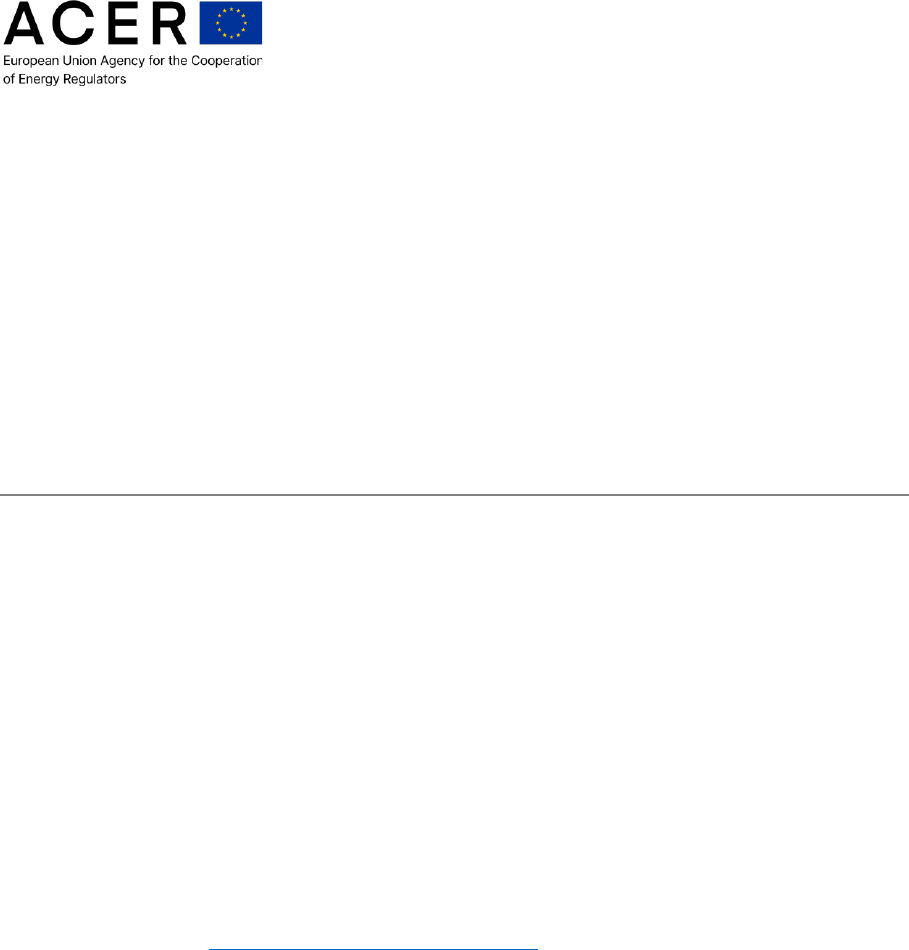ACER REPORT ON TRANSMISSION AND DISTRIBUTION TARIFF METHODOLOGIES IN EUROPE
2
Contents
Executive summary ................................................................................................................................. 6
1. Introduction ...................................................................................................................................... 9
2. Definitions ...................................................................................................................................... 11
3. Cost model and cost cascading .................................................................................................... 14
3.1. Cost model .......................................................................................................................... 14
3.2. Cost cascading .................................................................................................................... 18
3.3. Conclusions and recommendations .................................................................................... 22
4. Injection charges ........................................................................................................................... 24
4.1. General overview ................................................................................................................ 24
4.2. Producers ............................................................................................................................ 34
4.3. Storage facilities .................................................................................................................. 35
4.4. Prosumers ........................................................................................................................... 38
4.5. Conclusions and recommendations .................................................................................... 39
5. Connection charges ...................................................................................................................... 42
5.1. General overview ................................................................................................................ 42
5.2. Producers ............................................................................................................................ 46
5.3. Consumers .......................................................................................................................... 48
5.4. Storage facilities .................................................................................................................. 49
5.5. Prosumers ........................................................................................................................... 50
5.6. Conclusions and recommendations .................................................................................... 50
6. Reactive energy charges ............................................................................................................... 51
6.1. General overview ................................................................................................................ 51
6.2. Structure of reactive energy charges .................................................................................. 52
6.3. Values and differentiation of reactive energy charges ........................................................ 53
6.4. Conclusions and recommendations .................................................................................... 54
7. Time-of-use network charges ........................................................................................................ 55
7.1. General overview ................................................................................................................ 55
7.2. Design of time-of-use network charges .............................................................................. 58
7.3. Mandatory vs optional use of time-of-use signals ............................................................... 62
7.4. Other measures to provide time signals to the network users ............................................ 63
7.5. Effective impacts of the usage of time-of-use network charges ......................................... 64
7.6. Conclusions and recommendations .................................................................................... 66
8. Other network tariff topics ............................................................................................................. 67
8.1. NRAs role in tariff setting .................................................................................................... 67
8.2. Tariff setting principles ........................................................................................................ 68
8.3. Frequency of tariff methodologies revision and of tariff value updates .............................. 68
8.4. Stakeholder involvement ..................................................................................................... 69
8.5. Transparency in tariff setting ............................................................................................... 70
ACER REPORT ON TRANSMISSION AND DISTRIBUTION TARIFF METHODOLOGIES IN EUROPE
3
8.6. Tariff structure and cost recovery ....................................................................................... 70
8.7. Withdrawal charges ............................................................................................................. 71
8.8. Emerging network users linked to the energy transition ..................................................... 72
Annex 1: Summary tables of national tariff practices ............................................................................ 75
Annex 2: Links to national tariff methodologies and tariff values ........................................................ 157
Annex 3:Tariff-related measures to protect vulnerable customers and cope with high energy prices165
List of Figures
Figure 1: Segmentation of network charges ......................................................................................... 14
Figure 2: Cost models for setting network tariffs................................................................................... 15
Figure 3: Schematic comparison of the cost models for tariff-setting ................................................... 16
Figure 4: Cost models applied to network tariffs in Europe .................................................................. 17
Figure 5: Forms of cost cascading applied to transmission and distribution tariffs .............................. 19
Figure 6: Forms of cost cascading applied to transmission and distribution tariffs, by country ............ 20
Figure 7: Degree of cost cascading from transmission to distribution (%) ........................................... 21
Figure 8: Type of payment of cost-cascading from transmission to distribution ................................... 22
Figure 9: Application of injection charges in Europe (2022) ................................................................. 26
Figure 10: Payment of network costs by distribution-connected network users who inject into the grid
(2022) .................................................................................................................................................... 28
Figure 11: Recovery of specific cost categories via injection charges ................................................. 29
Figure 12: Not injection charge related cost burdens on network users injecting into the grid ............ 29
Figure 13: Share of network costs recovered via injection charges ..................................................... 30
Figure 14: Tariff basis for injection charges .......................................................................................... 31
Figure 15: Application of network charges to storage facilities ............................................................. 36
Figure 16: Application of shallow and deep connection charges .......................................................... 43
Figure 17: Planned offshore RES capacity by 2030 and 2050 (in MW) ............................................... 48
Figure 18: Application of charges for reactive energy .......................................................................... 51
Figure 19: Application of static time-of-use (ToU) network charges in Europe (2022) ......................... 56
Figure 20: Tariff basis embedding the time-of-use signal ..................................................................... 59
Figure 21: Peak months in the time-of-use schedule for transmission and distribution tariffs ............. 60
Figure 22: Peak hours in the time-of-use schedule for transmission tariffs .......................................... 61
Figure 23: Peak hours in the time-of-use schedule for distribution tariffs ............................................. 61
Figure 24: Share of the network users with meters capable of measuring withdrawal from the grid for
different time-of-use .............................................................................................................................. 63
Figure 25: Default metering intervals applied to withdrawal in Europe ................................................. 63
ACER REPORT ON TRANSMISSION AND DISTRIBUTION TARIFF METHODOLOGIES IN EUROPE
4
List of Tables
Table 1: Further details on countries adopting an incremental or forward-looking cost model ............ 75
Table 2: Allocation of residual costs ..................................................................................................... 76
Table 3: Details on cost cascading applied to transmission tariffs ....................................................... 77
Table 4: Details on cost cascading applied to distribution tariffs .......................................................... 80
Table 5: Description of any partial or differentiated cost-cascading either for transmission costs and/or
for distribution costs .............................................................................................................................. 83
Table 6: Exemptions from cost-cascading applicable to some groups of network users ..................... 83
Table 7: Recent changes to the cost models or cost cascading or planned future changes ............... 84
Table 8: Application of injection charges, reasons behind and actions that preceded the decision on
them ...................................................................................................................................................... 85
Table 9: TSO costs (partially) recovered via transmission charges for injection .................................. 89
Table 10: DSO costs (partially) recovered via distribution charges for injection .................................. 90
Table 11: Value for annual total transmission G-Charges paid by the producers [M€] ........................ 91
Table 12: Total measured energy injected annually by the producers to the transmission system
[TWh] ..................................................................................................................................................... 91
Table 13: Annual average transmission G-charges paid by producers [€/MWh] ................................. 92
Table 14: Percentage of transmission costs covered via injection charges and allocation method ..... 92
Table 15: Percentage of distribution costs covered via injection charges and allocation method ........ 94
Table 16: Tariff basis, variation and differentiation of the transmission tariffs for injection .................. 95
Table 17: Tariff basis, variation and differentiation of the distribution tariffs for injection ..................... 96
Table 18: Exemption, discount or differentiation of unit tariff values or tariff basis between producers
.............................................................................................................................................................. 96
Table 19: Transmission and distribution tariffs for storage facilities ..................................................... 97
Table 20: Exemption, discount or differentiation of unit tariff values or tariff basis between storage
facilities ................................................................................................................................................ 101
Table 21: Transmission and distribution tariffs for prosumers ............................................................ 103
Table 22: Exemption, discount or differentiation of unit tariff values or tariff basis between prosumers
............................................................................................................................................................ 105
Table 23: Application of gross or net injection/withdrawal in case of energy-based charging ........... 107
Table 24: Cost-offsetting in case both injection and withdrawal charges are applied in the country . 109
Table 25: Recent changes to the injection charges or planned future changes ................................. 110
Table 26: Connection charges at transmission level .......................................................................... 111
Table 27: Connection charges at distribution level ............................................................................. 114
Table 28: Current and planned offshore RES generation capacity by country ................................... 119
Table 29: Cost sharing problem of grid connection ............................................................................ 120
Table 30: Transfer or split of some of the connection charge revenues between DSOs ................... 121
Table 31: Application of charges for reactive energy at distribution level ........................................... 122
Table 32: Actual values of charges for reactive energy at distribution level ....................................... 122
Table 33: Application of time-of-use signals in T-tariffs and the temporal granularity of time-of-use T-
tariff structures .................................................................................................................................... 123
ACER REPORT ON TRANSMISSION AND DISTRIBUTION TARIFF METHODOLOGIES IN EUROPE
5
Table 34: Possibility of choice between different time-of-use signal options (in transmission) and
availability of different ToU T-tariffs for different network users .......................................................... 126
Table 35: Application of Time-of-use signals in D-tariffs and temporal granularity of time-of-use D-tariff
structures............................................................................................................................................. 127
Table 36: Possibility of choice between different ToU signal options (in distribution) and availability of
different ToU D-tariffs for different network users ............................................................................... 133
Table 37: Overview of which T-connected users are subject to time-of-use tariffs and whether time-of-
use tariffs are mandatory for the network user or the user can opt in or opt out ................................ 134
Table 38: Overview of which D-connected users are subject to time-of-use tariffs and whether time-of-
use tariffs are mandatory for the network user or the user can opt in or opt out ................................ 135
Table 39: Other measures than ToU in tariff structures to give time related signals to network users
............................................................................................................................................................ 138
Table 40: Implementation status of local markets for system operation services .............................. 139
Table 41: Transmission tariff methodology setting process ................................................................ 141
Table 42: Distribution tariff methodology setting process ................................................................... 143
Table 43: Transmission tariff transparency ......................................................................................... 144
Table 44: Distribution tariff transparency ............................................................................................ 145
Table 45: Cost recovery via withdrawal charges at transmission level .............................................. 147
Table 46: Cost recovery via withdrawal charges at distribution level ................................................. 150
Table 47: Tariff basis, variation and differentiation of the transmission tariffs for withdrawal ............ 152
Table 48: Tariff basis, variation and differentiation of the distribution tariffs for withdrawal ............... 154
Table 49: Links to transmission tariff methodologies and transmission tariff values .......................... 157
Table 50: Links to distribution tariff methodologies and distribution tariff values ................................ 161
Table 51: Tariff-related measures to protect vulnerable customers and/or cope with high energy prices
............................................................................................................................................................ 166

ACER REPORT ON TRANSMISSION AND DISTRIBUTION TARIFF METHODOLOGIES IN EUROPE
6
Executive summary
(1) The electricity transmission and distribution networks represent the backbone of the national and
European energy systems and play a key role in the energy transition. Network tariffs have the
core objective to recover the costs incurred by transmission and distribution system operators.
In the Member States the National Regulatory Authorities (NRAs) have to fix or to approve
transmission or distribution tariffs or their methodologies.
(2) Tariff methodologies shall neutrally support overall system efficiency over the long run through
price signals to network users. Since charges related to transmission and distribution networks
can constitute a considerable cost to the network users, the way how tariffs are set can provide
additional incentives (additional to those given by energy pricing) to the network users to adapt
their behaviour. The effectiveness of such signals depends on factors such as the type of network
user and the share of the network costs in the final bill.
(3) Network tariffs, among other requirements set by EU law, shall be cost-reflective, transparent
and non-discriminatory. Tariffs can be designed in multiple ways. Finding the right balance
between various tariff-setting principles (e.g. cost recovery, cost reflectivity, efficiency, non-
discrimination, transparency, non-distortion, simplicity, stability, predictability and sustainability)
is a complex task and it involves different trade-offs, where different NRAs may identify different
approaches according to the pursued principles in each national context. The complexities
increase even more under a rapidly evolving energy system featured by increased integration of
renewable energy sources, increased demand by electrification as well as by a more active role
of network users, and require a regular reassessment of whether the tariff methodologies
continue to be appropriate. Finally, the recent energy crisis and an increasing consideration for
the affordability of the final energy bill pose extra challenges, and may also have an impact on
the network tariffs setting.
(4) In order to increase transparency and comparability in tariff-setting where binding harmonisation
is not seen as adequate
1
, ACER shall provide and update, at least every two years, a best
practice report on transmission and distribution tariff methodologies. NRAs shall duly take the
best practice report into consideration when fixing or approving transmission or distribution tariffs,
or their methodologies
2
.
(5) This Report provides a review of transmission and distribution tariff methodologies across EU
Member States and Norway. This third edition focuses on selected tariff-related topics, for which
a more extensive data collection and analysis was carried out. For other tariff-related topics not
covered in detail in this third edition, an update of the information at country level was carried out.
On the latter topics, this Report provides the updated main findings as well as the still valid ACER
recommendations from previous editions of the Report.
(6) A summary of the novel and previous ACER recommendations is provided in the below Summary
Table. For more details on the recommendations, please refer to the corresponding chapter of
this Report.
1
Cf. Recital (40) of Regulation (EU) No 2019/943.
2
Cf. Article 18(10) of Regulation (EU) No 2019/943.

ACER REPORT ON TRANSMISSION AND DISTRIBUTION TARIFF METHODOLOGIES IN EUROPE
7
(7) Finally, looking towards the fourth edition of the Report, planned towards the end of 2024/early
2025, ACER intends to follow-up on how NRAs are taking into consideration the ACER
recommendations.
Summary Table of the ACER recommendations
Cost model:
3
(more information in Chapter 3)
Within the next 4 years, subject to available resources of the NRAs, NRAs should evaluate the advantages
and disadvantages of applying incremental or forward-looking cost models.
Cost cascading:
4
(more information in Chapter 3)
Network users should contribute to the costs of each network level used by them.
NRAs should collect network costs, where feasible and cost-effective, classified by different voltage levels, as
this is a pre-requisite to apply the cost-cascading method.
NRAs should collect data on power flows, including the occurrence of inverted power flows, and the volume
of injection and withdrawal per voltage level, to determine whether cost-cascading is still an adequate
approach.
NRAs should ensure transparency on the cost categories not subject to cost-cascading, providing the
economic rationale for this decision.
Exemptions on the application of the cost-cascading principle (e.g. to certain network user groups) should be
justified and regularly re-evaluated.
Injection charges: (more information in Chapter 4)
The costs caused by a network user should be properly reflected in its tariffs. If a network user only
withdraws from or only injects into the transmission or distribution grid, in principle, only the costs relevant for
withdrawal or the costs relevant for injection should be attributed to this network user.
If a network user both withdraws from and injects into the grid, both network uses should be considered when
setting the tariffs, by properly taking into account the potential cost-offsetting effect and the overall cost-
impact to the network.
Where volumetric charges apply, net-metering should be avoided.
Injection charges should be consistently defined across transmission and distribution to avoid undue
incentives for connection towards one of the network levels.
NRAs should consult at least the NRAs of neighbouring countries of any substantial change regarding
injection charges in advance.
When setting injection charges, all network-related cost-burdens on the concerned network users should be
considered, including those recovered via withdrawal charges, connection charges, or other means, to avoid
any double-charging.
Energy-based injection charges should not be used to recover infrastructure costs. Costs, which do not show
correlation with neither capacity nor energy, but rather with the number of network users or the number of
meters, in principle, should be recovered via lump sum charges.
Connection charges: (more information in Chapter 5)
Where deep connection charges apply and the connection of a network user serves future network users,
cost-sharing between current and future network users should be considered.
Within the next 4 years, NRAs should evaluate the advantages and disadvantages of enabling interruptible or
flexible connection agreements.
Reactive energy charges: (more information in Chapter 6)
NRAs should monitor the evolution of costs due to voltage control and reactive energy management.
Where such costs are deemed significant, the NRA should consider a review of reactive energy charging.
3
In this Report, ‘cost model’ means the approach followed in the tariff methodology to set the charges of the network tariffs, such
as the average cost, incremental cost or forward-looking cost models.
4
In this Report, ‘cost cascading’ means the tariff-setting method implying an allocation of some costs of a certain voltage level
towards network users connected at a lower voltage level, but not the other way around.

ACER REPORT ON TRANSMISSION AND DISTRIBUTION TARIFF METHODOLOGIES IN EUROPE
8
NRA should take into account the frequently used thresholds for reactive charging and the frequently used
values across Europe.
Time-of-use network charges: (more information in Chapter 7)
Where time-of-use signals are introduced to reflect system costs, the network tariff structures and the signals
should be mandatory for all network users, without a possibility to opt-out (optionality may be temporarily
reasonable during transition).
Where no time-of-use signals are applied, the NRA should investigate the need from cost-efficiency and/or
network congestion point of view to introduce such signals. Such studies should aim to identify which
elements affect their effectiveness and efficiency.
Where time-of-use is already applied, the NRA should regularly evaluate their impacts and their
appropriateness. NRAs should improve data collection and analysis regarding individual network users.
Where fit-for-time-of-use meters are largely missing, as a temporary solution, NRAs may design network
tariffs by determining for different user profiles their contribution to the system peak.
NRAs role in tariff setting: (more information in Chapter 8)
The NRA should directly set the transmission and distribution tariff methodologies or, as a strict minimum,
approve them.
Tariff structure and cost recovery: (more information in Chapter 8)
NRAs should differentiate the network costs at least according to the following categories: transmission
infrastructure; transmission losses; distribution infrastructure; distribution losses; metering services; system
operator purchases of system services; costs due to reactive power;
NRAs should obtain sufficiently granular data on network development and system operation and identify for
each of these cost categories the most appropriate cost drivers;
NRAs should be able to differentiate at the level of individual network charges the share of each cost category
listed above.
Frequency of tariff setting methodologies: (more information in Chapter 8)
The length of the tariff methodology period should be at least 4 years (the set methodology may be subject to
revision before, due to rapid changes in the sector, if duly justified).
Network tariff values should be updated at least yearly based on variations of the drivers defined by the tariff
methodology and on inflation.
A multi-year transition process should be preferred when changes in the tariff methodology significantly
impact the tariff values for individual grid users.
Stakeholder involvement: (more information in Chapter 8)
Public consultations should be used systematically to interact transparently and inclusively with stakeholders.
Transparency in tariff-setting: (more information in Chapter 8)
At least the following information should be published in each Member State:
o the detailed methodology to set transmission and distribution tariffs, including in particular the cost
categories covered by them;
o at least when the tariff methodology is set, the amounts recovered by each tariff element; and
o each year, the transmission and distribution tariff values for each network user group.

ACER REPORT ON TRANSMISSION AND DISTRIBUTION TARIFF METHODOLOGIES IN EUROPE
9
1. Introduction
(8) The electricity transmission and distribution networks represent the backbone of the national and
European energy systems and play a key role in the energy transition. Network tariffs have the
core objective to recover the costs incurred by transmission and distribution system operators.
(9) Pursuant to Article 59(1)(a) of Directive (EU) 2019/944
5
, each national regulatory authority (NRA)
has the duty of fixing or approving, in accordance with transparent criteria, network tariffs or their
methodologies, or both.
(10) In line with Regulation (EU) 2019/943
6
, tariff methodologies shall reflect the fixed costs of
transmission system operators (TSOs) and distribution system operators (DSOs) and shall
provide appropriate incentives to the transmission and distribution system operators to increase
efficiencies, to foster market integration and security of supply, to support efficient investments,
to support related research activities, and to facilitate innovation in the interest of consumers in
areas such as digitalisation, flexibility services and interconnection.
(11) Article 18(1) of the same Regulation establishes that charges applied by network operators for
access to networks, including charges for connection to the networks, charges for use of
networks, and, where applicable, charges for related network reinforcements, shall be cost-
reflective, transparent, take into account the need for network security and flexibility and reflect
actual costs incurred insofar as they correspond to those of an efficient and structurally
comparable network operator and are applied in a non-discriminatory manner.
(12) Tariff methodologies shall also neutrally support overall system efficiency over the long run
through price signals to network users, and shall not discriminate, positively or negatively,
production, energy storage and aggregation. It also shall not create disincentives for self-
generation, self-consumption and for participation in demand response. Since charges related to
transmission and distribution networks can constitute a considerable cost for network users, the
way how tariffs are set can provide additional incentives (additional to those given by energy
pricing) to the network users to adapt their behaviour. The effectiveness of such signals depends
on factors such as the type of network user and the share of the network costs in the final bill.
(13) Tariffs can be designed in multiple ways. Finding the right balance between various tariff-setting
principles (e.g. cost recovery, cost reflectivity, efficiency, non-discrimination, transparency, non-
distortion, simplicity, stability, predictability and sustainability) is a complex task and it involves
different trade-offs, where NRAs may identify different approaches as most suitable according to
the pursued principles in each national context. The complexities increase even more under a
rapidly evolving energy system featured by increased integration of renewable energy sources,
increased demand by electrification as well as by a more active role of network users, and require
a regular reassessment of whether the tariff methodologies continue to be appropriate. Finally,
the recent energy crisis and an increasing consideration for the affordability of the final energy
bill pose extra challenges, and may also have an impact on the network tariffs setting.
5
Directive (EU) 2019/944 of the European Parliament and of the Council of 5 June 2019 on common rules for the internal market
for electricity and amending Directive 2012/27/EU. OJ L 158, 14.6.2019, p. 125. Cf. Article 37(1)(a) of Directive 2009/72/EC
6
Regulation (EU) 2019/943 of the European Parliament and of the Council of 5 June 2019 on the internal market for electricity.
OJ L 158, 14.6.2019, p. 82. Cf. Article 14 of Regulation (EC) No 714/2009

ACER REPORT ON TRANSMISSION AND DISTRIBUTION TARIFF METHODOLOGIES IN EUROPE
10
(14) In order to increase transparency and comparability in tariff-setting where binding harmonisation
is not seen as adequate
7
, ACER shall provide and update, at least every two years, a best
practice report on transmission and distribution tariff methodologies in accordance with Article
18(9) of Regulation (EU) 2019/943, while taking account of national specificities. Pursuant to
Article 18(10) of that Regulation, NRAs shall duly take the best practice report into consideration
when fixing or approving transmission or distribution tariffs, or their methodologies.
(15) This Report constitutes the third edition of the best practice report foreseen in Regulation (EU)
2019/943, following the ACER 2019 report on practices regarding transmission tariff
methodologies
8
, as well as the ACER 2021 report on practices regarding distribution tariff
methodologies
9
. It is the first edition covering information both on transmission and distribution
tariffs.
(16) This Report provides a review of transmission and distribution tariff methodologies across EU
Member States and Norway. It focuses on a limited number of tariff-related topics, - which were
deemed as of particular interest to NRAs in view of recent or ongoing tariff works and/or based
on targeted consultations by ACER
10
-, for which a more extensive data collection and analysis
was carried out. For other tariff-related topics not covered in detail in this third edition, an update
of the information at country level was carried out.
(17) This edition of the Report features five topics in focus. First, it investigates the cost models used
across countries to set the economic signals of the network tariffs and the application of the cost-
cascading method. Second, it investigates the application of injection charges, including ACER’s
regular monitoring of the appropriateness of the ranges of allowable transmission charges paid
by producers (G-charge), pursuant to annex Part B of Commission Regulation (EU) No
838/2010.
11
Third, it reviews the connection charges applied when producers, consumers and
other network users connect to the grid. Fourth, it investigates the application of reactive energy
charges. Fifth, it discusses the time-of-use signals embedded into network tariffs. For other tariff-
related topics, not in focus in this edition, the updated main findings as well as the still valid ACER
recommendations from previous editions of the Report can be found in Chapter 8.
(18) This Report is based on the input provided by NRAs between February 2022 and December
2022
12
on their respective transmission and distribution tariff methodologies. For transmission
tariffs in Ireland and distribution tariffs in Bulgaria, in lack of inputs, with some exceptions
13
, the
Report builds on the information provided by the respective NRAs to ACER in 2019 and 2020
7
Cf. Recital (40) of Regulation (EU) No 2019/943.
8
ACER report on transmission tariff methodologies in Europe, December 2019
https://www.acer.europa.eu/Official_documents/Acts_of_the_Agency/Publication/ACER%20Practice%20report%20on%20trans
mission%20tariff%20methodologies%20in%20Europe.pdf
9
ACER report on distribution tariff methodologies in Europe, February 2021
https://www.acer.europa.eu/Official_documents/Acts_of_the_Agency/Publication/ACER%20Report%20on%20D-
Tariff%20Methodologies.pdf
10
Cf. ACER webinars on electricity network tariffs for injection (10 Nov 2021) and on time-of-use electricity network tariffs (16
Nov. 2021):
https://www.acer.europa.eu/public-events/acer-webinar-electricity-network-tariffs-injection-targeted-consultation;
https://www.acer.europa.eu/public-events/acer-webinar-time-use-electricity-network-tariffs-targeted-consultation
11
The term ‘G-charge’ refers to the transmission charges paid by producers, excluding connection charges, charges related to
ancillary services and specific system loss charges, and whose annual average value is capped by Commission Regulation (EU)
No 838/2010. In contrast, the term ‘injection charge’ means all transmission and distribution charges paid by producers for the
use of the network (i.e. it also excludes connection charges, but it includes other non-connection charges, such as charges related
to ancillary services and system losses)
12
Most information was collected in the first semester, complemented with additional clarifications in the second semester.
13
Some information required for the G-charge monitoring has been provided for Ireland.
ACER REPORT ON TRANSMISSION AND DISTRIBUTION TARIFF METHODOLOGIES IN EUROPE
11
(for the previous ACER tariff reports), to the extent possible. The detailed input provided by
NRAs, which is analysed across the different chapters of the Report, is provided in Annex 1.
(19) In light of the unprecedented surge in electricity prices since mid-2021, ACER also carried out a
general review of the tariff designs supporting vulnerable customers and any temporary tariff
measures to ease or redistribute tariff burdens. The findings of this assessment, with information
collected mainly in the first semester of 2022, are provided in Annex 3 of this report.
(20) It is worth reminding that network tariff-setting is the result of a three-step process. First, the
allowed or target revenues of the network operators (including the remuneration method for TSO
or DSO costs) and other relevant costs are determined. Second, the tariff structure is defined.
Third, the costs are allocated to each of the tariff structure’s items (i.e. charges paid by network
users). This Report focuses on the last two steps.
(21) The rest of this Report is structured as follows:
Chapter 2 provides the definitions used in the Report;
Chapter 3 investigates the cost models applied and cost cascading;
Chapter 4 investigates the transmission and distribution tariffs for injection;
Chapter 5 analyses the structure of connection charges;
Chapter 6 investigates the reactive energy charges;
Chapter 7 discusses the time variation of tariffs;
Chapter 8 provides the main findings and recommendations on those tariff-related topics
that are not in-focus in this edition;
Annex 1 provides the input from NRAs, which is analysed across the different chapters of
the Report;
Annex 2 provides the relevant links to the tariff methodologies and some other tariff-related
information in each country;
Annex 3 deals with tariff-related measures to protect vulnerable customers and/or cope with
high energy prices.
2. Definitions
(22) According to the definitions set by Directive (EU) 2019/944 and Regulation (EU) 2019/943:
a) ‘Distribution’ means the transport of electricity on high-voltage, medium-voltage and low-
voltage distribution systems with a view to its delivery to customers, but does not include supply;
b) ‘Distribution system operator’ means a natural or legal person who is responsible for operating,
ensuring the maintenance of and, if necessary, developing the distribution system in a given
area and, where applicable, its interconnections with other systems, and for ensuring the long-
term ability of the system to meet reasonable demands for the distribution of electricity;
ACER REPORT ON TRANSMISSION AND DISTRIBUTION TARIFF METHODOLOGIES IN EUROPE
12
c) ‘Producer’ means a natural or legal person who generates electricity;
d) ‘Smart metering system’ means an electronic system that is capable of measuring electricity
fed into the grid or electricity consumed from the grid, providing more information than a
conventional meter, and that is capable of transmitting and receiving data for information,
monitoring and control purposes, using a form of electronic communication;
e) ‘Transmission’ means the transport of electricity on the extra high-voltage and high-voltage
interconnected system with a view to its delivery to final customers or to distributors, but does
not include supply;
f) ‘Transmission system operator’ means a natural or legal person who is responsible for
operating, ensuring the maintenance of and, if necessary, developing the transmission system
in a given area and, where applicable, its interconnections with other systems, and for ensuring
the long-term ability of the system to meet reasonable demands for the transmission of
electricity.
(23) In addition, for the purpose of this Report, the following additional definitions apply:
a) ‘Connection charge’ means charge, typically one-off charge, covering the costs (or part of the
costs) of connecting new users to the transmission or distribution system or upgrading the
connection. Connection charges may be shallow or deep. In case of shallow connection
charges the network users pay for the infrastructure connecting its installation to the
transmission or distribution grid (line/cable and other necessary equipment), while in case of
deep connection charges, the network users pay (additionally) for the costs of other
reinforcements/extensions in the existing network, required in the transmission or distribution
grid to enable the grid user to be connected;
b) ‘Distribution tariff methodology’ defines the rules for allocating distribution costs to (groups of)
network users. The tariff methodology as defined in this Report does not include the
determination of allowed or target revenues of the network operators;
c) ‘G-charge’ means the transmission charges paid by producers in each Member State, as
referred to in annex Part B of Commission Regulation (EU) No 838/2010, excluding connection
charges, charges related to ancillary services and specific system loss charges;
d) ‘Household consumer’ means a network user who withdraws electricity from the grid for the
consumer's own household consumption, excluding commercial or professional activities;
e) ‘Injection charge’ means all transmission and distribution charges paid by producers, except for
charges for physical assets required for connection to the system or the upgrade of the
connection (i.e. connection charges), but including other non-connection charges (such as
charges related to ancillary services and system losses);
f) ‘Network user’ means a natural or legal person connected to the transmission or distribution
network (excluding the DSO and TSO), who injects electricity in and/or withdraws electricity
from the network;
g) ‘Payment for reactive energy/power’ means the charge for withdrawing and/or for injecting
reactive power outside the allowed limits;
ACER REPORT ON TRANSMISSION AND DISTRIBUTION TARIFF METHODOLOGIES IN EUROPE
13
h) ‘Public consultation’ means a publicly announced consultation, in which any individual, group
or organisation is allowed to participate;
i) ‘Tariff methodology period’ means the period for which the general rules for the tariffs are set.
During this period the tariff values may be updated several times;
j) ‘Time-of-use network tariffs’ (or tariff time elements) means charges for network service(s) that
vary according to when the service is used e.g. by peak/off-peak, season, month,
weekdays/weekends, hour;
k) ‘Transmission tariff methodology’ defines the rules for allocating transmission costs to (groups
of) network users. The tariff methodology as defined in this Report does not include the
determination of allowed or target revenues of the network operators;
(24) In this Report, the term “network charges” includes all charges paid to the TSO and DSO. As
illustrated in Figure 1, among these charges ACER differentiates between:
a) the charges for use of the network (i.e. charges due to the costs developing and operating the
transmission and the distribution grid and system which are recurring every year);
b) the charges for connection to the system or the upgrade of the connection, which are typically
one-off charges;
c) the charges for individual (specific) services provided by the TSO or DSO at the request of the
network user (e.g. installation of a new meter upon user’s request or reconnecting a network
user in case of disconnection due to late payments, etc.);
(25) Inside the charges for use of the network, ACER differentiates further between the transmission
and distribution tariffs for building, upgrading and maintaining infrastructure and the transmission
and distribution tariffs for losses, from other charges, such as the charges for system services,
charges for metering and charges which are paid for withdrawing and/or for injecting reactive
power outside the allowed limits (i.e. reactive energy charges).
(26) Network charges shall not include unrelated costs supporting unrelated policy objectives.
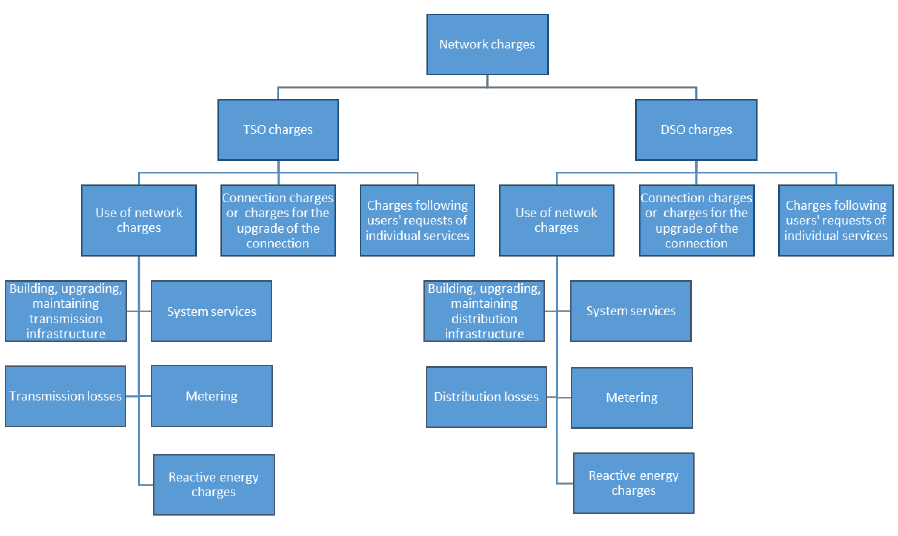
ACER REPORT ON TRANSMISSION AND DISTRIBUTION TARIFF METHODOLOGIES IN EUROPE
14
Figure 1: Segmentation of network charges
3. Cost model and cost cascading
3.1. Cost model
(27) In this Report, the expression “cost model” refers to the conceptual approach for determining the
network tariff values. National approaches are categorised according to three cost models,
whether they are based on an average cost, an incremental cost or a forward-looking cost. Figure
2 below provides a general description of the three approaches, as well as a reference on how
cost recovery is ensured in each case.
(28) Cost models are not to be confused with the methodology for setting the allowed or target
revenues of the network operator. Cost models are used to determine the unit prices of the
network tariffs, given the level of allowed or target revenues to recover and the level of forecasted
quantities.

ACER REPORT ON TRANSMISSION AND DISTRIBUTION TARIFF METHODOLOGIES IN EUROPE
15
Figure 2: Cost models for setting network tariffs
Cost model
Description
Cost recovery
Average cost
The allowed or target revenues of network operators are allocated to the
cost drivers as an average cost, meaning the ratio between revenues and
quantities.
Full cost recovery is
ensured by design, if the
quantities are correctly
forecasted
Incremental cost
Increments in network costs are associated to increments in cost drivers,
where data used refers mainly to historic data. The incremental cost per
cost driver represents an average long-run marginal cost.
May result in residual
costs that need to be
accounted for to ensure
full cost recovery.
Forward-looking cost
Increments in network costs are associated to increments in cost drivers,
where data used refers mainly to forecasted data and/or simulation
models. The incremental cost per cost driver represents a long-run
marginal cost.
(29) The average cost model determines unit prices of the network tariff by dividing the allowed or
target revenues by the forecasted quantities (such as demand).
14
This cost model is backward-
looking as it considers costs that have already been incurred in the past. In contrast, the
incremental and forward-looking cost models estimate the unit prices of the network tariff through
an incremental or marginal approach, by estimating additional (incremental) costs due to an
increase (increment) of a cost driver.
15
As a result, and assuming that quantities for the next tariff
period are correctly forecasted, the average cost model ensures full recovery of the allowed or
targeted revenues by design, while the incremental (or marginal) costs of the other two
approaches may result in a lower level of revenues compared to the allowed or targeted
revenues
16
. The difference of that revenue level with the level of allowed or target revenues is
often labelled as “residual cost”.
(30) As cost recovery is the core objective of tariff-setting, a tariff methodology based on the
incremental or forward-looking cost models needs to employ some adjustment to ensure full cost
recovery, bringing the residual cost to zero. From a theoretical perspective, the tools to overcome
this problem are either a fixed “lump sum” term to avoid the distortion of economic decision-
making or, if that is not feasible, a rule of Ramsey-pricing
17
. From a practical perspective, the
solution usually involves multiplicative or additive adjustment of all or some prices to ensure cost
recovery.
(31) Figure 3 provides a schematic comparison of the three cost models in terms of inputs and outputs
for tariff-setting. The main difference is that the incremental and forward-looking cost models use
a set of unit prices as inputs to the tariff-setting, which in the output phase need to be adjusted
to ensure cost recovery.
18
14
For instance, dividing revenues, in euros (EUR), by forecasted consumption, in MWh, to obtain an energy-based price, in
EUR/MWh.
15
The difference between these two approaches is that the incremental cost model resorts mainly to historic data, while the
forward-looking cost model requires a simulation model to forecast the future network investments.
16
I.e. due to economies of scale
17
Ramsey pricing consists in adjusting the unit prices in a differentiated way in order to reach the overall revenue goal. More
precisely, the prices applied to the more (less) elastic demand should be less (more) adjusted as this will minimize the overall
economic distortion.
18
The unit prices used as inputs are computed ex ante, before the tariff-setting process.

ACER REPORT ON TRANSMISSION AND DISTRIBUTION TARIFF METHODOLOGIES IN EUROPE
16
Figure 3: Schematic comparison of the cost models for tariff-setting
Input
Output
Average cost
model
Incremental or
Forward-looking
cost model
Note: The index represents the range of subcategories that exist in tariff-setting, for instance different voltage
levels and/or different billing variables (e.g. contracted power, energy).
(32) In theory, the incremental or forward-looking cost models are better approaches to signal the true
cost of using the network, if the residual cost is recovered in a non-distortive way (i.e. via lump
sum charges).
(33) To illustrate the potential of these cost models, one may consider the case of electricity networks,
where the main cost is usually related to the development of the network, which is typically
correlated with peak demand. In the extreme case where the network has excess capacity, to
the point that it is unlikely to require further investments over the next decades, from an economic
perspective the true (incremental) cost of using the network during the peak is close to zero.
Hence, the unit prices to be used as inputs for tariff-setting would also be close to zero. Obviously,
such unit prices would not recover the target or allowed revenues of the network operator, leading
to a revenue shortfall (residual cost) and to the need to adjust the unit prices. If that adjustment
is performed in a least-distortive manner, the incremental or forward-looking cost models can be
preferred when compared to an average cost model.
19
(34) Figure 4 shows the application of these cost models in Europe. Most countries follow an average
cost approach, which is probably related to the advantages in terms of cost recovery, as it
ensures recovery of the allowed or target revenues by design, and to the complexities in
modelling incremental or forward-looking costs.
(35) Based on the answers provided by NRAs, three countries (FR, NO, PT) apply models based on
incremental costs and another three countries (HR, EE, SE) follow a forward-looking cost model.
For the countries applying these cost models, it becomes necessary to define how to allocate the
residual cost resulting in the tariff-setting process.
19
If the network has excess capacity, it would not be efficient to signal to end-users a high price during peak periods (which could
result from an average cost approach, signalling the cost of peak-related network investments from the past). This would
unnecessarily lead to load shifting, affecting consumer’s welfare and economic activity.
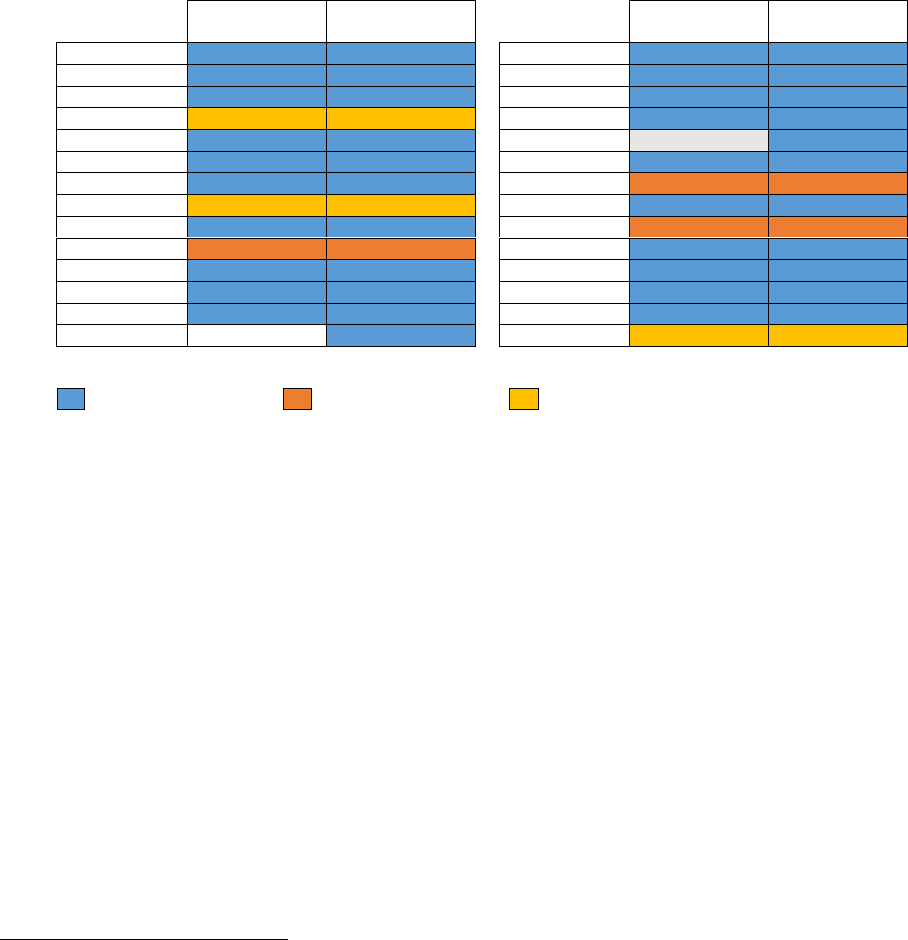
ACER REPORT ON TRANSMISSION AND DISTRIBUTION TARIFF METHODOLOGIES IN EUROPE
17
(36) All assessed countries reported that they apply the same cost model across transmission and
distribution tariffs, which might stem from the need to have a coherent tariff methodology across
transmission and distribution.
Figure 4: Cost models applied to network tariffs in Europe
Transmission
tariff
Distribution
tariff
Transmission
tariff
Distribution
tariff
AT
IT
BE
LV
BG
LT
HR
LU
CY
MT
N/A
CZ
NL
.
DK
NO
EE
PL
FI
PT
FR
RO
DE
SK
GR
SI
HU
ES
IE
No data
SE
Partially
Partially
Average cost
Incremental cost
Forward-looking cost
Note: The analysis is not applicable for the transmission tariff in MT, in lack of a transmission network. In some
cases the inputs provided by NRAs (BG, IE, LV, PL) were interpreted by ACER as corresponding to an average
cost model, in lack of required clarifications.
(37) Estonia and Croatia reported the use of a forward-looking cost model, to account for costs that
are changing during the application of the network charges. Sweden only applies the forward-
looking cost model to the capacity-based charges of the network tariff, while other approaches
apply to other cost elements.
20
In the case of France, Norway and Portugal, these countries
reported the use of incremental cost models, which determine price signals reflecting the costs
of expanding the network by certain increments.
21
Across these countries, different billing
variables are used for the main price signal of the cost model: Estonia uses an energy-based
charge; Sweden and Norway
22
use a power-based charge; Portugal
23
uses two power-based
charges and Croatia and France use a combination of energy- and power-based charges.
(38) Across these six countries (HR, EE, FR, NO, PT, SE), because they employ the incremental or
forward-looking cost models, ensuring cost recovery requires dealing with residual costs.
24
In
Estonia, the law does not allow to apply any additive or multiplicative adjustment to account for
20
SE: The forward-looking costs are power-based, and will be charged with a power-based charge (preferably during the peak
hours), and the variable costs for the network losses will be charged with an energy charge. Overall, there are four components
that make up the tariff, one energy charge (based on the variable costs), one power-based charge (based on forward-looking
costs), and two fixed charges (one for customer related costs, and lastly a semi-fixed component for the residual costs).
21
The incremental price signal indicates what is the incremental cost for the network to accommodate an increment in the cost
driver (e.g. peak power or consumption).
22
NO: While the main billing variable to recover network costs is a power-based charge, the incremental cost model only applies
to the energy-based charge, which is determined from an analysis of marginal losses in each connection point.
23
PT: Portugal also indicates that when applying the network tariff to users connected at normal low voltage (≤ 41.4 kVA), the
unit price of one of the power-based charges is converted into an energy-based charge, as the former does not exist as billing
variable for these users.
24
As explained earlier, applying directly the prices signals from the incremental or forward-looking cost models may result in a
different level of revenues compared to the allowed or targeted revenues. The difference of that revenue level with the level of
allowed or target revenues is labelled here as residual cost (i.e. the residual cost is positive/negative if the former is higher/lower).

ACER REPORT ON TRANSMISSION AND DISTRIBUTION TARIFF METHODOLOGIES IN EUROPE
18
any residual cost. If network costs are higher than the revenues obtained from the incremental
unit price, the network operator has the right to submit a request for approval of new network
charges. France and Portugal apply a multiplicative adjustment of the unit charges to account for
the residual cost. Norway recovers the residual costs through fixed and power-based charges.
Sweden applies a separate component to recover the residual cost.
25
Croatia did not provide this
information.
(39) Additional information
regarding the practices of the countries employing the incremental or
forward-looking cost models is presented in Table 1 in Annex 1.
26
The description on how the
residual cost is dealt with in these costs models, is presented in Table 2 in Annex 1.
(40) In terms of cost models, several countries reported recent changes on the computation of network
tariffs. Details on the changes can be found in Table 7 in Annex 1.
3.2. Cost cascading
(41) When setting network tariffs, cost cascading traditionally refers to the allocation of some costs of
a certain voltage level towards network users connected at a lower voltage level, but not the other
way around. It means that network costs are cascaded in a top-down paradigm, reflecting the
traditional organisation of the power sector where generators are (almost) exclusively connected
at the transmission level. Ultimately, it implies that network users connected at a lower voltage
level pay (all-together) higher network tariffs, since they pay the costs of the voltage level of
connection, as well as the costs related to higher voltage levels.
(42) In the case of transmission tariffs, this may exist in two forms. First, it may occur from
transmission to distribution, meaning that costs related to the transmission network are cascaded
towards network users connected to the distribution network. Second, it may occur from
transmission to transmission, where costs of a higher voltage level of the transmission network
are cascaded towards network users connected at a lower voltage level of the transmission
network. In addition, a third form of cost cascading can also occur at the level of distribution
tariffs, from distribution to distribution, where costs of a higher voltage level of the distribution
network are cascaded towards network users connected at a lower voltage level of the
distribution network. The three forms of cost cascading are illustrated in the Figure 5 below.
25
SE: The NRA refers to it as a semi-fixed component.
26
That information describes the objectives, the main billing variable, the major computational steps and the differences between
transmission and distribution, if any.
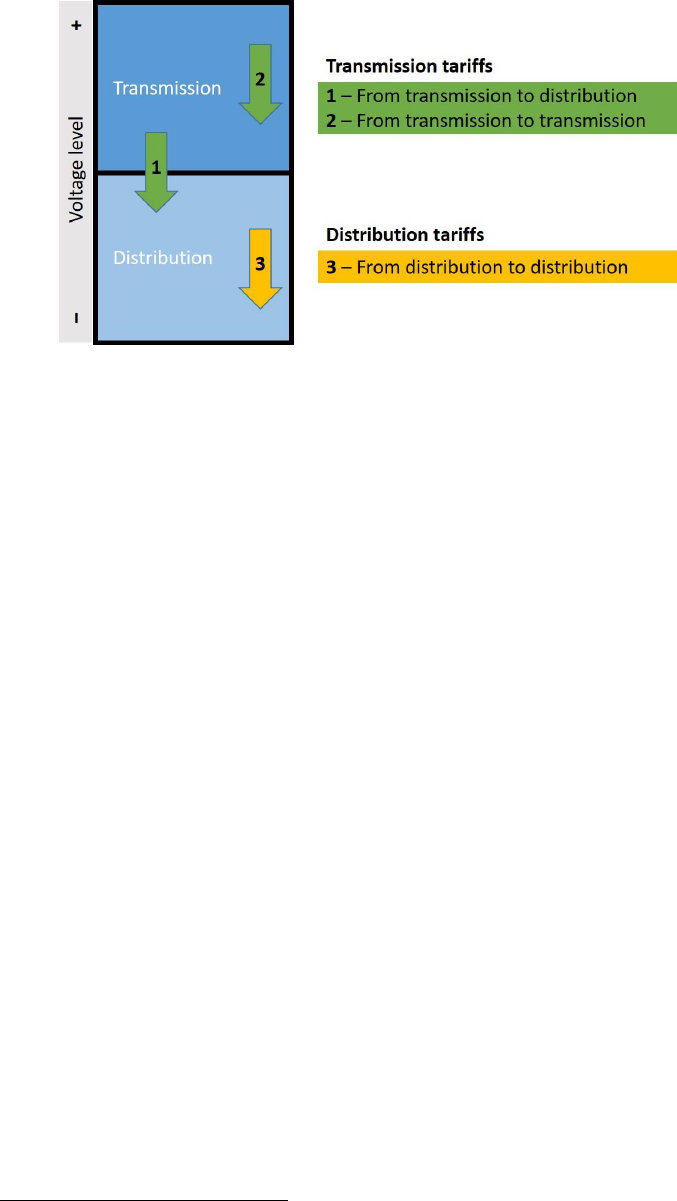
ACER REPORT ON TRANSMISSION AND DISTRIBUTION TARIFF METHODOLOGIES IN EUROPE
19
Figure 5: Forms of cost cascading applied to transmission and distribution tariffs
(43) The second and third forms of cost cascading (i.e. from transmission to transmission and from
distribution to distribution) require a network segmentation by voltage level. For instance, cost
cascading from transmission to transmission can exist if transmission costs for the extra-high
voltage (EHV) level are cascaded downwards to users connected at the high voltage (HV) level
of transmission, while the costs of the HV level are not borne by the users connected at EHV.
Moreover, cost cascading from distribution to distribution can exist if distribution costs for the
medium voltage (MV) level are cascaded downwards to users connected at the low voltage (LV)
level of distribution, while the costs of the LV level are not borne by users connected at MV level.
(44) In the case of cost-cascading from transmission to distribution, the transmission costs may be
billed to distribution-connected users in two different forms. Distribution-connected users may
pay explicitly a transmission tariff related to the transmission costs (e.g. via a transmission tariff
element in their final electricity bill) or they pay the transmission costs implicitly through their
distribution tariff (e.g. only the DSO is explicitly charged for costs of the transmission network,
which are then reflected in its distribution tariff).
(45) Figure 6 summarises the application of cost cascading across countries. Cost-cascading from
transmission to distribution exists in each of the assessed countries with a transmission
network,
27
while cost-cascading inside the transmission and inside the distribution networks
occurs in 9 and 26 countries, respectively
28
. Nine countries (AT, BE, EE, FR, DE, HU, LV
29
, NL,
SE) apply all three forms of cost cascading.
27
In the case of MT, cost-cascading of transmission tariffs (from transmission to transmission / from transmission to distribution)
cannot exist by definition, as there is no transmission network.
28
Cases where all transmission costs are allocated in bulk to all network users is not considered as a form of cost cascading in
this Report, and has therefore not been considered in the analysis. In a few instances (BG, IE) cost-cascading from transmission
to transmission was not confirmed or sufficiently clarified.
29
LV: There is only one TSO and it operates the grid in 330 kV and in 110 kV. Tariffs are calculated only for 110 kV users, so all
costs from 330 kV are allocated to lower voltage transmission levels.
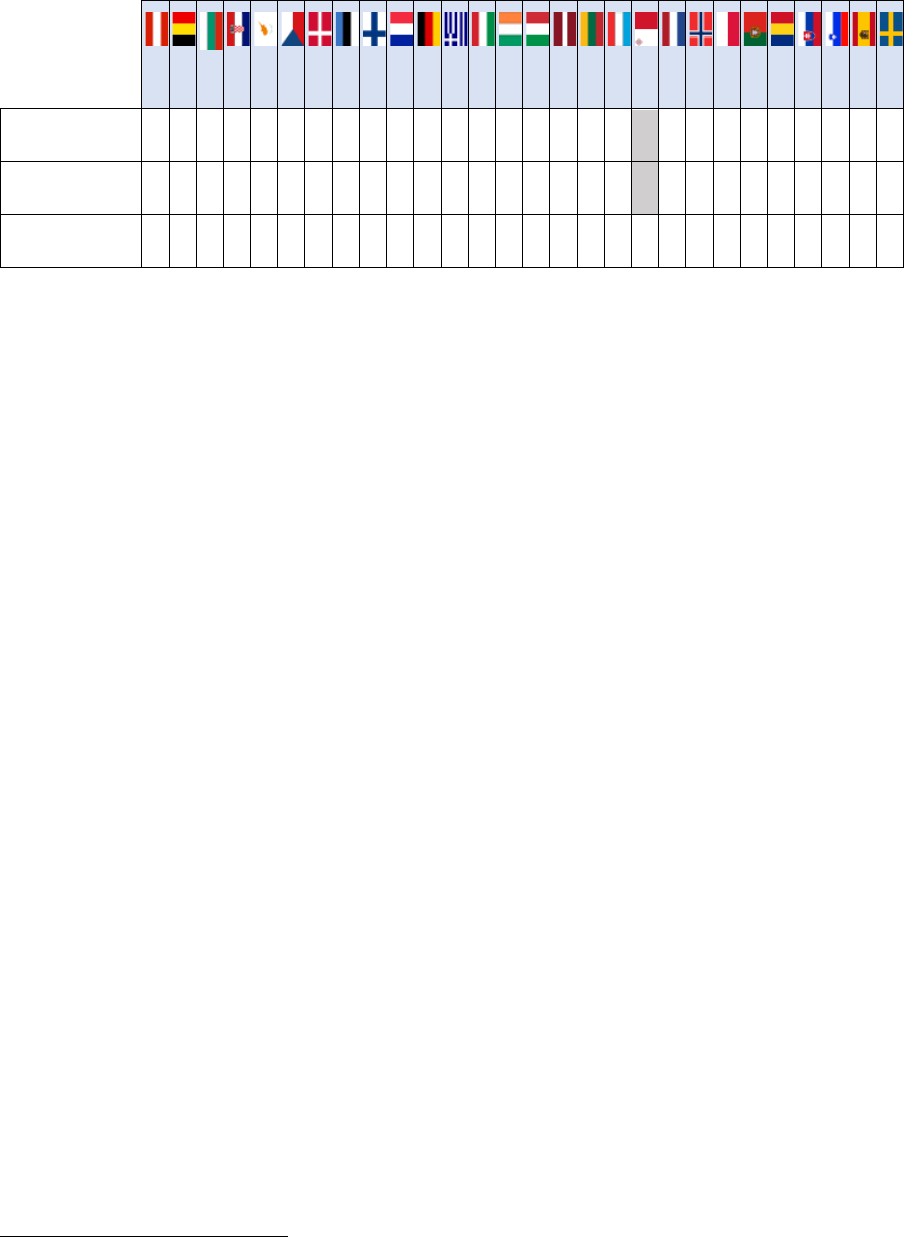
ACER REPORT ON TRANSMISSION AND DISTRIBUTION TARIFF METHODOLOGIES IN EUROPE
20
Figure 6: Forms of cost cascading applied to transmission and distribution tariffs, by country
AT
BE
BG
HR
CY
CZ
DK
EE
FI
FR
DE
GR
HU
IE
IT
LV
LT
LU
MT
NL
NO
PL
PT
RO
SK
SI
ES
SE
From transmission
to distribution
●
●
●
●
●
●
●
●
●
●
●
●
●
●
●
●
●
●
●
●
●
●
●
●
●
●
●
From transmission
to transmission
●
●
●
●
●
●
●
●
●
From distribution
to distribution
●
●
●
●
●
●
●
●
●
●
●
●
●
●
●
●
●
●
●
●
●
●
●
●
●
●
Note: In a few instances (BG, IE) cost-cascading from transmission to transmission was not confirmed or sufficiently
clarified. MT has no transmission network.
(46) The lack of cost-cascading inside transmission and/or inside distribution was often explained by
the NRAs due to a lack of cost collection/ cost differentiation per voltage level or that the
transmission network consists of only one network level. More details on the different forms of
cost-cascading applied to transmission and distribution tariffs across the countries can be found
in Table 3 and Table 4 in Annex 1.
(47) In most countries, cost cascading applies to all cost categories under the same rules. However,
there are several cases of partial or differentiated cost-cascading for certain costs. Partial cost-
cascading exists when some cost categories are not cascaded, while differentiated cost-
cascading occurs when different cascading criteria are applied to different cost categories and/or
to different network users. For example, costs more directly related to serving users connected
at a certain voltage level, such as metering and billing, are not cascaded downwards in some
countries (HR, DK, GR, HU), resulting in partial cost-cascading. In an additional country (BE)
ancillary services and system integration costs are not cascaded, as they cannot be differentiated
according to the user groups or voltage levels.
30
One country (PT) described a differentiated cost-
cascading, where the unit price of the network tariff is adjusted when it is applied to lower voltage
levels. More information on partial or differentiated cost cascading is provided in Table 5 in Annex
1.
(48) As shown in Table 6 in Annex 1, two countries (AT, PT) reported that they apply exemptions
31
from cost-cascading to specific groups of network users. The exemptions were justified by cost-
reflectivity (e.g. the concerned network users are exempted because they are deemed not to use
voltage levels above the one they are connected to or because their network use provides other
benefits to the system).
(49) Figure 7 below shows the degree of cost cascading from transmission to distribution across
countries, by representing the share of the transmission revenues that is collected from network
users connected at distribution level. In order to have a reference value for the relevance of the
30
BE: Moreover, in the case of the Flanders region, all distribution costs that aren't (directly) related to a certain voltage level are
not cascaded, namely: costs of system services, management costs, costs of capital, public service obligations, pension schemes
and local retributions
31
Countries that apply overall exemptions from network tariffs to specific groups of network users have not been considered for
the assessment of this specific form of exemption.
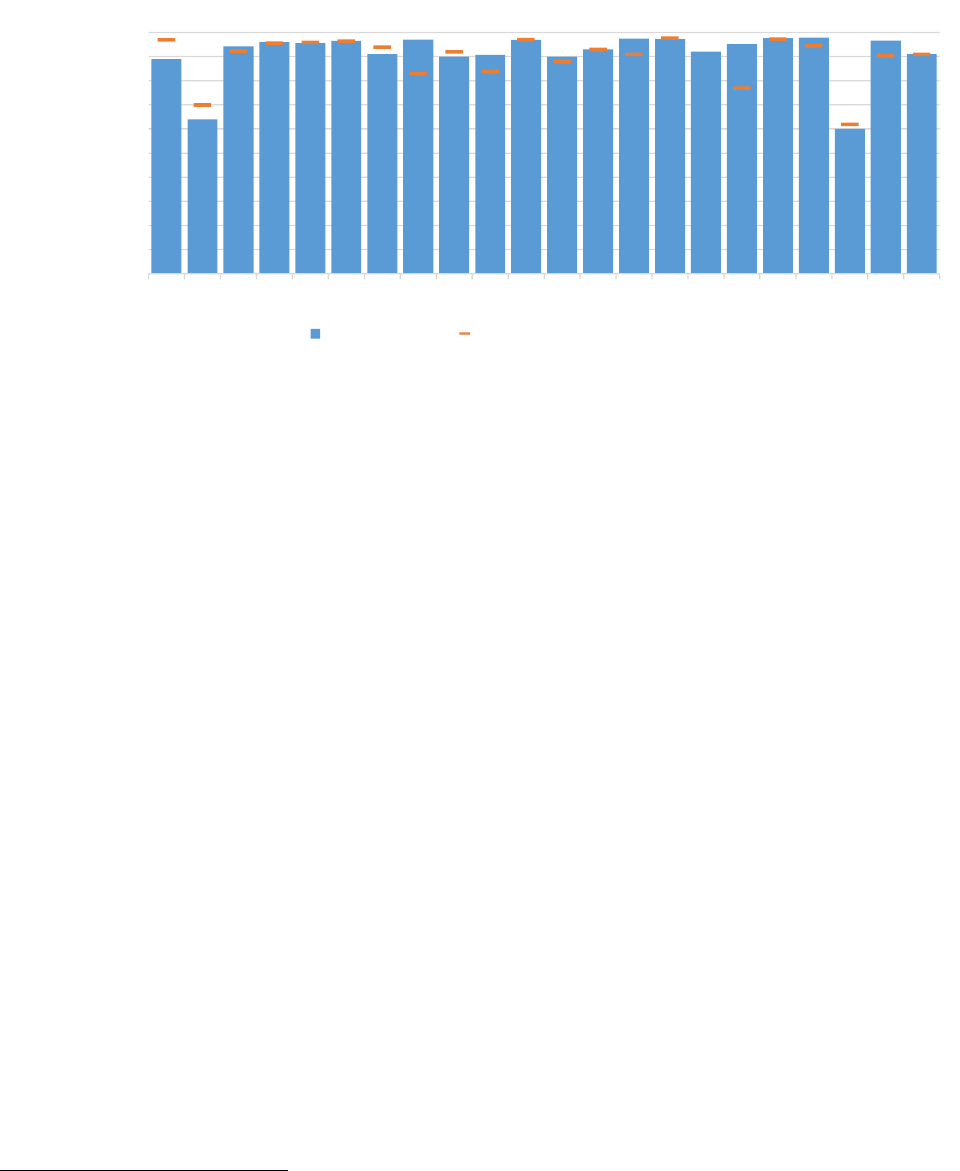
ACER REPORT ON TRANSMISSION AND DISTRIBUTION TARIFF METHODOLOGIES IN EUROPE
21
transmission and distribution networks, the percentage of consumption occurring at distribution
level is also indicated in Figure 7.
Figure 7: Degree of cost cascading from transmission to distribution (%)
Note: “Cost cascading” in this figure measures the share of transmission costs paid by distribution-connected users.
“Consumption at distribution level” measures the share of energy withdrawal from the distribution grid, compared
to overall energy withdrawal (measured at end users’ meters). This analysis is not applicable to MT because it has
no transmission network. Consumption data is not available for NL. Information is missing for: BG, FI, IE, RO, SE.
(50) ACER observes that in all countries - where this information was available - at least 89% of the
transmission costs are cascaded downwards to the distribution level, except for two countries
(BE, SK), where this share is lower than 65%. In all countries the share of cost cascading is
broadly in line with the relative share of consumption occurring at distribution level in each
country.
(51) Since the findings above imply that a significant share of network costs of a certain network level
is paid by users not directly connected to that network level, it is worthwhile to analyse whether
end users are provided with information on this fact. In about half of the countries the payment
of the cost-cascading from transmission to distribution occurs explicitly, with a separate tariff or
tariff element providing information on the magnitude of this cost-cascading.
32
However, in the
other half of the countries it exists on an implicit basis, where no separate tariff or tariff element
exists to quantify the value of the cost-cascading effect.
33
The list of countries with explicit and
implicit payment of cost-cascading is presented in Figure 8 below.
32
This information may be provided directly in the power bill or on some online platform that can be easily accessed by end users.
33
One example of implicit payment occurs when the cascaded transmission costs are incorporated into the distribution tariff,
without allowing end-users to understand what share relates to the transmission costs.
89 64 94 96 96 97 91 97 90 91 97 90 93 97 97 92 95 98 98 60 97 91
97
70
92
96
96
97
94
83
92
84
97
88
93
91
98
77
97
95
62
90
91
0
10
20
30
40
50
60
70
80
90
100
AT BE HR CY CZ DK EE FR DE EL HU IT LV LT LU NL NO PL PT SK SI ES
%
Cost cascading Consumption at distribution level
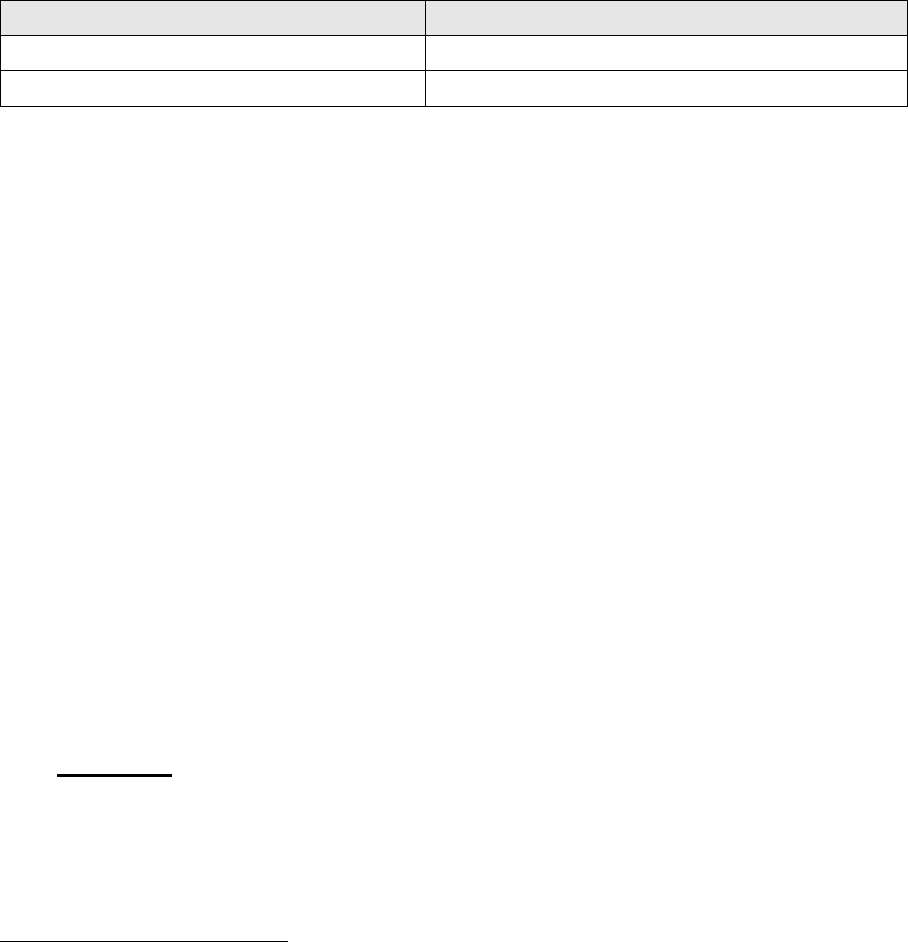
ACER REPORT ON TRANSMISSION AND DISTRIBUTION TARIFF METHODOLOGIES IN EUROPE
22
Figure 8: Type of payment of cost-cascading from transmission to distribution
Type of payment
Country
Explicit (separate tariff or tariff element)
BE, BG, HR, CY, DK, GR, IE, IT, PT, RO
34
, SK, SI
35
, ES
Implicit (no separate tariff or tariff element)
AT, CZ, EE, FI, FR, DE, HU, LV, LT, LU, NL, NO, PL
36
, SE
(52) More recently, some academic literature
37
has begun to question the traditional cost-cascading
approach, to the extent that inverted power flows, from a lower voltage level to a higher voltage
level, are becoming more frequent. Inverted power flows, if more dominant, challenge the idea
of a top-down cascading of costs, implying that some form of reverse cost-cascading may be
necessary.
38
(53) Based on NRAs responses only two countries (DE, SE) consider the use of (explicit) reverse
cost-cascading in the future. The vast majority of the countries are not considering its application
in the near future. In many cases NRAs (AT, FI, FR, GR, HU, IT
39
, LT, LU, NL, NO, RO, PT
40
,
SK
41
, SI) indicate that inverted power flows are not a frequent phenomenon or argue that there
is no evidence of benefits for higher voltage users arising from low voltage investments (BE, CZ).
In some instances such explicit reverse cost cascading would be hindered by the fact that the
costs are not collected per voltage level (MT) or the lack of sufficient information on the flows in
the network (ES).
(54) No NRA reported any recent changes regarding cost-cascading, but it is under review or
consideration in a few countries (PT, SE). Details on the changes can be found in Table 7 in
Annex 1.
3.3. Conclusions and recommendations
Cost model:
(55) The majority of countries follow an average cost model when setting network tariffs, both for
transmission and for distribution.
34
RO: Transmission tariffs are separate from distribution tariffs and both are indicated in the final bill.
35
SI: There is a separate tariff or tariff element for T-costs, but in the final bill it is merged with D-costs. TSO and DSO are obliged
to publish their separate tariffs on their web pages.
36
PL: Transmission costs are merged with distribution costs into the distribution tariff. The TSO and DSO are obliged to publish
their separate tariffs on their web pages.
37
E.g. Massachusetts Institute of Technology, “Utility of the Future: An MIT Energy Initiative response to an industry in transition”
(Dec. 2016).
38
From a conceptual point of view, the non-segmentation of a network across voltage levels can be considered as some form of
reverse cost-cascading. For instance, if there is only an overall distribution tariff, covering simultaneously the costs of MV and
LV, one can argue that MV users are already contributing towards LV assets. This may be interpreted as a coexistence of cost-
cascading and reverse cost-cascading.
39
IT: No clear evidence that this is needed, but the NRA is collecting data that could support a potential future reform of this
approach. Reverse cost cascading hasn’t been applied so far as reverse flows are still a relatively small phenomenon and its
introduction would be justifiable only in the framework of a thorough redesign of allocation criteria.
40
PT: The existence of inverted power flows is now being studied in PT. As a result, the regulatory rules foresee that in the case
of the self-consumption regime the exemption from cost-cascading may be reduced (which is not the same as true reverse cost-
cascading). There has not yet been sufficient evidence for following a reverse cost-cascading approach.
41
SK: T-costs which are serving or are partially caused by the users in lower voltage level and T-costs which serve for operational
security of whole electricity system as such are cascaded due to the fact, that the NRA cannot identify which market participant
caused these costs or are caused by the users in distribution. The NRA has not yet identified costs that should be reversely
cascaded.

ACER REPORT ON TRANSMISSION AND DISTRIBUTION TARIFF METHODOLOGIES IN EUROPE
23
(56) Although economic theory suggests that incremental or forward-looking cost models are better
approaches to signal the true cost of using the network, if the residual cost is recovered in a non-
distortive way, ACER observes that these cost models are less frequently applied in practice.
This might be the result of a lack of knowledge regarding the advantages and disadvantages of
implementing these models, including a lack of information on the effectiveness and impact of
these signals, risks and barriers (e.g. due to non-availability of the necessary data or complexity
in the analysis) to depart from the currently applied cost model.
(57) When incremental cost or forward-looking cost approaches are applied, there is a need to
allocate what is known as the ‘residual cost’, corresponding to the difference between the allowed
or target revenues and the revenue resulting from the price signals predicted by the cost model.
From an economic perspective, the residual cost should be allocated in a way that has the least
distortive effect on the price signals provided by the cost-reflective network tariffs for efficient
network use (e.g. ideally via fixed lump sum charges), while also keeping a balance with other
tariff-setting objectives, such as non-discrimination or sustainability.
(58) ACER recommends that:
a) Within the next 4 years, subject to their available resources, NRAs should evaluate the
advantages and disadvantages of applying incremental or forward-looking approaches, and
consult the results of such studies with their stakeholders. Special care should be given to the
way the residual cost would be recovered from network users.
Cost cascading:
(59) The principle of cost-cascading is embedded into the network tariff design in all countries, (except
Malta, which has only a distribution network, but no transmission network), as an important
element of cost-reflectivity. In almost all countries, more than 90% of transmission costs are paid
by network users connected to distribution. No country applies the option of reverse cost-
cascading as a result of inverted power flows in the grid, but two countries are considering it for
the future.
(60) In several instances, the lack of cost cascading within transmission and/or within distribution is
explained by lack of identification of costs per voltage level (e.g. extra high voltage, high voltage,
medium voltage, low voltage).
(61) ACER deems that in countries where the predominant direction of the electricity flow is from
transmission to distribution, and reverse flows are a rare phenomenon, applying the cost-
cascading principle from a higher to a lower voltage level (either within transmission, from
transmission to distribution or within distribution) reflects the physical use of the network. Should
reverse flows become more relevant in the future, a thorough review of this principle becomes
necessary.
(62) Some countries have identified the practice of partial cost-cascading, where not all cost
categories are cascaded to network users connected at lower voltage levels. This is the case
with connection-specific services, such as metering, billing and metering-related customer
service.
(63) Since some particular network users (e.g. energy communities) may only marginally require
using other network levels, exemptions to cost cascading or application of partial cost-cascading
may be justified.

ACER REPORT ON TRANSMISSION AND DISTRIBUTION TARIFF METHODOLOGIES IN EUROPE
24
(64) ACER recommends that:
a) In order to ensure more cost-reflective network tariffs, and in particular to avoid the application
of postage stamp tariffs (i.e. identical across all voltage levels), network users should contribute
to the costs of each network level used by them.
b) NRAs should collect network costs, where feasible and cost-effective, classified by different
voltage levels of the network (extra high voltage, high voltage, medium voltage and low
voltage), as this is a pre-requisite to apply the cost-cascading principle. Depending on the
complexity of attributing the relevant network costs to specific voltage levels, different
classifications may be justified for different cost categories.
c) NRAs should collect data on power flows (including the occurrence of inverted power flows)
and the volume of injection and withdrawal per voltage level, to determine whether the applied
cost-cascading is still an adequate approach for cost allocation.
d) NRAs should ensure transparency on the cost categories not subject to cost-cascading,
providing the economic rationale for this decision.
e) Exemptions on the application of the cost-cascading principle should be justified and regularly
re-evaluated to avoid any discrimination.
4. Injection charges
4.1. General overview
(65) An injection charge may be levied on network users in relation to the costs associated with the
use of the network for injection or merely due to the fact that the network user has the possibility
to inject into the grid. In this Report, ACER considers any regular network charge applied to
network users that inject (or are entitled to inject) as an injection charge, even if it is not levied
based on any contracted or measured energy or power injection (e.g. an annual or monthly lump
sum payment which recovers only metering, administrative and/or management costs)
42
.
(66) As shown in Figure 9, more than half of the assessed countries (AT, BE, BG, DK, EE, FI, FR, IE,
LV, MT, NL, NO, RO, SK, SE) apply a (non-negative) injection charge
43
to at least one group of
network users. In case of France (for distribution), Malta (only distribution network exists) and the
Netherlands (for both transmission and distribution), the respective injection charge is only a
small lump sum fee for the metering, administrative and/or management costs, which recovers a
fraction of the TSO or DSO costs.
42
The definition of the injection charge does not include the one off-charges paid for the connection to the grid or for an upgrade
of that connection, neither the cost of specific TSO/DSO services on individual requests of the network users.
43
For this section, only the charges for active energy injections are considered. Regarding charges for injection of reactive energy,
please refer to Chapter 6 of this Report.

ACER REPORT ON TRANSMISSION AND DISTRIBUTION TARIFF METHODOLOGIES IN EUROPE
25
(67) In most instances, the countries apply both transmission and distribution tariffs injection (AT,
BE
44
, FI, FR
45
, LV, NL
46
, NO, SE, SK). However, there are some exceptions, where regarding
injection only transmission tariffs are applied, but no distribution tariffs (BG, DK, IE, RO) or where
only distribution tariffs apply, but no transmission tariffs (EE).
47
(68) Further, Germany is the only assessed country that applies a “negative injection charge” only to
account for avoided network charges, as DSOs can avoid drawing the amount of electricity from
the upstream grids that is injected into their grid by decentralised generators. In such case, non-
intermittent decentralised generators receive the so called “avoided network charges” in turn for
their system-beneficial impact (i.e. avoided network costs at upper voltage levels). The network
users receiving the "avoided network charges” are paid according to the regular network tariff
sheet (for withdrawal) of the respective upstream voltage level.
48
(69) In Sweden, distribution-connected producers also get paid an amount when a reduction in losses
(and thus actual network benefits) is identified
49
, but in contrast to Germany, the producers are
also subject to non-negative injection charges.
(70) In most instances the injection charge has been already in use for several years, while in Latvia
it has recently been introduced. From 1 January 2023, an injection charge also applies in Croatia
(for both transmission and distribution). From the same date, in Denmark, the application of the
injection charges is expanded to distribution as well.
(71) The remaining 10 countries (CY, CZ, GR, HU, IT, LT, LU, PT, SI, ES) do not apply any injection
charge for the recovery of any transmission or distribution costs. In most of these countries, such
charges have never been applied, while in Italy, Portugal and Spain they have been phased out
50
.
In Lithuania, there are initial discussions on the use of an injection charge in the future.
44
BE: Except in Brussels region, where due to very few injection sites, the injection charge was not deemed to be needed by the
regional regulator.
45
FR: In terms of the distribution tariff the producers only pay a small management fee.
46
NL: Small lump sum fee for administrative costs
47
Malta is not accounted for this statistics as it has no transmission network, thus no T-tariff.
48
DE: E.g. the payment to the concerned generator at LV level is calculated according to the network tariffs for electricity
withdrawal of the MV/LV level.
49
SE: In the case of the largest DSO, the Swedish NRA indicated that producers which provide generation that reduces losses
in the grid get paid an amount that is based on the energy price (SEK/kWh), since network losses are based on the energy cost.
Since they reduce the cost of the grid they get reimbursed for that cost by the grid operators.
50
In Italy it was phased out already in 2010, in Spain and in Portugal only in recent years, i.e. 2020 and end 2021 respectively.
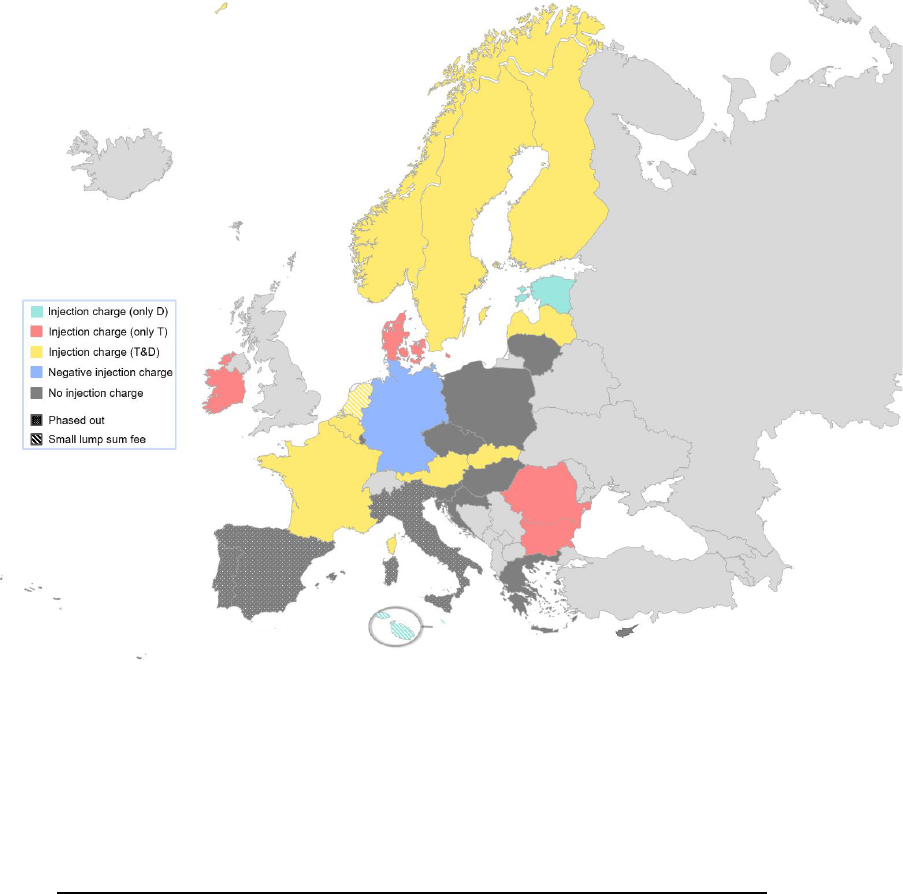
ACER REPORT ON TRANSMISSION AND DISTRIBUTION TARIFF METHODOLOGIES IN EUROPE
26
Figure 9: Application of injection charges in Europe (2022)
Note: In France (in distribution), Malta and the Netherlands, the respective charge is only a small lump sum fee for
metering, administrative and/or management costs. In Belgium, injection charge in distribution applies only in
Flanders and Wallonia regions, but not in Brussels region. From 1 January 2023, injection charge also applies in
Croatia (for both transmission and distribution) and in Denmark the application of the injection charges is expanded
to distribution as well.
Motivations behind the application or non-application of injection charges:
(72) NRAs typically motivate the use of injection charges by referring to the principle of cost-
reflectivity. In the countries where the injection charges apply, either only to the transmission-
connected (T-connected) network users or only to the distribution-connected (D-connected)
network users, one NRA explains this difference by the different choice of the respective system
operators (EE) and another NRA, by the aim not to discourage distributed generation, which is
not yet sufficiently developed and has beneficial effects on the networks (RO).
(73) The most frequently reported reasons by NRAs for non-application of an injection charge are:
Risks of creating distortions in competition (and disadvantages for national producers) in the
EU internal market (CZ, PT, LU);
Cost reflectivity, i.e. the network costs caused by producers are already recovered through
other means (e.g. through licence-holder charges or deep connection charges), lack of
generation surplus in the network (LT) or lack of significant structural inefficiencies due to
location of generation and demand (GR);

ACER REPORT ON TRANSMISSION AND DISTRIBUTION TARIFF METHODOLOGIES IN EUROPE
27
Support for higher penetration of renewable energy (RES) generation and energy storage
(CY) or due to concerns of adequacy of conventional generation (HU).
(74) In some countries (DE, PL
51
, SI), the NRA reported that the application of an injection charge is
prohibited by the law
52
, while in some other countries (RO, ES), the injection charge is allowed
by the national law, but its design is significantly restricted by it (e.g. no locational differentiation
is allowed to ensure the same network tariffs within the country irrespective of the place of
network use)
53
. It can also result in distortions between new and existing producers, if the latter
are protected by “grandfather clauses”.
Consultations and studies:
(75) In most instances, the design of injection charges has been discussed with system operators and
network users as part of the tariff consultation or via a dedicated consultation. However, only in
one instance (LV) were they discussed with NRAs of other (neighbouring) countries.
(76) Similarly, ACER notes that only in a few countries (BE, FR, LV, NO) was a study carried out to
assess the costs triggered by the generators and the ultimate impacts (e.g. cost efficiency of the
system) of introduction, change or phase-out of injection charges.
(77) None of the NRAs identified any remarkable competitive disadvantage for the producers within
the country vis-à-vis producers of other countries due to the applied injection charges. The NRAs
typically explained the lack of distortions with the marginal impact of injection charges on the
electricity price due to their relatively low level allowed by EU law
54
. One country (BE) applies an
explicit measure, i.e. via the use of international benchmark for injection charges, to prevent
distortions in cross-border competition.
(78) Similarly, none of the NRAs reported any distortion in competition within the country, by often
referring to the fact that the same injection charges are applied to all producers.
(79) For more information on the application of injection charges across Europe and actions that
preceded the decisions on them, please refer to Table 8 in Annex 1.
Cost recovery:
(80) As discussed in Chapter 3 of this report, following the application of the cost-cascading method,
transmission costs are either paid by both transmission- and distribution-connected users or only
by transmission-connected users, while distribution costs are paid only by distribution-connected
users (in lack of reverse cost-cascading).
51
PL: The NRA is not allowed to introduce the injection charge, as such charge is not provided in the relevant national law.
52
NL: National law in the Netherlands also prohibits the application of an injection charge, but adopts a definition that differs from
the one in this Report. Dutch law considers an injection charge to be a charge based on the amount of energy injected. The small
lump sum fee for the administrative and/or metering costs charged to all network users is considered an injection charge in this
Report but not under Dutch law.
53
RO: In Romania, variation of transmission charges for injection based on generators’ location was removed in 2017.
54
Regulation 838/2010 sets a EUR/MWh cap on transmission charges paid by generators, excluding costs of connection, specific
losses and ancillary services.
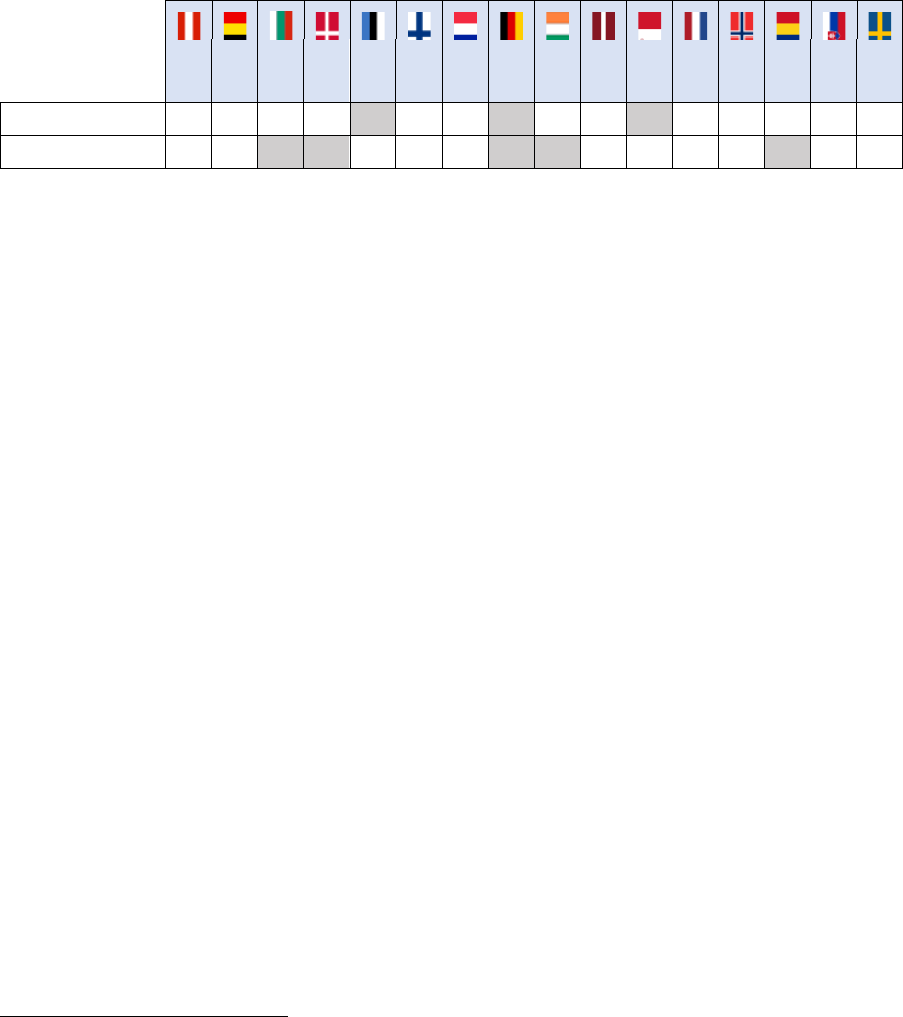
ACER REPORT ON TRANSMISSION AND DISTRIBUTION TARIFF METHODOLOGIES IN EUROPE
28
(81) As shown in Figure 10 below distribution-connected users who inject into the grid pay for both
transmission and distribution costs in five countries (AT, BE
55
, FI, NO, SE).
56
In the remaining
countries the distribution-connected network users either pay a small fee for the possibility of
injection (FR, MT, NL), pay only distribution costs for injection (EE, LV, SK) or pay only
transmission costs for injection (DK
57
, RO, IE).
Figure 10: Payment of network costs by distribution-connected network users who inject into the grid (2022)
AT
BE
58
BG
DK
59
EE
FI
FR
DE
IE
LV
MT
NL
NO
RO
SK
SE
Transmission costs
●
●
●
●
●
●
●
●
●
Distribution costs
●
●
●
●
●
●
●
●
●
●
●
Note: Cells in grey indicate cases where a non-negative injection charge does not apply for that network tariff. In
the case of FR, NL and MT, the distribution-connected producers only pay a small lump sum charge.
(82) As described in Table 9 and Table 10 in Annex 1, the assessed countries apply different practices
with regard to which cost categories are recovered via injection charges. They may contribute to
the recovery of specific cost categories, such as infrastructure costs (SK); losses and/or system
services (AT, BE (transmission), FR (transmission), RO); or only metering, administrative and/or
management costs (FR (distribution), MT, NL).
(83) Alternatively, in several countries (BG, DK, EE, FI, LV, NO, SE) the injection charges are used
to recover multiple cost categories or to recover part of the TSO and/or DSO costs without any
segmentation of the injection charge for specific cost categories (e.g. based on their main cost
drivers).
(84) In none of the countries were non-network related policy costs reported to be recovered via
injection charges from 2023. ACER finds one instance (BE’s Flanders region) where non-network
related costs (i.e. pension costs) have been recovered via injection charges, but it will be phased
out from 1 January 2023.
(85) As shown in Figure 11 below, it is slightly more frequent that the injection charge is related to the
payment of (short term) variable costs, such as losses and system services than for the recovery
of infrastructure costs (CAPEX, OPEX).
55
BE: Flanders and Wallonia regions
56
The finding is valid as of 2022. Denmark is not listed, as the injection charge applies for the distribution costs only from 1
January 2023. The countries listed pay transmission and distribution costs, either in the form of separate transmission and
distribution tariffs (BE’s Flanders and Wallonia regions) or in the form of distribution tariffs only, which bundle transmission and
distribution costs (AT, FI, SE).
57
DK: The finding is valid as of 2022. Injection charge applies also for distribution costs from 1 January 2023.
58
BE: Flanders and Wallonia regions
59
DK: Injection charge applies also for distribution costs from 1 January 2023.
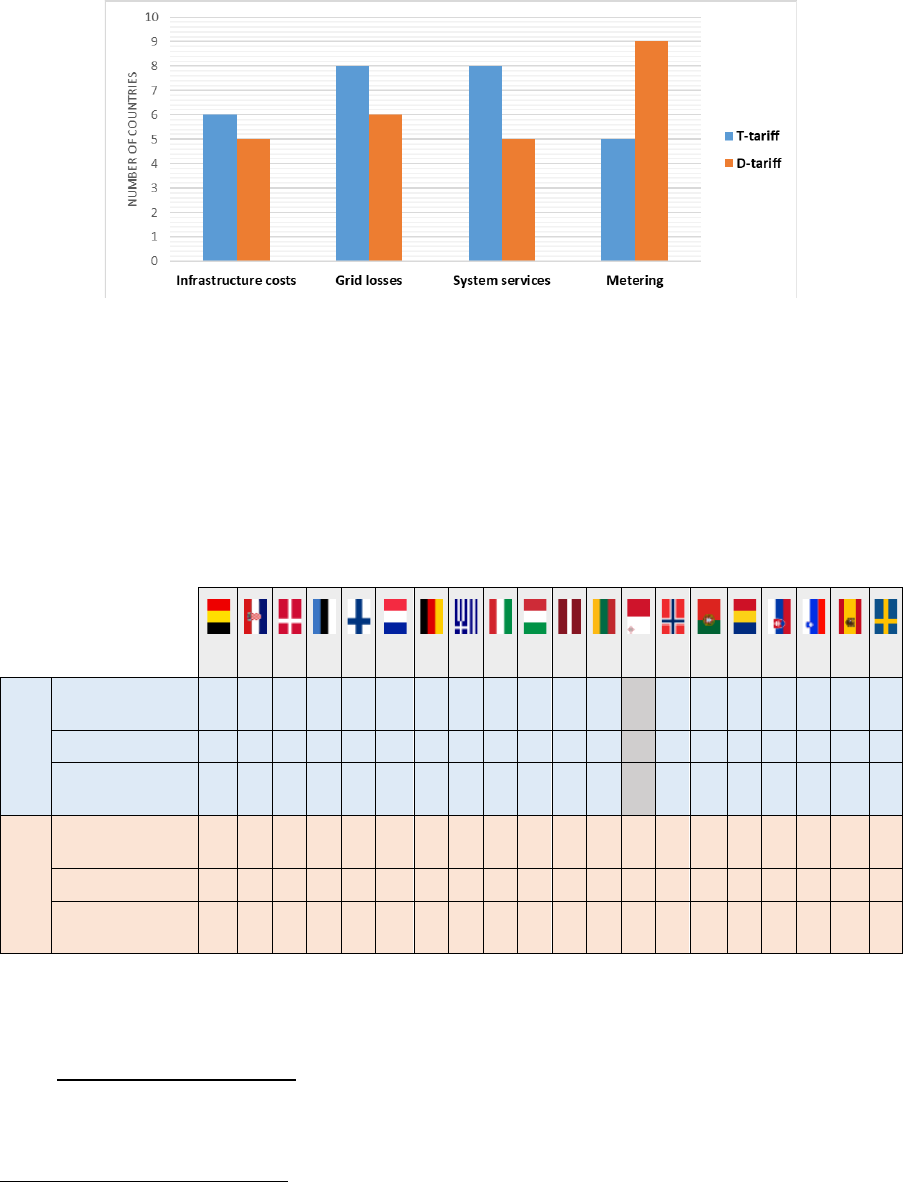
ACER REPORT ON TRANSMISSION AND DISTRIBUTION TARIFF METHODOLOGIES IN EUROPE
29
Figure 11: Recovery of specific cost categories via injection charges
(86) As shown in Figure 12 below, in several countries the network users (or at least some of them)
who inject into the grid pay deep-connection charges, they are subject to “in-kind” payments for
losses (BE) or they have to provide some free system services (FR, IT, PT, ES). This implies that
these network users contribute to the recovery of network and system costs, despite the lack of
injection charges or in addition to them. Similarly, network users who both inject into and withdraw
from the grid are often subject to withdrawal charges as described in Section 4.3 and Section 4.4
below.
Figure 12: Not injection charge related cost burdens on network users injecting into the grid
BE
60
HR
DK
EE
FI
FR
61
DE
GR
HU
IT
62
LV
LT
MT
NO
PT
63
RO
SK
SI
ES
64
SE
Transmission
Deep connection
charges
●
●
●
●
●
●
●
●
●
●
●
Losses related
●
System services
related
●
●
●
●
Distribution
Deep connection
charges
●
●
●
●
●
●
●
●
●
●
●
●
●
●
●
●
Losses related
System services
related
●
●
Note: The table does not include reactive energy charges, which are described in a separate section or additional
cost burdens related to withdrawal
65
. MT has no transmission network.
Generation vs. load split:
(87) As shown in Figure 13 below, the injection charges tend to recover only a small part of the
transmission and distribution costs.
60
BE: Balance responsible parties (BRP) have to provide energy "in-kind" to compensate losses at transmission level (around
1% of their portfolio net injections).
61
FR: Producers have some obligations related to ancillary services
62
IT: Producers have to provide some ancillary services (frequency containment reserve "primary" and voltage control) for free.
63
PT: Producers have to provide some system services for free.
64
ES: The costs of the ancillary services are included in the commodity price
65
For example, if a prosumer pays a withdrawal charge or pays an in-kind, i.e. as additional energy bought in the energy market,
for losses, these charges are not account for in the table.
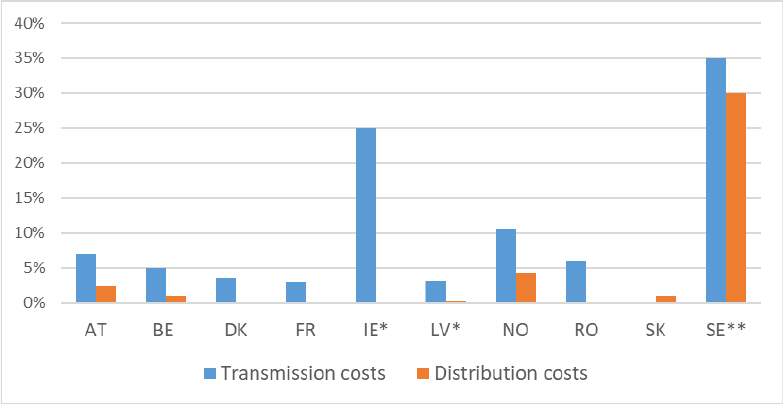
ACER REPORT ON TRANSMISSION AND DISTRIBUTION TARIFF METHODOLOGIES IN EUROPE
30
(88) The share of injection charges in transmission cost recovery is rather low (for the vast majority
of the countries it is below 7%). At the same time it has a great variation across the countries,
ranging from 3% of the transmission costs up to 35%.
(89) In case of distribution costs the share of injection charge is even less (i.e. below 5%) than in the
case of transmission costs, except in Sweden (although the data, i.e. 30%, refers only to one
DSO’s regional grid).
Figure 13: Share of network costs recovered via injection charges
Note: *data as of 2020, **Distribution costs data is valid for one of the largest DSOs for regional grid only (40-130
kV). In some countries the data was available/provided only for transmission or only for distribution. For some other
countries the data was not available or provided.
(90) The split of the costs allocated to generation can be obtained in various ways, as summarised
below (for more information please refer to Table 14 and Table 15 in Annex 1):
The split can start by setting the level of the injection charges, while the remaining costs are
allocated to withdrawal charges: administratively set injection charge at the value of the
ceiling set by the Commission Regulation (EU) No 838/2010 (in Latvia); determined based
on an international benchmarking method (e.g. using the weighted average of the injection
charges applied in neighbouring countries, in Belgium’s Wallonia region) or; calculated by
using some formula (Denmark).
The split can be based on a decided fixed percentage of the relevant costs (i.e. ancillary
services reservation costs in Belgium are allocated 50-50% to injection and withdrawal);
The split can result from identifying the costs directly related to injection (for distribution costs
in Belgium’s Flanders region, for transmission costs in Romania) or the costs directly related
to injection for certain purposes (e.g. exports in France);
The split can be made by using the same unit prices of charges for injection and withdrawal,
(e.g. in Slovakia the energy-based and the power-based unit prices of the charges are the
same for injection and withdrawal, but for the power-based charges in case of injection only
15% of the contracted capacity is taken into account in the calculation; in Estonia the same
level of power-based and lump sum charges are applied for both producers and consumers
in distribution).
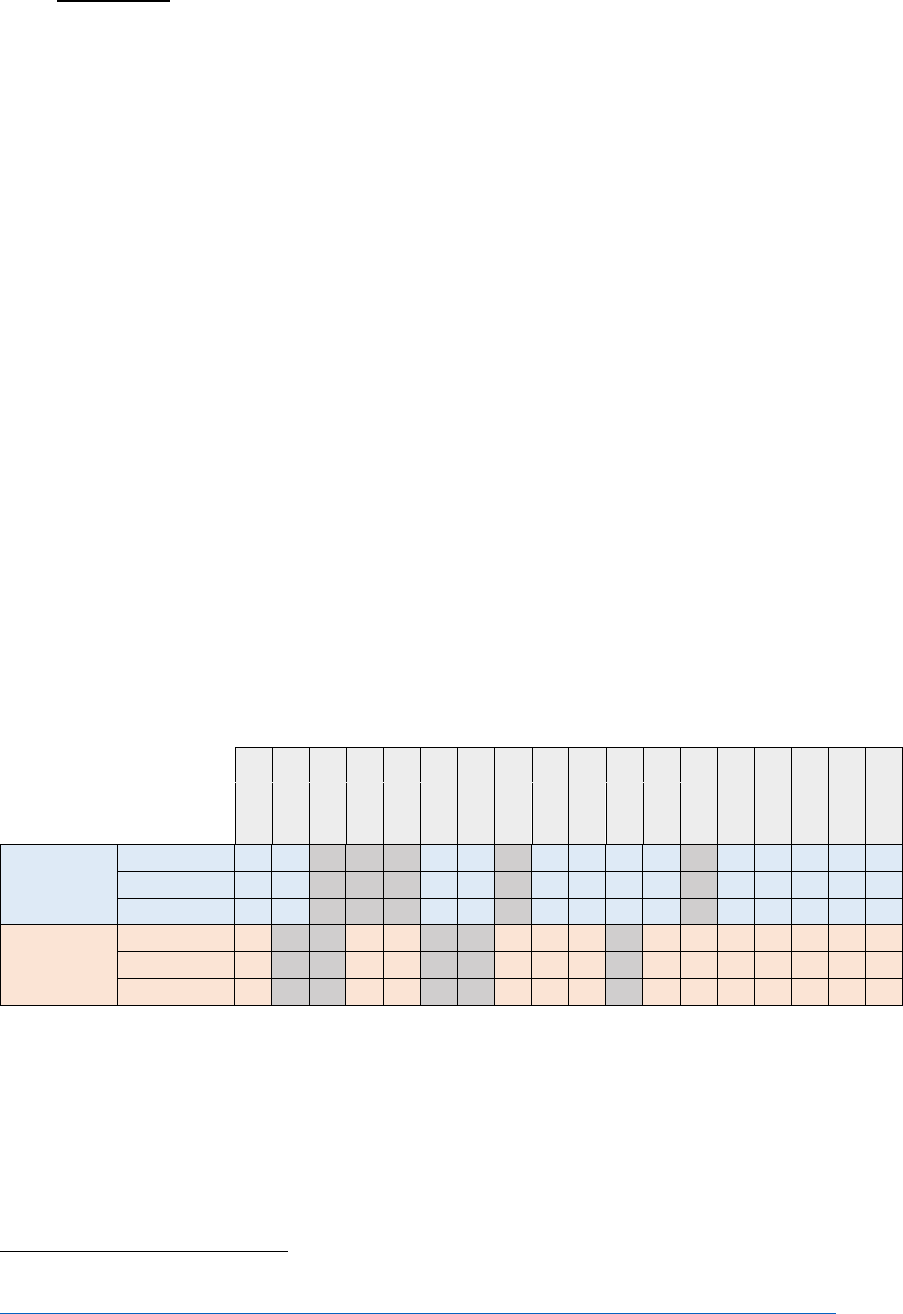
ACER REPORT ON TRANSMISSION AND DISTRIBUTION TARIFF METHODOLOGIES IN EUROPE
31
Tariff basis:
(91) Injection charges may be levied on the network users based on different bases
66
:
energy-based injection charges are charges payable on every unit of energy produced
and/or injected into the grid (e.g. €/MWh);
power-based injection charges are charges payable on the capacity connected to the grid,
on yearly or multi-year peak output or output under peak conditions (e.g. €/MW);
lump sum injection charges are charges that are fixed at the start of the relevant charging
period (e.g. €/year) and do not depend on capacity connected, on yearly or multiyear peak
output or on output under peak conditions, unless these are taken into account in the form
of an average over a past period of at least 5 years. Moreover, lump sum injection charges
may take into account the average annual load factor or the average of other output related
factors, as long as such averages are calculated over a minimum of 5 years. The level of
the lump sum injection charge may be differentiated between small and large plants, or
based on generator characteristics.
(92) The tariff basis applied in the assessed countries for injection charges is shown in Figure 14
below. ACER notes that in transmission, six country (AT, BE, BG, DK, FR, RO) apply only energy-
based charge, three countries (IE, LV, SK) apply only a power-based charge, while three
countries (FI, NO, SE) apply a mix of energy-based charge with a power-based and/or lump sum
charge
67
. In distribution, one jurisdiction (BE’s Flanders region) applies only an energy-based
charge, three jurisdictions (LV, SK, SE) apply only a power-based charge, while the remaining
jurisdictions (AT, BE’s Wallonia region, EE, FI, NO) apply a mix of tariff basis.
Figure 14: Tariff basis for injection charges
AT
BE
BE
BE
BE
BG
DK
EE
FI
FR
IE
LV
MT
NL
NO
RO
SK
SE
BRU
WAL
FLA
Transmission
tariff
Power-based
●
●
●
●
●
Energy-based
●
●
●
●
●
●
●
●
●
Lump sum
●
●
Distribution
tariff
Power-based
●
●
●
●
●
●
Energy-based
●
●
●
●
Lump sum
●
●
●
●
●
●
●
●
Note: In DE, the negative injection charge (in distribution) is energy-based; MT has no transmission network; 2019
data for IE.
(93) Table 9 and Table 10 in Annex 1 show which tariff basis is used for the recovery of which cost
categories. In most of the concerned countries, energy-based injection charges apply for the
recovery of the cost of losses and/or the system services (AT, BE, BG, DK, FR, NO, RO, SE),
which typically show correlation with the volume of injected energy. However, ACER also notes
66
Cf. ACER Opinion 09-2014 (p.2)
https://acer.europa.eu/Official_documents/Acts_of_the_Agency/Opinions/Opinions/ACER%20Opinion%2009-2014.pdf
67
In Sweden, the TSO charge for injection was 61% capacity-based vs. 39% energy-based in 2021; in Norway the lump sum
charges was 80% while the energy-based charge was 20% in 2020. In Finland the share between the energy- and power-based
injection charges was not available to the NRA.

ACER REPORT ON TRANSMISSION AND DISTRIBUTION TARIFF METHODOLOGIES IN EUROPE
32
some deviations from this practice, where costs of losses or system services are recovered by
power-based injection charges (LV, EE).
(94) For the recovery of the infrastructure costs (CAPEX, OPEX), which typically show correlation with
the system peak, the application of energy- and power-based charges are more balanced, with
power-based charges being the more common: Energy-based charges apply in two countries
(BG, DK) power-based injection charges are applied in four countries (EE-distribution, LV, SK,
SE) and one country (NO) applies a lump sum charge based on 10 year historical average of
production.
(95) The metering, administrative or management costs, which are mainly unrelated to the injected
volume of energy or the level of capacity, are either recovered via the same energy- and/or
power-based tariff element as other network costs (BG, FI, LV, SE) or they are recovered via a
lump sum charge (AT-distribution, EE
68
, MT, NL).
(96) The power-based injection charges are set either based on the installed capacity (LV), annual
capacity subscriptions/contracted power (EE, SE
69
), yearly peak power (SE
70
) or both rated
power and the maximum output capacity (SK).
Injection tariff variation:
(97) As shown in Table 16 and Table 17 in Annex 1, some injection charges are differentiated between
voltage levels, and vary in few instances also based on time-of-use or location. The main reason
for such differentiation is to provide appropriate economic signals for efficient dispatch of energy
generators.
71
In the remaining instances uniform injection charges (i.e. without any variation)
apply
72
.
(98) Injection charge variations, in particularly, based on voltage levels, are more frequent for
distribution (AT, BE
73
, EE, FR
74
, DE, NL, SK, SE) than for transmission (NL)
75
, which may partially
be explained by the fact that the transmission network has typically less sub-networks than the
distribution grids. In some instances (FR-transmission, BE’s Flanders region), while the tariff does
not vary across the different voltage levels, the voltage level can still play a role, i.e. an exemption
applies for network users under certain voltage levels.
(99) Injection charge variation based on location (not related to different DSO areas)
76
is observed in
three countries (AT, IE, NO, SE) and one additional country (DK) reported that it is considering
68
EE: The lump sum includes all the costs of metering but partly also other costs (for example, the costs of administration,
management and maintenance of the distribution network).
69
SE: the transmission tariff for injection and the distribution tariff for injection in some of the DSO areas are set based on the
annual subscribed capacity.
70
SE: distribution tariff for injection in some of the DSO areas are set based on yearly peak power.
71
ACER also notes that in several countries the network tariff is also differentiated by the type of network user or some network
users receive an exemption, a partial exemption or a discount. These instances are not considered under the tariff variations and
they are discussed in sections 4.2-4.4 below.
72
Before 2017, France and Romania have also applied such variations for the T-charges for injection - the former based on the
voltage level, the latter based on the location - but they have been phased out.
73
BE: Flanders and Wallonia regions. In Brussels region no injection charge applies.
74
FR: Yearly management charge, which aims to cover costs related to the management of producers by the DSO.
75
NL: The lump sum fee for generators is different across the voltage levels and reflects the administrative costs at the relevant
voltage level
76
Some countries reported that injection charges vary across network areas operated by different DSOs, although this practice
per se does not qualify as locational variation for the purpose of this Report. In these cases the different tariff levels are the result
of different tariff methodologies (e.g. SE) or the result of the same methodology applied for the recovery of different levels of
revenues across different network operators (e.g. DE).

ACER REPORT ON TRANSMISSION AND DISTRIBUTION TARIFF METHODOLOGIES IN EUROPE
33
to apply geographical differentiation to better reflect the difference in costs incurred depending
on the location of new production capacity:
in Austria, the energy-based distribution tariff is different in different network areas, which
are unrelated to the DSO areas;
In Ireland, the power-based transmission tariff provides a locational signal regarding losses;
in Norway, marginal pricing for losses apply
77
;
in Sweden, the transmission tariff is set based on nodes, and the distribution tariff also
provides locational signals in some of the DSO areas of SE.
(100) Injection charge variation based on the time-of-use was hardly observed in any of the assessed
countries
78
. However, it was applied in at least one country in the past.
79
Level of G-charges:
(101) Recital (10) of Commission Regulation (EU) No 838/2010 stipulates that the variations of
transmission charges faced by producers across the EU should not undermine the internal
market and should be kept within a range which helps to ensure that the benefits of harmonisation
are realised.
(102) The legal ranges of annual average transmission charges paid by producers is set by Annex B
of the Commission Regulation
80
. The range, which is not identical for all countries, applies only
to the so called “G-charge”, which does not include the charges paid by producers for physical
assets required for connection to the system or the upgrade of the connection, the charges paid
by producers related to ancillary services and the specific system loss charges paid by producers.
For such costs, NRAs can set any cost-reflective charge without a ceiling.
(103) The Commission Regulation requires ACER to monitor the appropriateness of the ranges of
allowable transmission charges paid by electricity producers (i.e. G-charges) in each Member
State. ACER, in its Opinion No 09/2014 considered that the monitoring activity should be based
on NRAs’ reports regarding the level and the structure of G-charges and the average G-charge
value in each year as well as on NRAs’ notifications on any proposal or decision taken to amend
the national G-charging methodology, submitting relevant information such as a detailed
reasoning and evidence of cost reflectivity. The results of the monitoring of the G-charges applied
in 2011 and 2012 is provided in the Annex to the ACER Opinion No 09/2014. The relevant results
of the monitoring carried out for years 2013-2021 is provided in Tables 11-13 in Annex 1.
(104) Application of G-charges (as defined above) has been reported for eight countries (DK, FI, IE,
LV, NO, RO, SK, SE) for this Report. In the other countries which have reported injection charges
at transmission: they cover only costs related to system losses and/or ancillary services (AT, BE,
77
NO: G-charge is lump sum and uniform, the energy charge to cover losses differs on basis of related losses associated to the
node where the producer is connected.
78
In Sweden, there are some DSOs which have tariff elements that are subject to some kind of time-of-use differentiation.
79
Portugal used to apply peak and off-peak transmission charges for injection, but injection charges have been phased out in the
country in 2021.
80
Decision of the EEA joint Committee No 7/2011 sets a legal range of the annual average transmission charges paid by
producers also in Norway.

ACER REPORT ON TRANSMISSION AND DISTRIBUTION TARIFF METHODOLOGIES IN EUROPE
34
FR) or such charges are marginal lump sum fees (NL, MT) for administrative and/or metering
costs, well under the ceilings for G-charges.
(105) The annual average G-charge is calculated by dividing the annual total transmission tariff charges
paid by producers by the annual total energy injected by producers into the transmission system.
In this regard, ACER notes that, in most of the concerned countries (including DK, FI, IE, RO,
SE), the calculation of annual total transmission tariff charges paid by producers includes both
the relevant payments by producers connected at transmission level as well as those connected
at the distribution level, while in the other countries, transmission costs are not paid by the
distribution-connected network users or the calculation was not specified.
4.2. Producers
(106) In the vast majority of the countries applying injection charges, producers - i.e. network users,
who only inject into the grid
81
- are subject to a tariff for injection, regardless whether they are
connected to the transmission or the distribution grid (AT, BE, BG, FI, IE, LV, NL, NO, RO, SK,
SE)
82
.
(107) However, as shown in Table 18 in Annex 1, in most of the concerned countries (AT, BE’s
Wallonia region, BG, DK, FI, FR, IE, MT, RO, SK, SE)
83
the tariff methodologies provide some
exemptions, discount to some of the producers or make other differentiations between them,
mainly related to the size of the generators, the voltage level of the connection and/or the
technology of generators (i.e. whether RES or not):
In Austria, the producers up to 5 MW installed capacity do not pay any network tariff for
injection (i.e. exemption from paying the transmission and distribution charge for network
losses and system service charges);
In Belgium’s Wallonia region, the producers which inject electricity on the LV level and
whose power is less than 10 kVA are exempted from the distribution tariff for injection;
In Denmark, some RES producers have been exempted through legislative acts, not as part
of the tariff methodology. However, these exemptions are not available anymore for new
producers;
In Finland, some DSOs do not apply injection tariff for small producers;
In France, producers connected to voltage levels lower than 150 kV do not pay any network
tariff for injection;
In Malta, the metering, administrative and management fee is different for the RES
producers compared to the two non-RES producers having a PPA with the DSO;
In Romania, producers whose installed capacity is lower than 5 MW do not pay any network
tariff for injection;
81
Producers include both renewable energy sources (RES) and Non-RES producers, which do not withdraw electricity from the
network except for the purpose of feeding the auxiliary services of their power plant, when needed.
82
In France only the T-connected producers are subject to non-negligible injection charges, while the D-connected producers
pay only a small lump sum fee. In Malta there is no transmission network, i.e. no T-connected producers.
83
For Bulgaria the difference in injection charges for RES and non-RES producers was not specified.

ACER REPORT ON TRANSMISSION AND DISTRIBUTION TARIFF METHODOLOGIES IN EUROPE
35
In Ireland, the producers whose installed capacity is lower than 5 MW do not pay any
network tariff for injection either. However, this is not a different treatment per se as all
producers are exempted from this amount and pay only the incremental capacity from 5 MW
on (e.g. a 7 MW generator is charged for 2 MW (7-5 MW)).
In Slovakia, power-based tariff for access to the grid is not paid by ancillary services
providers.
In Sweden, producers below 1.5 MW are exempted from part of injection charges according
to the national law. DSOs may apply some other differentiation, exemption or discount to
some producers, e.g. depending on the size of the producer.
(108) In a few instances, these exemptions, discounts and/or other differentiations have been justified
by cost impacts (e.g. the injection of small producers at distribution level is consumed at the same
level, thus payment for transmission costs is not justified), in other instances no such justification
has been provided and they appear to be motivated by non-network related policy reasons (e.g.
incentivising certain generation technologies).
4.3. Storage facilities
(109) As shown in Figure 15 below, in the vast majority of the countries, the storage facilities – i.e.
pumped-hydro energy storage (PHES) or other storage facilities (e.g. batteries), who both inject
into and withdraw from the grid - regardless whether they are connected to the transmission grid
or the distribution grid, are subject to network charges. However, in four countries (CY, IT, SI
84
,
ES
85
) the storage facilities do not pay any network tariffs for injection/withdrawal (or they would
not pay if there were any connected to the grid)
86
. Additional countries apply exemption only to
some of the storage facilities under certain conditions.
(110) The practices regarding the treatment of storage (where not exempted) also varies among the
countries:
In most countries (BE’s Brussels region, BG, HR, CZ, FR
87
, DE, GR, HU, IE, LT, MT, NL,
PL, PT, SK) transmission and/or distribution storage facilities are, in general, only subject to
the withdrawal charges. In these countries, either the same withdrawal charges are applied
to consumers (i.e. the gross withdrawal is considered and they are charged by the same
withdrawal tariff, without any charge on injection) or the withdrawal charge is set differently
from the one for consumers (e.g. discounted tariffs apply or they pay only based on the net
balance of injection and withdrawal);
In about one third of the countries (AT, BE’s Flanders and Wallonia regions, DK, FI, FR
88
,
IE, SK, NO, RO, SE) transmission and/or distribution storage facilities are, in general,
subject to both injection and withdrawal charges (with or without cost offsetting)
89
.
84
SI: In the new tariff methodology, which is under consideration, storages are subject of network charges for withdrawal.
85
ES: Storage facilities are exempted for tariff for withdrawals and there is no tariff for injection. All network user groups are
subject to connection charges, with the same rules.
86
No storage facilities are connected to the grid yet in Cyprus.
87
FR: distribution-connected storage facilities
88
FR: transmission- connected storage facilities
89
The finding does not account for negative injection charges.

ACER REPORT ON TRANSMISSION AND DISTRIBUTION TARIFF METHODOLOGIES IN EUROPE
36
(111) However, ACER notes that in none of the countries are the storage facilities subject only to the
injection charges applied to producers. For more information on the treatment of storage facilities
please refer to Table 19 in Annex 1.
Figure 15: Application of network charges to storage facilities
Subject to withdrawal charge
NOT subject to withdrawal
charge
Subject to injection charge
AT, BE (FLA and WAL), DK, FI,
FR
90
, IE, NO, RO
91
, SK, SE
92
NOT subject to injection charge
BE (BRU), BG
93
, HR, CZ, FR
94
, DE,
GR, HU, IE, LT, LU, MT
95
, NL, PL,
PT
CY, IT, SI, ES
Note: No storage facilities are connected to the transmission grid in: CY, EE, LV, LU, RO, SE; No storage facilities
are connected to the distribution grid in: BG, CY, EE, GR, LV, LT, LU; Some countries appear multiple times in the
Figure (e.g. due to differences between transmission and distribution); Negative injection charge is not accounted
for the Figure.
(112) As shown in Table 20 in Annex 1, the transmission or distribution tariff methodologies also make
some differentiations or exemptions in some countries between storage facilities. ACER notes
that these differences show more variety than for producers and observes differences based on
the storage technology (AT, PT), the commissioning date of the storage facility (BE), the size of
the storage (LT), its efficiency (PL) or its purpose (SK):
In Austria, the PHES facilities pay reduced network charge compared to other storage
facilities (e.g. batteries);
In Belgium, the transmission-connected storage facilities which are commissioned after July
2018, receive a full exemption of all network tariffs during 10 years. The transmission-
connected storage facilities with a substantial capacity increase after July 2018 receive a
80% discount on all Access Transmission tariffs during 5 years;
In Lithuania, distribution-connected batteries under 1 MW are exempted from any network
tariffs;
In Poland, transmission-connected PHES facilities pay a reduced transmission charge
based on the efficiency of the storage, while distribution-connected energy storage facilities
have no special rates;
90
FR: transmission-connected storage facilities
91
RO: Injection charge only for transmission costs
92
SE: No T-connected storage, if there were any it would pay charges both for injection and withdrawal. D-connected storage, in
some DSO area they are not connected, in other DSO areas they are subject to both injection and withdrawal charges (some
exemptions exist in some DSO areas).
93
BG: only for transmission costs
94
FR: distribution-connected storage facilities
95
MT: only for distribution costs

ACER REPORT ON TRANSMISSION AND DISTRIBUTION TARIFF METHODOLOGIES IN EUROPE
37
In Portugal, PHES facilities are exempted from both transmission and distribution charges
for withdrawal charges. Autonomous storage facilities (e.g. batteries) pay withdrawal
charges same as consumers, except what regards the energy policy costs
96
;
In Slovakia, storage facilities providing solely regulation energy (ancillary services) to the
TSO (no commercial injection or withdrawal of electricity) do not pay any transmission tariff.
Network users operating a hydroelectric power plant with a total installed capacity up to 5
MW are also fully exempted.
(113) The reason for these differences between the storage facilities have not been substantiated by
NRAs, with few exceptions: the difference between PHES and autonomous batteries in Portugal
is explained by reflecting the particular role of PHES for the balance of the system.
(114) In those countries where only withdrawal charges, but no injection charges, are applied to storage
facilities, the non-discrimination of storage facilities was typically argued by the fact that they are
subject to the same withdrawal charges as consumers, while in many instances no explanation
was provided.
(115) In those countries where both injection and withdrawal charges apply to storage facilities, in most
instances the non-discrimination is claimed to be ensured by the fact that the tariffs do not offer
any specific treatment for electricity storage and/or that the injection charge is very small and as
such does not create concerns of discrimination.
(116) In those countries, where no injection or withdrawal charge applies to the storage facilities (or at
least some of them), the exemption is explained mainly by the beneficial impact to the system /
increase of security of supply (ES), to avoid discrimination vis-à-vis auxiliary generation services
(IT) or such exemption is provided by the national law (SI).
(117) Considerations for cost-offsetting of the different network uses by the storage facilities have been
reported only by a few countries.
97
In most countries the need for cost-offsetting is not identified
by the NRAs, as only an injection or a withdrawal charge is applied, the injection charge is very
small or because the storage facilities are exempted.
(118) ACER notes that several recent and under consideration changes
98
reported by NRAs concern
network charges for storage facilities, which may flag the need for revision of the network charges
currently applied to them (e.g. whether to differentiate from those applied to producers and
consumers due to their impacts on the network).
96
PT: In Portugal there is a different treatment for storage facilities in what regards the allocation of energy policy costs, which is
performed through the "network access tariff" (this tariff includes the T-tariff and D-tariff, as well as energy policy costs). As a
storage facility corresponds to intermediate consumption, and not final consumption, and in order to avoid that these energy
policy costs are paid twice by final consumption, the intermediate consumption at storage facilities is exempted from these energy
policy costs (in order to avoid a double burden, it only applies to final consumption). Autonomous storage facilities pay withdrawal
charges for T-costs.
97
In Poland there is a specific calculation of the transmission tariff for storage facilities, taking into account its efficiency (i.e.
Energy storage entities pay a reduced fixed charge in the transmission tariff. In the formula for calculating the fixed charge, there
is a reduction factor proportional to the efficiency of the energy storage, which reduces the contracted capacity.) For instances of
reported cost off-setting, please refer to Table 24 in Annex 1.
98
Cf. Table 25 in Annex 1.

ACER REPORT ON TRANSMISSION AND DISTRIBUTION TARIFF METHODOLOGIES IN EUROPE
38
4.4. Prosumers
(119) In this Report, non-storage network users who can both inject into and withdraw from the grid are
labelled as “prosumers”.
(120) Prosumers can use the grid in both directions, but not necessarily in a balanced way, unlike
storage facilities, who have a balanced profile of injection and withdrawal, if the internal energy
losses are ignored.
(121) As shown in Table 21 in Annex 1, in the countries where injection charges apply, prosumers
typically pay both injection and withdrawal charges (either for transmission and/or distribution
costs), with a few exceptions, where they pay only an injection charge (BG) or only a withdrawal
charge (FR-distribution
99
, MT
100
, NL
101
)
(122) In none of the assessed countries the prosumers are exempted from all injection and withdrawal
tariffs. The different treatment of prosumers, compared to storage facilities, which are exempted
in several countries, is typically explained by NRAs due to their different nature (i.e. final energy
users) and their role in the system (i.e. where they do not offer system services).
(123) As shown in Table 22 in Annex 1, ACER notes that there are tariff differentiations or exemptions
in the national practices across prosumers as well. The differences or exemptions are based on
the type of prosumer (FR), the connected power (BE’s Flanders and Wallonia regions, HU) or
the relative position of the generation and consumption facilities (LV, PT):
In Belgium’s Flanders region, prosumers up to 10 kW of production capacity are exempted
from injection charges;
In Belgium’s Wallonia region, prosumers connected at LV level, whose connected power is
less than 10 kVA, do not pay injection charges;
In France, there is a difference between individual prosumers (that produce for themselves)
and collective prosumers (that produce for others according to a contract and a perimeter
criterion). Individual prosumers are only charged with withdrawal charges for the withdrawn
energy, whereas collective prosumers are also charged with the tariff of their voltage level
for the self-consumption part;
In Hungary, for network users with micro power plants (under 50 kW) net metering is
available, meaning they are charged for the net withdrawal;
In Latvia, if the self-consumption load is higher or equal to the production capacity, the
prosumer does not have to pay the capacity fee for injection;
In Portugal, in the case of the self-consumption regime, a full or partial exemption from
transmission and distribution tariffs may apply, depending on the relative position of the
generation and consumption facilities.
99
FR: Distribution-connected prosumers do not pay any injection charge. Transmission-connected prosumers pay both an
injection charge and a withdrawal charge.
100
MT: prosumers do not pay the small administrative fee paid by producers, in addition to the withdrawal charge.
101
NL: idem.

ACER REPORT ON TRANSMISSION AND DISTRIBUTION TARIFF METHODOLOGIES IN EUROPE
39
(124) Applying different or specific tariffs for prosumers, due to cost-offsetting impacts triggered by the
injection and the withdrawal by the same prosumer, was deemed unnecessary by most NRAs.
Similar to the reasoning in case of storage facilities, NRAs explain it by the fact that only
withdrawal charges apply for prosumers or the level of injection charges is very low.
(125) Some kind of cost-offsetting and/or a differentiation of the injection or withdrawal charges paid
by prosumers, when compared to those applied to producers or consumers, have been reported
or observed only in six countries (LV, MT, NL, LU, PL, SK):
In the Netherlands and Malta, prosumers do not pay the small administrative fee paid by
producers;
In Latvia, if the self-consumption load is higher or equal to the production capacity, the
prosumer does not have to pay the capacity fee for injection;
In Luxembourg, RES self-consumers are exempted from network charges on the part of the
production consumed by themselves. The exemption also applies to energy produced on
the basis of RES and shared in the same building or in communities;
In Poland, the energy-based component of the transmission tariff is charged on net
withdrawal, while regarding the distribution tariffs (for the so called “quality charge”)
102
there
is a discount for prosumers and prosumers are allowed to withdraw up to 70 or 80% of the
injected energy for free;
In Slovakia, network users who both inject and withdraw pay costs for the access to the grid
only based on the capacity that is higher (injection or withdrawal).
(126) For more information on charging of network users who are both injecting into and withdrawing
from the grid, please refer to the following tables in Annex 1:
Table 23 in Annex 1 shows whether charging of storage and/or prosumers based on gross
or net injection/withdrawal in case of energy-based charging.
Table 24 in Annex 1 shows cost-offsetting for storage and/or prosumers in case both
injection and withdrawal charges are applied in the country.
Table 25 in Annex 1 includes any significant change regarding injection charges since the
previous ACER tariff reports or any change currently considered and the reasons behind.
4.5. Conclusions and recommendations
Charges for users that only inject:
(127) More than half of the countries apply an injection charge to at least some network users. In most
instances, both transmission and distribution tariffs apply to injection. However, there are some
exceptions, where injection charges only apply at the transmission level.
102
PL: Quality rate is part of the TSO as well as the DSO tariff. It covers costs of maintaining the system (i.e. costs of maintaining
system standards of quality and reliability of current electricity supplies).

ACER REPORT ON TRANSMISSION AND DISTRIBUTION TARIFF METHODOLOGIES IN EUROPE
40
(128) In most instances, the design of injection charges has been discussed with system operators and
network users as part of the tariff consultation or via a dedicated consultation. However, only in
one instance were they discussed with other NRAs.
(129) Similarly, only in a few countries a study was carried out to assess the costs triggered by the
generators and the ultimate impacts (e.g. cost efficiency of the system) of introduction, change
or phase-out of injection charges.
(130) The non-use of injection charges is often argued by concerns about cross-border competition,
harm of previous investment decisions, distortion between new and existing producers if the latter
are protected by a “grandfather clause”, by the aim to provide incentives to particular generation
technologies contributing to achieve the national energy and climate goals or by practical
difficulties (e.g. identification of associated costs).
(131) Countries apply different practices with regard to which costs are recovered via transmission and
distribution tariffs for injection. It is slightly more frequent that the injection charge is related to
the payment of (short term) variable costs, such as losses, system services and metering and/or
management costs and it is slightly less frequent that it is used for the recovery of infrastructure
costs (CAPEX, OPEX).
(132) In none of the countries will non-network related policy costs be recovered via injection charges
from 2023. Since such costs show no correlation with any tariff basis, they can distort tariff signals
and/or lead to distributional effects between different groups of network users. ACER welcomes
this finding.
(133) In several Member States, producers pay deep-connection charges, “in-kind” for losses or
provide free system services, as such contributing to the recovery of network and system costs,
despite the lack of injection charges or in addition to them.
(134) In most of the concerned countries energy-based injection charges apply for the recovery of the
cost of losses and/or the system services, which typically show correlation with the volume of
injected energy. For the recovery of the infrastructure costs (CAPEX, OPEX), which typically
show correlation with the system peak, the application of energy- and power-based charges are
more balanced, with power-based charges being the more common.
(135) Injection charges in most countries recover only a fraction of the transmission and distribution
costs and the split between generation and load is often a result of an administratively set tariff
(i.e. no particular assessment of the costs corresponding to injection). At the same time the split
has a great variation across Member States, ranging from covering a residual fraction of the
network costs in a country up to over a third of them.
(136) While network charges on producers may be passed through to a different extent to the final
consumers via the energy price, the initial allocation of the TSO/DSO costs on network users can
in principle improve overall system efficiency, in particular, if there is a scarcity at certain times
and/or locations in the network. In such case, the injection charges may provide appropriate
economic signals
103
, while the lack of injection charges may result in that case in unintended
103
The price signals (e.g. due to location) provided by the injection charges may be weak in some countries or areas depending
on the actual network conditions
ACER REPORT ON TRANSMISSION AND DISTRIBUTION TARIFF METHODOLOGIES IN EUROPE
41
distortions (regarding cost efficiency of the network) in decisions around investments in
generation and storage because the true cost of using the network is not signalled to them.
(137) Commission Regulation (EU) No 838/2010 sets a range for the annual average value of
transmission charges (excluding connection charges, charges related to ancillary services and
specific system loss charges) paid by producers (i.e. G-charges). ACER acknowledges that the
cap provided by the Regulation can mitigate the potential negative impacts arising from
differences of injection charges between Member States. At the same time, it also creates a
barrier for effective cost signals coming from network tariffs. In its ACER Opinion No 09/2014 on
the appropriate range of transmission charges paid by electricity producers, ACER considered it
unnecessary to propose restrictions on cost-reflective power-based and on lump sum G-charges,
while energy-based injection charges should not be used to recover infrastructure costs.
(138) ACER recommends the following:
a) Increasing interconnection and integration of the European electricity market implies an
increasing risk that different levels of injection charges could distort competition and investment
decisions in the internal market, if injection charges are not set in a cost-reflective way across
Europe. In order to ensure cost-reflectivity and avoid market distortions, the cost caused by a
network user should be properly reflected in its tariffs. If a network user only withdraws from or
only injects into the transmission or distribution grid, in principle, only the costs relevant for
withdrawal or the costs relevant for injection should be attributed to this network user.
b) In order to avoid discrimination across network users connected to the transmission network
and those connected to the distribution network, the injection charges should be consistently
defined in the transmission and the distribution tariff methodologies. Network tariffs should not
incentivise generation to connect to the transmission network, instead of the distribution
network (or vice versa), unless justified by the associated network efficiencies.
c) Due to the potential cross-border impact, NRAs should consult at least the NRAs of the
neighbouring countries of any substantial change regarding injection charges in advance.
d) When setting injection charges, all network-related cost-burdens on the concerned network
users should be considered, including those recovered via withdrawal charges, connection
charges, or other means (e.g. in-kind payments or mandatory free services provided by the
producers to the system operators), to avoid any double-charging (i.e. recovery of costs which
have been already recovered via other means).
e) Since different system operator costs show correlation with different cost drivers (e.g.
infrastructure costs show correlation with peak capacity, while losses and system costs show
correlation with injected energy), energy-based injection charges (expressed in €/MWh) should
not be used to recover infrastructure costs from network users, while they can provide efficient
signals for recovering the costs of losses and system services. Power-based injection charges
(expressed in €/MW) or lump sum injection charges (as defined in this Report), as long as they
reflect the costs of providing transmission and distribution infrastructure services to network
users, can be appropriate, to better reflect their main cost drivers. Costs, which do not show
correlation with neither capacity nor energy, but rather with the number of network users or the
number of meters (e.g. billing, metering or administrative costs), in principle, should be
recovered via lump sum charges.

ACER REPORT ON TRANSMISSION AND DISTRIBUTION TARIFF METHODOLOGIES IN EUROPE
42
Charges for users which inject and withdraw:
(139) In most countries, storage facilities are subject only to withdrawal charges and in about one third
of the countries they are subject to both injection and withdrawal charges. In four countries,
storage facilities do not pay any network tariffs.
(140) In some countries, the tariff methodologies make differentiations or exemptions by the type of
storage facility, for example based on commissioning date, technology, size or efficiency.
(141) When a network user both injects and withdraws from the grid, a cost-offsetting effect may take
place in what regards the associated costs to the network use (e.g. the bidirectional use of the
network may not require additional need for development compared to unidirectional use).
Application or considerations of cost-offsetting between the different network uses by the storage
facilities have been reported only by a few countries.
(142) ACER underlines that the fact that a network user pays a charge for both injection and withdrawal
is not an unjustified double-charging per se. Similarly, applying only injection charging (or only
withdrawal charging) for storage facilities or prosumers under the same terms as for producers
(or for consumers), does not necessarily ensure non-discrimination across network users.
(143) In the countries where injection charges apply, prosumers typically pay both the injection and the
withdrawal charge. In none of the assessed countries prosumers are fully exempted.
(144) The different treatment of storage facilities and prosumers may be justified by the different cost
impacts they respectively trigger to the network. However, this topic requires further investigation.
(145) ACER recommends that:
a) If a network user both withdraws from and injects into the grid, both network uses should be
considered when setting the tariffs, by properly taking into account the potential cost-offsetting
effect and the overall cost-impact to the network.
b) In this regard, where volumetric charges apply, net-metering (i.e. payment based on the net
balance of injected and withdrawn energy) should be avoided as it is not cost-reflective and
shifts costs to those users who only inject into or only withdraw from the grid.
5. Connection charges
5.1. General overview
Cost recovery:
(146) Connection charges are typically one-off charges covering the costs (or part of the costs) of
connecting new users to the transmission or distribution networks. Since the reinforcement of the
network due to new connections can also benefit other grid users, part of those costs are often
socialised, i.e. covered by “use of network charges”, creating thus a link between connection
charges and the use of network charges.
(147) Connection charges may be “shallow” or “deep”, depending on whether a network user pays only
for its own direct connection costs or, beyond that, also pays for network reinforcement deemed
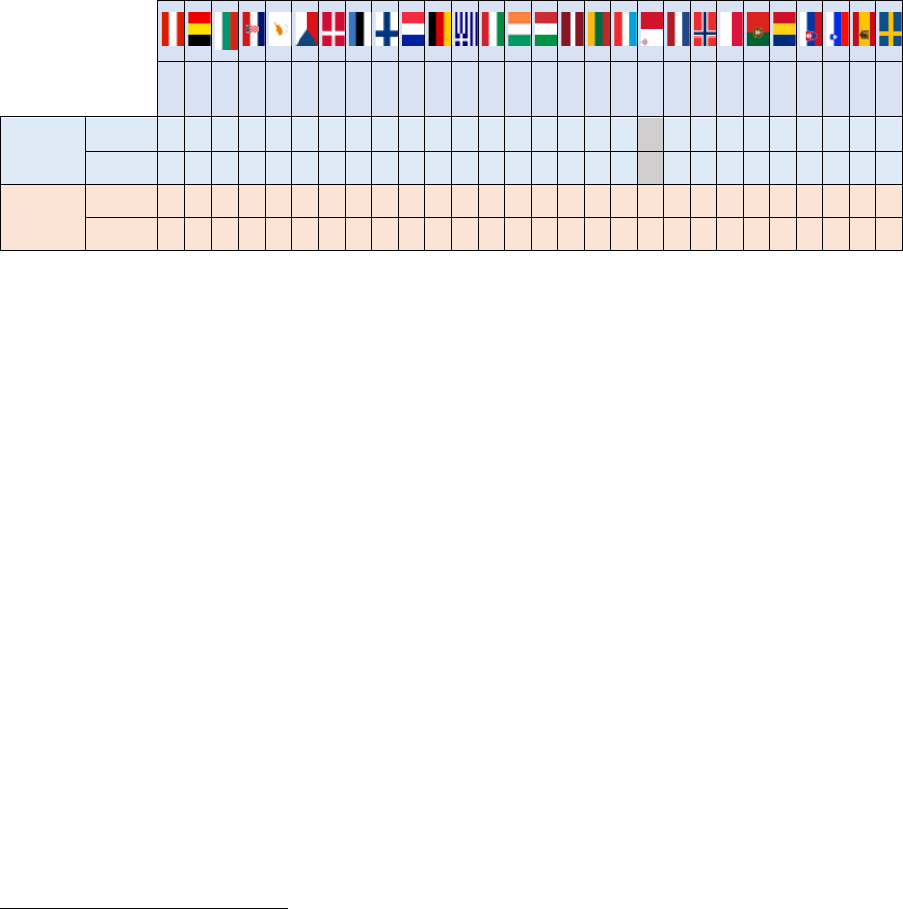
ACER REPORT ON TRANSMISSION AND DISTRIBUTION TARIFF METHODOLOGIES IN EUROPE
43
necessary by the network operator.
104
Connection charges, if well designed, can provide
incentives to the network users to connect at points of the network which are more cost efficient
from a system point of view.
105
However, the effectiveness of this kind of one-off cost signals
regarding the location of production was not assessed by this Report.
(148) As shown in Figure 16 below, out of 28 countries in 10 countries (AT, BG, CY, CZ, FR, IE, IT,
LU, NL, PL), only shallow connection charges are applied, while in 5 countries (HR, NO, PT, ES,
SE) only deep connection charges are applied for all network users in both transmission and
distribution. In the remaining 13 countries (BE, DK, EE, FI, DE, GR, HU, LV, LT, MT, RO, SK, SI)
both shallow and deep charges are applied, with 11 countries employing both forms at distribution
level, but only 2 countries using both forms at transmission level.
Figure 16: Application of shallow and deep connection charges
AT
BE
BG
HR
CY
CZ
DK
EE
FI
FR
DE
GR
HU
IE
IT
LV
LT
LU
MT
NL
NO
PL
PT
RO
SK
SI
ES
SE
Transmis
sion
Shallow
●
●
●
●
●
●
●
●
●
●
●
●
●
●
●
●
●
●
Deep
●
●
●
●
●
●
●
●
●
●
●
Distributi
on
Shallow
●
●
●
●
●
●
●
●
●
●
●
●
●
●
●
●
●
●
●
●
●
●
Deep
●
●
●
●
●
●
●
●
●
●
●
●
●
●
●
●
●
Note: MT has no transmission network.
(149) On the one hand, the need for locational signals and increasing cost-reflectivity are amongst the
most frequently reported reasons for the application of deep connection charges. On the other
hand, countries which apply shallow connection charges appear to value its simplicity, more
certainty and visibility for the network users.
(150) As described above in about half of the countries both shallow and deep charges apply, while in
the other half either only shallow charges or only deep charges apply. The choice to apply
different charges for different network levels, may consider that at higher voltage levels the
connection costs are typically higher and vary more across the network users compared to lower
voltage levels, which increases the need for more differentiated connection charges to ensure
cost-reflective charges. At the same time, at lower voltage levels the number of network users is
significantly higher, which may create too high administrative burden for the system operators to
calculate connection charges individually. For some other countries (DK, GR, RO) it was reported
that the shallow (or “semi-deep”) charges apply for consumers, while the deep charges for
producers.
(151) Connection charges may be levied based on actual costs of the connection, which is calculated
on a case-by-case basis, or they may be pre-determined (with or without differentiation among
various network user groups). The pre-determined charge may be a standard lump sum charge
per connection, a unit charge per connected capacity, a unit charge per distance and/or it may
104
See the definition of ‘connection charges’ in paragraph (23) for a more detailed distinction between deep and shallow
connection charges.
105
It should be added that connection charges may play a small role in the decision of choosing a location for a new production
or load due to several other constraints and factors to consider (e.g. availability of natural resources, permitting, taxes, logistics,
etc.).

ACER REPORT ON TRANSMISSION AND DISTRIBUTION TARIFF METHODOLOGIES IN EUROPE
44
be set based on other criteria (i.e. cost driver). The charging basis may be different for different
network user groups, voltage levels, geographic locations, firmness of the connection and/or
based on other dimensions. It is also possible that part of the charge is based on actual costs of
connection, while the other part is pre-determined by specific criteria.
(152) In transmission, the connection charges are typically based on actual costs, while in distribution
the pre-determined connection charges are more common. The most frequently used dimensions
to set those pre-determined (standardised) charges are the voltage level, the connected capacity
and distance to the network.
(153) In some instances, while the same type of connection charges (i.e. shallow or deep) apply for all
or most network users in a jurisdiction, there are certain differences among depending on whether
the network user only injects into the network, only withdraws from the network or does both (HR,
FI, GR, IT, LT, PL, PT):
In Croatia, the producers always pay actual connection costs, while consumers pay a "unit
fee per capacity (Euro/MW)", if the actual cost of the connection works is less than 1.2 times
the cost of the unit fee
106
;
In Finland, costs are charged differently between production and consumption in relation to
the capacity reservation charge. Concerning production, the average benefits relating to
connecting production to the network must be considered;
In Greece, producers' deep connection charges are based on actual cost of realised network
expansion and reinforcement due to the connection (i.e. charged for 100% of the cost of
works required), but under certain conditions they are entitled to receive refunds in case
new producers are connected to network infrastructure they have paid for. In contrast, the
calculation of the consumers’ deep connection charge considers unit costs related to
expansion and reinforcement as well as parameters associated with the capacity of the
needed connection. The Greek NRA explained that this methodology brings efficiency and
objectivity in addressing the issue of “free-riding” (especially in densely populated areas)
and the issue of a relatively high number of customer connection requests;
In Italy, connection charges in distribution for passive users and active users are different.
For passive users the connection charge is always based on a standardised formula,
different from the one for active users. For active users either a standardised or a specific
estimate by the DSO is used;
In Lithuania, the distribution-connected prosumers (i.e. consuming and producing at the
same place) are charged 50% of the connection costs.
In Poland, several differences were reported between consumers, producers and storage
facilities (e.g. different discounts for RES or co-generation plants, micro-installations,
storage facilities and EV charging infrastructure);
In Portugal, the value of the network reinforcement component varies between users
withdrawing from and injecting into the transmission and distribution network since the
106
HR: In Croatia the new methodology for determining the fee for connecting to the electricity grid entered into force in July
2022. The price for a particular voltage level is the same regardless of the customer category.

ACER REPORT ON TRANSMISSION AND DISTRIBUTION TARIFF METHODOLOGIES IN EUROPE
45
expected benefits of the new connections are considered when calculating the
reinforcement component.
(154) Exemptions, discounts or other different treatments within a network user group are described
from Section 5.2 to Section 5.5 below. For more information reported by NRAs on connection
charges at transmission and distribution level, please refer to Table 26 and Table 27 in Annex 1.
Variation of connection charges by voltage, location and firmness of the connection:
(155) In several countries, the connection charge is based on individually estimated or actual costs, so
that the level of charges ultimately depends on the situation in the grid and provides an incentive
(location signal) to connect to the grid, where the grid is strong (i.e. the accompanying connection
costs are low)
107
. In some other instances the tariff methodologies may provide cost signals via
variation of the connection charge (or one of its components) on certain basis, such as voltage
level, geographical location or firmness of the connection.
(156) In this Report, the variation of the connection charges does not account for the user-type based
differentiations (e.g. producers vs. consumer or RES vs. non-RES producers), which are
described later in this chapter, neither for differences across different DSO areas in the same
country.
(157) Variations of connection charges based on the voltage level are implemented in most countries,
more frequently at the distribution level, than at the transmission level, which is largely explained
by the fact that in transmission, typically individual actual costs are charged to the network users
at transmission level, while pre-defined unit charges are more often applied in distribution.
(158) As pointed out by some NRAs, the variations per voltage level often reflect the actual differences
between costs of connection. In this regard, either a lower unit value or discount applies at lower
voltage levels compared to higher voltage levels (LV) or the structure of the connection charge
is different based on the voltage levels (HU, LU, PL):
In Latvia, if the connection voltage does not exceed 400V and some other predefined
criteria are met
108
, only 50% of the connection charge has to be paid by the particular user;
in Hungary, Luxembourg and Poland the users connecting to high-voltage and/or medium-
voltage level often pay actual costs of the connection, while lower levels are charged lump
sum or based on predefined parameters (capacity, distance).
(159) Variation of the connection charge by geographical location has been identified for more than
third of the assessed countries (AT, BE’s Wallonia region, CY, CZ, DK, FI, FR, GR, LT, LU, NO,
PL), in most instances only when connecting to the distribution network. Some of these variations
concern rural vs. urban areas or differences in the terrain (e.g. offshore, coastal, etc.).
109
(160) A flexible or interruptible connection agreement is considered in this Report as a contract where
the network user is not guaranteed with a firm connection over the entire period. Less than one
third of the countries reported that they apply such contracts and out of them, only four reported
107
In these instances, the variation of the connection charge is implicit and not considered in the statistics of this section.
108
LV: I.e. if the nominal current of the input protection appliance of the connection does not exceed 100A.
109
Other countries reported that the payment for the connection is higher depending on the necessary connection distance.
However, these are not considered as a variation based on location, as long as the same unit price (e.g. EUR/m) is applied.

ACER REPORT ON TRANSMISSION AND DISTRIBUTION TARIFF METHODOLOGIES IN EUROPE
46
specific rules for setting the network charge for connected users with this type of contracts. They
either provide discounts on connection charges (FR, DK), discounts on use-of-network charges
(BE’s Wallonia region
110
) or the terms and discounts are subject to mutual agreement by TSO
and network user (NO).
Cost sharing problem of connection:
(161) In case of deep connection charges, a cost sharing problem may arise. Extending and reinforcing
the network to serve one particular network user may lead to high connection costs for that user,
but may ultimately reduce the connection costs to connect further users in the future.
(162) As shown in Table 29 in Annex 1, in order to address this problem more than a third of the
assessed countries (FR, GR, HU, IE, LV, LT, NO, PT, RO, SI, ES, SE) apply certain refunds or
cost sharing methods between network users. In the remaining countries, such problem was not
identified by the regulator
111
, it is under consideration
112
or no information was provided.
Split of connection charge revenues between DSOs:
(163) Only four NRAs (DK, FR, HU, NO) reported any explicit transfer or split of some of the connection
charge revenues between DSOs, while in other countries such transfer is done implicitly through
tariff equalisation between DSOs (LU) or not applied.
(164) The description of the applied revenues transfers among DSOs regarding connection charges
are provided in Table 30 in Annex 1.
5.2. Producers
(165) In all countries the producers are subject to connection charges, both the producers connected
to the transmission and the producers connected to the distribution network.
(166) The connection charges for producers, while more often deep than the ones for consumers, are
still in most instances shallow and based on individual actual costs.
(167) Two countries (PT, FI) reported that expected benefits of the new connections are taken into
account when setting the connection charges:
In Portugal, while deep connection charges apply to the users, in the calculation of the
producers’ charges for the reinforcement of the existing network (both transmission and
distribution), the expected benefits of the new connections (e.g. anticipated tariffs paid by
the user, reduction of technical losses or impact on the market price formation) are
considered.
In Finland, the benefits related to distribution-connected production should be considered
when calculating the capacity reservation charge, which is one of the components of the
connection charge.
110
BE (WAL): injection tariff for flexible capacity is 0 EUR/kVA.
111
BE (BRU): This is not considered an issue in Belgium’s Brussels region, since due to the urban environment the network is
widely available and extensions are only short.
112
BE (FLA): The issues may lead to applying shallow connection charges.

ACER REPORT ON TRANSMISSION AND DISTRIBUTION TARIFF METHODOLOGIES IN EUROPE
47
(168) In six countries (AT, BG
113
, FI, FR, HU, PL), connection charges for RES producers are different
compared to other producers, either due to exemptions, dedicated discounts or caps:
In Austria, small RES producers (below 20 kW) connected to the transmission grid are
exempted from the connection charge, while RES producers connected to the distribution
grid receive a discount;
In Finland, small producers are exempted from the capacity reservation charge, which is
one of the components of the connection charge;
In France, onshore RES producers benefit from a reduced connection charge, while offshore
producers are exempted. Moreover, both in case of connection to the transmission and
distribution networks, RES producers are subject to specific criteria, i.e. their network
reinforcement costs are shared with future network users;
In Hungary, a discount in connection charges applies to RES producers (hydro, wind, solar,
geothermal) – without a capacity threshold - in both transmission and distribution.
In Poland, the RES producers with installed capacity below 5 MW and co-generation
facilities with installed capacity below 1 MW are entitled to a charge reduction (50% of the
connection CAPEX). The connection of micro-installations is free of charge.
(169) As regards particular approaches, three NRAs (DK
114
, FR, SE) reported some tariff related
measures in place that are meant to facilitate offshore production development (one of them with
the highest share of offshore RES within the current generation mix and two of them are among
the three countries with the highest planned offshore production capacity, in MW):
In France, offshore RES producers are not subject to connection charges.
In Sweden, the transmission grid is planned to be extended offshore, which will result in a
reduction of connection charges paid by producers.
(170) In the other countries no specific or different schemes (e.g. conceptual or structural difference)
for offshore RES producers’ connection charges have been reported by the NRAs. However, in
some of these countries (e.g. BE, IT) the resulting connection charge values of the same
methodology still differ between offshore and onshore, reflecting for example the supplementary
costs for network upgrades, which are likely higher for offshore RES.
(171) Figure 17 below shows for each coastal Member State the offshore capacity planned by 2030
and 2050 in accordance with the National Energy and Climate Plans (NECP) based on NRAs’
responses. For more information please refer to Table 28 in Annex 1.
113
BG: The difference has not been specified by the NRA.
114
For Denmark, the difference of offshore RES via-a-vis onshore RES producers has not been specified by the NRA.
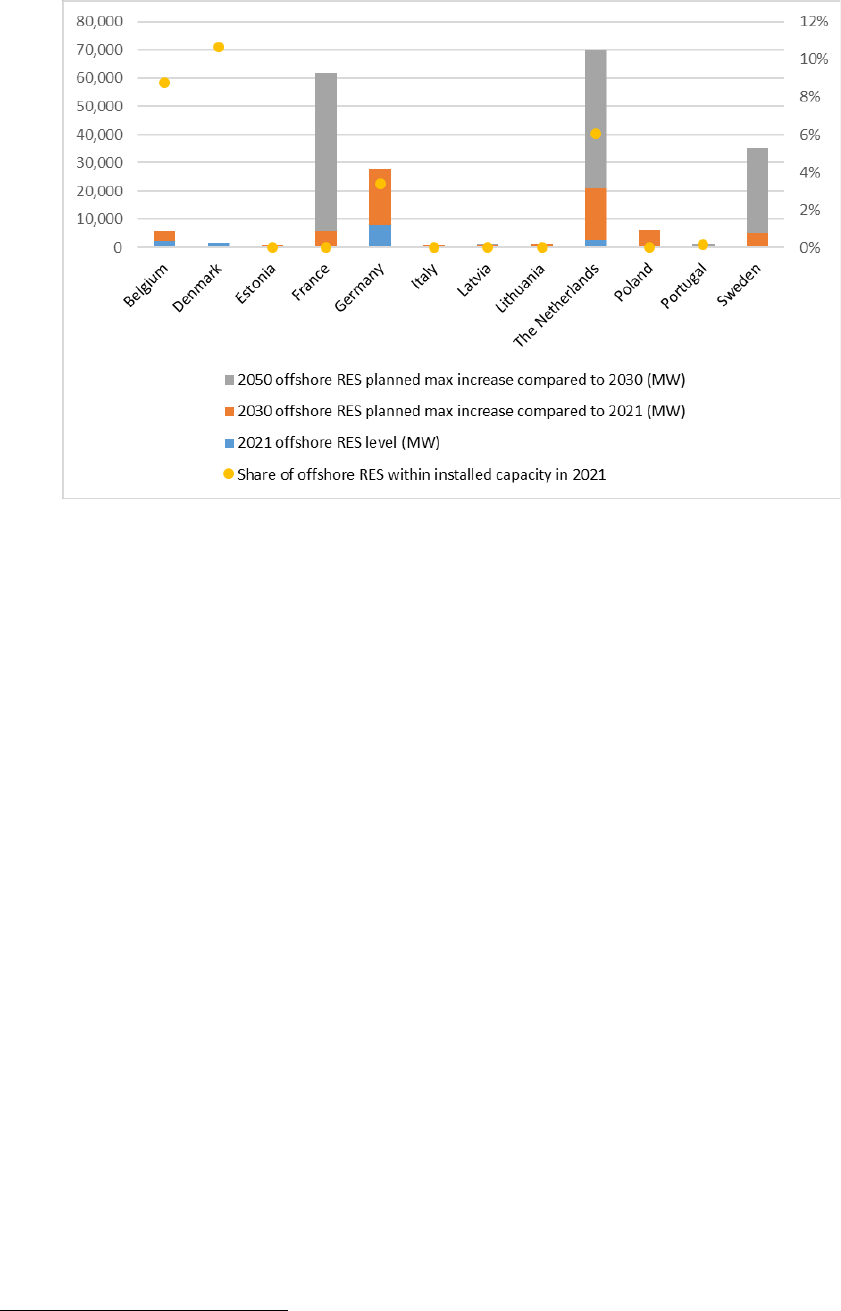
ACER REPORT ON TRANSMISSION AND DISTRIBUTION TARIFF METHODOLOGIES IN EUROPE
48
Figure 17: Planned offshore RES capacity by 2030 and 2050 (in MW)
Note: Share of offshore renewable energy (RES) capacity within installed capacity in 2021 is based on data from
ENTSO-E transparency platform. The other data has been provided by NRAs. In some instances (BE, FR, SE) the
NRAs indicated some range of planned offshore capacity. In these cases the upper range has been taken into
account for the figure.
5.3. Consumers
(172) In all countries, consumers are subject to connection charges, both the consumers connected to
the transmission network and the consumers connected to the distribution network.
(173) In most instances, the connection charges for consumers (similar to other network users) are
shallow and based on individual actual costs. However, for distribution-connected consumers it
is more frequent to have pre-determined lump sum or standardised unit charges than for other
network users.
(174) Specific rules apply for some groups of consumers in several countries (AT, CY, HU, LV, LT, MT,
PL, SI), mainly regarding the charges of connection to the distribution grid
115
. These countries
either apply specific elements in the calculation of charges that are meant to reflect particularities
of consumers’ connections, or provide exemptions or discounts:
In Austria, power-to-gas facilities with a minimum capacity of 1 MW are exempted from
connection charges in transmission, if their grid connection quotient does not exceed certain
threshold.
In Cyprus, the NRA reported differences of setting the connection charges in distribution,
based on the type of customers (i.e. households vs. industrial customers).
115
Differences between distribution connection charges vs. transmission connection charges are not accounted for this finding.

ACER REPORT ON TRANSMISSION AND DISTRIBUTION TARIFF METHODOLOGIES IN EUROPE
49
In Hungary, some discounts are designed for consumers’ connections to distribution network
(connection to LV up to 32A capacity as well as overhead line (MV, LV) and underground
cable (MV, LV) up to certain length is free of charge). Additionally, the connection charges
for consumers are calculated differently, depending on voltage level (i.e. HV consumers pay
70% of the actual total costs, while consumers at lower voltage levels are charged based on
capacity and distance).
In Latvia, smaller network users, i.e. those with a nominal current of the input protection
appliance of the connection that does not exceed 100A and a connection voltage that does
not exceed 400V, are charged with 50% of the connection costs.
In Lithuania, the distribution-connected household and non-household consumers (who only
withdraw from the grid), pay 50% of the connection costs. Vulnerable users pay 20% of the
connection costs.
In Malta, up to 60 Amps, connections are charged a lump sum charge. Over 60 Amps, the
charges for connections extended from an existing substation are based on the actual cost
and capacity.
In Poland, EV charging points (parks) are charged with a discounted connection charge,
which equals to 6.25% of connection CAPEX (for other consumers it is 25% of the
connection CAPEX).
In Slovenia, in distribution, specific connection charges in (EUR/kW) are calculated for
different types of users (commercial vs. households) depending on the voltage level of the
connection.
116
5.4. Storage facilities
(175) Four NRAs (AT, LT, PL, SK) confirmed the establishment of specific regimes concerning
connection charges for (at least some) storage facilities:
In Austria, there is a specific exemption for PHES at the transmission level, i.e. these users
do not pay a connection charge.
117
In Poland, the non-PHES storage facilities are subject to specific rules. The connection
charge for storage is reduced by 50% of the connection CAPEX for both transmission and
distribution.
In Lithuania, a 50% discount for distribution-connected storage units is applied if they only
withdraw from the network to recharge, but they do not inject (i.e. the stored electricity is
used at the same location). Otherwise, the storage facilities pay 100% of the costs.
In Slovakia, distribution-connected storage facilities which inject the electricity only for the
purposes of providing the ancillary services do not pay connection costs.
116
SI: HV - consumption at 110 kV, MV-consumption at 35, 20 and 10 kV, LV - commercial above 43 kW, LV - commercial up to
43 kW, LV - household
117
AT: In contrast, at distribution level, they are not exempted from connection charges, but they are entitled to a discounted use
of network charge.
ACER REPORT ON TRANSMISSION AND DISTRIBUTION TARIFF METHODOLOGIES IN EUROPE
50
5.5. Prosumers
(176) In the vast majority of the countries prosumers are subject to the same connection charges as
consumers. Only two NRAs (IT, LT) confirmed the establishment of specific regimes concerning
connection charges for (at least some) prosumers:
In Italy, small RES/Combined heat and power (CHP) generators are charged based on a
standardized formula while for the others a specific estimate by the DSO is needed.
In Lithuania, prosumers are subject to a 50% discount on the connection charge.
5.6. Conclusions and recommendations
(177) Responses provided by NRAs show a great variety in the national practices regarding connection
charges. The differences between the approaches concern the depth of the connection charge
(i.e. shallow or deep), cost drivers (i.e. based on predetermined unit values or individual actual
costs) as well as the exemptions or discounts applied to certain network-user groups.
(178) In 10 out of 28 countries, only shallow connection charges are applied for all network users in
both transmission and distribution. In comparison, only 5 out 28 countries apply only deep
connection charges across all networks. In the remaining 13 countries a combination of deep and
shallow connection charges are applied, with 11 countries employing both forms at distribution
level, but only 2 countries using both forms at transmission level.
(179) In transmission, the connection charges are typically based on actual costs, while in distribution
the pre-determined connection charges are more common. The most frequently used dimensions
to set those predetermined charges are the voltage level, the connected capacity and distance.
(180) In case of deep connection charges, a problem may arise that reinforcing the network to serve
one particular network user leads to high connection costs for that user, which may ultimately
reduce the connection costs to connect further users in the future. In order to address this
problem in some countries certain refunds or cost-sharing methods between network users are
applied.
(181) NRAs’ responses indicate limited interest in offering interruptible or flexible connection
agreements to the network users, i.e. less than one third of the countries apply these, and out of
them, only four provide discounts to the connection or use-of-network charges.
(182) ACER recommends that:
a) Where deep connection charges apply and the connection of a network user serves future
network users, it should be considered whether cost-sharing is necessary to ensure a fair and
non-discriminatory treatment of the network users, also taking into account the administrative
costs for the TSOs and DSOs.
b) Within the next 4 years, NRAs should evaluate the advantages and disadvantages of enabling
interruptible or flexible connection agreements, having due regard of the countries that already
worked on this topic.
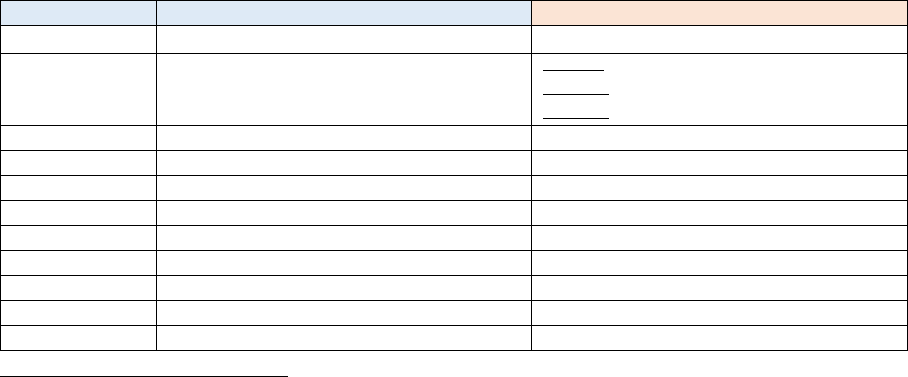
ACER REPORT ON TRANSMISSION AND DISTRIBUTION TARIFF METHODOLOGIES IN EUROPE
51
6. Reactive energy charges
(183) One of the effects of the energy transition and the related increase of renewable generation is
the reduced availability of traditional thermal generation units and capabilities to control network
voltages.
(184) As a consequence, in many EU Member States
118
, the costs related to controlling network
voltages and managing reactive power increased over the last years.
(185) Regarding network users, voltage control and reactive power management mainly consists of:
setting requirements for the reactive – or voltage control - behaviour of network users
(reactive exchange limits)
setting charges for the reactive energy exchanged by network users outside the allowed
behaviour (reactive energy exchanges)
(186) This chapter provides a review of current practices about reactive requirements and reactive
charging. For more information on reactive energy charges, please refer to Table 31 and Table
32 in Annex 1.
6.1. General overview
(187) As shown in Figure 18 below, charges for reactive energy at the distribution level are applied in
19 out of 27 countries (around 70%).
(188) At transmission level, charges for reactive energy are applied in 14 out of 26 countries (slightly
above half).
(189) When reactive energy charging is in place, in most instances (around 75% for distribution, around
65% for transmission), it is applied to both reactive injections and reactive withdrawals.
Figure 18: Application of charges for reactive energy
Country
Transmission charges
Distribution charges
Austria
Yes, reactive withdrawals only
No
Belgium
Yes, reactive withdrawals and injections
Brussels: reactive withdrawals only
Flanders: reactive withdrawals and injections
Wallonia: reactive withdrawals only
Bulgaria
Yes, reactive withdrawals and injections
No data
Croatia
Yes, reactive withdrawals only
Yes, reactive withdrawals and injections
Cyprus
No
No
Czech Republic
No
Yes, reactive withdrawals and injections
Denmark
No
No
Estonia
No
Yes, reactive withdrawals and injections
Finland
No
Yes, reactive withdrawals and injections
France
Yes, reactive withdrawals and injections
Yes, reactive withdrawals and injections
Germany
No
No
118
Belgium (due to RES increase), France (slight cost increase, due to increasing impacts of high voltage constraints), Greece
(due to the decrease of thermal generation), Hungary, Italy (due to the decrease of thermal generation and changes in the reactive
exchange patterns of network users), Lithuania, the Netherlands (due to increases in volumes and in prices), Slovakia (due to
the change of consumption features), Spain (significant increase due to RES integration).

ACER REPORT ON TRANSMISSION AND DISTRIBUTION TARIFF METHODOLOGIES IN EUROPE
52
Country
Transmission charges
Distribution charges
Greece
No
No
Hungary
No
Yes, reactive withdrawals and injections
Ireland
No data
Yes, reactive withdrawals only
Italy
Yes, reactive withdrawals only until March 2023
Yes, reactive withdrawals only until March 2023
Latvia
Yes, reactive withdrawals and injections
Yes, reactive withdrawals and injections
Lithuania
Yes, reactive withdrawals and injections
Yes, reactive withdrawals and injections
Luxembourg
No
No
Malta
No
The Netherlands
No
Yes, reactive withdrawals and injections
Norway
Yes, reactive withdrawals only
Yes, reactive withdrawals only
Poland
Yes, reactive withdrawals and injections
Yes, reactive withdrawals and injections
Portugal
Yes, reactive withdrawals and injections
Yes, reactive withdrawals and injections
Romania
Yes, reactive withdrawals and injections
Yes, reactive withdrawals and injections
Slovak Republic
No
Yes, reactive withdrawals and injections
Slovenia
119
Yes, reactive withdrawals and injections
Yes, reactive withdrawals and injections
Spain
Yes, reactive withdrawals only
Yes, reactive withdrawals only
Sweden
No
No
Total
9 reactive withdrawals and injections
5 reactive withdrawals only
12 no charges
14 (+1 BE region) - withdrawals and injections
4 (+2 BE regions) - reactive withdrawals only
8 no charges
(190) The reasons for setting reactive energy charges are significantly differentiated across the
countries which apply them.
(191) Taking into account that in a few instances no clear answer was provided (including because of
lacking information as the rules were set many years ago), the reasons of reactive charging at
distribution level include the following ones:
Costs of compensating devices / contribution to costs for compensating reactive exchanges
(BE’s Flanders region, FR, IE, LT, LV)
Impact of reactive exchanges on network losses (CZ, IT, LV, RO, SK)
Impact of reactive exchanges on use of infrastructures (IT, NL)
Incentive to correct users’ behaviour (HR, SI)
6.2. Structure of reactive energy charges
(192) When applied, reactive charges are addressed to distribution-connected consumers (in all
countries but Finland), to distribution-connected producers (slightly above half of the countries),
to distribution-connected storage (slightly below half of the countries), and to distribution-
connected small DSO connection points (one instance, Italy).
(193) At transmission level, reactive charges are addressed to transmission-connected consumers (all
14 countries), to DSO connection points (in 9 countries out of 14: AT, BE, BG, FR, IT, LV, NO,
119
SI: Mandatory only for users above 43 kW.

ACER REPORT ON TRANSMISSION AND DISTRIBUTION TARIFF METHODOLOGIES IN EUROPE
53
PT, SI) and, to a smaller extent, to transmission-connected producers (in 6 countries: AT, BE,
FR, LV, RO, SI) and to transmission-connected storage (in 4 countries: AT, BE, FR, SI).
(194) In several countries, capacity thresholds or the voltage connection level are used to differentiate
consumers who are subject to reactive energy charges from those who are not subject to them
(the smallest consumers and/or the consumers connected to low voltage networks: consumers
at 43 kW and below in Slovenia, households below 30 kW in Romania, all households in Italy, 15
kW and below in Italy and Spain are not subject to reactive charges. Low voltage connected
users are not subject to reactive charges in Belgium’s Brussels region and in Czech Republic,
usually not in Portugal).
(195) In the vast majority of countries, charges are set on the basis of reactive energy exchanges,
which exceed the thresholds for withdrawals and, where applicable, for injections.
(196) The limit power factor (or limit percentage) varies across countries. For reactive energy
withdrawals, the most frequently used value (in six countries, half of those which provided such
information) is a power factor of 0.95, which is broadly equivalent to a 33% percentage of active
power. In two countries, there is a narrower limit, while in four countries the limit is less stringent.
(197) For reactive energy injections, the most frequently used requirement (in nine countries and one
jurisdiction, out of 13 countries which provided such information) is not allowing any reactive
injection (= power factor 1). In three countries and one jurisdiction, a power factor limit different
than 1 is used.
6.3. Values and differentiation of reactive energy charges
(198) The actual value of reactive charges for distribution-connected users varies across countries, as
described in Table 32 in Annex 1.
(199) In about half of the countries, the same values apply to reactive withdrawals and reactive
injections (when charged), while in the other half of the occurrences, the charges are
differentiated, without a common pattern in these five countries.
(200) With very few exceptions, the values of reactive charges applied to distribution-connected users
range from 3 Euro/Mvarh to 20 Euro/Mvarh. The actual values of reactive charges for
transmission-connected users show a similar behaviour. In four instances (HR, LV, RO, ES) the
reactive charges for transmission-connected users are the same (or very similar
120
to those)
applied to distribution-connected users. In other four instances (IT, LT, SI, PT), the reactive
charges for transmission-connected users are different.
(201) In a few countries, the reactive charges are differentiated by voltage level (higher values for lower
voltages, lower values for users connected to high voltage grids where such grids are defined as
distribution grids).
(202) In three countries (IT, PT, ES), the charges for reactive withdrawals are applied step-wise, with
increasing values when the reactive exchanges are significantly higher than the first threshold.
120
In two instances, a very small difference in values communicated to ACER may be due to exchange rate used in converting
to Euro/Mvarh.

ACER REPORT ON TRANSMISSION AND DISTRIBUTION TARIFF METHODOLOGIES IN EUROPE
54
(203) In the same three countries (IT, PT, ES) and in the Brussels jurisdiction of Belgium, the charges
are differentiated between day time and night time (or between peak and mid-peak vs. off-peak
hours), where reactive withdrawals are charged in the peak- and mid- conditions, while not
relevant and critical in off-peak hours
121
.
6.4. Conclusions and recommendations
(204) In many EU Member States, according to information reported by NRAs, the costs related to
controlling network voltages and managing reactive power increased over the last years.
(205) Charges for reactive energy at the distribution level are applied in around 70% of the surveyed
countries. At transmission level, charges for reactive energy are applied in slightly above half of
the countries.
(206) Out of these, all countries apply charges to the reactive energy withdrawals and the large majority
of countries apply charge to reactive energy injections.
(207) In the vast majority of countries, charges are set on the basis of reactive-energy exchanges which
exceed the threshold for withdrawals and, where applicable, the thresholds for injections.
(208) At both transmission and distribution level, reactive charges are applied to consumers, while the
application to transmission-connected DSO points, to producers and to storage varies across the
countries.
(209) The most frequently used thresholds across the countries are:
Power factor of 0.95 or, in broadly equivalent terms, reactive power withdrawal at 33% of
the active power;
No reactive injection allowed.
(210) With very few exceptions, the values of reactive charges range from 3 Euro/Mvarh to 20
Euro/Mvarh.
(211) In a few countries, the charges are differentiated by voltage level, by time-of-use and are
constructed by step-wise increases of the unitary value, where reactive withdrawals increase.
(212) ACER recommends that:
a) NRAs should monitor the evolution of costs due to voltage control and reactive energy
management, including due to risks of overvoltages in off-peak hours.
b) Where such costs are deemed significant by the NRA, the NRA should consider a review of
reactive energy charging, taking into account the principles in Article 18 of the Electricity
Regulation, in particular, cost reflectivity, transparency, consideration of network security and
support to system efficiency through signals to network users.
121
However, the information reported here may be partly incomplete due to some missing information regarding time-
differentiation.

ACER REPORT ON TRANSMISSION AND DISTRIBUTION TARIFF METHODOLOGIES IN EUROPE
55
c) When evaluating possible adaptations of its regulatory framework, each NRA should in
particular take into account the frequently used thresholds for reactive charging and the
frequently used values across Europe.
7. Time-of-use network charges
(213) Time-of-use network tariffs (or tariff time elements) mean charges for network service(s) that vary
according to when the service is used (e.g. by peak/off-peak, season, month,
weekdays/weekends, hour). They could take different forms depending on the basis used for
charging
122
:
Energy-based: EUR/kWh in period t,
Power-based: EUR/kW in period t.
(214) Time-of-use charges give signals to network users to use the network less in some periods in the
day, week or year and use it more in other periods. The charges should be higher in periods
when network utilisation is closer to the technical limits and lower otherwise. For instance, the
use of the network could be discouraged in the time window when the local or system peak is
forecasted to occur. The coincident and rising use of the network during peak periods may induce
the need for network reinforcement, thus justifying a higher network charge. Use of the network
in off-peak periods, on the other hand, does not lead to additional costs and thus a lower charge
is justified to encourage the use in those time windows.
(215) Time-of-use charges can be static, where the different time periods are defined well in advance
(e.g. when setting the tariff methodology or annually) or they can be more dynamic, for example,
where the peak period is set only at short notice, close to real time
123
(e.g. few days in advance
or within the day), which better reflects the actual system conditions, but becomes less
predictable for the network user.
7.1. General overview
(216) As shown in Figure 19 below
124
, 21 out of 28 countries
125
(i.e. 75%) apply time-of-use tariffs,
while 7 countries (BG, CY
126
, DE, HU, IT, LU, RO) do not apply them. Static time-of-use signals
are more frequently used at distribution level compared to transmission level: all 21 countries
apply them in distribution tariffs, while only 10 (i.e. BE, HR, EE, FI, FR, GR, IE, PT, SI, ES) apply
them also in transmission tariffs.
(217) Dynamic tariffs or market based elements in network charging have been reported for three
countries (FR, NO, SE)
127
:
122
In theory, time-of-use lump sum charges could be also imagined, but ACER did not find them applied in practice in any country
according to the reported information.
123
In alternative, the peak period applicable to network users may also be determined on an ex-post basis, after observing the
real load pattern.
124
For more details please refer to Tables 33-36 in Annex 1.
125
AT, BE, HR, CZ, DK, EE, FI, FR, GR, IE, LV, LT, MT, NL, NO, PL, PT, SK, SI, ES, SE
126
CY: The network charge has currently no time differentiation (i.e. the same rates apply), but the framework allows for time
differentiation by seasons, day of week and peak/off-peak within a day. Time periods: June - September (High Demand Season)
vs. October - May; weekdays vs. weekends and holidays; daily peak (June - September: 16:00 - 23:00; October - May: 09:00 -
23:00).
127
PT: In early 2019, in Portugal the NRA also approved rules for a pilot project with dynamic pricing elements. However, there
were not enough candidates for the pilot to be carried out.
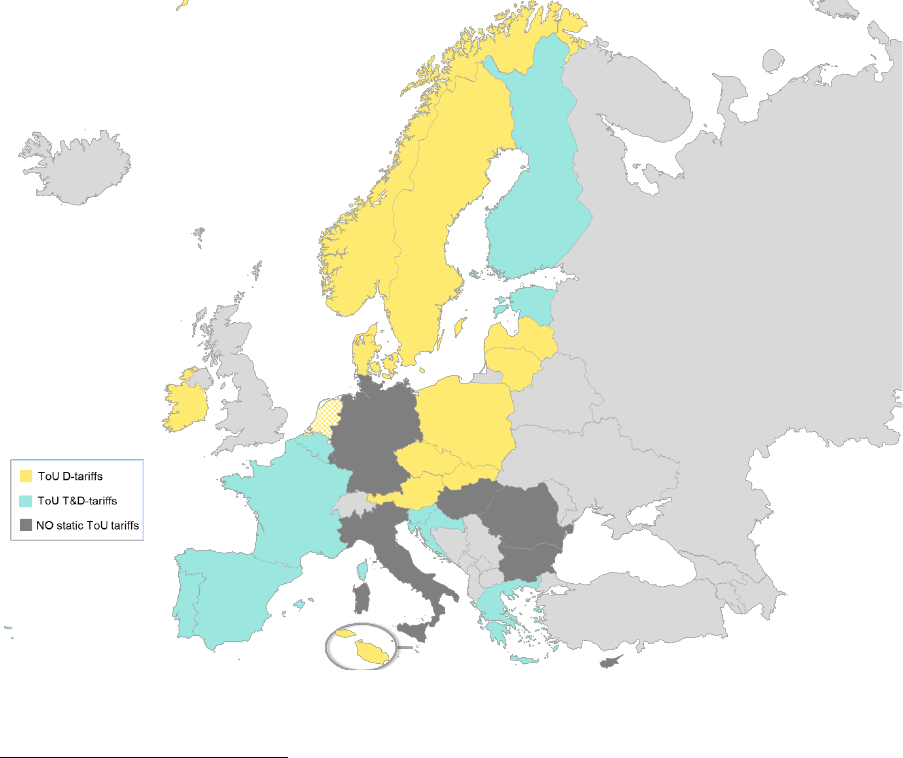
ACER REPORT ON TRANSMISSION AND DISTRIBUTION TARIFF METHODOLOGIES IN EUROPE
56
In France, at medium voltage level, a "mobile" peak period option is available for the network
users. This option is composed of a given number of "peak days" that are not set long
beforehand. Network users who have subscribed to this option only know the day before
when a peak period (with the highest price) will happen, depending on TSO's forecast, in
order to match as close as possible with actual congestions.
In Norway, a network tariff element is set based on marginal loss in each node. The price of
marginal losses is the marginal loss percentages for each node multiplied with the actual
spot-price for the area in the actual hour. Marginal loss percentages in each node are
calculated each week differentiated day/night and weekend. This tarification aims at
providing a more correct price signal in each node reflecting the changes in overall losses
in the system by a marginal input/output.
In Sweden, the transmission tariff has a time-differentiated energy-based component, which
is based on actual hourly market prices per bidding zone.
(218) Time-of-use charges are typically embedded in the withdrawal charges, and they are hardly used
for injection charges
128
.
Figure 19: Application of static time-of-use (ToU) network charges in Europe (2022)
Note: In the Netherlands (NL), time-of-use distribution tariffs apply, but to a very limited extent
129
.
128
In Sweden, there are some DSOs which have tariff elements that are subject to some kind of time-of-use differentiation.
129
NL: Network users that are connected to LV, non-households and connection is larger than 3x80A, but not large enough to
get MV connection. This category of users is very limited in numbers.
ACER REPORT ON TRANSMISSION AND DISTRIBUTION TARIFF METHODOLOGIES IN EUROPE
57
(219) The main reason for applying time-of-use signals is cost-reflectiveness of the network charges.
The considerations on why not to apply time-of-use includes doubts about the efficiency and
effectiveness of the time signals or incapability of meters.
(220) In the countries where time-of-use signals are not applied in the transmission and/or the
distribution tariff structures the following reasons have been reported:
Disputing the effectiveness of time-of-use signals in network charges: energy prices by the
market provide better signals for the network and the signal embedded in the network tariff
may contradict the signal embedded in the energy price. There are also doubts concerning
the willingness of network users to react to time-of-use in the network tariff;
Disputing the efficiency of time-of-use signals in network charges: the complexity of
implementing time-of-use network tariffs may not outweigh the benefits;
Technical reasons: low penetration of smart metering systems (or other capable meters able
to record time-of-use, e.g. different time bands).
(221) In order to have a better understanding of the effectiveness and efficiency of time-of-use signals
before implementing or revoking time-of-use signals, NRAs may carry out pilot studies, impact
assessment studies or consultations, forecasting or evaluating the (likely) effects of the time
signals on the use of the network and on the network costs.
(222) Out of those countries where time-of-use is applied in the transmission tariffs three reported that
study work (beyond stakeholder consultations), was carried out before the implementation:
In Greece, the new methodology was tested and compared to the previous one using recent
demand data.
In Portugal, a pilot project was carried out between June 2018 and May 2019 to study
changes to the time-of-use structure of the network tariff for large consumers (VHV, HV and
MV). The new time-of-use that resulted from the project is characterized by a stronger signal
in the peak periods and time-of-use schedules with regional differentiation (separating the
grid into three areas). Based on the CBA, a net benefit of 50 million euros was estimated to
take place over a time horizon of 23 years, because of a demand response of 2.2%. The
main drivers of the net benefit were the reduction or postponement of network investments.
In Spain, an impact assessment was carried out before implementing the most recent tariff
structures.
(223) Out of those countries where time-of-use is applied in the distribution tariffs, about half reported
that study work was carried out before the first implementation or when making a change to the
time-of-use framework:
In Belgium’s Wallonia region, simulations of impact and fairness considering typical
customers were run.
In the Czech Republic an impact assessment was carried out before the introduction of time-
of-use and the results indicated that with time-of-use tariff reduce congestion.

ACER REPORT ON TRANSMISSION AND DISTRIBUTION TARIFF METHODOLOGIES IN EUROPE
58
In France, an impact assessment was carried out before the introduction or the latest change
of the time-of-use tariffs.
In Greece, no dedicated time-of-use assessment per se, but the new tariff methodology was
tested and compared to the previous one, using the same (recent) demand data set, to
determine potential changes in allocated costs per user category, e.g. recovering more costs
from peak users (and capacity-based charges). It was shown that an increase in allocated
costs to MV customers and LV domestic customers could be expected (under the new tariff
methodology).
In Ireland, the annual tariff-setting process includes an assessment of the change in all tariffs
on a number of different types of customers
130
.
In Portugal, a pilot project was carried out, as explained in more detail for the case of the
transmission tariffs above.
In Slovakia, there were analyses carried out by the particular DSOs.
In Slovenia, a study was carried out in 2000, prior to the introduction of the current tariff
methodology. A new tariff methodology is under consideration for introduction in 2024,
introducing 2 seasons and 5 time blocks for both transmission and distribution costs. As part
of the impact assessment, the current methodology was evaluated.
In Spain, in the elaboration of the latest tariff methodology
131
, an impact assessment was
carried out. The impact assessment included the economic impact of different tariffs.
(224) Of those Member States that do not apply time-of-use in the transmission tariffs and/or
distribution tariffs, few reported any kind of pilot or impact assessment to support that decision:
In Cyprus, a capacity demand study analysed the hourly production cost. An economic and
network impact assessment based on different periods and rates revealed the tariff
structures
132
In Italy, time-of-use was applied before the regulatory period 2008-2011 and the decision to
remove the time-of-use element was taken ‘in support of the opening of the market’.
In Poland, the TSO had carried out a preliminary analysis in 2014 to introduce time-
differentiated transmission tariffs, but it did not happen since the study found that the
metering of DSO customers was not compatible with the TSO time-differentiated tariffs.
7.2. Design of time-of-use network charges
(225) The main design feature of (static) time-of-use tariffs are the periods to which different (unit prices
of) energy-based or power-based charges apply.
130
IE: this impact assessment is included in the NRA’s final Decision Paper.
131
ES: Circular 3/2020
132
CY: Currently the network charge has no time differentiation (i.e. the same rates apply), but the framework is in place.
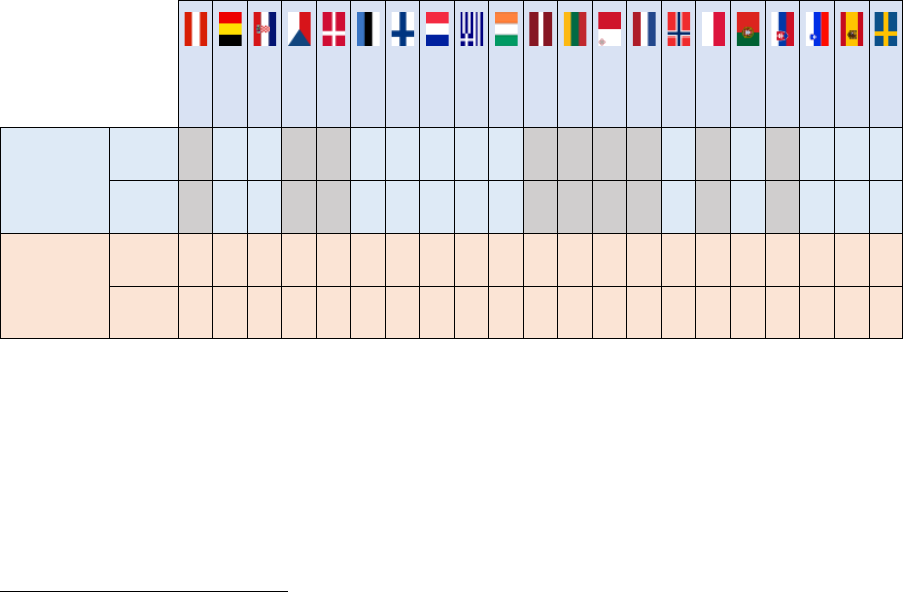
ACER REPORT ON TRANSMISSION AND DISTRIBUTION TARIFF METHODOLOGIES IN EUROPE
59
(226) As shown in Figure 20 below, time-of-use signals are more often embedded in the energy-based
component than in the power-based component.
(227) Regarding transmission tariffs, ACER notes that five countries (i.e. HR, FR, PT, SI, ES) apply the
time-of-use signals for both components, while two countries (i.e. EE, FI) apply the time-of-use
signals only for the energy-based component. In two countries (BE
133
, GR) only the power-based
component is time differentiated (and not the energy-based).
(228) In the case of distribution tariffs, about 40% of the concerned countries (i.e. HR, CZ, DK, FI, FR,
PT, SI, ES, SE) apply the time-of-signals for both components and more than half (i.e. AT, BE
134
,
EE, IE, LV, LT, MT, NL, NO, PL, SK) apply the time-of-use signals only for the energy-based
component. One country (GR) applies the time-of-use signals only for the power-based
component (the charge is based on demand during pre-defined system peak periods).
(229) The fact that power-based charges are less frequently time-differentiated compared to energy-
based charges, may be partially explained by a potentially more complex design of power-based
ToU tariffs, different metering capabilities for measuring energy and capacity or due to the fact
that cost recovery still heavily relies on energy-based charges, at least in distribution.
Figure 20: Tariff basis embedding the time-of-use signal
AT
BE
135
HR
CZ
DK
EE
FI
136
FR
GR
IE
LV
LT
MT
NL
NO
PL
PT
SK
SI
137
ES
SE
Transmission
Energy
based
●
●
●
●
●
●
●
●
●
Power
based
●
●
●
●
●
●
●
Distribution
Energy
based
●
●
●
●
●
●
●
●
●
●
●
●
●
●
●
●
●
●
●
●
Power
based
●
●
●
●
●
●
●
●
●
●
Note: No ToU tariffs apply in BG, CY
138
, DE, HU, IT, LU, RO. Grey dots in case of NO and SE signal the market
based elements.
(230) Typically, time-of-use tariffs are static and vary within-day by defining (blocks of) hours during
which a higher or lower unit price is charged for using the network. It is also common to distinguish
weekend days (and sometimes holidays) from other days of the week, with a lower tariff applying
133
BE: The ToU signal is only used to lower the synchronous peak of the network. Lowering the synchronous peak reduces the
need for new lines (transportation capacity). Decision to build new lines is related to power peak more than energy flows. ToU on
Annual peak offers the long term signal needed to have an impact on users’ decisions.
134
BE: In Flanders region, until end 2022, there was day/night differentiation in the energy charge. From 2023, only the 'exclusive
night' tariff for accumulation heating (energy-based) remains as a sort of ToU. In Brussels region, the peak tariff (€/kW measured)
is only applicable to the peak time of use (weekdays 7am - 10pm) for MV.
135
Idem.
136
FI: ToU variation typically apply in the energy-based withdrawal charge, but there are DSOs that apply time elements in the
power-based withdrawal charge.
137
SI: For network users up to 43 kW, the time signal is in the energy charge. For network users above to 43 kW, the time signal
is also embedded in the capacity charge calculated based on monthly average of three highest peaks in peak periods
138
CY: Currently the network charge has no time differentiation (i.e. the same rates apply), but the framework is in place.
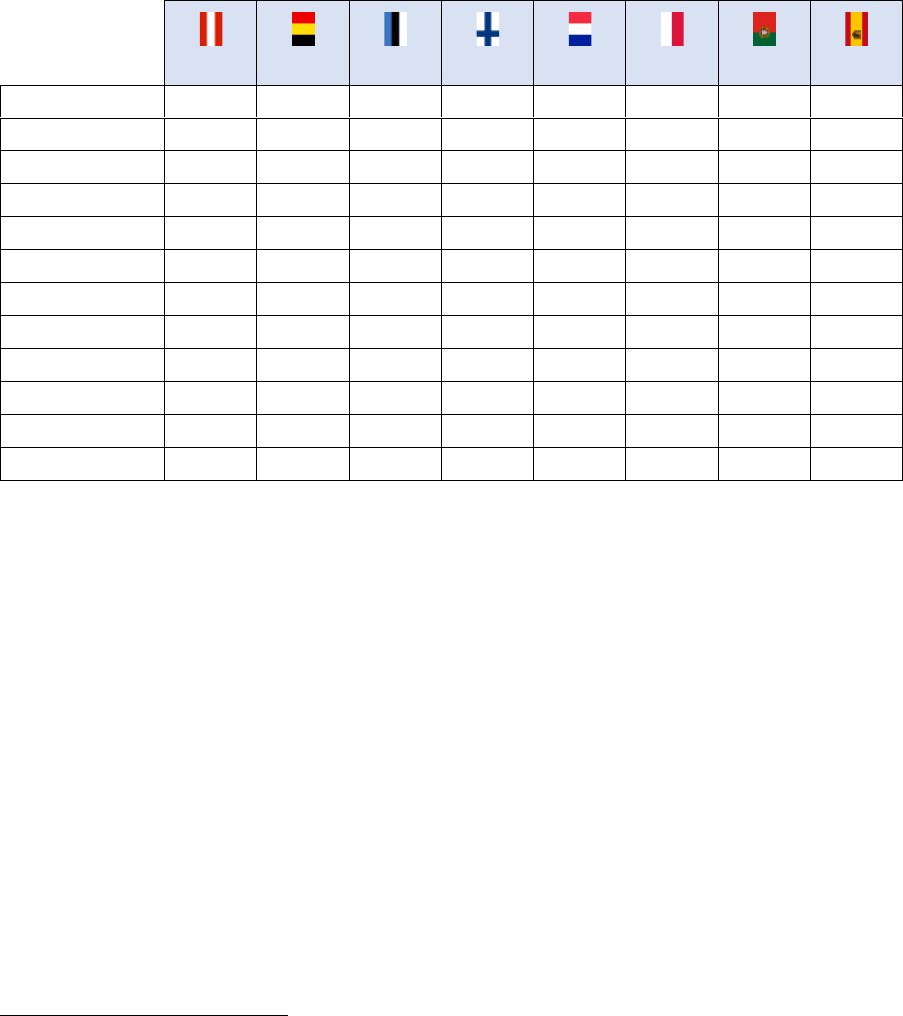
ACER REPORT ON TRANSMISSION AND DISTRIBUTION TARIFF METHODOLOGIES IN EUROPE
60
to all hours of non-working days. Further variation is introduced in some Member States through
a seasonal element that makes unit charges vary with the months.
(231) Seasonal signals are in most instances divided into 2 seasons, but in some countries the
seasonal differentiation is higher (i.e. in France there are 3 seasonal periods and in Spain there
are 4 seasonal periods). As shown in Figure 21 below, the peak months are typically from
November till end March.
Figure 21: Peak months in the time-of-use schedule for transmission and distribution tariffs
AT
BE
EE
FI
FR
PL
PT
ES
January
◑
◐
◐
●
●
◑
●
●
February
◑
◐
◐
●
●
◑
●
●
March
◑
◐
◐
◑
●
◑
●
April
◐
May
June
July
●
August
September
October
◑
◑
November
◑
◐
◐
◑
●
◑
●
December
◑
◐
◐
●
●
◑
●
●
◐ Transmission-only, ◑ Distribution-only, ● Transmission and Distribution
Note: For the purpose of the Figure, specific conditions apply to FR
139
, PT
140
and ES
141
.
(232) As shown in Figure 22 and Figure 23 below, the within-day signals are in most instances divided
into 2 periods (day/night or peak/off-peak period), where the periods may range from a few hours
up to several hours. However, ACER also observes that more than 2 periods within the day are
defined in five countries (FR, IE, PT, LV, ES) (cf. Table 33 and Table 35 in Annex 1)
139
FR: For the transmission tariff in FR, a super peak period exists from 1 December - 28 February.
140
PT: The peak months in PT correspond to winter time (from last Sunday in October until last Sunday in March).
141
ES: The year is classified into four seasons (high, medium-high, medium and low) and months included in each season vary
between the peninsula and the islands. The results presented in the table for ES correspond to the high season for the peninsula.
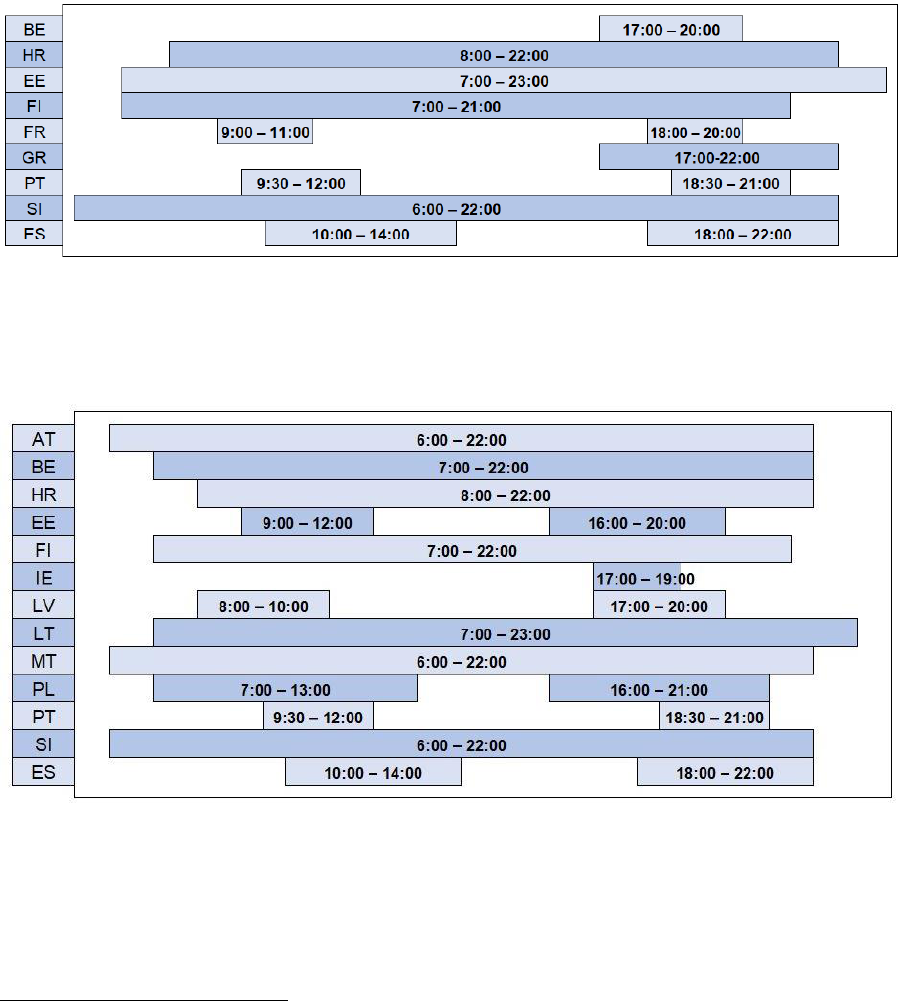
ACER REPORT ON TRANSMISSION AND DISTRIBUTION TARIFF METHODOLOGIES IN EUROPE
61
Figure 22: Peak hours in the time-of-use schedule for transmission tariffs
Note: For the purpose of the Figure, specific conditions apply to FR
142
, GR
143
, PT
144
, ES
145
Figure 23: Peak hours in the time-of-use schedule for distribution tariffs
Note: Specific conditions apply to BE
146
, EE
147
, PL
148
, PT
149
, ES
150
(233) The time-of-use signals may be the same to all network users who are subject to ToU tariffs, or
they may also differentiate among the network users. For example, different signals apply for
households and non-households or different signals apply depending on the contracted capacity
142
FR the peak hours in the table correspond to the super peak period.
143
GR: the peak hours in the table refer to the winter schedule, applicable from October till March. During the summer schedule,
the peak hours are between 19:00-23:00.
144
PT: The peak periods indicated in the figure correspond to the peak hours during winter time applied in the weekly schedule
available to all customer groups. The peak periods are different during summer time and can be different in the time schedules
available for specific voltage levels.
145
ES: The peak hours in the table correspond to the peak schedule, applicable to the energy-based charges for households
(period P1 of the three-period schedule). The time schedule is the one for the peninsula.
146
BE: the peak hours in the table correspond to the regions of Brussels and Flanders (for the Wallonia region times are defined
by the DSO and may vary within the geographical area of the DSO).
147
EE: the peak hours in the table correspond to the winter schedule, applicable from November till March, on working days.
148
PL: the peak hours in the table correspond to the winter schedule, during the summer schedule the peak hours are between
19:00-22:00.
149
PT: The peak periods indicated in the figure correspond to the peak hours during winter time applied in the weekly schedule
available to all customer groups. The peak periods are different during summer time and can be different in the time schedules
available for specific voltage levels.
150
For ES: the peak hours in the table correspond to the peak schedule, applicable to the energy-based charges for households
(period P1 of the three-period schedule). The time schedule is the one for the peninsula.

ACER REPORT ON TRANSMISSION AND DISTRIBUTION TARIFF METHODOLOGIES IN EUROPE
62
level. The time-of-use tariffs may also differ within the country due to some DSO’s freedom to
choose their own time-of-use signals and/or because the network users are allowed to choose
from different time-of-use tariff options offered to them. There are also some instances where the
time of use signals vary by location of the network user (e.g. the peak period starts or ends at a
different time).
7.3. Mandatory vs optional use of time-of-use signals
(234) The application of time-of-use signals requires a meter that is capable of recording network use
in different time bands. The availability of time-of-use capable meters varies: the roll-out of smart
metering systems (or smart meters) is advancing at a different pace across the countries and
network users may have the right to request or to refuse a time-of-use capable meter/smart
meter.
(235) As shown in Figure 24 below, network users who connect at the transmission level typically
dispose of meters capable of recording time-of-use bands (i.e. all countries where the information
was available to the NRA, reported use by more than 90% of the users). As shown in Figure 25,
the respective meters typically use 15 or 60 minutes intervals.
(236) In all countries where time-of-use is applied, it is mandatory for the network users, who are
withdrawing from the network, thus these users cannot opt out of being exposed to the time
signal. In a limited number of cases, specific network users are excluded from time-of-use tariffs:
In Estonia and in France, network users connected to the 330 kV and 400 kV networks,
respectively, are not exposed to time-of-use because peak use is considered not to be the main
cost driver of the network at those voltage levels in those countries and the time-of-use signal
would not be cost-reflective.
(237) Network users connected at the distribution level do not always have meters capable of recording
time-of-use bands (i.e. most countries where the information was available to the NRA, reported
use by more than 90%, but about third of them reported use by less than 50%, in some instances
even below 10%). The lack of such meters is the main reason to often exclude some distribution-
connected users from exposure to the time-of-use signals.
(238) Even in those instances where ToU capable meters are or could be available to them, the
distribution-connected network users can decide in most instances whether to have ToU tariffs
or not (i.e. BE’s Brussels and Flanders regions, HR, CZ, FR, LV, LT, MT, PL, PT, SK, SI). In
other countries or jurisdictions (AT, BE’s Wallonia region, HR
151
, EE, GR, NL, PL
152
, PT
153
, SI
154
,
ES), time-of-use signals are mandatory to at least some of the distribution-connected network
users. For two countries (FI, SE), where distribution tariffs include a time-of-use element, the
respective NRAs could not provide information on the mandatory versus optional nature of the
time-of-use element. For more information on optional and mandatory use of ToU tariffs please
refer to Table 37 and Table 38 in Annex 1.
151
HR: mandatory for users with a capacity rating of 20kW and higher, less than 10% of users.
152
PL: mandatory for users in areas where only a time-of-use tariff group is offered, less than 10% of users.
153
PT: mandatory for HV customers, MV customers and LV customers with contracted power above 41.4 kVA, less than 10% of
users
154
SI: mandatory for users with a capacity rating above 43kW. The share of users subject to mandatory time-of-use was not
reported.

ACER REPORT ON TRANSMISSION AND DISTRIBUTION TARIFF METHODOLOGIES IN EUROPE
63
Figure 24: Share of the network users with meters capable of measuring withdrawal from the grid for different time-
of-use
Below 10%
At least
10%, but
below 25%
At least
25%, but
below 50%
At least
50%, but
below 75%
At least
75%, but
below 90%
At least 90%
or all
Information
is not
available
Transmission-
connected
network users
HR, CY, DK,
EE, FR, GR,
IT, LV, LU,
NO, PT, RO,
SK, SI, ES
AT, BE, BG,
EE, FI, DE,
HU, LT, NL,
PL, SE
Distribution-
connected
network users
GR, HU, LT
CY, RO
AT, BE
(BRU), IE,
SK
PT, CZ, BE
(WAL)
BE (FLA)
HR
155
, DK,
EE, FI, FR,
IT, LV, LU,
MT, NL, NO,
PL, SI, ES,
SE
DE
Figure 25: Default metering intervals applied to withdrawal in Europe
15 minutes
30 minutes
60 minutes
1 minute
Transmission-
connected users
AT, BE, BG, HR, CZ,
DE, GR, HU, IT, LU,
NL, PL, PT, RO, SK,
SI, ES
CY, LV
BG, EE, FI, LT, NO,
PL, SK, SI, ES, SE
FR
Distribution-
connected users
AT, BE, HR, CZ, DE,
HU, IT, LT, LU, MT,
NL, PL, PT, RO, SK,
SI, ES
CY, IE, LV
DK, EE, FI, GR, LT,
NO, PL, SK, SI, ES,
SE
Note: Information is missing for BG, IE (transmission)
7.4. Other measures to provide time signals to the network users
(239) There exist a number of alternative or complement measures (to time-of-use network tariffs) to
offer time signals to network users. Examples of such incentives include discounts for shifted
load or a less varying withdrawal profile, options to contract different power levels at different
times or direct/remote control by a system operator of the consumption by activating specific
appliances (e.g. heat boilers), as shown in Table 39 in Annex 1.
(240) Local flexibility mechanisms (including “local markets”, i.e. where service providers offer products
for system operation services) aim to mitigate local congestion in a cost-efficient way (e.g. instead
of network reinforcement or expansion) and as such they may also form an alternative or
complement to using time-of-use network tariffs for charging network utilisation. Local markets
have been implemented in less than a third of the Member States (BE
156
, CZ, FR, IT, LU, NL,
PT, SE). Legislative work or effective implementation of such markets is ongoing in an additional
third of the Member States (AT, DK, HU, IE, LT, PL, SK, SI). In the remaining Member States the
local markets are not implemented yet or the information on the status of such markets was not
provided. For more information, please refer to Table 40 in Annex 1.
155
HR: Only a small number of users still have old meters without time-of-use capabilities (i.e. only a single tariff is available).
The vast majority of those users are households.
156
BE: flexibility markets have been implemented only in Flanders region, while the implementation is ongoing in Wallonia region.
No plans for implementation of the flexibility market has been reported for Brussels region.

ACER REPORT ON TRANSMISSION AND DISTRIBUTION TARIFF METHODOLOGIES IN EUROPE
64
7.5. Effective impacts of the usage of time-of-use network charges
(241) While the purpose of time-of-use signals is to reflect the long-run marginal costs of using the
network, NRAs may follow-up on the effectiveness and efficiency of the signals through
evaluation studies.
Studies at transmission level
(242) Evaluation studies covering time-of-use at transmission system level have been carried out in
five Member States (BE, FR, PT, SI, ES), who all apply time-of-use at the transmission level.
In Belgium
157
, the study found that time-of-use reduced the system or local peak load
compared to a counterfactual assuming no time signals. A slight reduction of transmission-
connected clients’ evening peak was observed, but overall, including distribution-connected
load, no significant change in the peak was observed;
In France
158
, the study found that time-of-use reduced the system or local peak load
compared to a counterfactual assuming no time signals. It reduced the network development
cost and it reduced the loss of load cost (security of supply);
In Portugal
159
, a pilot project was carried out between June 2018 and May 2019 to study
changes to the time-of-use structure of the network tariff for large consumers (VHV, HV and
MV). The new time-of-use scheme that resulted from the project is characterised by a
stronger signal in the peak periods and time-of-use schedules with regional differentiation
(separating the grid into 3 areas). Based on the cost-benefit analysis, a net benefit of 50
million euros was estimated to take place over a time horizon of 23 years, as a result of a
demand response of 2.2% during the super peak period (approximately the 300 hours per
year of highest usage). The main driver of the net benefit was the reduction or postponement
of network investments. When analysing customers connected at VHV (transmission) and
HV (distribution), it appears that peak consumption of these network users is spread out to
avoid prices of peak periods. Especially in VHV, the lowest consumption level is observed
in the peak period, contributing to a reduction in the system peak.
In Slovenia
160
, the study found that time-of-use reduced the system or local peak load
compared to a counterfactual assuming no time signals and it reduced the network
development cost. The goal of the new methodology is to send efficient economic signals to
network customers, charges are allocated to predefined time-blocks according to the
contribution of each time-block to the system load peak, so that network usage on off-peak
periods is more incentivized than on-peak periods, through time-block energy and capacity
charges. The identification of time-blocks is carried out by the classification of hours of the
whole system load curve under electrical seasons, labour or no labour days, and different
intra-day blocks.
157
BE: Study on provision of electricity to large consumers in Belgium in 2020 (9 December 2021),
https://www.creg.be/sites/default/files/assets/Publications/Studies/F2285FR.pdf
158
FR: Internal study, not publicly available.
159
PT: Information is available in Annexes 1-4 of the Public Consultation n. 101:
https://www.erse.pt/atividade/consultas-publicas/consulta-p%C3%BAblica-n-%C2%BA-101/abertura/ (in Portugal)
160
SI:
https://www.agen-rs.si/documents/10926/283610/EIMVComillas_DisseminationImpactAnalysis_20211201_v0.6.pdf/1596b195-
daa7-47c9-9db2-0ca18d9aa410

ACER REPORT ON TRANSMISSION AND DISTRIBUTION TARIFF METHODOLOGIES IN EUROPE
65
In Spain, in the elaboration of the latest tariff methodology
161
an impact assessment was
done and a public consultation was carried out. The impact assessment included the
economic impact for the different tariffs
162
.
(243) In the five remaining Member States where time-of-use is applied at transmission level (HR, EE,
FI, ES, GR), no evaluation study had been reported.
(244) In the remaining Member States, time-of-use is not applied at the transmission level and
correspondingly no evaluation activities were reported for those countries.
Studies at distribution level
(245) Studies to evaluate the effectiveness and efficiency of time-of-use at the distribution level have
been carried out in five Member States (BE’s Brussels region, NL, PT, SI, ES).
In Belgium (Brussels region)
163
, time-of-use reduced the system or local peak load
compared to a counterfactual assuming no time signals and it reduced the network
development cost. The existing HI/LO tariff has not been investigated since it was inherited.
In the Netherlands
164
, in 2019, an impact assessment was set out to analyse possible
alternatives for more dynamic network tariffs. Although dynamic network tariffs offers a big
advantage in terms of encouraging system flexibility, the complexity and uncertainty about
the effectiveness are disadvantages that led to the conclusion that in practice encouraging
local flexibility via competitive procurement seems a better way forward. No specific studies
to evaluate the effectiveness of (static) time-of-use have been performed.
In Portugal
165
, a pilot project was carried out, as explained in more detail in the case for the
transmission tariffs above.
In Slovenia
166
, a study was carried out, as explained in more detail in the case for the
transmission tariffs above.
In Spain, in the elaboration of the latest tariff methodology an impact assessment was done
and a public consultation was carried out as explained in more detail in the case for the
transmission tariffs above.
(246) Three Member States reported ongoing evaluation or impact assessment studies:
In Belgium, in Flanders region the DSO will carry out an assessment by 2023. No further
information is available yet. In Wallonia region, the regional regulator (CWaPE) is studying
the elaboration of a new incentive-based tariff structure for the period 2024-2028.
161
Circular 3/2020
162
ES: Cuadro 46 (p.105) 02-Memoria-de-la-Circular-3_2020-peajes-TD-eléctricos-WEB.pdf
163
BE (BRU): A study was realised in 2017, regarding the ideal capacity based tariff. It might be updated before the start of the
next tariff methodology (2025);
164
NL: https://www.acm.nl/sites/default/files/documents/2019-11/d-cision-ecorys-flexibilisering-nettarieven-23-mei-2019.pdf
165
PT: Information in Portuguese available in annexes 1 to 4 of the Public Consultation n. 101:
https://www.erse.pt/atividade/consultas-publicas/consulta-p%C3%BAblica-n-%C2%BA-101/abertura/
166
SI:
https://www.agen-rs.si/documents/10926/283610/EIMVComillas_DisseminationImpactAnalysis_20211201_v0.6.pdf/1596b195-
daa7-47c9-9db2-0ca18d9aa410
ACER REPORT ON TRANSMISSION AND DISTRIBUTION TARIFF METHODOLOGIES IN EUROPE
66
In Hungary (not applying ToU), a study was conducted last year prior to possibly introducing
time-of-use. The examination continues this year.
In Luxembourg (not applying ToU), currently assessing the different options for a future proof
tariff method. Time of use tariffs are one of the possible options. As the impact assessment
is not finished and talks with DSOs are ongoing, no decisions have been taken yet in this
respect.
7.6. Conclusions and recommendations
(247) Costs might vary according to time or other reasons. To reflect the cost variation according to
time, a cost-reflective tariff could be time-differentiated. The use of time signals can be a useful
tool for reducing network peak-load, which is the main driver for network investments, thereby
promoting network efficiency. Not all users may be capable to react to such signals to the same
extent.
(248) More advanced differentiation in time and location through dynamic tariffs could further increase
tariffs’ cost-reflectivity and incentivise efficient network behaviour. However, such differentiation
is rather complex, requires a sufficient level of automation, and may therefore contradict other
principles, such as simplicity, predictability and transparency, if not implemented effectively.
(249) Time-of-use signals are more frequently used at distribution level compared to transmission level:
21 out of 28 countries (i.e. 75%) apply static time-of-use charges in distribution tariffs and about
one-third in transmission tariffs. Time-of-use charge is not applied at all in 7 countries.
(250) Time-of-use charges are typically embedded in the withdrawal charges. However, in a few
countries they are also applied to injection charges. Time-of-use differentiation exists mainly in
energy-based charges.
(251) The main reason for applying time-of-use signals is cost-reflectiveness of the network charges.
The arguments presented by NRAs on why not to apply time-of-use tariffs includes the lack of
efficiency and effectiveness of their time signals on users’ behaviours or incapability of meters.
(252) Typically, time-of-use tariffs are static and vary within day by defining (blocks of) hours during
which a higher or lower unit price is charged for using the network. It is also common to distinguish
weekend days (and sometimes holidays) from other days of the week, with a lower tariff applying
to all hours of non-working days. Further variation is introduced in some Member States through
a seasonal element that makes unit charges vary with the months. Time-of-use tariffs with some
dynamic elements have been reported only by two countries.
(253) In several distribution systems, in which time-of-use signals are applied, network users have the
possibility to opt-in or opt-out to being exposed to the time signals.
(254) Alternatives or complements to time-of-use tariffs exist, but NRAs have not indicated a wide use
of such instruments so far. Examples are discounts for shifted load or a less-varying withdrawal
profile, options to contract different power levels at different times and the remote control of
devices by a system operator to restrict their use in system peak periods. Local markets for
system operation services are another tool to deal with peak loads and congestion and have
been implemented so far in less than a third of the Member States. Yet, it is too early to report
on the experiences given the nascent nature of such markets.
ACER REPORT ON TRANSMISSION AND DISTRIBUTION TARIFF METHODOLOGIES IN EUROPE
67
(255) With regard to the effectiveness and efficiency of time-of-use tariffs as a signalling instrument,
pilots and impact studies before introducing or revoking time-of-use tariffs have been performed
in about half of the countries. Evaluation studies of the effectiveness of time-of-use schemes (e.g.
how time-of-use has changed the behaviour of network users and the corresponding network
costs) have been performed in less than third of the concerned Member States.
(256) With the introduction of vast intermittent generation and increasing demand from e.g. electric
heating and electric vehicles and with the increasing capability of some network users to respond
to time signals, time-of-use might gain a higher importance than in the past as a tool to facilitate
cost-reflectivity of the network tariffs and/or to promote load shifting in order to mitigate the need
for network investments.
(257) While care should be given to the potentially conflicting time signals between dynamic wholesale
energy prices and static time-of-use network tariffs, the latter can still be a useful tool for reducing
system peak load, which is a main driver for network investments, thereby promoting network
efficiency. The effectiveness of such signals depends on the network user’s ability to adapt its
behaviour to such signals and the difference between the time-of-use tariffs.
(258) ACER recommends that:
a) Where time-of-use tariffs are introduced to reflect system costs, the network tariff structures
and the signals should be mandatory for all network users, without a possibility to opt-out from
them. Optionality may be temporarily reasonable when transitioning to a new time-of-use
schedule in order to limit tariff impacts on network users.
b) Where no time-of-use signals are applied, NRAs should investigate the need from cost-
efficiency and/or network congestion point of view to introduce such signals. Such studies
should aim to identify which elements (that may be local) affect the effectiveness and efficiency
of time-of-use signals in order to justify a decision to apply such signals or not in a given context.
Where time-of-use is already applied, the NRAs should evaluate their impacts and the
appropriateness of the applied time bands and tariff signals on a regular basis.
c) NRAs should improve data collection and analysis regarding individual network users, subject
to the rollout of fit-for-time-of-use meters (i.e. meters which are capable to record time-of-use,
e.g. different time bands), in order to support the design of more cost-reflective time-of-use
tariffs, by also allowing higher granularity in their temporal differentiation.
d) Where fit-for-time-of-use meters are largely missing, as a temporary solution, NRAs may design
network tariffs by determining for different user profiles their contribution to the system peak.
8. Other network tariff topics
8.1. NRAs role in tariff setting
(259) Based on current legal frameworks, in 24 Member States and in Norway the NRA sets or approve
both the transmission and distribution tariff methodologies. In Finland and Sweden, each system
operator individually defines the tariff methodology based on the legal framework, but it is not
subject to NRA’s approval. In Germany, the relevant Ministry has defined the tariff methodologies
so far, while the NRA has supervised the compliance of the tariff calculation by the system
ACER REPORT ON TRANSMISSION AND DISTRIBUTION TARIFF METHODOLOGIES IN EUROPE
68
operators with the law and the tariff methodology. According to the ECJ ruling (C-718/18) on 2
September 2021, the network tariff methodology cannot be set in ordinances, but it will have to
be under the German NRA’s jurisdiction (more information on NRAs’ role in tariff setting is
available in Table 41 and Table 42 in Annex 1).
(260) ACER finds that in the Member States with multiple TSOs the same transmission tariff
methodology is applied to each of them, while in the vast majority of the assessed countries the
same distribution tariff methodology is applied to all DSOs. In the remaining Member States,
either the NRA sets different methodologies for different DSOs or the DSOs are free to choose
their own tariff structure under certain legal restrictions.
(261) ACER welcomes that the German NRA will be granted powers to decide on network tariffs. ACER
considers that in order to ensure that tariffs are set efficiently in line with network users’ interest,
NRAs should have sufficient leverage and regulatory control over the tariff as stipulated by Article
59(1)(a) of Directive (EU) 2019/944.
(262) ACER is of the view that there are compelling reasons to have NRAs directly set the transmission
and distribution tariff methodology or as a strict minimum approve the methodology proposed by
the respective system operators, in order to ensure that methodologies are free from any political
or commercial interest which is ensured by NRAs’ independence legally guaranteed by the EU
law. ACER recalls that NRAs shall be ensured adequate human and financial resources for this
purpose, pursuant to Article 57(5) of Directive (EU) 2019/944.
8.2. Tariff setting principles
(263) Electricity tariff design, in general, aims at recovering the costs incurred by a monopolistic system
operator while stimulating efficiency. Cost recovery is the core objective of tariffs. Efficiency
mainly relates to cost-reflectivity and the economic signals sent to the network users for optimal
use of the network. Since charges related to transmission and distribution networks can constitute
a considerable cost to the network users, the way how tariffs are set can provide additional
incentives (additional to those given by energy pricing) to the network users to adapt their
behaviour. The effectiveness of such signals depends on factors such as the type of network
user and the share of the network costs in the final bill.
(264) Other principles, such as non-discrimination, transparency, non-distortion, simplicity, stability,
predictability and sustainability, are usually also pursued. In practice, it is difficult to meet all of
the principles simultaneously and fully. Therefore, when setting tariffs, the NRAs aim to achieve
a balance between these principles or they have to make certain trade-offs according to priorities,
while also respecting legal boundaries.
8.3. Frequency of tariff methodologies revision and of tariff value updates
(265) In most Member States, the transmission and distribution tariff methodologies are set for a fixed
period of time, typically 4 or 5 years, while the tariff values are updated on a yearly basis (more
information on frequency of tariff methodology revision and tariff values update is available in
Table 41 and Table 42 in Annex 1).
(266) The past review of national tariff frameworks showed that stability appeared as key objective
being pursued when setting network tariffs so far. Further, electricity networks are in general
ACER REPORT ON TRANSMISSION AND DISTRIBUTION TARIFF METHODOLOGIES IN EUROPE
69
evolving in Europe due to vast volumes of intermittent energy sources, innovative technologies,
such as smart grids, distributed generation, penetration of electric vehicles (EV), demand side
response, etc., which justifies longer tariff methodology periods which allow sufficient time to the
regulated entities and network users to adapt and reduce uncertainties regarding their investment
decision.
(267) ACER is of the view that setting the tariff methodology for multiple years can allow appropriate
analysis of the possible actions to be taken and more effective stakeholder involvement and can
support tariff predictability and save resource, while a regular update of the tariff values can result
in better cost-reflectivity, and, if done based on a pre-defined methodology, preserve a level of
predictability.
(268) ACER recommends that:
a) The length of the tariff methodology period is at least 4 years, considering users’ calls for stable
tariff methodologies, the need for discussion and consultation before setting the methodology
and the time needed to implement new tariff structures (the set methodology may be subject to
revision before, due to rapid changes in the sector, if duly justified); and
b) Network tariff values are updated at least yearly based on variations of the drivers defined by
the tariff methodology and on inflation.
c) A multi-year transition process should be preferred when changes in the tariff methodology /
tariff design significantly impact the tariff values for individual grid users.
8.4. Stakeholder involvement
(269) In the context of the energy transition, ensuring a transparent and effective stakeholder
involvement is of paramount importance.
(270) In the vast majority of the assessed countries, a public consultation or more consultation rounds
take place before setting or approving a tariff methodology. In some additional Member States,
the consultation is limited to some key stakeholders, while in 3 Member States (FI, MT, SE) the
setting of the distribution tariff methodology is not accompanied by any systematic consultation
(only the transmission tariff methodology is consulted upon) (more information on frequency of
tariff methodology revision and tariff values update is available in Table 41 and Table 42 in Annex
1).
(271) ACER considers that, in the context of the energy transition, where the role of DSOs and the
manner in which distribution grids are operated are likely to be significantly impacted by increased
integration of renewable energy sources, increased electrification (including demand by electric
vehicles, industrial energy demand and heating), more active role of some network users as well
as deployment of smart meters, effective consultation of stakeholders and transparency in
deciding the distribution tariff methodologies is required for well-informed regulatory decisions
and better public acceptance.
(272) ACER recommends that:
Public consultations are used systematically to interact transparently and inclusively with
stakeholders.

ACER REPORT ON TRANSMISSION AND DISTRIBUTION TARIFF METHODOLOGIES IN EUROPE
70
8.5. Transparency in tariff setting
(273) In the vast majority of the assessed countries, the (decision of the) tariff methodology as well as
the network tariff values to be paid by different network users are publicly available. Information
about the cost categories and the respective amounts recovered by transmission and distribution
tariffs is available most assessed countries. For more information on transmission and
distribution cost recovery please refer to Table 43 and Table 44 in Annex 1.
(274) ACER is of the view that the availability of fundamental tariff-related information is of utmost
importance in order to ensure transparency and comparability in distribution tariff setting and to
facilitate an efficient internal energy market.
(275) ACER recommends that:
a) Taking stock of the provisions in Article 59(9) of Directive (EU) 2019/944, at least the following
information is published in each Member State:
the detailed methodology which is applied to set distribution tariffs, including in particular
the cost categories covered by them;
at least when the tariff methodology is set, the amounts recovered by each tariff element;
and
each year, the distribution tariff values for each network user group.
8.6. Tariff structure and cost recovery
(276) The structure of the tariffs has implications for the use of the grid and the costs of the grid,
potentially supporting overall system efficiency, in line with Article 18 of Regulation (EU)
2019/943.
(277) The tariff structure covers all allowed costs of the system operators and consists of a single tariff
or several regulated tariffs or tariff elements. According to the pursued principles, the most
suitable tariff basis (capacity, energy and/or lump sum) and targeted user groups should be
determined in order to send appropriate signals. Finding the right balance between volumetric,
capacity and lump sum design elements is crucial.
(278) ACER finds that the categories of costs recovered by network tariffs vary across the Member
States. The variety of tariff structures, including the different scope of cost categories which are
recovered by them, makes the comparison of network tariffs in Europe a difficult task and risks
of being misleading.
(279) With the aim of facilitating a common understanding, transparency and comparability, it needs to
be clear what cost categories are included in each of the charges for the use of the network.
(280) The request for a common terminology on network charges and the terms to be used has already
been made in the previous ACER reports on network tariffs
167
.
167
Cf. ACER Report on Distribution Tariff Methodologies in Europe (p.32-33)

ACER REPORT ON TRANSMISSION AND DISTRIBUTION TARIFF METHODOLOGIES IN EUROPE
71
(281) For more information on transmission and distribution cost recovery please refer to Table 45 and
Table 46 in Annex 1.
(282) ACER recommends that:
a) When setting or approving the next tariff methodology in each EU Member State, NRAs should
differentiate (when applicable
168
) the following cost categories paid by network users for the
use of the network:
transmission infrastructure costs, such as return on capital, depreciation and operational
expenditures (including costs related to cross-border payments related to cross-border
cost allocation decisions, if any);
costs of transmission losses (including costs related to the Inter-TSO compensation
mechanism);
distribution infrastructure costs (such as return on capital, depreciation and operational
expenditures);
costs of distribution losses;
costs of metering services;
costs of TSO and DSO purchases of system services (e.g. reserves, congestion
management, voltage control and reactive power support, black-start capability and
system balancing);
costs for withdrawing and/or for injecting reactive power outside the allowed limits (i.e.
reactive energy charges)
b) In order to set cost-reflective network charges, NRAs should identify for each of these cost
categories the most appropriate cost drivers to allocate these costs to the tariff structure. For
this purpose, NRAs should obtain sufficiently granular data on network development and
system operation (e.g. load profiles, utilisation rate of the grid (average and peak), location and
time of frequent congestions, number of users, etc.).
c) For the purpose of comparability, NRAs should be able to differentiate at the level of individual
network charges the share of each cost category listed above.
8.7. Withdrawal charges
(283) In the vast majority of the assessed countries, the transmission and distribution tariffs for
withdrawal have a combined tariff basis (i.e. an energy-based component and a power-based or
lump sum component). For transmission tariffs, 6 countries (BG, CY, DK, EE, HU, RO) apply only
an energy-based component and one country (NL) applies a combination of a power-based
component and a lump sum component. For distribution tariffs, 2 countries (CY, RO) apply only
168
ACER notes that some of the costs listed are not applicable in some Member States, because they are recovered by other
means.

ACER REPORT ON TRANSMISSION AND DISTRIBUTION TARIFF METHODOLOGIES IN EUROPE
72
energy-based charges. None of the assessed countries apply only a power-based or only a lump
sum transmission or distribution tariff for withdrawal.
(284) For distribution, energy-based charges have a significantly higher weight in the cost recovery in
most countries, albeit in 6 countries (CZ, IT, NL, PT, SK, ES), power-based charges have a larger
weight. For transmission, the weight of the energy- and power-based charges are more balanced.
Lump sum play a relatively small role in all assessed countries.
(285) As already indicated in the CEER Guidelines of Good Practice for Electricity Distribution Network
Tariffs and witnessed by some answers regarding the recent and ongoing changes in some
national tariff frameworks, ACER considers appropriate a gradual move to increasingly power-
based distribution tariffs to recover those costs which show correlation with contracted or peak
capacity.
169
(286) Still, it is worth reminding that power-based distribution tariffs, especially when referred to actual
maximum power during peak load periods, may feature a higher complexity than energy-based
charging
170
and can have a negative impact on some tariff principles, such as simplicity,
predictability and transparency. It must also be kept in mind that some costs (e.g. infrastructure
costs) show strong correlation with capacity usage, while other costs (e.g. losses) may
significantly depend on the volume of energy withdrawn from the grid.
(287) Distribution tariffs for withdrawal in all assessed countries are subject to variation. The main
factors for variations are the voltage level and the integration of a time element in the tariff (on
ToU tariff see Chapter 7 of this Report). On the contrary, variation by location (unrelated to the
location of a specific DSO to which network the network user connects to) is applied only in few
countries (AT, NO, SE).
(288) For more information on transmission and distribution withdrawal charges please refer to Table
47 and Table 48 in Annex 1.
8.8. Emerging network users linked to the energy transition
(289) In the context of the energy transition, power-to-X facilities, publicly accessible recharging points
for electric vehicles (EV) and energy communities have gained attention for their potential to
improve overall system efficiency. For instance, EV charging can contribute to system efficiency
by smartly charging and potentially discharging EV batteries, but may also increase the capacity
needs in distribution grids and thus the costs.
(290) In its report on distribution tariffs of February 2021, ACER carried out a first review of the tariff
treatment of power-to-X facilities, publicly accessible EV recharging points and energy
communities.
169
Conceptually, time-differentiated tariffs with sufficient granularity may achieve similar cost reflectivity as contracted-capacity
or peak-based tariffs
170
Time-differentiated energy-based charges can also feature relatively high complexity, e.g. when granularity is high.

ACER REPORT ON TRANSMISSION AND DISTRIBUTION TARIFF METHODOLOGIES IN EUROPE
73
Power-to-gas facilities
(291) In 2020, no NRAs reported that power-to-X facilities (including power-to-gas) are treated
differently than other network users (of the same country) regarding distribution tariffs for
withdrawal.
(292) The only update provided in this data collection is from Austria, where P2G facilities do not pay
withdrawal charges
171
for the first 15 years after their installation.
Publicly accessible recharging points for EV and private EV charging
(293) In 2020, the vast majority of NRAs reported that the same tariff structure for withdrawal applied
to the operators of publicly accessible re-charging points for electric vehicles, as applied to other
network users (of the same country). Specific tariffs were introduced in Italy, Portugal and Spain
(in Italy and Spain as an option), providing either a different tariff structure to other network users
(i.e. energy-based for public EV charging compared to mixed, with the largest part being power-
based) or providing similar structure, but the energy component has greater weight.
(294) In 2022, regarding operators of publicly accessible re-charging points for electric vehicles, the
NRAs provided the following updates:
The Czech NRA reports some updates regarding the tariffs for EV charging, including the
possibility for the DSO, under defined conditions, to interrupt EV charging in case of network
congestion. The EV charging benefits from a peak/off-peak withdrawal charge, where in the
off-peak period (from 22:00 till 06:00) the charge is significantly lower than during the peak
period.
The Maltese NRA reports that for EV charging points there are specific off-peak tariffs: on
daily basis between midnight – 6am and midday- 4pm; and all day on Sundays. Considering
the specific features of the Maltese system, a bundled energy-network tariff covers also
energy and supply costs.
The Slovak NRA reports that for EV recharging points a separate tariff is provisionally
introduced (regarding the system access component and the electricity distribution
component), while waiting for possible further updates in the implementation of the
Electricity Clean Energy Package Directive.
(295) Regarding private EV recharging, NRAs provided the following updates:
In Italy, since July 2021, following up to the proposals described in the previous ACER
distribution tariff report, an experimental initiative has been launched by ARERA. Low
voltage consumers with a contractual capacity not higher than 4.5 kW are allowed for a
special increase of “technically available capacity” to 6.0 kW only during night hours (from
23:00 to 7:00), plus all the hours on Sundays and holidays, i.e. when network usage is lower;
such capacity extension is granted only when a "smart wallbox" for private EV charging is
installed.
The Dutch NRA reports that the tariff structure is currently being revised. Proposals consist
of differentiating the current capacity-based tariffs, so that consumers have an incentive to
171
I.e. any grid utilisation charge or charge for network losses.

ACER REPORT ON TRANSMISSION AND DISTRIBUTION TARIFF METHODOLOGIES IN EUROPE
74
limit their peak capacity use (e.g. charge EV overnight instead of fast charge when arriving
home).
In Portugal, a vehicle-to-grid (V2G) pilot project took place in the autonomous region of
Azores. It involved 10 EVs charging at 10 dedicated charging stations, installed at the power
utility of the island, during 90 weeks and ended in December 2021. The 10 EVs injected
during the 43 000 hours of operation more than 100 MWh into the grid and allowed savings
of 15.2 tons of CO2 emissions. Also, each EV observed savings in the electricity bill up to
50 EUR per month, without damaging the EV battery due to V2G usage. Overall, the
conclusion is that V2G charging can improve the stability of the grid, can absorb excess
RES during the night and can even generate additional income for the EV owner.
(296) Ongoing or soon-to-start reviews/consultations or studies are reported by Belgium (for the
Brussels and Wallonia regions), Croatia, Cyprus, Ireland, Italy, Luxembourg and Romania.
Energy Communities
(297) The previous ACER distribution tariff report concluded that, in 2020, for all Member States, a
tariff regime for energy communities was not yet implemented at national level, except Portugal.
(298) In 2022, regarding the energy communities, the following updates were reported by the NRAs:
In Austria, reduced system utilisation charges for participants in renewable energy
communities have been introduced in November 2021.
In Luxembourg, self-consumers are exempt of network tariffs for the part of energy produced
by renewable energy resources and consumed by themselves, at the same building or within
communities.
Last, regarding pilot projects, in the Brussels jurisdiction of Belgium, the law established a
framework for energy communities as innovative projects, allowing the regional regulator to
grant tariff exemptions for a limited duration. A few projects have been allowed and are being
followed up.
(299) Ongoing or soon-to-start reviews or studies are reported by Belgium (for the Brussels and
Flanders regions), Croatia, Cyprus, Hungary, Ireland and Luxembourg.

ACER REPORT ON TRANSMISSION AND DISTRIBUTION TARIFF METHODOLOGIES IN EUROPE
75
Annex 1: Summary tables of national tariff practices
Table 1: Further details on countries adopting an incremental or forward-looking cost model
Country
Description of the cost model
Croatia
Forward-looking cost model. The main objective of the approach is to take into account costs change in
the next regulatory period (year) and ensure their coverage through network tariffs in next regulatory year.
For transmission the main billing variables to recover network costs are load-based charge (measured in
€/MWh) and power- based charge (measured in €/MW). Just two groups of network users (with
connection capacity under 22 kW) have only one billing variable which recovers network cost and that is
load based charge (measured in €/MWh).
The unit prices per group of network users are computerized based on the data provided by operator
when requesting approval for tariffs change.
For DSO's network charges the unit price is distinguished for medium voltage connections and for low
voltage connections and differ across groups of network users.
Estonia
Forward-looking cost model. The main objective of the approach is to take into account costs that are
changing during the implementation of network charges (e.g. additional costs resulting from a new legal
obligation imposed on the network operator) and ensure their coverage through network tariffs. Costs that
have already changed in the operation of network service are also taken into account (e.g. changes in the
transmission tariff charged by the TSO on DSOs affects the calculation of the distribution tariff).
For transmission, the main billing variable to recover network costs is a load-based charge, measured in
EUR/MWh. The unit price of the main billing variable differs across groups of network users. The unit price
is distinguished in relation to the level of voltage (330 kV, 110 kV and 110 kV low-voltage side of a
transformer).
In terms of computation, per group of network users, an incremental unit price is determined from an
analysis that is based on the data provided in the request for approval of network charges of the TSO. The
difference between the allowed revenues of the network operator and the revenues obtained from the
incremental unit price is not reconciled by applying any additive or multiplicative adjustment.
For distribution, the following differences apply: while TSO's network charges apply only to consumers,
DSO's network charges apply to the consumers and the electricity producers. The unit price is distinguished
for medium voltage contact points (on the undervoltage side of a 110 kV substation and 6-35 kV on the line
and 35 kV on the undervoltage side of the substation) and low voltage contact points (over 63 A and up to
63 A).
France
Incremental cost model. The main objective of the approach is to be cost-reflective and to be
geographically uniformised.
For transmission, the main billing variable to recover network costs is a withdrawal-based charge,
measured in EUR/MW and EUR/MWh. The unit price of the main billing variable does not differ across
groups of network users although it differs with the voltage level to which the user is connected.
In terms of computation, per group of network users, an incremental unit price is determined from an
analysis that deduces a cost function from variables, to obtain marginal costs compared to the different
cost drivers. Subsequently, the difference between the allowed revenues of the network operator and the
revenues obtained from the incremental unit price is reconciled by applying a multiplicative adjustment to
the withdrawal component, which is applied to the main billing variable at the beginning of the regulatory
period. In subsequent periods the unit price is adjusted based on the evolution of the allowed revenue for
each year.
For distribution, there are no differences.
Norway
Incremental cost model. The main objective of the approach is to contribute to efficient development and
utilisation of the network.
Allowed revenue is based on historic costs and covered by a fixed and variable tariff charge.
For transmission, the main billing variable to recover network costs is a fixed power-based charge,
measured in NOK/kW. The unit price of the main billing variable differs across groups of network users.
When tariffing consumption, a distinction is made between large consumption and other consumption.
Large consumption is individual companies with power consumption over 15 MW and annual energy
consumption over 100 GWh.
172
The other tariff charge is a variable marginal cost charge. In terms of computation, per group of network
users, an incremental unit price is determined from an analysis of marginal losses in each connection
point. Then, the TSO and regional DSOs charge an energy charge based on marginal losses in each
node. The residual cost is recovered through a fixed charge and a power charge.
For distribution, the following differences apply: Tariff structure is similar as in transmission, but the fixed
tariff charge differs across voltage levels (ex. 0.4 kV and 22 kV) in addition to across groups of users (ex.
Industry and households).
172
NO: Large network users pay a lower tariff rate to the transmission network. Differentiation of tariffs between network
customers is accepted according to the legal regulations and must be based on "objective, non-discriminatory criteria". The
reason to have a reduced tariff for large consumption is that they reduce system costs. Without large consumption using electricity
in the summer period, the cost of providing system services would be higher.

ACER REPORT ON TRANSMISSION AND DISTRIBUTION TARIFF METHODOLOGIES IN EUROPE
76
Country
Description of the cost model
Portugal
Incremental cost model. The main objective of the approach is to signal to network users the cost of
using the network during the system peak and to reflect also the cost of the individual peak of each
network user.
For transmission, the main billing variables to recover network costs are power-based charges, measured
in EUR/kW, and are denominated as peak power and contracted power. The unit price of the main billing
variables differs across groups of network users, since network users at VHV only pay towards the VHV
assets of the transmission grid, while network users at lower voltage levels also pay for the HV assets of
transmission. In addition, when applying the transmission tariff to users connected at normal low voltage
(≤ 41.4 kVA), the unit price of the peak power variable is converted into a peak energy charge, as the
peak power variable is not part of the tariff structure for these users.
In terms of computation, per group of network users, an incremental unit price is determined from an
analysis that evaluates the long run average incremental cost (LRAIC), based mainly on historic network
expansions but also based on future investment plans. This analysis is performed at the beginning of
every regulatory period. The difference between the allowed revenues of the network operator and the
revenues obtained from the incremental unit price is reconciled by applying a multiplicative adjustment to
the main billing variables, which is applied every year according to the demand forecast and the allowed
revenues. The other billing variables of the T-tariff (active and reactive energy) are not affected by the
multiplicative adjustment.
For distribution, the following differences apply: the LRAIC analysis is performed separately for each voltage
level in the distribution network (HV, MV, LV); for each of these three voltage levels, a separate multiplicative
adjustment is applied to the main billing variables.
Sweden
Forward-looking cost model. The main objective of the forward-looking approach, applied to capacity-
based charges, is to signal to network users the cost of using the network during the peak hours.
Overall, the cost model is a combination of different cost approaches, depending on the specific tariff
element. For example, the forward-looking costs are capacity-based, and will be charged with a capacity
charge (preferably during the peak hours), and the variable costs for the network losses will be charged
with an energy charge. Overall, there are four components that make up the tariff, one energy charge
(based on the variable costs), one power-based charge (based on forward-looking costs), and two fixed
charges (one for customer related costs, and lastly a semi-fixed component for the residual costs).
Table 2: Allocation of residual costs
Country
Description
Croatia
No further information was provided.
Estonia
In order to address residual costs, the tariff is set on the forward-looking cost model. If the costs increase,
the network operator has the right to submit a request for approval of new network charges that cover the
increased costs. Any additive or multiplicative adjustment is not allowed to use to reconcile the difference
between the allowed revenues of the network operator and the revenues obtained from the incremental unit
price by the law that sets out the rules for calculating and approving network charges.
France
The coefficients are adjusted proportionately to recover the charges for historical infrastructure, which
deviate from the marginal cost of infrastructure development.
Norway
The TSO and regional DSOs charge an energy charge based on marginal losses in each node. The residual
cost is recovered through a fixed charge and a power charge.
The consumption tariff is priced based on how much power consumers use during the peak load hour. The
peak load hour is the hour of the year where consumption is highest. The consumption tariff is calculated on
the basis of average consumption (MW) during the peak load hour over the last 5 years.
Portugal
The residual cost, understood as the difference between allowed revenues and the revenues resulting from
a tariff equal to incremental costs, is allocated uniformly through a multiplicative factor. This approach
preserves the relative importance of the two main price signals (peak power vs contracted power). Other
theoretical approaches, such as Ramsey pricing, are difficult to implement and more difficult to justify (e.g. it
would increase prices more for inelastic users).
Sweden
Overall, there are four components that make up the tariff, one energy charge (based on the variable costs),
one power-based charge (based on forward-looking costs), and two fixed charges (one for customer related
costs, and lastly a semi-fixed component for the residual costs).
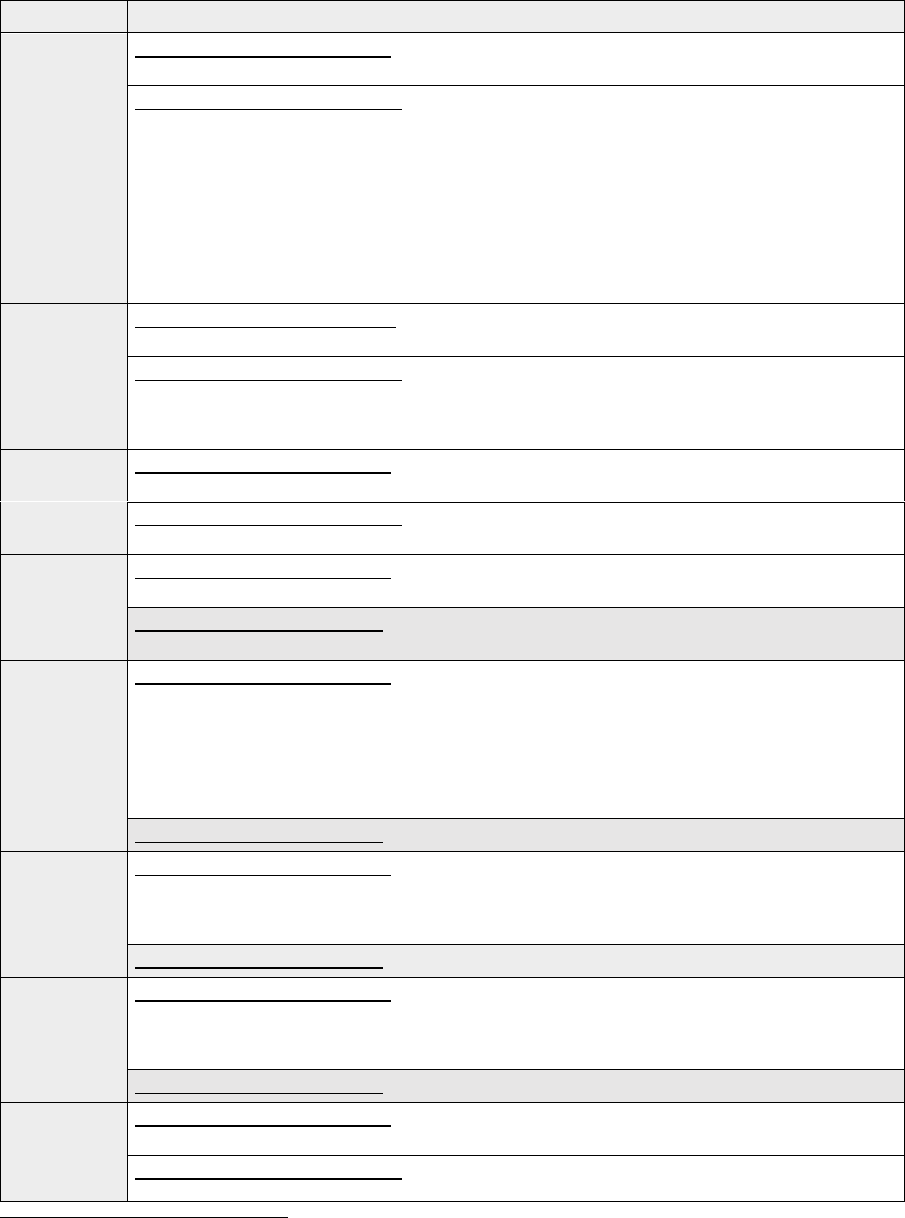
ACER REPORT ON TRANSMISSION AND DISTRIBUTION TARIFF METHODOLOGIES IN EUROPE
77
Table 3: Details on cost cascading applied to transmission tariffs
Country
Description of cost cascading / reason for non-application or non-applicability
Austria
173
From transmission to distribution: The costs of the transmission system are also paid by network users
connected to the distribution network.
From transmission to transmission: The costs for the transmission network are reduced by the costs for
secondary control, network losses and Network Level 3
174
, and then the following shares of the remaining
costs are cascaded following the gross cascading method according to total energy volume supplied to
consumers (kWh): in eastern Austria (55%), in Tyrol (40%), and in Vorarlberg (55%). The residual shares
are apportioned to the withdrawing parties directly connected at transmission level in each area, reflecting
their load and their energy consumption.
The approach in what regards Network Level 3 is a special Austrian mechanism, as it corresponds to
shared assets (shared between transmission and distribution).The transmission costs on Network Level 3
(110-kV-lump sum for shared assets) are charged directly to the DSO itself. They are included in the total
costs of the DSO and in a further step they are included in the distribution tariffs.
Belgium
From transmission to distribution: The costs of the transmission system are also paid by network users
connected to the distribution network.
From transmission to transmission: 3 network levels: 380-110 kV, 70-30 kV, transformation to Medium
Voltage (mostly DSOs). Different cascading keys are used for different costs categories: (1) network
development costs are cascaded according to the power use of each user category; (2) network
management costs are cascaded according to the energy use of each user category.
Bulgaria
From transmission to distribution: The NRA reported its application, but no further description was
provided.
From transmission to transmission: The NRA reported its application, but no further description was
provided.
Croatia
From transmission to distribution: The costs of the transmission system are distributed to all network
users on all voltage levels, including distribution and transmission.
From transmission to transmission: Not applicable, as all T-connected network users are connected to 110
kV (There are three T voltage levels 400, kV 220 kV and 110 kV)
Cyprus
From transmission to distribution: The transmission tariff applies to all loads on the Cyprus electricity
network, including to D-connected users. The transmission tariff of the only transmission voltage level (HV),
in EUR/kWh, is cascaded to distribution-connected users at MV and LV.
The capacity and energy component applied to an end user’s metered load shall be adjusted for average
annual network losses at the voltage level to which the user is connected and average annual network
losses at all voltage levels above that level. An adjustment shall also be made to reflect the contribution of
the customer class to coincident peak demand, as derived from the class load curve.
From transmission to transmission: Not applicable, as there is only one transmission level (no EHV)
Czech Republic
From transmission to distribution: There is one TSO and cost cascading exists from transmission to
distribution. The majority of costs of transmission system are paid only by connected distribution system
operators, no customer is connected to transmission system. Producers pay only for losses by electricity
withdrawal-based charge.
From transmission to transmission: Not applied
Denmark
From transmission to distribution: For the grid tariff there is a 3DKK/MWh discount if connected at T-
level to reflect savings with regard to transformers towards lower levels. This gives a typical discount of
approximately 5-10 % for T-connected consumers with regard to the grid tariff. For all other tariffs there is
no differentiation.
From transmission to transmission: Not applied, based on the information of the NRA.
Estonia
From transmission to distribution: The transmission cost is cascaded through a single price in
EUR/MWh applied to all D-connected users.
From transmission to transmission: The Estonian TSO has 3 network levels (330 kV, 110 kV and 110 kV
low-voltage side of a transformer). The costs that can be directly related to a specific voltage level are
173
AT: The electricity network is divided into seven different levels: Level 1 (extra high voltage grid, 380 kV - 220 kV, incl.
transformation); Level 2 (transformation extra high voltage – high voltage); Level 3 (high voltage, 110 kV); Level 4 (transformation
high voltage – medium voltage); Level 5 (medium voltage); Level 6 (transformation medium voltage – low voltage); and Level 7
(low voltage, 1 kV and lower). The transmission network corresponds to Levels 1 to 3. Customers are only connected to Level 3
to 7 – level 1 and 2 are operated by TSOs and only DSOs are connected to these network levels.
174
AT: "Network level 3" is high voltage in Austria: voltage higher than 36 kV and lower than 220 kV (in reality, 110 kV).

ACER REPORT ON TRANSMISSION AND DISTRIBUTION TARIFF METHODOLOGIES IN EUROPE
78
Country
Description of cost cascading / reason for non-application or non-applicability
counted as costs of the corresponding voltage level. Costs that cannot be linked to a specific voltage level
and costs of higher voltage level to lower voltage level are applied on the basis of the electricity
consumption volumes of the consumers of the corresponding voltage level.
Such a principle ensures that the consumer of 330 kV voltage level does not have to pay for the costs of
110 kV voltage level network, because the mentioned consumer does not use the 110 kV voltage level
network to consume electricity.
The consumer of 110 kV voltage level pays for the costs of 330 kV and 110 kV voltage level network
according to the electricity consumption volume (does not include the costs paid by the consumers of 330
kV voltage level).
The consumer of 110 kV low-voltage side of a transformer pays all remaining costs (does not include the
costs paid by the consumers of 330 kV and 110 kV voltage level).
Finland
From transmission to distribution: The costs not paid by T-connected users will cascade to D-connected
users. All T-costs are allocated to all network users across all voltage levels proportionally. D-connected
network users at different voltage levels bear the cost of losses on the network they are connected to and
on upstream (higher voltage) networks.
From transmission to transmission: Not applicable.
France
From transmission to distribution: The user of the lower voltage level is considered - in the methodology
- as a user of the higher voltage level. The marginal cost of the upstream level is added to the marginal cost
of the lower level. The cascading of the variable cost from transmission to distribution results, in the model,
in a different price in EUR/kWh per pocket, i.e the D-connected users get the same cascading variable cost
if there are in the same distribution network pocket. At the end, since the French network tariff is
geographically uniformised this difference in the cascading cost is not reflected in the tariff.
From transmission to transmission: Same logic as transmission to distribution.
Germany
From transmission to distribution: The difference between the costs allocated to the network level and the
expected network charge revenues of the level (in other words the block of costs not covered at that level) is
passed on to the next network level and added to the costs of that next level. There is no separate tariff
element for TSO-costs passed on to DSO-connected network users. These costs become part of the DSOs
allowed revenues and as such are passed on to the network users via tariffs.
From transmission to transmission: This form of cost-cascading exists as well, as the transmission
network includes more than one voltage level.
Greece
From transmission to distribution: All T-costs are allocated to all network users across all voltage levels
proportional to demand, at system level, during system peak periods. D-connected network users at
different voltage levels bear the cost of losses on both the network they are connected to and on upstream
(higher voltage) networks. Therefore, D-connected users at LV are charged a higher transmission tariff
(EUR/kWh or EUR/kW of demand during peak hours for users with time-of-use meters) compared to D-
connected users at MV. Accordingly, D-connected users (at MV and LV) are charged higher transmission
tariffs (EUR/kWh or EUR/kW of demand during peak hours for users with time-of-use meters) compared to
T-connected users, since the latter do not bear the cost of losses on the distribution network.
From transmission to transmission: Not applicable as all transmission costs are effectively recovered by HV
connected transmission demand users and by demand users connected to downstream distribution
networks. (Transmission system consists of EHV and HV. However, there are no demand customers
connected at EHV, whereas injection users connected at EHV or HV are not charged with use of system
charges)
Hungary
From transmission to distribution: Distribution-connected users pay explicitly a transmission tariff related
to the transmission costs (via a transmission tariff element in their final electricity bill).
From transmission to transmission: Based on benchmarking to distribution tariffs in order to decrease
the difference between distribution and transmission tariffs at the same (HV) voltage level.
Ireland
From transmission to distribution: Based on the information provided by the NRA in 2019, this form of
cost cascading applies in the country. However, no further description was provided.
From transmission to transmission: No information was provided whether it applies or not.
Italy
From transmission to distribution: The (transmission only) network charges for EHV and HV consumers
are largely power-based and to a small extent energy-based. The charging of DSO tariff payments by the
TSO (amounts collected from distribution-connected network users) is also a combined power-based and
energy-based tariff, with the largest part - 90% - of transmission allowed revenues coming from the power-
based component. When excluding the correction coefficients which account for higher losses in LV grids,
the energy-based payment of distribution-connected users is 10 times higher than the energy-based part of
the payment by HV users. This corresponds to all network users virtually paying the same Euro/MWh value
(if charges were virtually energy-based for everybody).
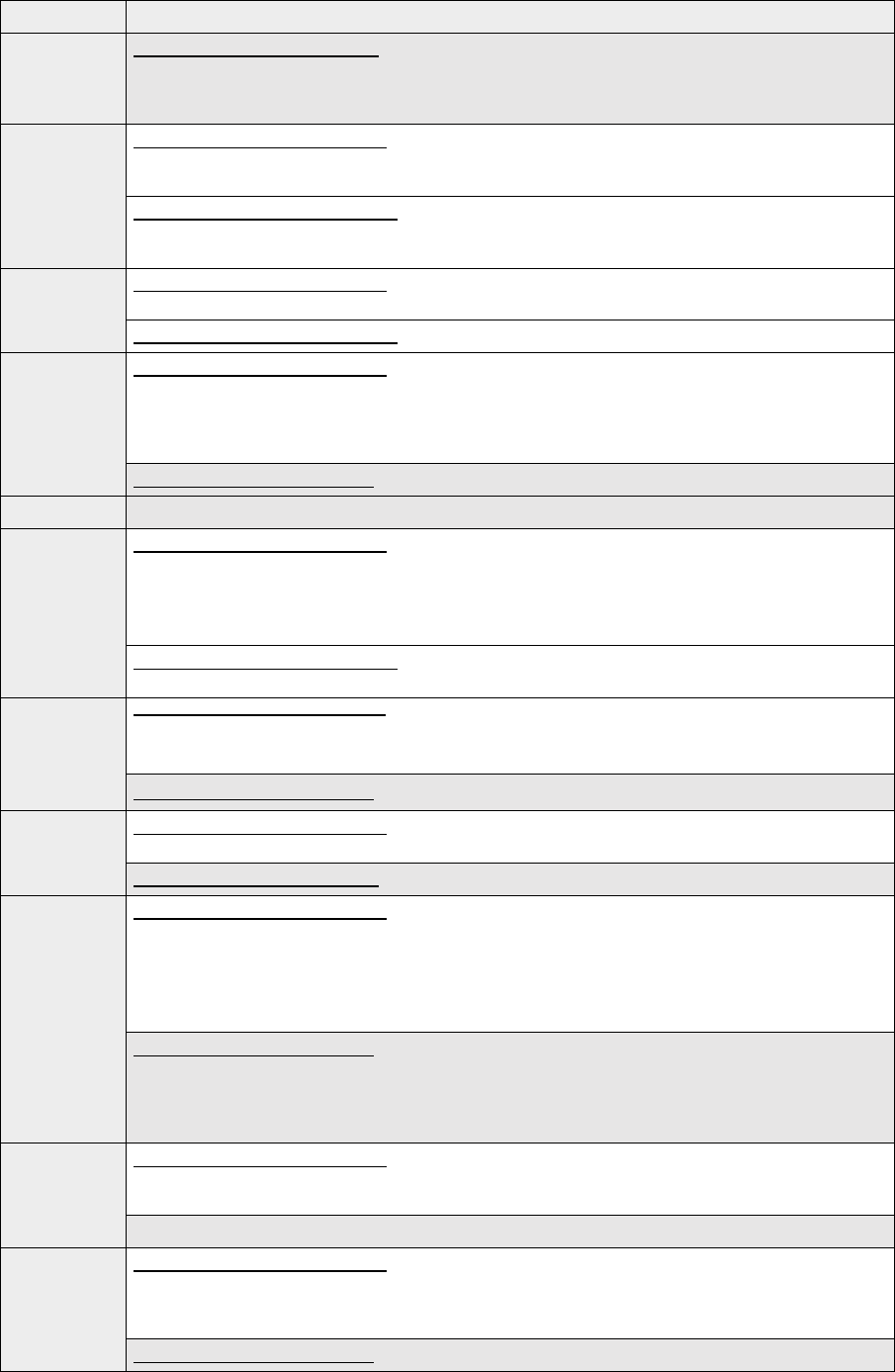
ACER REPORT ON TRANSMISSION AND DISTRIBUTION TARIFF METHODOLOGIES IN EUROPE
79
Country
Description of cost cascading / reason for non-application or non-applicability
From transmission to transmission: There is no cascading from transmission to transmission, the
transmission voltage levels (380-220-150 kV) are considered as a bundle and the users connected to 380-
220-150 kV grids are subject to the same network tariff (except a minimal difference in the energy
component for users connected to 150 kV grids, to account for slightly higher losses).
Latvia
From transmission to distribution: Initially the basic tariff, which is the tariff for the highest capacity level,
is calculated, the tariff of each subsequent capacity step shall cover by the costs of the previous higher
capacity level (starting from the basic) + of its own costs level.
From transmission to transmission: Only one TSO and it operates the grid in 330 kV and in 110 kV.
Tariffs are calculated only for 110 kV users, so all costs from 330 kV are allocated to lower voltage
transmission levels.
Lithuania
From transmission to distribution: The costs of the transmission system are also paid by network users
connected to the distribution network.
From transmission to transmission: No cost cascading because costs are not collected per voltage level
Luxembourg
From transmission to distribution: The cascading method used in Luxembourg includes all voltage levels
for transmission (1 level) and distribution (3 levels). Allowed costs are computed for each voltage level and
are aggregated for all the DSOs/TSO at national level. The cascading is made by using the average of the
past four measured annual peaks at each voltage level. As a result, D-connected users pay a single
network tariff which covers distribution and transmission costs.
From transmission to transmission: Not applicable, as there is only one transmission level.
Malta
Not applicable in lack of transmission network.
The
Netherlands
From transmission to distribution: For the cost allocation to users, costs of a network at a higher voltage
level are allocated to a network at a lower voltage level in proportion to the share of the latter network in the
total consumption of energy and/or power of the former network.
The transmission tariffs are paid by the DSOs. This means that consumers pay indirectly for these tariffs
through the DSO tariffs.
From transmission to transmission: For the T-costs in 2021, this resulted in 91.3% of the costs of the
extra high voltage level being allocated to the high voltage level.
Norway
From transmission to distribution: The recovery of the T-costs are included in the allowed revenue on the
lower voltage levels. It is not a uniform price for all customers. The customer pay for costs related to their
voltage level and higher voltage levels.
From transmission to transmission: No cost cascading
Poland
From transmission to distribution: T-charges transferred by variable and fixed rates are taken into
account in DSO rates calculation.
From transmission to transmission: No cost cascading
Portugal
From transmission to distribution: D-connected users are charged with a uniform T-tariff, adjusted for
network losses across the different voltage levels in distribution. That T-tariff is mainly composed by a
power price, in EUR/kW, charged during the peak period.
D-connected users pay on average a higher T-tariff than T-connected users, since the latter are connected
at VHV, while the former are using not only the VHV level, but also the VHV/HV transformers, which are
part of the transmission assets.
From transmission to transmission: No cost cascading in the absence of separate voltage levels for T-
connected users. The T-grid is operated at VHV and HV. The D-grid is operated at HV, MV and LV.
However, all HV users are connected to the D-grid. Moreover, information from the T-grid is collected
separately for VHV and HV assets, and a D-connected user pays for all of them due to the cost-cascading,
while a T-connected user only pays for the VHV assets.
Romania
From transmission to distribution: The TSO operates a single voltage level (EHV), while DSOs operate
three voltage levels (HV, MV, LV). The T-tariffs apply to all users, including to D-connected users; all users
pay the T-tariffs separate from D-tariffs, through the electricity bill to the supplier.
From transmission to transmission: No cost cascading because costs are not collected per voltage level
Slovak
Republic
From transmission to distribution: Tariff for transmission system access (including network development
costs), transmission system losses and Tariff for system services (costs for providing system services and
procured ancillary services) is shared by D-connected users as well. This is justified on the ground that
these users are causing losses in transmission system and are using the balancing services.
From transmission to transmission: No cost cascading
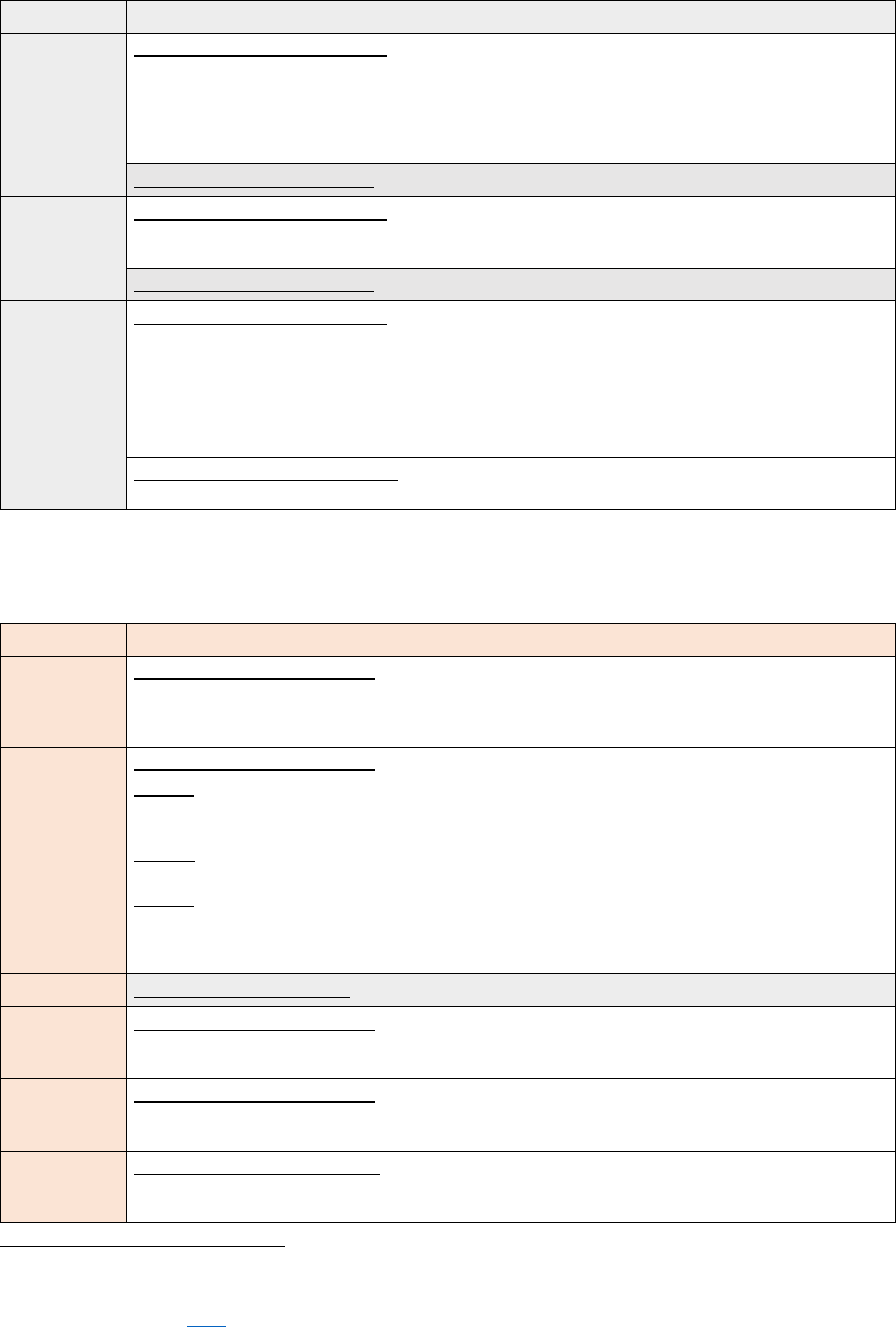
ACER REPORT ON TRANSMISSION AND DISTRIBUTION TARIFF METHODOLOGIES IN EUROPE
80
Country
Description of cost cascading / reason for non-application or non-applicability
Slovenia
175
From transmission to distribution: All distribution-connected users pay a transmission tariff according to
the cost-cascading model. The network usage costs for a particular customer group based at a particular
voltage level are determined as a ratio between the peak power of that customer group and the sum of all
peak powers which are directly or indirectly connected into this or subordinate voltage level(s). This is a so
called “gross” cost division method, which was justified for the Slovenian system due to a relatively low level
of production on MV and LV at the time of introduction (up to 93 % of all production has been on HV level).
From transmission to transmission: No cost cascading, because costs are not collected per voltage level
Spain
From transmission to distribution: The remuneration allocated to each voltage level is allocated to the
voltage level itself and to lower voltage levels considering both the energy balance for the energy tariff and
the power balance for the power tariff. This allocation is done for each time period.
176
From transmission to transmission: No cost cascading as the transmission network is one network level
Sweden
177
From transmission to distribution: The costs not paid by T-connected users will cascade to D-connected
users. There is not any defined method so there are not predetermined shares.
Cost-cascading exists across the three different network levels (transmission, regional distribution, local
distribution), since the costs of a higher voltage level is paid by the adjoining lower voltage level. However,
within these levels it is up to the actual network company to decide how the costs are allocated. Many
companies have some kind of cost-cascading where customers (e.g. 40 kV) don't pay capital costs for the
lower voltage levels, but this is not a regulated principle.
From transmission to transmission: The information on the details of this form of costs cascading was
not available to the NRA.
Table 4: Details on cost cascading applied to distribution tariffs
Country
Description of cost cascading / reason for non-application or non-applicability
Austria
178
From distribution to distribution: The costs of the higher voltage levels are distributed to the lower
voltage levels to the extent of the separate direct costs of each lower voltage level, which means that the
cascaded costs are added to the direct costs of the corresponding network level. The share depends on the
energy directly used by customers connected to each voltage level - there is no fixed share.
Belgium
From distribution to distribution:
Brussels: Medium/Low voltage distribution costs are precisely identified and collected, and a set of keys
(e.g. Volume, EAN, meters, etc.) is defined to split the costs which are not directly related to a specific level
of voltage. Keys are defined using historical data and/or technical data.
Flanders: All depreciation and operational expenditures directly related to a certain voltage level are
cascaded. The shares depend on the peak load per network user group. The shares differ per DSO.
Wallonia: The distribution costs that are identified by tension level are allocated to the corresponding
tension level. For the other distribution costs, a set of multiple keys is defined to split the costs which are
not directly related to a specific level of voltage. The keys are based on kWh, on kW and on the
depreciation cost per tension level.
Bulgaria
From distribution to distribution: No information was provided whether it applies or not.
Croatia
From distribution to distribution: Part of the distribution costs incurred at higher voltage level are
reflected in the distribution tariffs at the lower voltage level. The distribution network includes the MV and
LV levels. The price of the distribution tariff is not uniform and depends on the users’ category.
Cyprus
From distribution to distribution: Separate distribution tariffs apply at MV and LV. The former applies to
all loads connected to the Cyprus electricity distribution network, while the latter only applies to loads
connected at LV. The unit charges are corrected for losses across voltage levels.
Czech Republic
From distribution to distribution: Costs are partly distributed from higher voltage level to the lower
voltage level. In distribution system are costs cascaded from 110 kV to usually 22 kV (from 35 kV to 1.5 kV)
and subsequently to LV.
175
SI: For users ≥110 kV only transmission tariffs are set, regardless whether they are connected to transmission or to distribution.
176
ES: These shares are available in worksheets "IIIa. Coeficientes Potencia" and "IIIb. Coeficientes Energía" of the tariff model
for year 2021 (available in Excel format).
177
SE: In Sweden there are 3 network levels: TSO, regional DSOs and local DSOs. The TSO operates on 220-400 kV, regional
DSOs on 40-130 kV and local DSOs on 230 V - 40 kV.
178
AT: For a description of the Austrian electricity network, please refer to footnote 173.
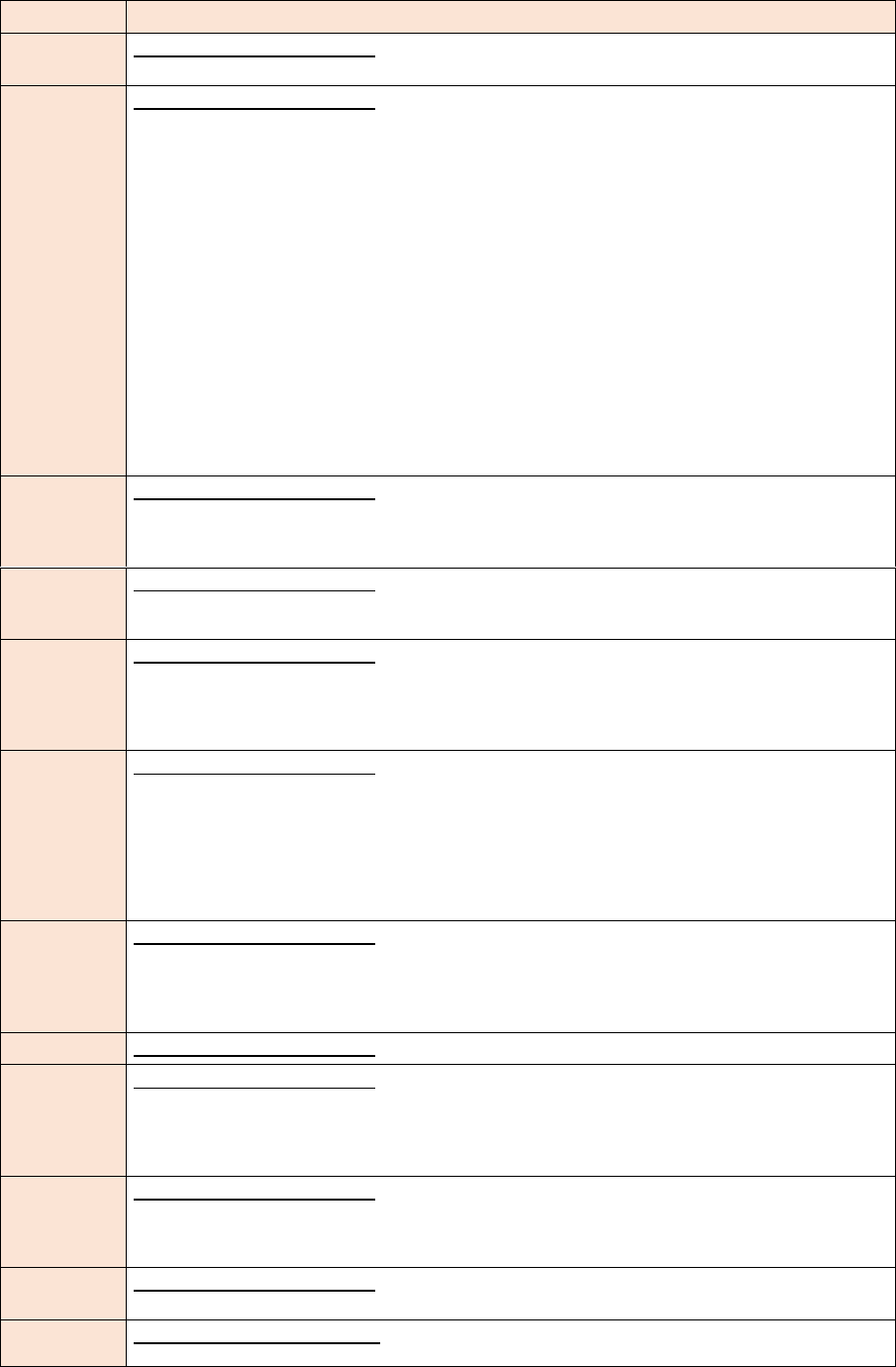
ACER REPORT ON TRANSMISSION AND DISTRIBUTION TARIFF METHODOLOGIES IN EUROPE
81
Country
Description of cost cascading / reason for non-application or non-applicability
Denmark
From distribution to distribution: Ideally from actual economic registrations. Alternatively, energy flow is
used as a key to allocate costs.
Estonia
From distribution to distribution: The biggest DSO of Estonia (Elektrilevi) has 3 network levels: a) the
undervoltage side of a 110 kV substation; b) 6-35 kV on the line and 35 kV on the undervoltage side of the
substation; c) low voltage contact points.
The costs that can be directly related to a specific voltage level are counted as costs of the corresponding
voltage level. Costs that cannot be linked to a specific voltage level and costs of higher voltage level to
lower voltage level are applied on the basis of the connection capacity of the consumers and electricity
producers of the corresponding voltage level.
Such a principle ensures that the consumer or generator of the undervoltage side of a 110 kV substation
does not have to pay for the costs of lower voltage level network (lower medium voltage, e.g. 35 kV voltage
and low voltage level network), because the mentioned consumer or generator does not use the lower
voltage level network for electricity consumption or production.
The consumer or generator of 6-35 kV on the line and 35 kV on the undervoltage side of the substation
pays for the costs associated with the undervoltage side of a 110 kV substation according to the connection
capacity (does not include the costs paid by the consumers and generators of the undervoltage side of a
110 kV substation).
The consumer or generator of low voltage network pays all remaining costs (does not include the costs paid
by the consumers and generators of the undervoltage side of a 110 kV substation and the consumers and
generators of 6-35 kV on the line and 35 kV on the undervoltage side of the substation).
Finland
From distribution to distribution: Users at a lower voltage level pay for distribution costs of its own
voltage level and for distribution costs of higher voltage levels. There are 77 DSOs and it varies by DSOs
which voltage levels they operate. The voltage levels are 0.4 kV, 1-70 kV and 110 kV and the DSOs define
their own tariff method, so there is no uniform price.
France
From distribution to distribution: The user of the lower voltage level is considered - in the methodology -
as a user of the higher voltage level. The marginal cost of the upstream level is added to the marginal cost
of the lower level.
Germany
From distribution to distribution: The difference between the costs allocated to the network level and the
expected network charge revenues of the level (in other words the block of costs not covered at that level)
is passed on to the next network level and added to the costs of that next level. The costs of the upstream
network level are included into the allowed revenues allocated to the voltage level and subsequently they
are passed on to the network users connected to that voltage level via tariffs.
Greece
From distribution to distribution: The distribution network comprises the MV and LV voltage levels.
Costs of the MV are cascaded to LV. First application of the new methodology is planned in 2023. It is
estimated that approximately 40% of total D-costs correspond to costs related or assigned to MV voltage
level that are going to be cascaded downwards to LV voltage level, according to the new methodology.
Cascading is achieved by a joint allocation of cascaded costs to both MV and LV user classes, in proportion
to user class peak demand (capacity tariff element) or energy consumption (energy tariff element), after
compensating for losses at the different voltage levels. The cost related to metering and metering related
customer service is not cascaded.
Hungary
From distribution to distribution: There are 5 voltage levels: HV, HV/MV, MV, MV/LV, LV. The distributed
energy with a weight of 66.6% and the contracted capacity with a weight of 33.3% are taken into account
for the cost cascading approach. It is based on the ratio of the withdrawal from a certain voltage level to the
total sum of the withdrawals from the same voltage level and the lower voltage levels. The result of the cost
cascading is a different average distribution charge for every voltage level.
Ireland
From distribution to distribution: No further description was provided
Italy
From distribution to distribution: The shares of D-costs attributed to each voltage level are proportional
to the shares of historical revenues obtained by DSOs applying tariffs originally built with a cost-cascading
approach. As a result, on top of paying for transmission costs, due to cost-cascading from transmission to
distribution, a distribution-connected MV client only pays for distribution costs in MV, while a distribution-
connected LV client pays for distribution costs in MV and LV.
Latvia
From distribution to distribution: Initially, the basic tariff, which is the tariff for the highest voltage level, is
calculated, the tariff of each subsequent voltage step shall cover the costs of the previous, higher voltage
levels (starting from basic) + of its own costs level. Cost which is related to system security is allocated
equally to each voltage level (according to consumption level).
Lithuania
From distribution to distribution: Cost cascading is not regulated by the NRA, it is part of the operators'
D-tariff differentiation.
Luxembourg
From distribution to distribution: The cascading method used in Luxembourg includes all voltage levels
for transmission (1 level) and distribution (3 levels). Allowed costs are computed for each voltage level and
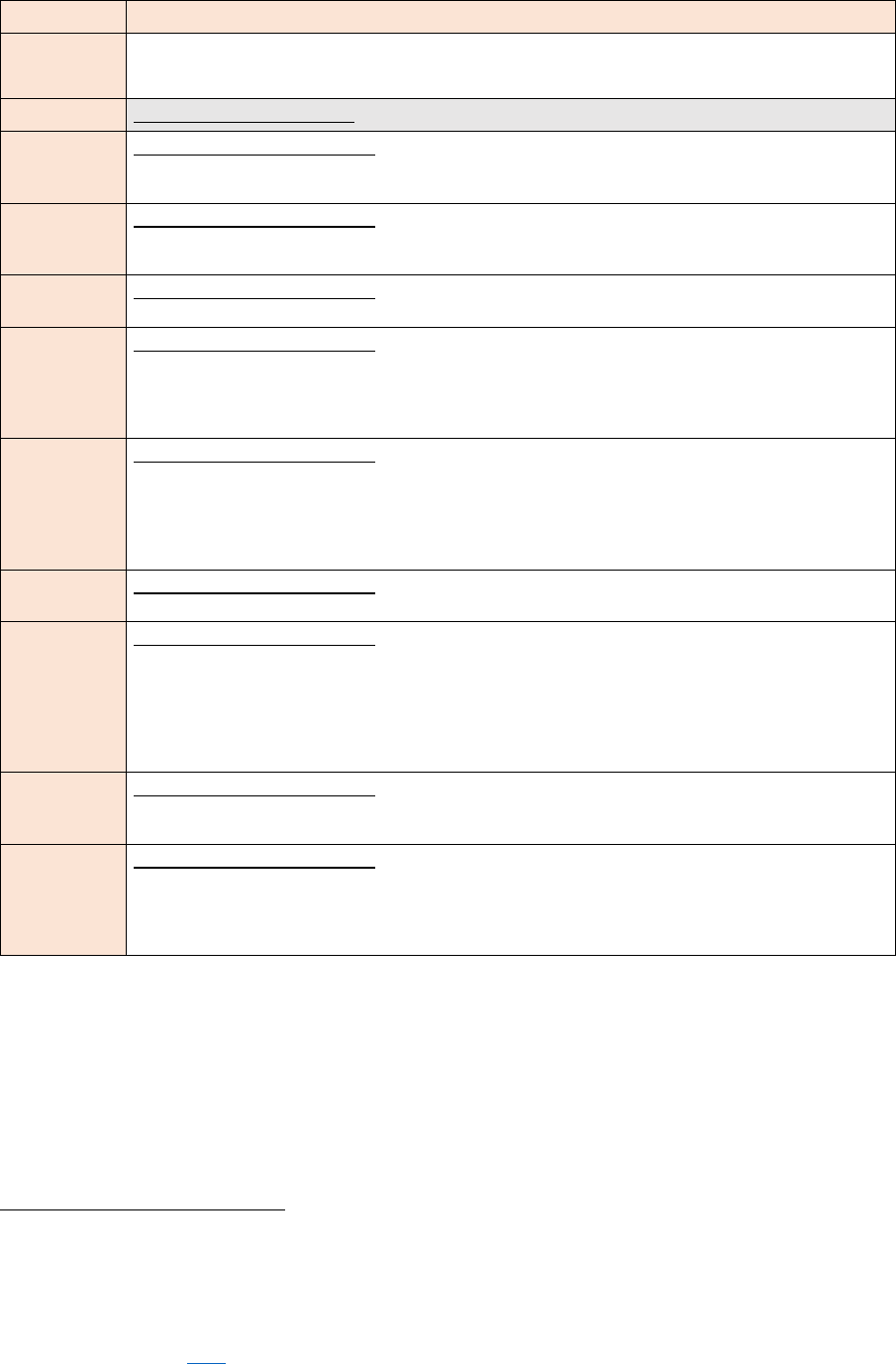
ACER REPORT ON TRANSMISSION AND DISTRIBUTION TARIFF METHODOLOGIES IN EUROPE
82
Country
Description of cost cascading / reason for non-application or non-applicability
are aggregated for all the DSOs/TSO at national level. The cascading is made by using the average of the
past four measured annual peaks at each voltage level. As a result, D-connected users pay a single
network tariff which covers distribution and transmission costs.
Malta
From distribution to distribution: No cost cascading because costs are not collected per voltage level
The
Netherlands
From distribution to distribution: In general, the costs of each network level are allocated to users at
lower voltage networks based on their relative share in the main cost driver of the relevant voltage level. At
high and medium voltage level the cost driver is kW, at lower voltage levels the main cost driver is kWh.
Norway
179
From distribution to distribution: Distribution costs are cascaded through the different voltage levels in
the distribution grid. The costs are included in the allowed revenue on the lower voltage levels, and do not
result in a uniform price for all customers.
Poland
From distribution to distribution: According to Ministry Regulation, distribution rates shall be calculated
by taking into account the different voltage levels: HV, MV and LV. No further clarification was provided.
Portugal
From distribution to distribution: The different D-tariffs follow a cost-cascading reasoning: a HV user
only pays the D-tariff for HV; a MV user pays the D-tariffs for HV and MV; a LV user pays all D-tariffs,
namely for HV, MV and LV. The network charges are adjusted for network losses across the different
voltage levels in distribution. The D-tariffs are mainly composed by a power price, in EUR/kW, charged
during the peak period.
Romania
From distribution to distribution: D-tariffs are energy-based, calculated on the distribution costs and
distributed energy related to each voltage level. These are specific tariffs (for low voltage, medium voltage
and high voltage). The D-tariff paid by a user is calculated by summing the specific tariffs for its own
connection voltage level and the higher voltage levels. The D-costs are allocated to each voltage level
using allocation keys that are set according to the tariff methodology. As a result, the cascaded price is not
uniform.
Slovak
Republic
From distribution to distribution: Distribution costs are cascaded from higher to lower voltage levels.
Slovenia
180
From distribution to distribution: The cascade network model among different voltage levels is used for
cost allocation over 3 groups of voltage levels and two intermediate voltage levels (substation and
transformer level). The network usage costs for a particular customer group based at a particular voltage
level are determined as a ratio between the peak power of that customer group and the sum of all peak
powers which are directly or indirectly connected into this or subordinate voltage level(s). This is a so called
“gross” cost division method, which was justified for the Slovenian system due to a relatively low level of
production on MV and LV at the time of introduction (up to 93 % of all production has been on HV level).
Spain
From distribution to distribution: The remuneration allocated to each voltage level is allocated to the
voltage level itself and to lower voltage levels considering both the energy balance for the energy tariff and
the power balance for the power tariff. This allocation is done for each time period.
181
Sweden
182
From distribution to distribution: Costs are cascaded at higher voltage level. However not explicitly so
on lower. Lower voltage levels have the same price over large areas so any cascading would be averaged
out. The D-costs are not divided by capacity or energy (as for T-costs), it is implicitly included, however not
explicitly calculated as such. It is not certain that a lower voltage level always should contain costs from one
higher. One of the biggest DSO does not explicitly cascade the D-costs due to complexity of the grid.
179
NO: The distribution network in Norway is divided into the following voltage levels, in kV: 132, 66, 22, 11, 0.4.
180
SI: For users ≥110 kV only transmission tariffs are set, regardless whether they are connected to transmission or to distribution.
Distribution tariffs are set for: MV consumption at substation busbar; MV consumption at 35, 20 and 10 kV; LV consumption at
transformer busbar; LV consumption at 1 and 0.4 kV. On each level there are also separation of tariffs according to yearly
operation hours T (customers with T>2500h and T<2500h), except for households and small commercial customers.
181
ES: These shares are available in worksheets "IIa. Coeficientes Potencia"" and "IIIb. Coeficientes Energía" of the tariff model
for year 2021 (available in Excel format).
182
SE: For a short description of the electricity network in Sweden, please refer to footnote 177.

ACER REPORT ON TRANSMISSION AND DISTRIBUTION TARIFF METHODOLOGIES IN EUROPE
83
Table 5: Description of any partial or differentiated cost-cascading either for transmission costs and/or for
distribution costs
Country
Description
Belgium
For transmission tariffs, ancillary services and system integration costs are not cascaded as they cannot
be differentiated according to user groups or voltage levels. It is considered that each user category equally
benefits from these services, therefore each user category (3 T-voltage level, the lowest is mostly DSOs)
pays the same tariff
183
.
For distribution tariffs in the Flanders region, all costs that aren't (directly) related to a certain voltage level
are not cascaded, namely: costs of system services, management costs, costs of capital, public service
obligations, pension schemes and local retributions. The costs of system services at DSO-level are equally
allocated to all D-users (both withdrawal and injection, based upon the energy withdrawn or injected). The
costs of system services at TSO-level which are paid by the DSOs, are also equally allocated to D-users
(only withdrawal).
Bulgaria
For transmission tariffs partial or differentiated cost-cascading was reported, but not described
Croatia
For transmission tariffs, partial cascading applies: Metering costs and administrative costs are not
cascaded.
Denmark
For transmission tariffs, some partial or differentiated cost-cascading was reported, but not clarified.
For distribution tariffs, metering costs and admin costs (paid as a monthly subscription) are not cascaded.
Greece
For distribution tariffs, partial cascading applies: Operating costs related to metering, billing and metering-
related customer service are not subject to cascading, because no "cause and effect" relationship exists for
these costs across different voltage levels.
Hungary
For distribution tariffs, the cost of the metering is not cascaded as metering and reading is directly
connected to the meter of the network user.
Portugal
For transmission and distribution tariffs, there is differentiated cascading of one billing variable, namely
of the contracted power, in EUR/kW, which reflects the costs of peripheral network assets that are closer to
the user and used by a low number of end-users (as opposed to central assets, used by a large number of
users). When cascaded to lower voltage levels, the price of contracted power is converted into the price of a
different billing variable (peak power), assuming a simultaneity factor. This happens because the contracted
power of a user at a lower voltage level (e.g. LV) will not be using peripheral assets of the higher voltage
level based on the measurement taken at the lower voltage level. For this reason, the contracted power
price is converted into a peak power price based on the expected relationship between contracted power
and peak power. Another differentiation performed when applying cost cascading is to correct the prices
through loss factors, reflecting grid losses. For instance, when measuring network utilisation at low voltage, a
measurement of 1 kWh or 1 kW at a LV meter, means that the network user is using the higher voltage level
at a value larger than 1 kWh or 1 kW. To take this into account, prices are differentiated across voltage
levels.
Note: partial cost-cascading means that some cost categories are cascaded, while other cost categories are not
cascaded. Differentiated cost-cascading means that different cascading criteria are applied to different cost
categories and/or to different network users.
Table 6: Exemptions from cost-cascading applicable to some groups of network users
Country
Description
Austria
For transmission tariffs, pumped hydro-storage is exempted. As pumped hydro-storage is important for the
whole energy system, these facilities have to pay a reduced network utilisation tariff.
For distribution tariffs, network users which are participating in renewable energy communities are
exempted from the D-cost cascading part, when they do not withdraw energy from the public network system
outside the community.
Portugal
For transmission and distribution tariffs, network users participating in self-consumption, which
corresponds to energy sharing of renewable energy over the public grid, is partially exempted from cost-
cascading. For instance, if the generation site is connected at MV and the consumption site at LV, the
withdrawal at LV does not pay network tariffs towards voltage levels above MV. In this example, there exists
cost-cascading from MV to LV, but not from higher voltage levels to LV. The reason for this exemption is cost-
reflectivity, as it is reasonable to assume that the energy shared over the public grid does not use upper voltage
levels, since energy is measured in 15 minute intervals for injections and withdrawals, and inverted power
flows are still a residual phenomenon.
Note: general tariff exemptions for some network users - i.e. not exemptions explicitly from the cost-cascading
method - are not listed for this table
183
BE: Transmission tariffs are paid by T-users and DSOs. DSOs then recover the transmission costs (of T-tariffs) they have paid
through D-tariffs, so D-users also pay for these services based on their net withdrawals (but DSO withdrawals are a global net
amount while individual T-user pay for their individual net withdrawals).
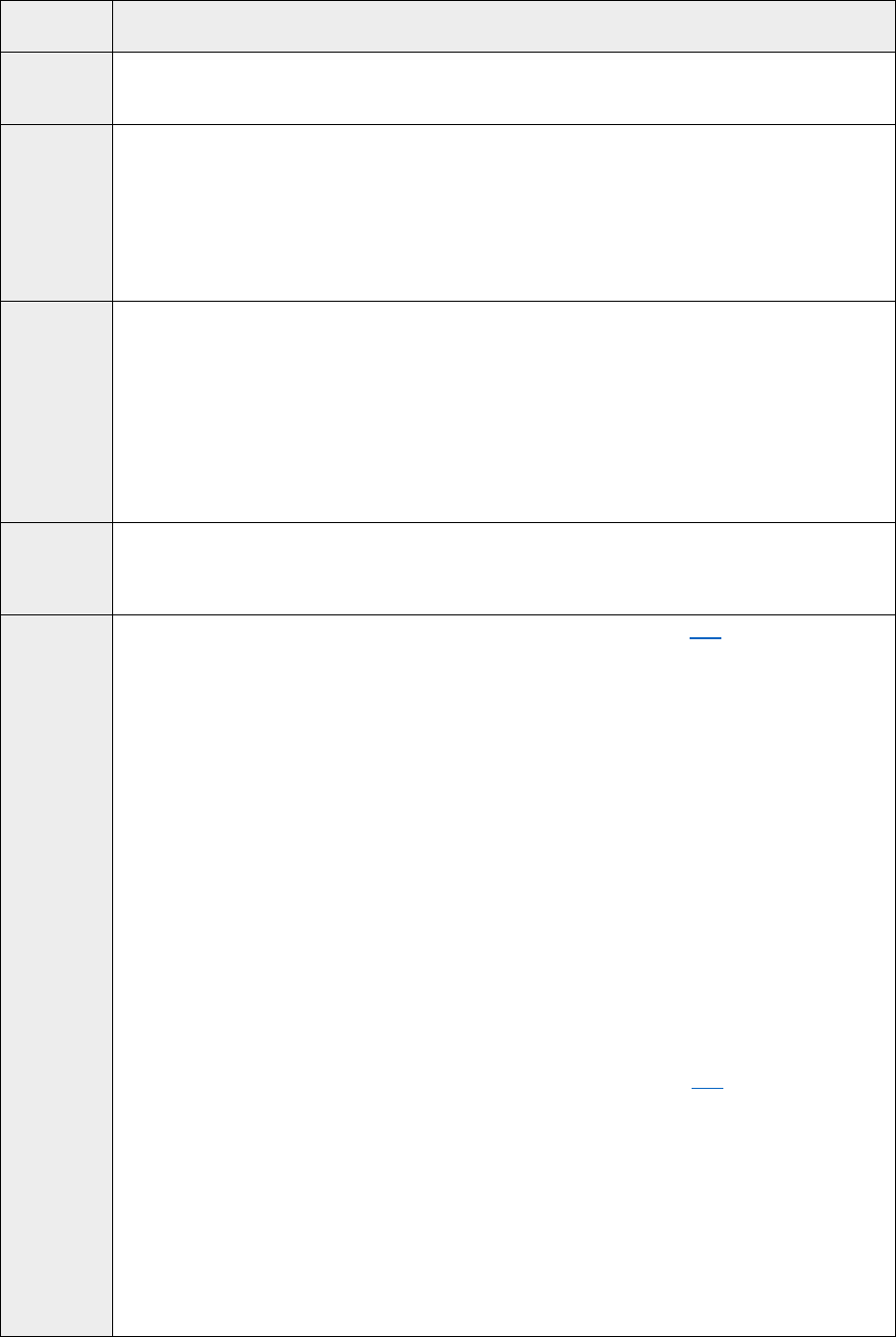
ACER REPORT ON TRANSMISSION AND DISTRIBUTION TARIFF METHODOLOGIES IN EUROPE
84
Table 7: Recent changes to the cost models or cost cascading or planned future changes
Country
Recent changes (i.e. compared to last ACER reports in 2019 and 2021) or changes which are currently
under consideration
Belgium
The cost classification has changed and most network costs are allocated based upon peak load instead of
energy consumption. The next tariff methodology (starting 2025) will probably not use the same principle, but
new ones, which are not set yet.
Denmark
A thorough revision of the transmission tariff methodology is under way, including: introduction of capacity
payment (to reflect the fact that many grid costs are fixed costs), fixed element in the system tariff to recover
residual costs (to reflect that costs are not related to energy), allocation of more costs to producers for
connection to the system (to establish a more cost-reflective tariff system with regard to producers, time
differentiation (to incentivize a more effective use of the system). This reform will be implemented during the
coming years.
The described distribution tariff methodology is applied from 2023-2027. There are ongoing considerations
regarding a bigger emphasis on capacity tariffs and a TSO-DSO model.
France
The marginal cost methodology has been upgraded in order to adapt to the strong growth in investments
forecasted in the future. The updated methodology is based on more precise grid data collected from system
operators.
The updated methodology consists in defining grid pockets that includes all the grid infrastructure of a voltage
range connected downstream of a transformer substation. The cost of a grid pocket is partly explained by the
characteristics of the users connected to it: the methodology is based on the marginal cost of the number of
users and the marginal cost of peak load.
A model based on grid pockets enables to bring out a different cost per grid pocket. This could be used to
apply different network tariffs for users connected to different grid pockets. However, since the French
network tariff is geographically uniform, this difference in the cascading cost is not reflected in the tariff.
Germany
On 2 Sep. 2021, the ECJ ruled (C-718/18) that the so called normative regulation that is applied in Germany
does not comply with EU-Law. BNetzA will have to become more independent. In particular - among others -
the network tariff methodology cannot be set in ordinances, but will have to be added to BNetzA's jursidiction.
BNetzA will evaluate the necessity of any changes to the tariff methodology.
Greece
A new T-tariff methodology will apply starting from 1 July 2022 (more information here). Main changes
compared to the previous methodology are the following:
Change in the approach to allocate T-costs to classes of network users: According to the new tariff
methodology, T-costs are allocated to network users (or classes of network users) in proportion to the
actual maximum demand registered during predefined peak periods in each month. The change aims to
increase cost reflectivity and fairness of the tariff (changes compared to the previous methodology include
definition of extended system peak periods throughout the year), predictability of imposed charges and
also to provide more effective signals to network users in order to promote demand shifting (in the new
methodology, peak periods are defined ex-ante for the next year; in the previous methodology, allocation
of T-costs was based on the winter and summer peak hours, determined ex-post).
Change in T-tariff basis: Transmission charges according to the new methodology are based entirely on
actual power/energy withdrawn from the network (no subscribed capacity charge for low voltage users).
Network users with hourly metering (currently all T-connected users, D-connected medium voltage and
large low voltage users) are charged on the basis of their actual demand during system peak periods
(actually the monthly charge is based on the average over the 80 highest 15 minute average demand
values registered during system peak periods in each month). All other users, equipped with conventional
meters, are charged on the basis of their energy consumption regardless of the time-of-use.
Use of available hourly metering data to calculate charges was extended to large low voltage customers.
Rebates are introduced for high voltage (T-connected) and medium voltage (D-connected) users having
both annual energy consumption and annual average load factor above a threshold. The rebates are
expressed as percentage on the monthly T-charge, ranging from 33% to 54% depending on the annual
energy consumption and the annual average load factor of the network user.
A new D-tariff methodology will apply starting from 1 July 2022 (more information here). Main changes
compared to the previous methodology are the following:
Change in the approach to allocate D-costs to categories of network users and in D-tariff basis:
According to the previous methodology, the sum of D-costs was first allocated to MV and LV users on the
basis of each category's aggregate demand during the hours of winter and summer peak demand on the
distribution network. Further allocation to LV subcategories was based on annual energy consumption. D-
tariffs were based on peak demand (for users equipped with electronic interval meters), on subscribed
capacity (for users with conventional meters) and on energy (for all users). The split between costs
recovered through demand/capacity and energy charges deviated significantly from what would be
expected given the respective cost drivers.
According to the new tariff methodology D-costs are categorised as fixed, power/capacity related and
energy related. They are then allocated to user categories on the basis of relevant allocation keys (number
of users, peak demand, subscribed capacity, energy consumption) and recovered through corresponding

ACER REPORT ON TRANSMISSION AND DISTRIBUTION TARIFF METHODOLOGIES IN EUROPE
85
Country
Recent changes (i.e. compared to last ACER reports in 2019 and 2021) or changes which are currently
under consideration
unit charges (€/user, €/kWpeak, €/kVA, €/kWh). The changes aim to increase cost reflectivity and fairness
of the tariff and also to provide more effective economic signals to network users in order to promote
demand shifting and/or rationalisation of subscribed capacity requirements.
Use of available hourly metering data to calculate charges was extended to large low voltage customers.
Ex-ante definition of extended system peak periods throughout the year, as opposed to the previous
methodology according to which allocation of D-costs was based on the winter and summer peak hours,
determined ex-post.
No changes in cost-cascading.
Latvia
NRA plans to make amendments in the tariff calculating methodology to improve the regulatory environment
for current situation in 2022 (high energy prices). Improvement of regulatory account.
Luxembourg
Parallel to the search for a future proof tariff structure, the current cascading could be reviewed. NRA is open
to discuss changes in the cost-cascading with TSO/DSOs.
The
Netherlands
In 2022, the ACM will launch a study, including a consultation round, into the question of whether it is
desirable and feasible to continue to offer the volume discounts that system operators give to the energy-
intensive industry on the basis of the volume correction scheme and, if so, how.
Portugal
The analysis on inverted power flows is ongoing. If it concludes that the phenomenon is becoming relevant,
the exemption from cost-cascading applied to some network users (self-consumption) will be reduced. The
possibility to reduce that exemption is already foreseen in the regulatory framework, but a corresponding
parameter would need to be published.
Slovenia
New tariff methodology is under consideration as improvement of the existing one. The same tariff structure
based on capacity and energy charges is maintained, but increasing cost-reflectivity by identifying cost
drivers separately for capacity and energy and including time-block discrimination for all costumer groups
based on more detailed consumption and generation data (15 minutes).
Spain
Transmission tariffs were fixed by the Government until 2019. The Royal Decree Law 1/2019, of 11 January,
established that the CNMC is responsible of establishing transmission and distribution tariffs from 1 January
2020. Transmission tariffs are now fixed according to the new methodology established in Circular 3/2020,
which came into force on 25 January 2020. The first application of the new tariffs was in 2021, (exceptionally
starting on 1 June).
Sweden
In 2020 the TSO changed the energy component to be dynamic, using the electricity market prices.
Additional changes were made in 2021 regarding the energy component. These changes were made to give
customers more correct price signals.
The TSO is currently reviewing its tariff methodology, and the NRA has made changes in the overall tariff
methodology. The changes that are decided by the NRA are that the tariff should have four components,
energy, capacity based, customer related costs, and a fixed charge. The energy, capacity-based and
customer-related charges should be cost-reflective. The residual costs are covered by the fixed component.
Sweden follows a mix of the cost models: the energy component uses an incremental cost approach; the
capacity component follows a forward-looking cost approach; the customer related charges are based on an
average cost approach. These changes are already decided by the NRA but will not take effect before 1
January 2027, since the network operators need the new smart meters to fully incorporate these new tariffs.
Regarding cost-cascading the NRA has decided through a new regulation that the network company first
divides its costs between injection and withdrawal, and second divides the costs into the fore-mentioned four
components. Each component is then cost cascaded down to the next grid level, and in the end, to the final
customer.
Table 8: Application of injection charges, reasons behind and actions that preceded the decision on them
Country
Application of injection charge and reasons
behind
Actions that preceded the decision to introduce,
to change or to phase-out the injection charge
Transmission
Distribution
Transmission
Distribution
Austria
Yes
(for better cost
reflectivity)
Yes
(for better cost
reflectivity)
👁 Consultation of
national system
operators and network
users
👁 Consultation of the
relevant stakeholders
as part of the annual
tariff setting procedure
Belgium
Yes
(for better cost
reflectivity)
Brussels:
Never applied
👁 Consultation of
national system
Flanders:
👁 Consultation of
system or network
operators and
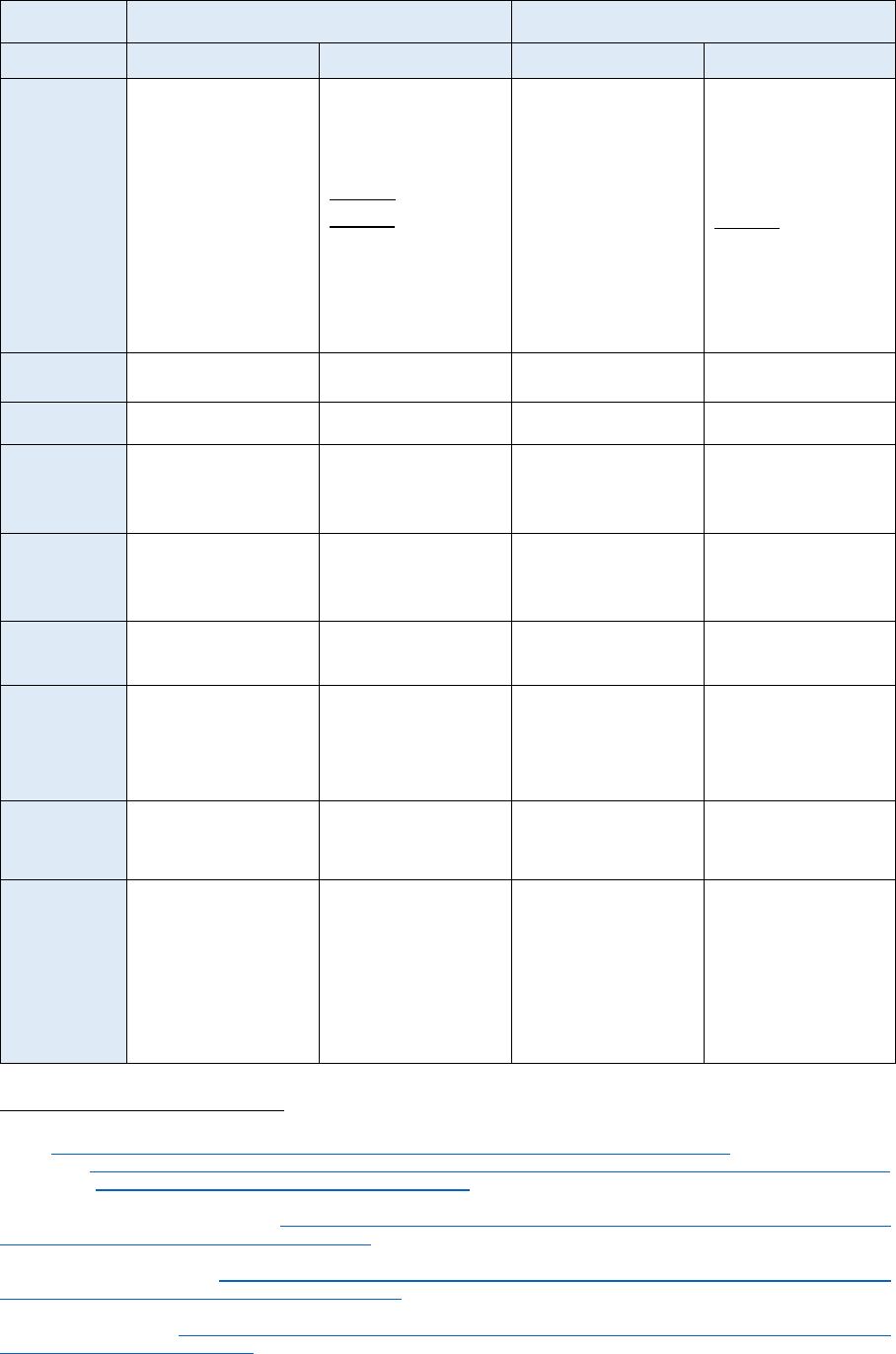
ACER REPORT ON TRANSMISSION AND DISTRIBUTION TARIFF METHODOLOGIES IN EUROPE
86
Country
Application of injection charge and reasons
behind
Actions that preceded the decision to introduce,
to change or to phase-out the injection charge
Transmission
Distribution
Transmission
Distribution
(due to very few
injection sites does not
deemed to be needed
by the regulator)
Flanders: Yes
Wallonia: Yes
operator and network
users
184
📜 Impact assessment
studies
concerned network
users
185
📜 Impact assessment
studies
Wallonia:
👁 Consultation of
system or network
operators and
concerned network
users organised by the
DSOs
186
Bulgaria
Yes
No
👁 Consultation of
national network users
Croatia
It will be applied from
2023
It will be applied from
2023
Cyprus
Never applied
(to promote RES and
storage there are no
injection charges)
Never applied
(to incentivise greater
penetration of
distributed generation)
Czech
Republic
Never applied
(due to risks of
distortions in cross-
border competition)
Never applied
(due to risks of
distortions in cross-
border competition)
Denmark
Yes
It will be applied from
2023
👁 Consultation with
TSOs of neighbouring
countries
Estonia
Never applied
(the TSO proposed not
to apply them, to
encourage investments
in large RES projects)
Yes
(DSOs proposed to
apply them, for cost
reflectivity and equity
reasons)
The DSO provided the
NRA with explanations
and reasons why the
application of the
injection charge is fair
and justified.
Finland
Yes
(for better cost
reflectivity)
Yes
(for better cost-
reflectivity)
No consultation or
impact assessment
National law sets a cap
for charge for injection
in DSO low voltage
network.
France
Yes
(for better cost
reflectivity)
Yes
Yearly management
charge, which aims to
cover costs related to
the management of
producers by the DSO
It is not considered as
an injection charge by
the NRA.
👁 Consultation of
national system
operators and network
users
187
;
📜 Impact assessment
studies
184
BE: http://www.creg.info/pdf/Opinions/2014/Methodo/DossierAdmin/E-12-RapportConsultation-FR.pdf
185
BE (FLA): https://www.vreg.be/nl/afgesloten-consultaties#:~:text=Consultatie%20tariefmethodologie%202021,vanaf%202022
186
BE (WAL): https://www.cwape.be/node/177#travaux-prparatoires
187
FR: Link to outcomes: Public consultation No.2019-011 of 23 May 2019 relating to the structure of the next tariffs, TURPE 6,
for the use of the public electricity grids: https://www.cre.fr/Documents/Consultations-publiques/Structure-des-prochains-tarifs-d-
utilisation-des-reseaux-publics-d-electricite-TURPE-6
Public consultation No.2020-007 of 19 March 2020 relating to the withdrawal component of the next tariffs, TURPE 6, for the use
of the public electricity grids: https://www.cre.fr/Documents/Consultations-publiques/composante-de-soutirage-des-prochains-
tarifs-d-utilisation-desreseaux-publics-d-electricite-turpe-6
Public consultation No.2020-015 of 1 October 2020 relating to the next tariffs for the use of the public electricity transmission
grids (TURPE 6 HTB): https://www.cre.fr/Documents/Consultations-publiques/prochain-tarif-d-utilisation-des-reseaux-publics-
de-transport-d-electricite-turpe-6-htb

ACER REPORT ON TRANSMISSION AND DISTRIBUTION TARIFF METHODOLOGIES IN EUROPE
87
Country
Application of injection charge and reasons
behind
Actions that preceded the decision to introduce,
to change or to phase-out the injection charge
Transmission
Distribution
Transmission
Distribution
Substantial injection
charge is not applied
due to strong opposition
by all concerned actors,
(but still under
consideration)
Germany
Never applied
(prohibited by national
law)
Negative injection
charge
(for avoided network
costs by the DSO)
Greece
Never applied
(no significant structural
inefficiencies due to
location of generation
and demand in T-
network)
188
Never applied, but
may be considered in
the future
189
Hungary
Never applied
(due to concerns on
generation adequacy
190
)
Never applied
(due to concerns on
generation adequacy)
Ireland
Yes
Never applied
(injection pays for their
distribution connection
at the time of
connection to the D-
grid)
Italy
Phased-out due to
national law changes
191
Never applied
192
Latvia
Yes
(for better cost-
reflectivity)
Yes
(for better cost-
reflectivity)
👁 Consultation of
national system
operators and network
users
193
👁 Consultation of
NRAs of neighbouring
countries
194
;
📜 Impact assessment
studies.
👁 Consultation of
system or network
operators and
concerned network
users
195
👁 Consultation of
NRAs of neighbouring
countries);
📜 Impact assessment
studies
188
GR: It has been demonstrated that the structural inefficiencies in the transmission system (locational unbalance of supply and
demand) did not impact system operation in a significant and frequent manner, to necessitate imposing an injection charge (which
would enhance signals provided to generators to situate new capacity closer to demand centres).
189
GR: Injection pays for network extension and reinforcement through connection charges. There is also a provision for injection
to pay for O&M costs related to network infrastructure that is used exclusively by injection and not to serve demand. Injection
fees have never been systematically considered, but it is expected that they will need to be considered in the context of necessary
network development in high DER deployment scenarios.
190
HU: The system already lacks conventional power plants, which discourages the introduction of any non-zero injection charge.
191
IT: No consultations, G-charge was removed from 1 January 2010 by regulatory decision 203/2009, taking into account a
provision set by article 33(5) of Italian law 99/2009, which was later repealed. Injection charges have been applied till the middle
of the regulatory period 2008-2011. For year 2008, Annex A to the tariff regulatory decision 348/2007 set a value of 0.256
EUR/MWh to be paid by producers
192
IT: The payments (also by D-connected generators) which were phased out in 2009 only pertained to transmission charging.
193
LV:
https://www.sprk.gov.lv/content/publiskas-konsultacijas;
https://www.sprk.gov.lv/sites/default/files/editor/ED/KD_par%20elektroener%C4%A3ijas%20p%C4%81rvades%20sist%C4%93
mas%20pakalpojumu%20tarifu%20apr%C4%93%C4%B7in%C4%81%C5%A1anas%20metodiku.pdf (only in Latvian)
194
LV: Before introduction of the injection tariff, the NRA presented to the EE and LT NRAs about plans and justification, as it
deemed that their market areas could be affected.
195
LV:
https://www.sprk.gov.lv/sites/default/files/editor/ED/Konsultaciju_dokumenti/Elektroenergija/2019/KD_grozijumi_elektroenergija
s_metodika_22092019.pdf
https://www.sprk.gov.lv/sites/default/files/publiskas_konsultacijas/SSO_Tarif_met_Vied_apk_30092019.pdf
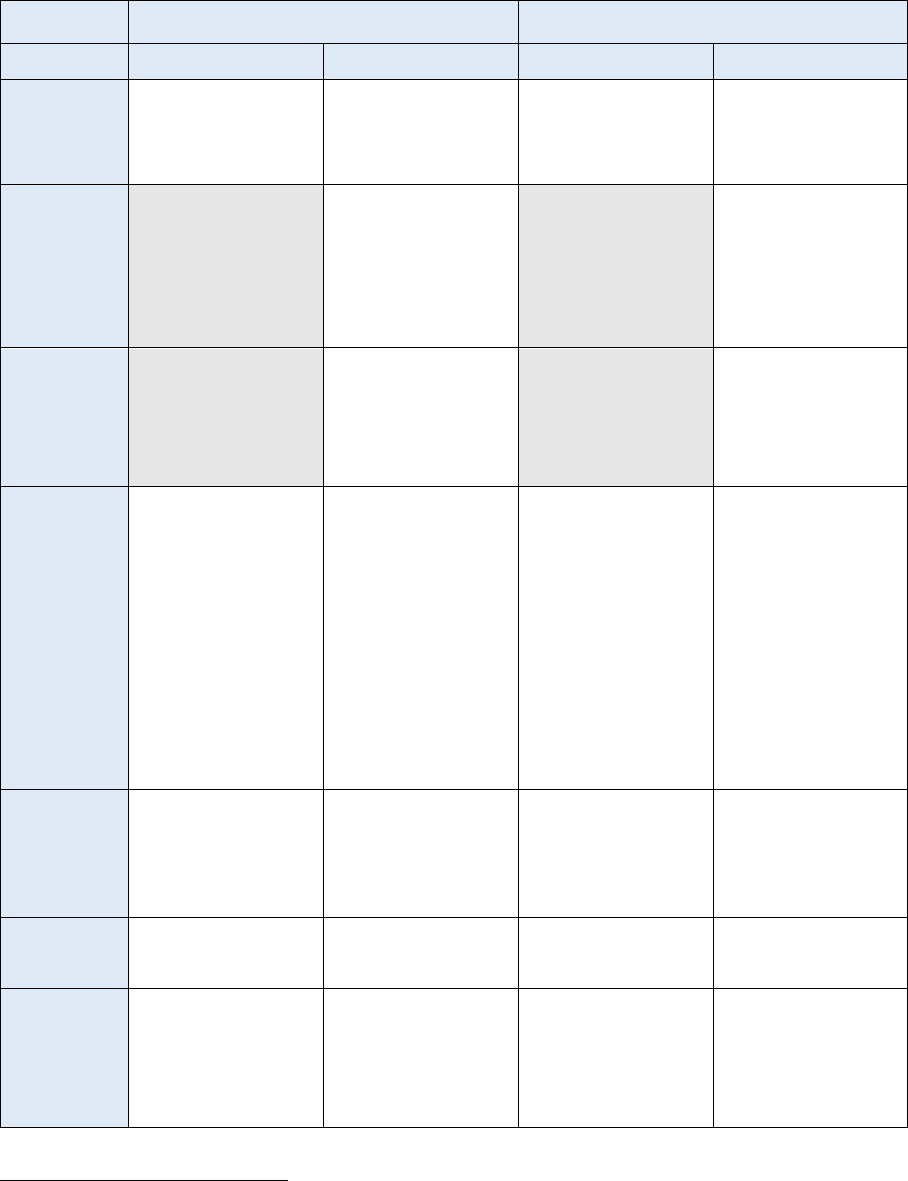
ACER REPORT ON TRANSMISSION AND DISTRIBUTION TARIFF METHODOLOGIES IN EUROPE
88
Country
Application of injection charge and reasons
behind
Actions that preceded the decision to introduce,
to change or to phase-out the injection charge
Transmission
Distribution
Transmission
Distribution
Lithuania
Never applied
(lack of surplus of
electricity generation in
the network)
Never applied
(lack of surplus of
electricity generation in
the network)
Initial discussions about
the need for injection
charge.
No formal studies have
been carried out yet.
Initial discussions about
the need for injection
charge.
No formal studies have
been carried out yet.
Luxembourg
N/A
(no injection is
connected to the T
network)
Never applied
(because D-costs in
Luxembourg are driven
by load; as well to keep
a level playing field for
producers connected in
the common DE-LU
market)
Malta
N/A
(no transmission
network / no TSO)
Yes
👁 Consultation with
system operator and
approval by the
Parliament, since
electricity tariffs in Malta
are established through
National legislation.
The
Netherlands
Yes
Small fixed lump sum
fee that only covers a
very limited set of
transmission costs
(mainly administrative
costs)
196
It is not considered as
an injection charge by
the national law.
Substantial injection
charge is not applied
due to risks of
distortions in cross-
border competition
Yes
Small fixed lump sum
fee that only covers a
very limited set of
distribution costs
(mainly administrative
costs)
197
It is not considered as
an injection charge by
the national law.
Substantial injection
charge is not applied
due to risks of
distortions in cross-
border competition
Norway
Yes
Yes
👁 Consultations with
system or network
operators, concerned
network users;
📜 Impact assessment
studies
👁 Consultations with
system or network
operators, concerned
network users;
📜 Impact assessment
studies
Poland
Never applied
(due to restriction by the
national law)
Never applied
(due to restriction by the
national law)
Portugal
Phased out on 1
January 2022 due to
risks of distortions in
cross-border
competition following
neighbouring country’s
decision to phase out
198
.
Never applied
199
👁 Public consultation
Most stakeholders were
in favour of the phase-
out, having in mind the
elimination in Spain.
Some raised concerns
that the net effect on
196
NL: Grid users that only inject pay only a tariff that is fixed (independent from the energy injected). These fixed tariffs only
contribute to a limited set of fixed distribution costs: administrative costs, costs for facilitating switching, costs for allocation,
verification and validation and the cost of maintaining the register of connections, costs of the administrative processing of
metering data and the billing costs.
197
Idem.
198
PT: The original implementation of the injection charge in Spain was also the main reason for introducing an equivalent tariff
in Portugal.
199
PT: What existed until 31 December 2021 was a T-tariff for injection at transmission level (VHV or HV) and at distribution level
(only HV and MV, not at LV).
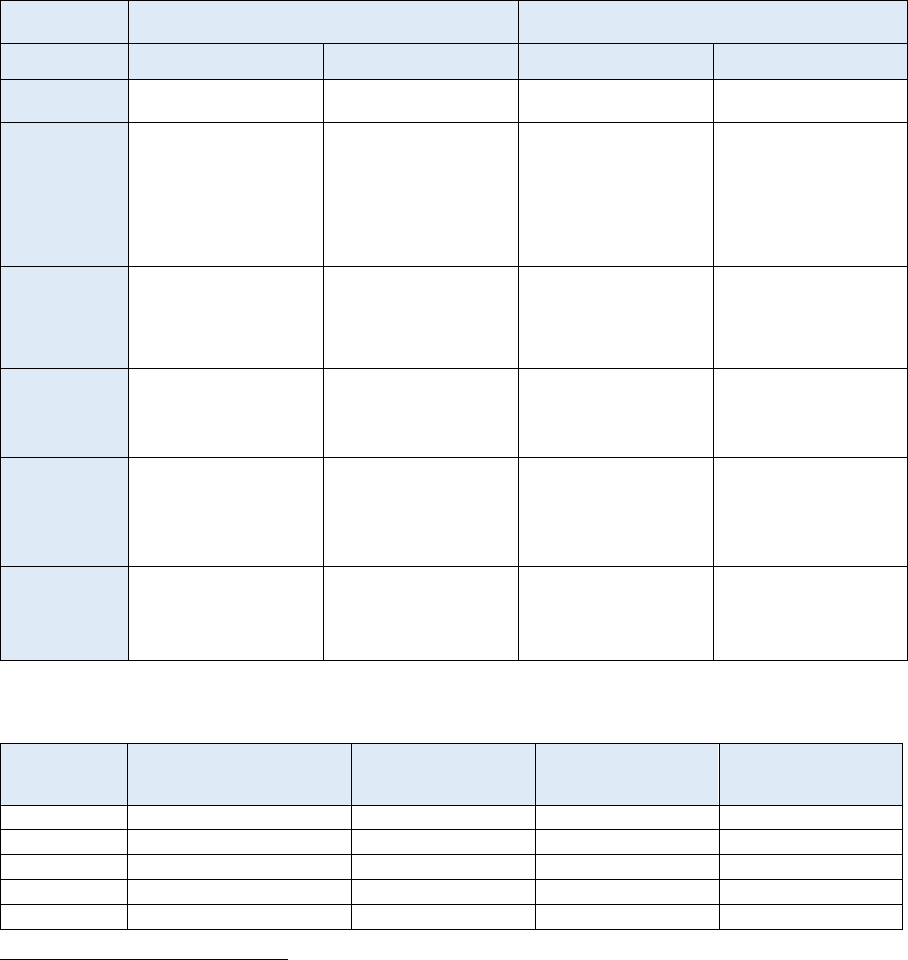
ACER REPORT ON TRANSMISSION AND DISTRIBUTION TARIFF METHODOLOGIES IN EUROPE
89
Country
Application of injection charge and reasons
behind
Actions that preceded the decision to introduce,
to change or to phase-out the injection charge
Transmission
Distribution
Transmission
Distribution
consumers may be
negative
200
.
Romania
Yes
(cost reflectivity)
Never applied
(not to discourage
distributed generation,
which is not yet
sufficiently developed
and have a beneficial
effects on the networks)
National law change
required flat charge for
injection (i.e. without
locational
differentiation)
201
Slovak
Republic
Yes.
(due to better cost
reflectivity)
202
Yes
(due to better cost
reflectivity)
203
👁 Consultation of the
network users
👁 Consultation of
system or network
operators and
concerned network
users.
Slovenia
Never applied
(due to restriction by the
recently repealed
national law)
Never applied
(due to restriction by the
recently repealed
national law)
Spain
Phased out
204
(due to legal change
injection charge could
not be used to provide
locational signal)
Never applied
Sweden
Yes
(due to better cost
reflectivity)
Yes
(due to better cost
reflectivity and avoid
subsidy for export)
205
👁 Consultation of
national stakeholders
206
Table 9: TSO costs (partially) recovered via transmission charges for injection
Country
Costs for building,
upgrading, maintaining
infrastructure
Costs for grid losses
Costs for system
services
Costs for metering,
administrative /
management costs
Austria
X (E)
X (E)
Belgium
X (E)
207
Bulgaria
X (E)
X (E)
X (E)
X (E)
Denmark
X (E)
X (E)
X (E)
Finland
208
No data
No data
No data
No data
200
PT: As producers' new bidding behaviour is not likely to have an effect on the Iberian wholesale market (i.e. not reducing the
price by the amount of the eliminated injection charge), while the transmission tariff for withdrawals will increase to make up for
the lost revenue.
201
RO: In 2017, the electricity law was amended by eliminating the zonal tariffs (for both for injection and withdrawal) to ensure
that all producers pay the same injection charge; before different injection charges were applied for 7 location.
202
SK: Producers are also using transmission grid, therefore they are paying part of T-tariffs
203
SK: Producers are also using distribution grid, therefore they are paying part of D-tariffs
204
ES: According to Article 16.1 of Law 24/2013 tariffs must be unique throughout the national territory. Consequently, G-charges
cannot be used to provide generators location signals. In addition, the G-charge was established in variable terms and eventually
implemented in the price paid by consumers. As a consequence the G-charge has been removed by the Circular 3/2020 and the
entire cost of networks are allocated to demand. There has never been any charges related to ancillary services, system loss
charges, metering charges.
205
SE: Removing fees for producers would significantly increase costs for local consumers and lead to a subsidy for export which
would risk the acceptance for the energy transition as well as the possibility to have industry in rural Sweden.
206
SE: The final tariff methodology designed by the Swedish TSO and formulated after a remittance process with the involved
actors. The actors are included in a reference group that discusses and analyses proposed changes. All changes are approved
by the board of the TSO.
207
BE: Ancillary services reservation costs / part of the balancing reserves costs. Injection tariffs equally share ancillary services
costs among all network users.
208
FI: G-charges consist of fixed capacity fee per MW for power plants and energy-based charge for the use of grid / input into
the grid. The NRA did not have information about which cost categories each tariff basis recover.
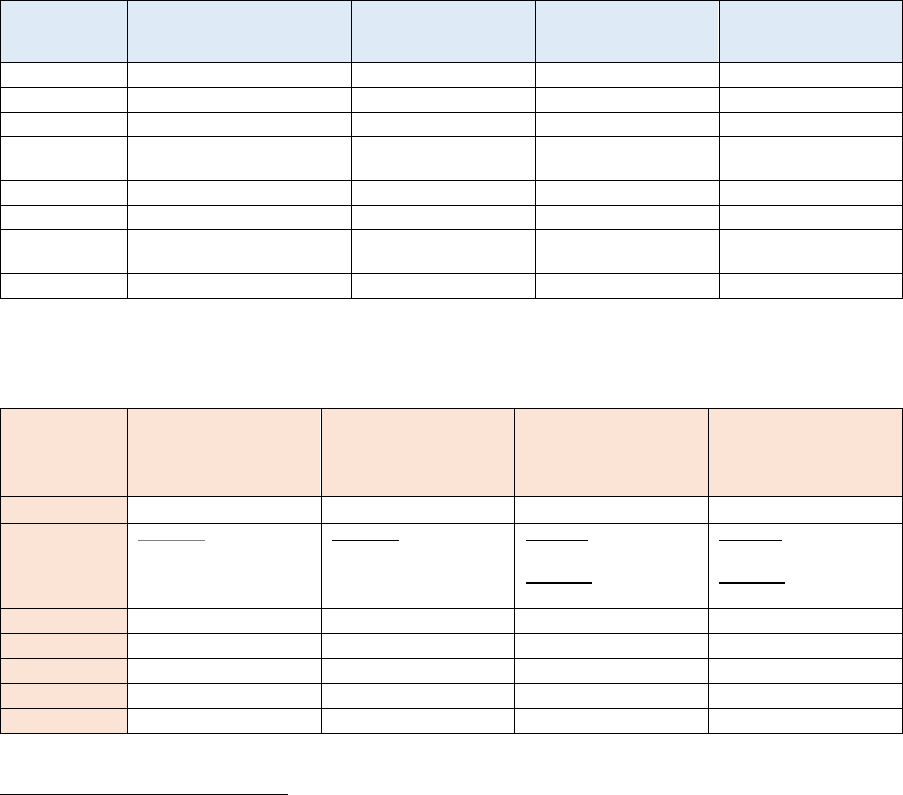
ACER REPORT ON TRANSMISSION AND DISTRIBUTION TARIFF METHODOLOGIES IN EUROPE
90
Country
Costs for building,
upgrading, maintaining
infrastructure
Costs for grid losses
Costs for system
services
Costs for metering,
administrative /
management costs
France
X (E)
209
Ireland
No data
No data
No data
No data
Latvia
210
X (P)
X (P)
X (P)
X (P)
The
Netherlands
X (L)
211
Norway
X (L)
X (E)
X (L)
X (L)
Romania
X (E)
X (E)
212
Slovak
Republic
X (P)
Sweden
213
X (P)
X (E)
X
X (P)
Note: E=energy-based, P=power-based, L=Lump sum
Table 10: DSO costs (partially) recovered via distribution charges for injection
Country
Costs for building,
upgrading and
maintaining the D-
infrastructure
Costs for grid losses
Costs for system
services
Costs for metering,
administrative /
management costs
214
Austria
215
X (E)
X (E)
X (L)
216
Belgium
217
Flanders: X (from Jan.
2023)
Flanders: X (E) (until
Dec. 2022)
Flanders: X (E) (until
Dec. 2022)
Wallonia: X (P,
EUR/kVA
218
)
Flanders: X (E) (until
Dec. 2022)
Wallonia: X (L,
EUR/year)
Denmark
Estonia
219
X (P+ L
220
)
X (P)
X (P)
X (L
221
+ P)
Finland
222
No data
No data
No data
No data
France
X (L)
Germany
223
209
FR: The injection charge covers losses on the national network generated by electricity exports and the part of Inter TSO
Compensation costs associated to losses on the national network.
210
LV: In Latvia, the injection charge aims to recover part of the TSO costs (i.e. it covers multiple cost categories and not dedicated
to a specific cost categories).
211
NL: Administrative costs, costs for the costs of the administrative processing of metering data, the administration of the register
of connections, and the billing costs.
212
RO: Congestion management costs
213
SE: The energy-based charge consist of two parts: marginal loss coefficient (which is computed individually for every user)
and the energy price on the day-before market. The split between the cost recovery of the 2 tariff basis may significantly vary
much from year to year because the energy charge is connected to the electricity market price.
214
Including costs for warnings, disconnection from the grid, etc.
215
AT: The ancillary services are covering approximately 0.6%, the metering charges covered by the producers approximately
0.4 % and the charges for system losses paid by the producers approximately 1.3 % of the D-costs.
216
AT: The metering charge is applied based on the type of meter and is defined as price cap per meter per month.
217
BE (FLA): Until December 2022 D-injection charges for recovery of grid losses, system services and other costs (pension
schemes and local retributions) are applied and recovered via energy-based tariffs. From January 2023 D-injection charges for
recovery of network costs (directly related to injection) will be applied instead.
218
BE (WAL): This depends on the standard profile of the producer: for instance, for producer profile: TMT (MV) wind (22 GWh
– 10 MW – 2200 h – 0% self-consumption): fixed term: 20% - capacity term: 80%; for producer profile: MV (MV) biomass (7820
MWh – 1.15 MW – 6800 h – 50% self-consumption): fixed term: 85% - capacity term: 15%, for producer profile: TBT/BT (LV)
solar (142500 kWh – 150 kW – 950 h –78% self-consumption): fixed term: 5% - capacity term: 95%.
219
EE: the power-based charge is based on contracted power.
220
EE: The lump sum charge recovers part of the DSO costs without aiming a specific cost category. It includes all the costs of
metering but partly also other costs (for example, the costs of administration, management and maintenance of the distribution
network).
221
EE: Idem.
222
FI: Producers usually pay (for injection) a fixed monthly fee (EUR/month lump sum), an energy-based fee (EUR/MWh) and a
generation capacity fee (based on actual maximum capacity)The NRA did not have information about which cost categories each
tariff basis aim to recover and the share of cost recovery by each of them..
223
DE: The “negative injection charge” applies for any avoided network costs of the DSOs.
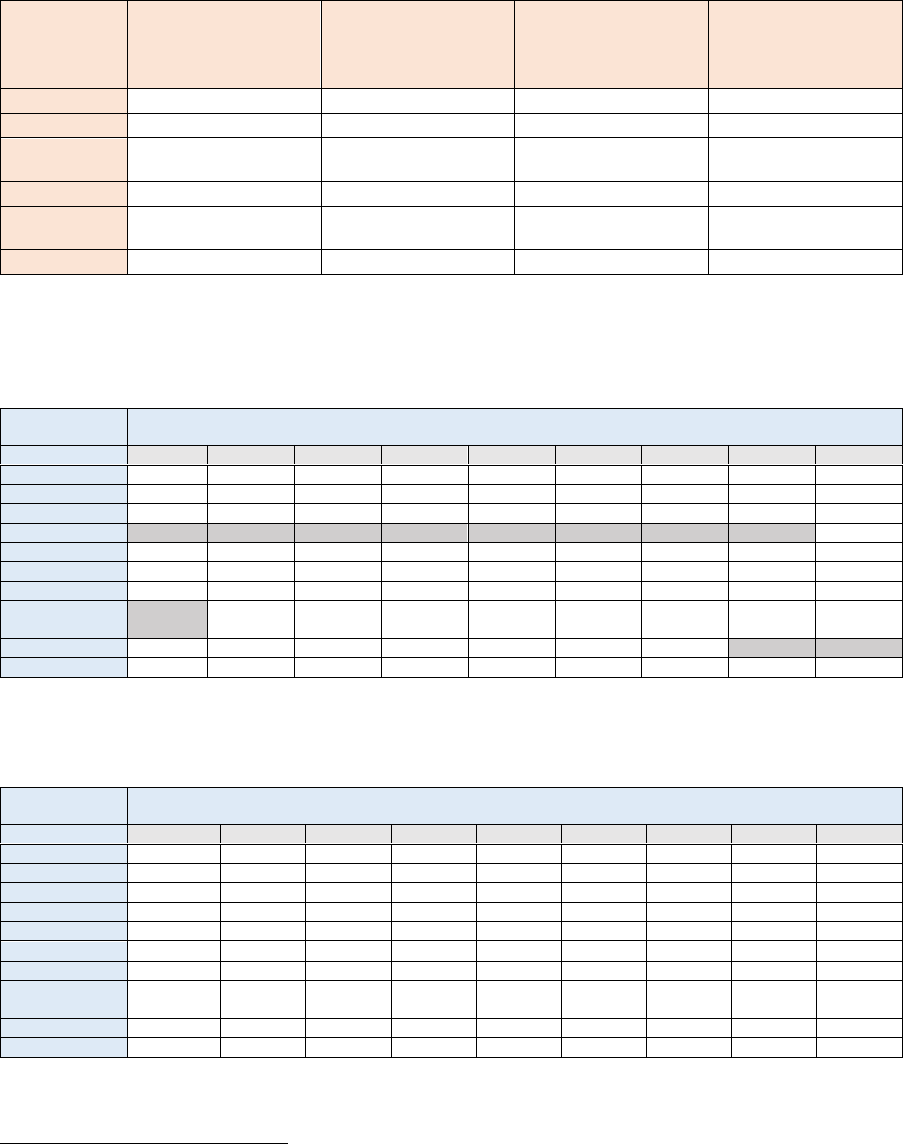
ACER REPORT ON TRANSMISSION AND DISTRIBUTION TARIFF METHODOLOGIES IN EUROPE
91
Country
Costs for building,
upgrading and
maintaining the D-
infrastructure
Costs for grid losses
Costs for system
services
Costs for metering,
administrative /
management costs
214
Latvia
224
X (P)
X (P)
X (P)
X (P)
Malta
X (L, EUR/year)
The
Netherlands
X (L, EUR/year)
Norway
225
X (L)
X (E)
X (L)
X (L)
Slovak
Republic
X (P)
Sweden
226
X (P)
X (P)
X (P)
Note: in parenthesis the respective tariff basis used for the recovery of the cost category is provided. E=energy-
based, P=power-based, L=Lump sum
Table 11: Value for annual total transmission G-Charges paid by the producers [M€]
Country
Value for annual total transmission G-Charges paid by the producers [M€]
2013
2014
2015
2016
2017
2018
2019
2020
2021
Denmark
12.18
11.71
14.21
10.04
10.9
11.1
10.68
10.42
12.01
Finland
30.08
29.7
33.91
44.28
53.53
56.33
No data
No data
No data
Ireland
52.1
60.18
60.0
60.81
58.47
61.94
69.54
75.71
76.66
Latvia
N/A
N/A
N/A
N/A
N/A
N/A
N/A
N/A
2.461
Norway
227
57.14
71.05
No data
69.37
No data
No data
82.9
80.3
No data
Portugal
23.8
24.62
23.97
27.8
25.24
28.06
24.45
24.76
23.29
Romania
117.87
131.89
70.73
20.92
11.43
13.6
12.93
13.25
13.87
Slovak
Republic
N/A
7.84
7.96
7.83
7.77
7.91
8.8
8.9
9.4
Spain
137.49
128.99
131.45
132.5
131.2
130.5
129.2
N/A
N/A
Sweden
228
86.02
85.76
90.49
75
90.58
No data
No data
99.6
101.6
Table 12: Total measured energy injected annually by the producers to the transmission system [TWh]
Country
Total measured energy injected annually by the producers to the transmission system [TWh]
2013
2014
2015
2016
2017
2018
2019
2020
2021
Denmark
30.29
29.04
35.34
28.86
27.62
27.04
26.70
25.89
29.74
Finland
42.97
36.4
37.67
63.23
58.04
60.27
No data
No data
No data
Ireland
25.62
25.78
No data
28.3
29.53
29.3
29.48
30.74
30.12
Latvia
4.599
Norway
57.17
60.68
No data
63.04
No data
No data
29.5
67.2
No data
Portugal
47.3
49.51
48.08
55.82
54.43
56.2
48.7
49.3
46.6
Romania
52.4
57.29
57.79
56.97
56.15
56.94
52.37
49.63
52.79
Slovak
Republic
15.68
15.92
15.74
16.14
15.94
17.5
17.8
18.8
Spain
270.53
257.98
262.91
265.01
262.4
261
258.4
Sweden
105.3
116.6
117.8
118.05
122.34
124.4
No data
120
121
224
LV: In Latvia, the injection charge aims to recover part of the DSO’s costs (i.e. it covers multiple cost categories and not
dedicated to a specific cost categories).
225
NO: 2020: G-charge: 82%, Energy component: 18%
226
SE: In one of the largest DSO area the injection charges differ between the two kinds of distribution networks in Sweden. For
the local grid (max 10kV) it is based on yearly max power produced. Sek/kw, year without any respect to when. For the regional
grid (larger than 10kV) it is based on location and subscribed power. Simplified the distance to closest TSO connection multiplied
by subscribed power and price. They also pay for the injection fees from the TSO (cascading). If they are on the 130kV level they
also in general are seen as increasing our losses and as such pay for produced energy to cover our costs of losses from
production.
227
NO: 9.7 NOK/EUR exchange rate was used for years 2019 and 2020.
228
SE: 10.6 SEK/EUR exchange rate was used for years 2020 and 2021.
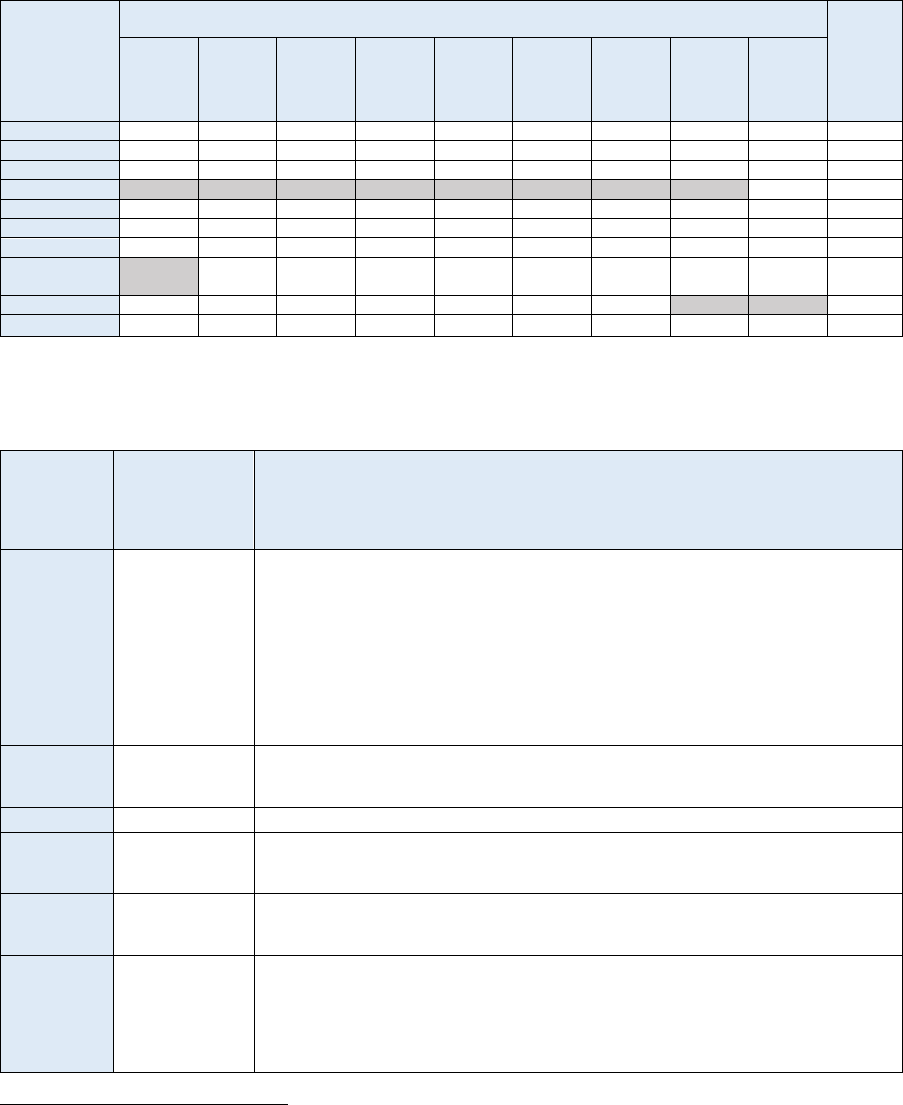
ACER REPORT ON TRANSMISSION AND DISTRIBUTION TARIFF METHODOLOGIES IN EUROPE
92
Table 13: Annual average transmission G-charges paid by producers [€/MWh]
Country
Annual average transmission G-charges paid by producers [€/MWh]
Legal
limit
229
[€/MW
h]
2013
2014
2015
2016
2017
2018
2019
2020
2021
Denmark
0.4
0.4
0.4
0.38
0.4
0.4
0.4
0.4
0.4
1.2
Finland
0.7
0.85
0.9
0.7
0.92
0.93
No data
No data
No data
1.2
Ireland
2.03
2.33
0
2.15
1.98
2.11
2.4
2.5
2.5
2.5
Latvia
N/A
N/A
N/A
N/A
N/A
N/A
N/A
N/A
0.535
0.5
Norway
230
1.00
1.17
1.04
1.1
1.1
1.1
1.1
1.16
1.2
1.2
Portugal
0.5
0.5
0.5
0.5
0.46
0.5
0.5
0.5
0.5
0.5
Romania
231
2.25
1.97
1.22
0.37
0.2
0.24
0.25
0.27
0.26
2
Slovak
Republic
N/A
0.5
0.5
0.4974
0.48
0.5
0.5
0.5
0.5
0.5
Spain
0.5
0.5
0.5
0.5
0.5
0.5
0.5
N/A
N/A
0.5
Sweden
0.83
0.65
0.77
0.63
0.74
No data
No data
0.83
0.84
1.2
Table 14: Percentage of transmission costs covered via injection charges and allocation method
Country
Percentage of
T-costs
covered via
injection
charges
Allocation method of the T-costs between injection charges and withdrawal
charges and methodology for the calculation of T-tariffs for injection
Austria
7%
Recovery of network losses: The charge for network losses is calculated by adding all
costs for network losses and dividing by the quantities supplied and injected. The share
arise by multiplying the injected volumes by the charge for network losses.
Recovery of costs of system services:
According to Section 48 of the Electricity Act 2010, the regulatory authority shall
regularly ex officio establish the allowed cost, targets and volume situation of system
operators with an annual quantity supplied to withdrawing parties of more than 50 GWh
in the calendar year 2008 by official decision.
The allowed cost and the volume situation of other system operators may be established
ex officio by official decision.
Belgium
5%
50% of ancillary services reservation costs are allocated to injection, but with a cap,
which is determined according to a benchmark with neighbouring (NWE) countries'
injection charges.
Bulgaria
No data
No data
Denmark
3.6%
Injection rate for infrastructure has been fixed, and for system services set through a
method. No further description of the method was provided. Remaining costs are
covered through the withdrawal tariff.
Finland
Not available
This Information is not collected by the NRA. G-charges consist of fixed capacity fee per
MW for power plants (without variation) and energy-based charge for the use of grid /
input into the grid.
France
2.9%
The injection charge is calculated as the following: The cost associated with electricity
exports (sum of losses on the national network associated to electricity exports and of
the part of Inter TSO Compensation costs associated to losses on the national network)
is divided by the forecasted energy injection on voltage levels 150 kV and above. The
rest of the costs are covered by withdrawal charges. The current injection charge is 0.23
€/MWh.
229
Upper value of the range set by point 3 of Annex Part B of Commission Regulation (EU) 838/2010 and by the Decision of the
EEA joint Committee No 7/2011.
230
NO: the values in the table refer only to the G-charge, they do not include the additional mark-up for system operation (i.e. 0.2
EUR/MWh in years 2017-2019, 0.05 EUR/MWh in 2020 and 0.17 EUR/MWh in 2021, calculating with 10 NOK/EUR exchange
rate).
231
RO: The value for the annual average transmission G-charges paid by producers is determined by dividing the total revenue
collected from the transmission and distribution-connected producers to the total measured electricity injected into both T-grid
and D-grid.
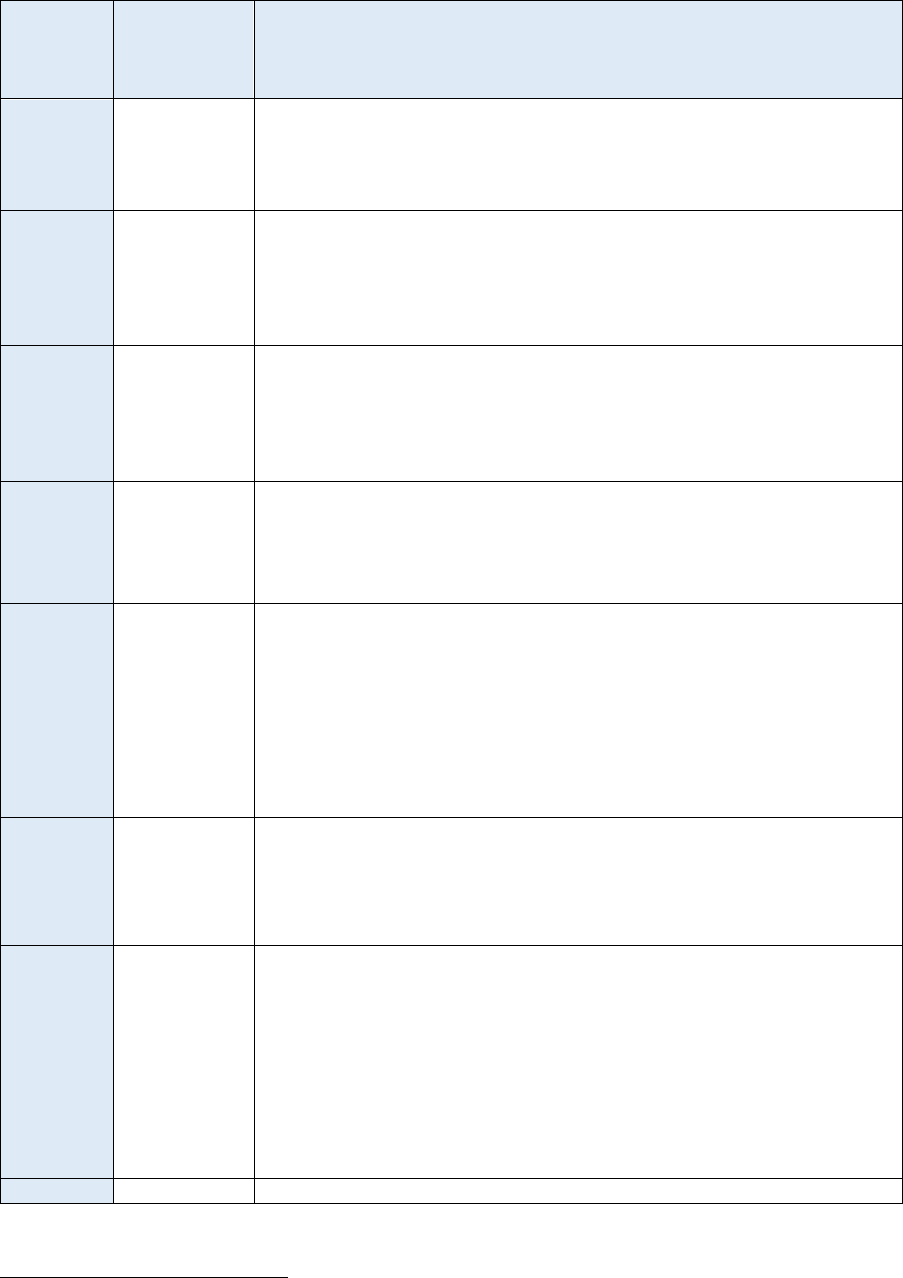
ACER REPORT ON TRANSMISSION AND DISTRIBUTION TARIFF METHODOLOGIES IN EUROPE
93
Country
Percentage of
T-costs
covered via
injection
charges
Allocation method of the T-costs between injection charges and withdrawal
charges and methodology for the calculation of T-tariffs for injection
Germany
Not applicable
The negative injection charge is based on the general network tariffs for withdrawal.
Injection to a certain network level leads to the payment of a negative injection charge
according to the tariff of the upstream level. E.g. if a plant is connected to the LV level,
the negative injection charge is calculated according to the network operator’s tariff for
the MV/LV level. This is due to the assumption that injection to a certain voltage level
avoids withdrawal from the next upstream level.
Ireland
25% (2020)
The Generators Transmission Use of System (G-TUoS) tariffs are calculated individually
for each generator based on the location of its connection to the system. This G-TUoS
charge is capacity based (i.e. based on MEC of generator).The G-TUoS tariff has a
locational element; which is calculated considering the usage of current generation on
future network using a “reverse MW mile” methodology. There is also a Postage Stamp
element which applies evenly to all generators based on their Maximum Export Capacity
(MEC).G-TUoS is set to collect 25% of the approved revenue for network costs.
Latvia
3.2% (2020)
Injection charge is set according to the ceiling set by the EU law for Latvia (i.e. 0.5
EUR/MWh). The total transmission costs recovered via injection charges is calculated
by multiplying the total electricity injected directly into the T-grid (MWh) by 0.5
EUR/MWh (which is the maximal charge set in Regulation for Latvia). The injection
charge is calculated by dividing the above calculated sum (in EUR) by the total installed
generation capacity (MW) connected to the T-grid. The rest of the transmission costs
are recovered by withdrawal charges.
The
Netherlands
Close to 0%
Grid users that only inject pay only a fixed lump sum tariff, which contributes to
administrative costs, processing of metering data, the administration of the register of
connections, and the billing costs. The rest of the costs are recovered through
withdrawal charges.
Due to the small size of this tariff, it is not a relevant factor for producers and could not
disturb a level playing field.
Norway
10,5%
The injection charge includes: a G-charge for infrastructure costs (i.e. CAPEX and
OPEX), a surcharge for system services costs as well as an energy-based charge to
cover marginal losses.
The G-charge and the surcharge for system services costs is a lump sum payment
which is based on a 10-year moving historical average of production and have been
designed in order to be neutral with respect to short-run production decisions and long-
run capacity investment decisions. The charge for each generator is calculated each
year from the average production in previous years
232
(i.e. the charge for 2022 is based
on average production during the years 2011-2020). The generators cannot influence
the annual cost by altering the operational decisions as the yearly amount is given at the
start of the year.
Romania
233
6%
Transmission charge for injection is determined by considering a revenue and an
estimated injected electricity into both transmission grid and distribution grid.
The revenue is corresponding to costs associated to injected electricity: the part of grid
losses related to generated electricity and congestion costs.
Generators pay through the network charge up to one third of the cost of grid losses as
well as the cost of congestion.
Slovak
Republic
No data
T-costs are set independently. NRA sets fixed power-based unit price (EUR/MW) for
access and energy-based (EUR/MWh) for transmitted energy. Basic for the calculation
of this tariff (for access to the transmission system) is rated power of the generation
equipment and their maximum possible injection capacity (MW) (methodology is
published in the TSO technical documentation) and this value is then stated in the
contract.
The coefficient of inclusion of power generators´ reserved capacity (so called G-charge)
shall be - according to the NRA’s Decree - set in such a way so that the planned
payments which power generators connected to the transmission grid make to the TSO
for transmission network access in year t do not exceed the revenue set as
multiplication of 0.5 EUR/MWh and the planned volume of power supplied to the
transmission grid in year t by power generators connected to the transmission grid.
Sweden
234
35%
No data
232
NO: For hydro-power, the charges paid by producers can, to a large extent, be considered as fixed, depending on the amount
of precipitation and inflows to the reservoirs on average during the previous years.
233
RO: Preliminary data
234
SE: The split between the cost recoveries of the 2 tariff basis may vary much from year to year due to that the energy charge
is connected to the electricity market price.
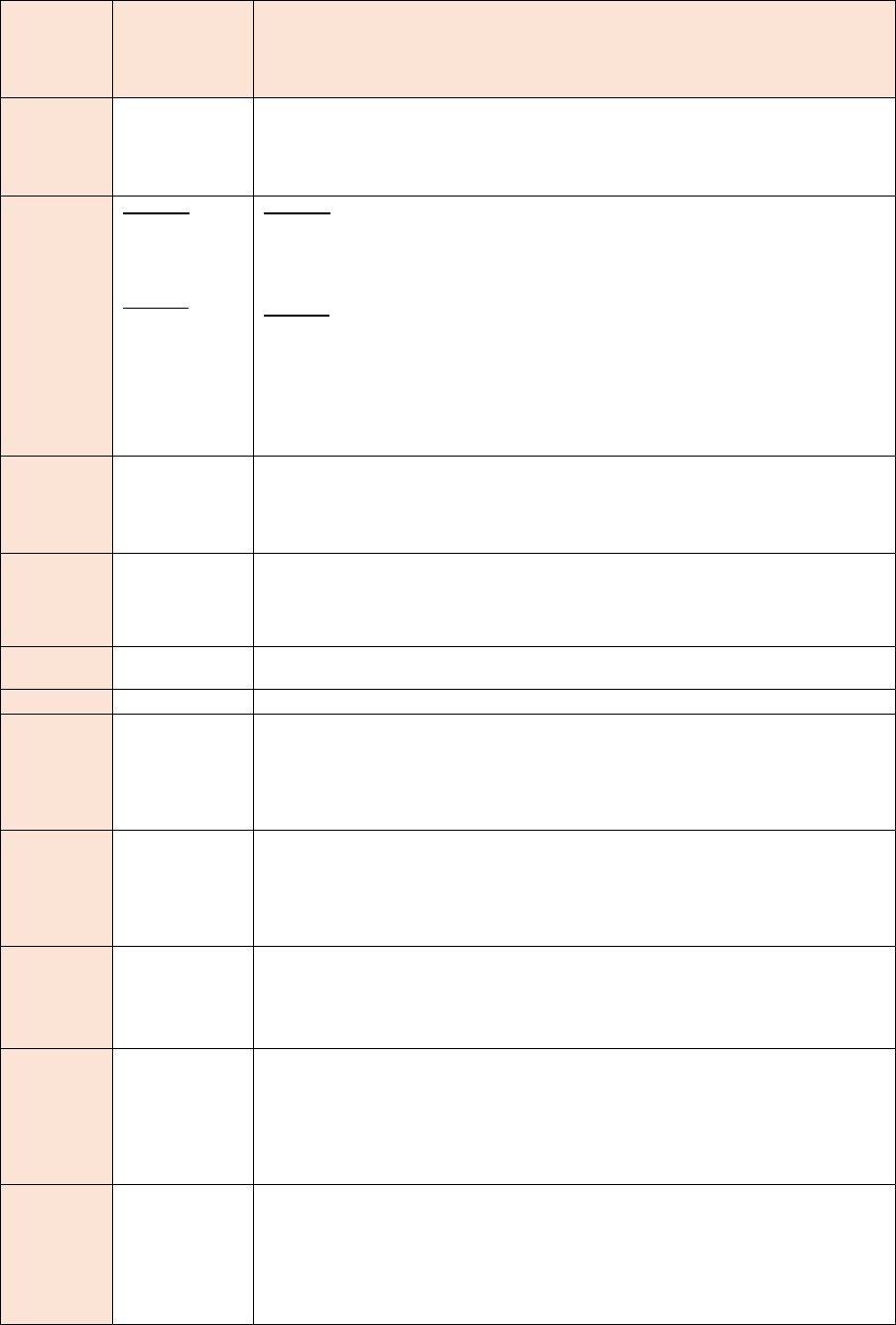
ACER REPORT ON TRANSMISSION AND DISTRIBUTION TARIFF METHODOLOGIES IN EUROPE
94
Table 15: Percentage of distribution costs covered via injection charges and allocation method
Country
Percentage of
D-costs
covered via
injection
charges
Allocation method of the D-costs between injection charges and withdrawal
charges and methodology for the calculation of D-tariffs for injection
Austria
2.4%
Calculating the injection tariffs is done by the same procedure like calculating the
withdrawal charges: This tariff will be set, which meets the allowed revenues as a
multiplication of the quantities consumed by different consumer groups. The share
arises by multiplying the injected volumes by the charge for network losses. The share
is dependent on the injected volumes, it is not a predetermined share.
Belgium
Flanders:
<1%
Wallonia:
1% (2020)
Flanders:
Most costs are allocated to withdrawal. Only the power-based network costs directly
related to a certain voltage level are allocated between injection and withdrawal. The
allocation key is based upon the share of investments directly related to injection
compared to total investments.
Wallonia:
The injection tariffs are determined in such a way that the costs they generate for a
producer correspond to the weighted average of the costs generated by the injection
tariffs applicable in Flanders and Brussels and those applied by Elia (T-level), as well as
by those practiced in neighbouring countries (France, Luxembourg, Germany, the
Netherlands). As far as neighbouring countries are concerned, the comparison can be
made on the basis of a representative sample. The weighting is based on the sum of the
injection capacities installed in these countries or regions.
Estonia
The injection charge consists of a power-based charge set based on contracted power
and a lump sum charge. The charges recover part of the DSO costs without aiming a
specific cost category. The lump sum includes all the costs of metering but partly also
other costs (for example, the costs of administration, management and maintenance of
the distribution network).
Finland
N/A
Under national law, small-scale generation (max 1 MW) connected to the distribution
network may only be allocated part of its costs to the network, and the ceiling for injection
of small-scale generation is 0.07 EUR/kWh. In addition, the distribution injection charge
must cover a relatively smaller share of the distribution network costs than the distribution
withdrawal charge.
France
Yearly management charge, which aims to cover costs related to the management of
producers by the DSO. It is the same between consumers and producers.
Germany
0%
Latvia
0.2%
Injection charge is set according to the ceiling set by the EU law for Latvia (i.e. 0.5
EUR/MWh). The share of distribution costs recovered via injection charges is calculated
by multiplying the total electricity injected directly into the D-grid (MWh) by 0.5
EUR/MWh. The injection charge is calculated by dividing the above calculated sum (in
EUR) by the total installed generation capacity (MW) connected to the D-grid. The rest
of the distribution costs are recovered by withdrawal charges
Malta
Data is not
available to the
NRA
No predetermined shares. Electricity producers on “Export only” mode pay as injection
charge a fixed lump sum tariff, which contributes to metering, administrative and
management costs. Electricity consumers pay a withdraw charge a fixed lump sum,
which contributes as well to metering, administrative and management costs. These
annual lump sums are different according to consumer type and single/three phase
connection.
The
Netherlands
Close to 0%
Grid users that only inject pay only a fixed lump sum tariff, which contributes to
administrative costs, costs for facilitating switching, costs for allocation, verification and
validation and the cost of maintaining the register of connections.
Due to the small size of this tariff it is not a relevant factor for producers and could not
disturb a level playing field.
Norway
4.3%
The injection charge includes: a G-charge for infrastructure costs; a surcharge for
system services costs (energy-based, 10-year moving average – same as G-charge);
an energy-based charge to cover marginal losses.
The G-charge is a lump sum payment which is based on a 10-year moving historical
average of production. The charge applied to each generator is each year calculated from
the average production in previous years (the charge for 2022 is based on average
production during the years 2011-2020).
Slovak
Republic
Approximately
1%
The withdrawal charge has 3 tariff elements: an energy-based tariff element (EUR/kWh)
which is paid for the volume of the withdrawn energy; an energy-based tariff element
(EUR/kWh) which is paid for losses; and a power-based tariff element (EUR/kW) which
is paid for the contracted (reserved) capacity and differs per voltage level.
For injection there is only a power-based charge - paid for 15% of the maximal reserved
capacity multiplied by power-based tariff value (different for different voltage levels).
(The methodology of calculation the tariffs is set in the ÚRSO decree 18/2017.)
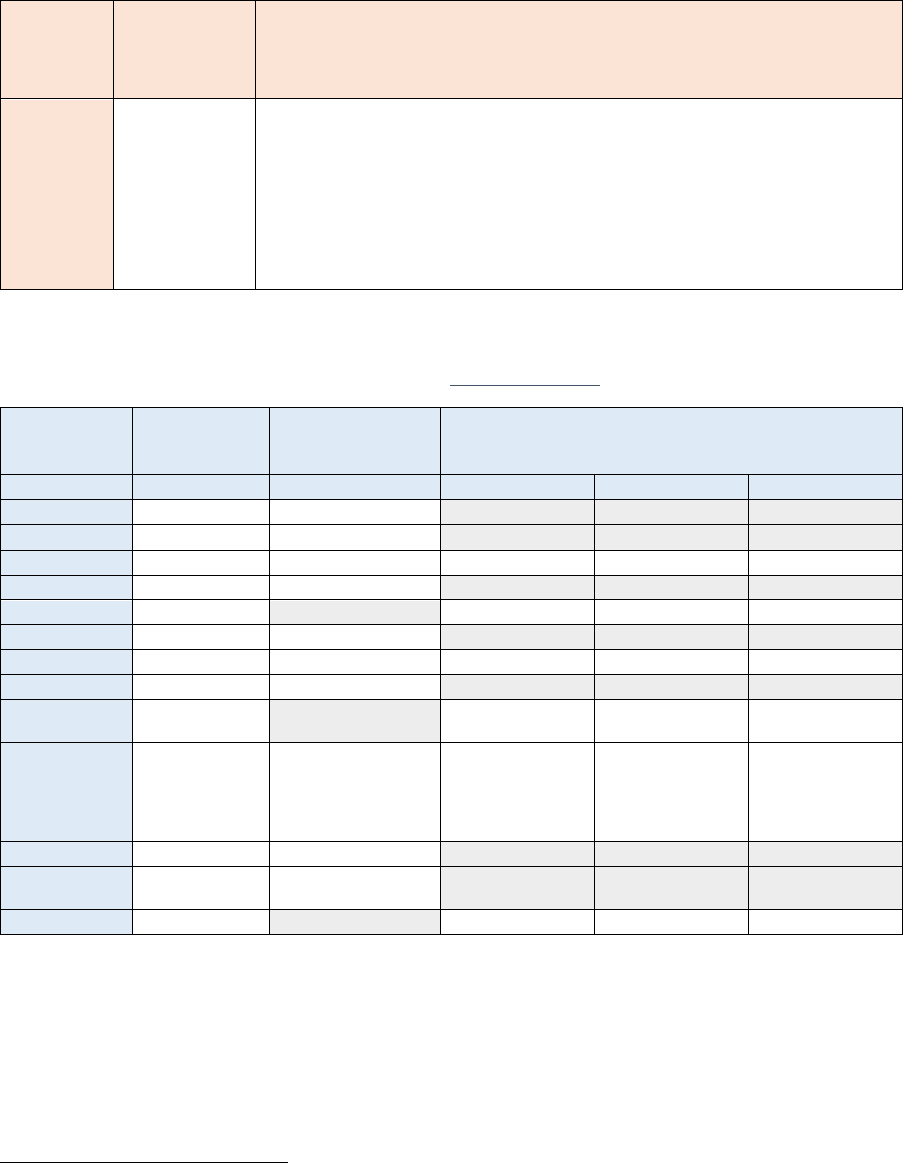
ACER REPORT ON TRANSMISSION AND DISTRIBUTION TARIFF METHODOLOGIES IN EUROPE
95
Country
Percentage of
D-costs
covered via
injection
charges
Allocation method of the D-costs between injection charges and withdrawal
charges and methodology for the calculation of D-tariffs for injection
Sweden
About 30% (in
regional grid of
one of the
largest DSOs)
In one of the largest DSO: Injection charges are calculated first. The withdrawal charges
cover the rest of the costs which are not covered by injection charges. The producers
which provide generation that reduces the losses in the grid get paid an amount that is
based on the energy price (SEK/kWh), since network losses are based on the energy
cost. Since they reduce the cost of the grid they get reimbursed for that cost by the grid
operators. Injection charges are calculated: Cost of transmission injection charge +
distance to transmission grid connection*subscribed production*locational price
(kr/kW*km) + subscribed production*voltage level price (kr/kW). The prices were
calibrated with previous channel price model which calculated cost in relation to how
much of the grid was used.
Table 16: Tariff basis, variation and differentiation of the transmission tariffs for injection
Country
Tariff basis
Flat rate (uniform)
charge without
variation
Variation of
tariffs based on
Voltage
Location
235
Time-of-use
Austria
E
Yes
Belgium
E
Yes
236
Bulgaria
E
No data
Denmark
E
Yes
Ireland
237
P
No data
Yes
No data
Finland
E+P
Yes
France
E
Latvia
P
Yes
The
Netherlands
L
Yes
238
No
No
Norway
L+E
G-charge is flat.
Some variation
applies due to
marginal loss pricing
for generators.
Yes
Romania
E
Yes
Slovak
Republic
P
Yes
Sweden
E+P
No
Yes
239
No
Note: “E” means energy-based charge, “P” means power-based charge, “L” means lump sum charge
235
Variation based on location, unrelated to the connection to a specific network operator (e.g. the network charges are set to be
different to indicate at which locations the electricity is most or least needed)
236
BE: Reservation costs of ancillary services cannot be differentiated by voltage level so a uniform tariff value is applied to each
voltage level.
237
IE: Based on the information provided by the NRA in 2019, Transmission Use of System tariffs are composed of two elements:
(1) a postage stamp which is applied evenly to all generators and calculated based on the generators’ Maximum Export Capacity;
(2) locational signal.
238
NL: The network users that only inject pay only a very limited lump sum administrative fee. This fee does vary between different
voltage levels.
239
SE: The injection charge differs between nodes in the transmission grid (same applies for the withdrawal charge).
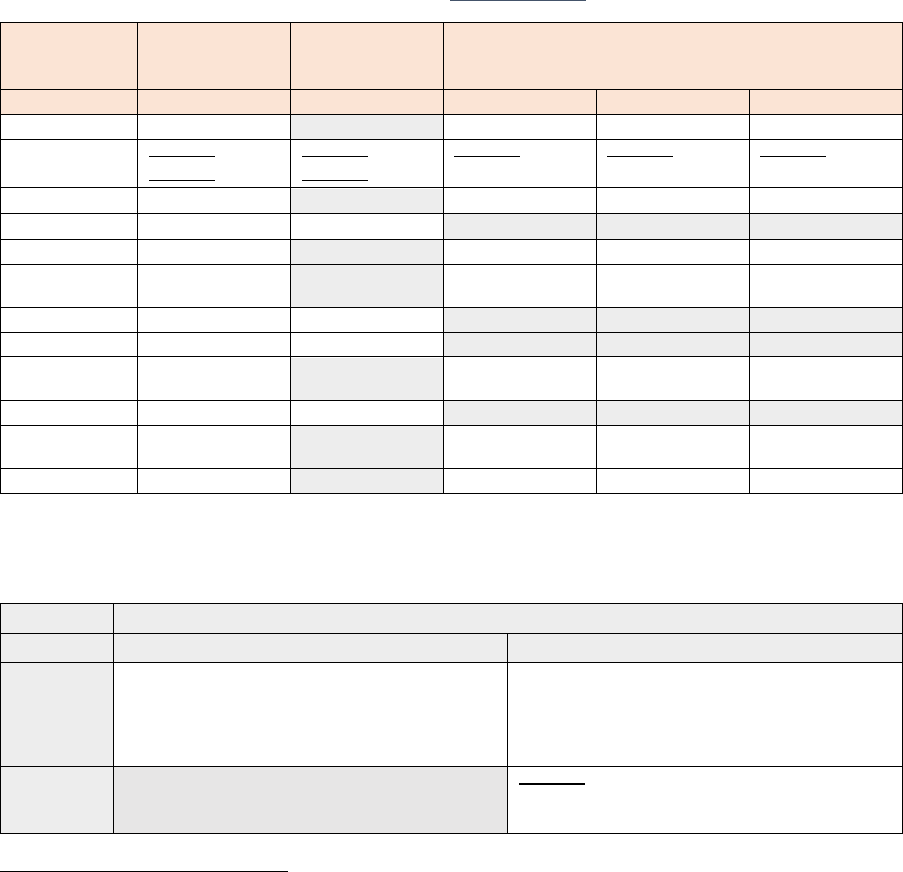
ACER REPORT ON TRANSMISSION AND DISTRIBUTION TARIFF METHODOLOGIES IN EUROPE
96
Table 17: Tariff basis, variation and differentiation of the distribution tariffs for injection
Country
Tariff basis
Flat rate
(uniform) charge
without variation
Variation of
tariffs based on
Voltage
Location
240
Time-of-use
241
Austria
E (+L)
242
Yes
Yes
243
No
Belgium
Flanders: E
Wallonia: E+L
Flanders: Yes
Wallonia: No
Wallonia: Yes
244
Wallonia: No
Wallonia: No
Estonia
P+L
Yes
No
No
Finland
E (+P+L)
245
Yes
France
L
Yes
No
No
Germany
E (negative
injection charge)
Yes
No
No
Latvia
P
Yes
Malta
L
Yes
The
Netherlands
L
Yes
246
No
No
Norway
Yes
Slovak
Republic
247
P
Yes
No
No
Sweden
248
P
Yes
Yes
Yes (some DSOs)
Note: “E” means energy-based charge, “P” means power-based charge, “L” means lump sum charge
Table 18: Exemption, discount or differentiation of unit tariff values or tariff basis between producers
Exemption, discount or differentiation of unit tariff values or tariff basis for some of the producers
Country
T-connected producers
D-connected producers
Austria
Producers with installed capacity up to 5 MW are
exempted from tariffs for injection pursuant to
national law.
Producers with installed capacity up to 5 MW are
exempted from T-tariffs for injection pursuant to
national law.
No differentiation, exemption or discount to any
producers regarding D-tariffs for injection
249
.
Belgium
No differentiation, exemption or discount to any
producers.
Wallonia:
Producers which inject electricity on the LV level and
whose power is less than 10 kVA are exempted
250
.
240
Variation based on location, unrelated to the connection to a specific network operator (e.g. the network charges are set to be
different to indicate at which locations the electricity is most or least needed). D-tariff for injections are different based on the DSO
area to which the user is connected to in several countries/jurisdictions including BE’s Flanders and Wallonia regions, Estonia,
Finland and the Netherlands.
241
It does not take into account differences due to mandatory/voluntary use of time-differentiated tariffs by the network users.
242
AT: The metering charge is applied based on the type of meter and is defined as price cap per meter per month.
243
AT: different tariffs are set for different network areas. Multiple DSOs can operate within a single network area.
244
BE (WAL): The fixed term is expressed in EUR/year and varies according to the voltage level to which is connected the network
user. The capacity charge includes a tariff for flexible injection capacity (currently free of charge) and a tariff for permanent
injection capacity. These tariffs are expressed in EUR/kVA and vary according to the level voltage to which the grid user is
connected.
245
FI: the injection charges are mainly energy-based (with a ceiling set by the national law), but individual DSOs may also have
power-based and/or lump sum charge components in the injection tariff
246
NL: The network users that only inject pay only a very limited lump sum administrative fee. This fee does vary between different
voltage levels.
247
SK: injection charge is fixed price value, depending on maximal reserved capacity (MRC) of generator connection to the
distribution system - Injection charge = 15% *MRC * distribution tariff value (different for different voltage levels).
248
SE: Tariff varies depending on voltage level and location (Note: the practice was provided for one of the largest DSOs). But
tariff also varies amongst the DSOs.
249
AT: The charge for network losses is the same for all the generators (and also for other consumers).
250
BE (WAL): Article 4 of the decree of the Walloon Parliament of 19 January 2017 relating to the D-tariff methodology provides
that the "tariffs for the use of a distribution network, applicable to production units, can be differentiated according to the
technology of these units and their date of commissioning. These tariffs are determined taking into account any criterion
considered relevant by CWaPE, such as a comparison with neighbouring countries and in consultation with all the players, so as
not to jeopardize the country's security of supply by decline in the competitiveness of the production units concerned. In the tariff
proposal accompanied by the budget, the distribution network operator justifies these differentiations”.

ACER REPORT ON TRANSMISSION AND DISTRIBUTION TARIFF METHODOLOGIES IN EUROPE
97
Exemption, discount or differentiation of unit tariff values or tariff basis for some of the producers
Country
T-connected producers
D-connected producers
Flanders:
No differentiation, exemption or discount to any
producers.
Bulgaria
The NRAs reported difference between RES vs.
non-RES producers but the difference has not been
specified.
No information has been provided by the NRA.
Denmark
Some RES producers have been exempted through
legislative acts, not as part of the tariff methodology.
However, these exemptions are not available
anymore for new producers.
Some RES producers have been exempted through
legislative acts, not as part of the tariff methodology.
Finland
No differentiation, exemption or discount to any
producers.
Some DSOs do not apply injection tariff for small
power producers.
France
Producers who are connected to lower than 150 kV
voltage level are exempted. Reasoning: the costs
covered by the injection charge (losses caused by
exported electricity and losses linked to ITC) are
directly imputable to producers connected at 225
and 400 kV.
Ireland
For the capacity up to 5 MW each distribution-
connected generator is exempted from transmission
network charges. From 5 MW onwards there is an
incremental rule; e.g. a 7 MW generator is charged
for 2 MW (7-5 MW), etc.
Malta
The metering, administrative and management fee
is different for RES producers compared to the two
non-RES producers (large fossil fuel power plants)
having a PPA with the DSO.
The metering, administrative and management fee
is lower for residential producers than for non-
residential producers
251
.
Norway
No differentiation, exemption or discount to any
producers.
No differentiation, exemption or discount to any
producers.
Romania
Producers whose installed capacity is lower than 5
MW are exempted from T-tariff for injection. Reason:
Generated electricity from D-connected producers
with installed capacity up to 5 MW is consumed in
D-grid and don't use T-grid.
Slovak
Republic
Power-based tariff for access to the grid is not paid
by ancillary services providers.
Power-based tariff for access to the grid is not paid
by ancillary services providers.
Sweden
The information is not available to the NRA.
DSOs may apply some differentiation, exemption or
discount to some producers, e.g. depending on the
size of the producer, but this information is not
available to the NRA, since the DSOs are free to
design their own tariffs. In one of the biggest DSO
areas the injection charges are only applied to
network users who have a capacity for production
larger than the capacity to consume.
Producers below 1500 kW are exempted from part
of injection charges according to the national law
and pay only for metering and similar.
Table 19: Transmission and distribution tariffs for storage facilities
Country
T-connected storage
D-connected storage
Injection charge
Withdrawal charge
Injection charge
Withdrawal charge
Austria
Energy-based charge
paid for T-costs
Energy-based and
power-based charge
paid for T-costs
(reductions apply)
No D-connected non-
PHES storage
No D-connected non-
PHES storage
Energy-based and
power-based charge
251
MT: on "export only" mode different lump sum payments depending on whether the producer is residential/domestic or non-
residential as well as different lump sum payments depending if the connection is single phase or three phase.

ACER REPORT ON TRANSMISSION AND DISTRIBUTION TARIFF METHODOLOGIES IN EUROPE
98
Country
T-connected storage
D-connected storage
Injection charge
Withdrawal charge
Injection charge
Withdrawal charge
Energy-based charge
paid for both T and D-
costs
paid for both T and D-
costs
(reductions apply)
Belgium
Energy-based charge
paid for T-costs
(exemptions exist for
some storages)
Energy-based and
power-based charge
paid for T-costs
(exemptions exist for
some storages)
Brussels:
(No D-connected PHES
storage)
Flanders:
Energy-based charge
paid for D-costs only
Wallonia:
Power-based charge
paid for D-costs only
(No D-connected PHES
storage)
Brussels:
(No D-connected PHES
storage)
Flanders:
Energy-based and
power-based charge
paid for D-costs only
Wallonia:
Energy-based and
power-based charge
paid for D-costs only
(No D-connected PHES
storage)
Bulgaria
Not subject to injection
charges
(only PHES storage
connected to the T-grid)
Energy-based charge
paid for T-costs
(only PHES storage
connected to the T-grid)
(No storage facilities
are connected to the D-
grid yet)
(No storage facilities
are connected to the D-
grid yet)
Croatia
No injection charge
applies in the country
until end 2022.
(Only PHES storage
connected to the T-grid)
Energy-based and
power-based charge
paid for T-costs
No injection charge
applies in the country
until end 2022.
Energy-based and
power-based charge
paid for both T and D-
costs
252
Cyprus
No injection charge
(No storage facilities
are connected to the T-
grid yet)
No injection charge
Not subject to
withdrawal charges:
(No storage facilities
are connected to the D-
grid yet. If connected
directly to the D-grid, it
would not be subject to
any network charge
beyond the connection
charge.)
253
Czech
Republic
No injection charge
(Only PHES storage
connected to the grid)
Energy-based charge
paid for T-costs (no
power-based
component unlike
consumers)
(some exemptions
apply)
No injection charge
(Only PHES storage
connected to the grid)
Energy-based charge
paid for T-costs (no
power-based
component unlike
consumers)
(some exemptions
apply)
Denmark
Energy-based charge
paid for T-costs
Energy-based charge
paid for T-costs
No injection charge
applies until end 2022.
From 2023, energy-
based charge paid for
both T and D-costs
Energy-based charge
paid for both T and D-
costs
Estonia
No storage facilities are
connected to the T-grid
yet
No storage facilities are
connected to the T-grid
yet
No storage facilities are
connected to the D-grid
yet
No storage facilities are
connected to the D-grid
yet
Finland
No PHES storage
facilities are connected
yet
Energy-based and
power-based charge
paid for T-costs by non-
PHES storage facilities
No PHES storage
facilities are connected
yet
Energy-based and
power-based charge
paid for T-costs by non-
PHES storage facilities
No commercial storage
facilities are connected
to the D-grid yet
Energy-based, power-
based and lump sum
charge paid for T-costs
only
No commercial storage
facilities are connected
to the D-grid yet
Energy-based, power-
based and lump sum
charge for both T and D
costs
France
Energy-based charge
paid for T-costs
Energy-based and
power-based charge
paid for T-costs
Don’t pay an injection
charge for T-costs and
there is no injection
charge for D-costs
Energy-based, power-
based and lump sum
charge paid for both T
and D-costs
252
HR: Power-based charge only has to be paid during peak periods.
253
CY: Cf. CERA's Regulatory Decision No. 3/2019. This exemption aims to incentivise storage installations.

ACER REPORT ON TRANSMISSION AND DISTRIBUTION TARIFF METHODOLOGIES IN EUROPE
99
Country
T-connected storage
D-connected storage
Injection charge
Withdrawal charge
Injection charge
Withdrawal charge
Germany
No injection charge
Energy-based and
power-based charge
paid for T-costs
Negative injection
charge also applies to
storage facilities if they
inject into the grid.
Energy-based and
power-based charge
paid for both T and D-
costs
Greece
No injection charge
Energy-based and
power-based charge
paid for T-costs
(Note: No T-connected
non-PHES storage)
No injection charge
(No storage facilities
are connected to the D-
grid yet)
No storage facilities are
connected to the D-grid
yet
Hungary
No injection charge
Energy-based charge
paid for T-costs
(No T-connected non-
PHES storage)
No injection charge
Energy-based, power-
based and lump sum
charge paid for both T
and D-costs
(No T-connected non-
PHES storage)
Ireland
Power-based injection
charge for T-costs.
Energy-based and
power-based charge
paid for T-costs
D-connected network
users do not pay an
injection charge for D-
costs.
(exemptions apply)
(No PHES storage is
connected to the D-
grid.)
Energy-based and lump
sum charge is paid for
both T and D-costs by
storage facilities.
(No PHES storage is
connected to the D-grid)
Italy
254
No injection charge
Not subject to
withdrawal charges
No injection charge
Not subject to
withdrawal charges
Latvia
(No storage facilities
are connected to the T-
grid yet)
(No storage facilities
are connected to the T-
grid yet)
(No storage facilities
are connected to the D-
grid yet)
(No storage facilities
are connected to the D-
grid yet)
Lithuania
No injection charge
Energy-based and
power-based charge
paid for T-costs
(few exceptions defined
by national law)
No injection charge
(No storage facilities
are connected to the D-
grid yet)
Energy-based charge
paid for both T and D
costs
Luxembourg
No injection charge
(No storage facilities
are connected to the T-
grid yet.)
No storage facilities are
connected to the T-grid
yet. If connected, they
would be treated for
withdrawal the same
way as consumers (i.e.
energy-based and
power-based charge for
T-costs)
No injection charge
(No storage facilities
are connected to the D-
grid yet.)
No storage facilities are
connected to the T-grid
yet. If connected, they
would be treated for
withdrawal the same
way as consumers (i.e.
energy-based, power-
based charge or
energy-based and lump
sum charge paid for
both T and D-costs)
Malta
No transmission
network
No transmission
network
Not subject to injection
charges
(No PHES storage)
Energy-based, power-
based and lump sum
charge paid for D-costs
(No PHES storage)
The
Netherlands
255
Not subject to injection
charges
Power-based and lump
sum charge for T-costs
Not subject to injection
charges
(No D-connected PHES
storage yet)
Energy-based, power-
based and lump sum
charge paid for both T
and D-costs
Norway
Marginal losses only
(could be either positive
or negative)
Charged as consumers:
Marginal losses +
Marginal losses only
(could be either positive
or negative)
Charged as consumers:
Marginal losses +
254
IT: Regulatory decision 574/2014 extended the no-charging of pumped hydro to other storage facilities (pure storage). The
consultation preparing decision 574 stated the reason of "equal treatment". The no-charging of pumped hydro plants was
introduced by decision 348/2007, together with the no-charging of auxiliary generation services. In the consultation before the
decision, it was stated that the duration of withdrawal of auxiliary services is very low (ranging from 50 to 350 hours/year),
therefore justifying a different treatment.
255
NL: For withdrawing, storage pays the same tariff as consumers (connected at the same voltage level). For injecting, storage
does not pay the lump sum administrative fee because it pays this fee as consumer and therefore the administrative costs have
already been recovered.
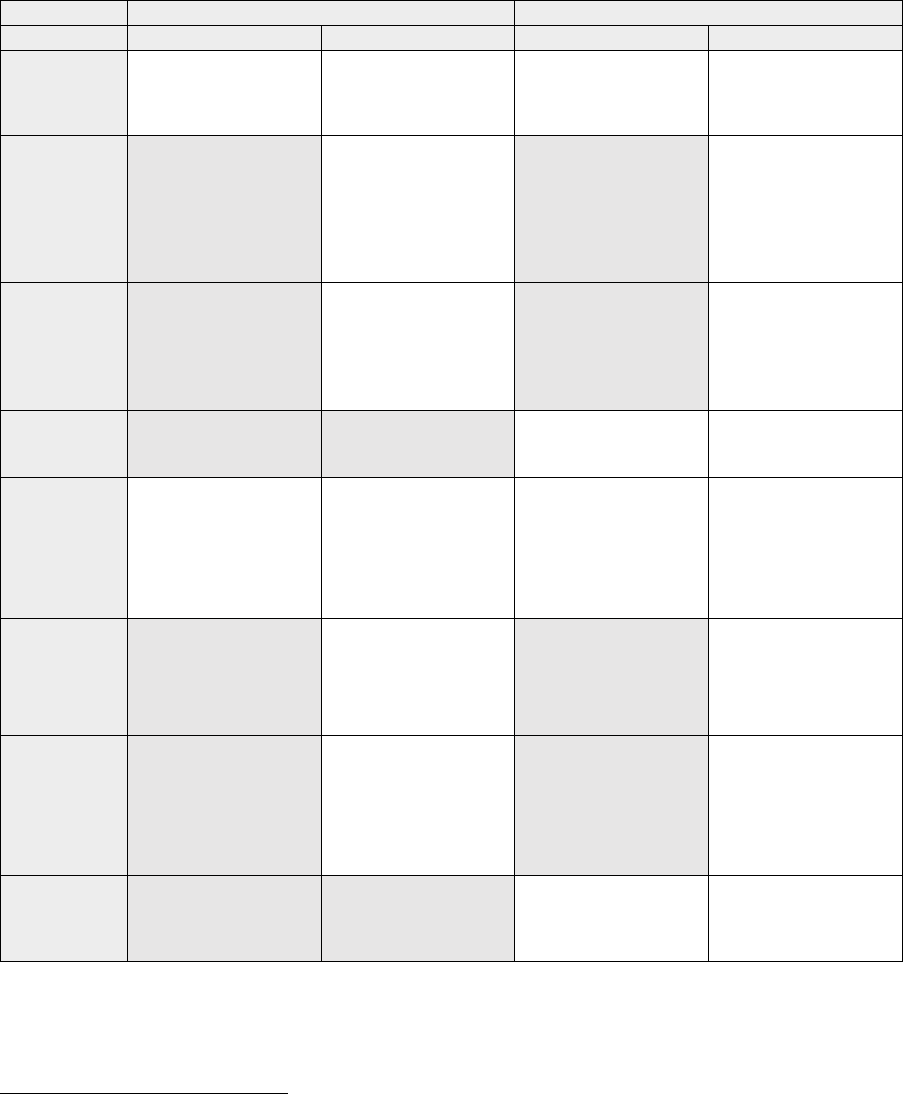
ACER REPORT ON TRANSMISSION AND DISTRIBUTION TARIFF METHODOLOGIES IN EUROPE
100
Country
T-connected storage
D-connected storage
Injection charge
Withdrawal charge
Injection charge
Withdrawal charge
(Only PHES storage is
connected to the T-grid)
power-based fixed
charge.
(Only PHES storage is
connected to the T-grid)
power-based fixed
charge
Poland
256
No injection charge
(Only PHES storage is
connected to the T-grid)
Energy-based and
power-based charge
paid for T-costs
(Only PHES storage is
connected to the T-grid)
(based on net
withdrawal)
257
No injection charge
Energy-based, power-
based and lump sum
charge paid for both T
and D-costs
Portugal
No injection charge
(only PHES storage is
connected to the T-grid)
Energy-based and
power-based charge
paid for T-costs
258
(only PHES storage is
connected to the T-grid)
(exemptions apply)
No injection charge
Energy-based and
power-based charge
paid for both T and D-
costs
259
(exemptions apply)
Romania
No storage facilities are
connected to the T-grid
yet
No storage facilities are
connected to the T-grid
yet
Energy-based charge
paid for T-costs only
(exemptions apply)
Energy-based charge
paid for both T-costs
and D-costs
Slovak
Republic
Power-based charge
paid for T-costs (some
exemptions apply)
Only PHES storage is
connected to the T-grid
(i.e. no batteries).
Energy-based and
power-based charge
paid for T-costs (some
exemptions apply)
Only PHES storage is
connected to the T-grid
(i.e. no batteries).
Power-based charge for
D-costs only
(some exemptions
apply)
Energy-based and
power-based charge for
both T and D-costs
(some exemptions
apply)
Slovenia
No injection charge
Not subject to
withdrawal charges (as
energy conversion was
exempted from network
charges by national
law)
260
No injection charge
Not subject to
withdrawal charges (as
energy conversion was
exempted from network
charges by national
law)
261
Spain
No injection charge
Not subject to
withdrawal charges
(due to shift of charges
to final consumers and
for the purpose of
increasing security of
supply)
No injection charge
Not subject to
withdrawal charges
(due to shift of charges
to final consumers and
for the purpose of
increasing security of
supply)
Sweden
Subject to injection
charges. (No storage
facilities are connected
to the T-grid yet)
Subject to withdrawal
charges. (No storage
facilities are connected
to the T-grid yet)
Power-based and lump
sum charge
(some exemptions exist
in some DSO areas)
Energy-based and lump
sum charge
(some exemptions exist
in some DSO areas)
Note: If a D-connected network user is indirectly charged for T-costs (e.g. the transmission withdrawal tariffs are
paid by the distribution system operators (DSO's) and this costs is shifted further to a D-connected network users)
it is still considered as a payment for T-costs by a D-connected network user.
256
PL: Storages are charged according to the special rules defined in the Energy Law Act amended in 2021 and settlements
coming into force from 2022. Settlement with energy storage facilities is based on the balance of energy withdrawn and injected
into the grid.
257
PL: PHES facilities are charged according to the special rules defined in the Energy Law Act amended in 2021 and settlements
coming into force from 2022. At the moment batteries are not connected to the transmission grid in Poland. Settlement with
energy storage facilities is based on the balance of energy withdrawn and injected into the transmission grid.
258
PT: PHES facilities are exempted from withdrawal charges. Non-PHES autonomous storage facilities (e.g. standalone
batteries) are not exempted from withdrawal charges in T-tariffs.
259
PT: PHES facilities are exempted from the payment of D-tariffs for electricity used for the pumping water (other electricity
needs, such as lighting, is subject to regular payment of network charges), which is a regime that exists for many years, and
reflects the particular role of pumped-hydro for the balance of the system. Autonomous storage facilities (e.g. standalone
batteries) are not exempted from withdrawal charges in D-tariffs.
260
SI: With new Electricity Supply Act (valid from October 2021) this was changed and will be implemented in new tariff system
as defined by NRA.
261
SI: Idem.

ACER REPORT ON TRANSMISSION AND DISTRIBUTION TARIFF METHODOLOGIES IN EUROPE
101
Table 20: Exemption, discount or differentiation of unit tariff values or tariff basis between storage facilities
Exemption, discount or differentiation of unit tariff values or tariff basis for some of the storage
facilities vs. other storage facilities
Country
T-connected storages
D-connected storages
Austria
Difference between pumped-hydro and other
storage facilities (e.g. batteries); Reasoning: due to
the large scale options to act supportive for the
transmission grid a separate network-charge (only
for the load-based tariff component) for pumped-
hydro storage is in place (they do not pay any of
the grid utilisation charges and charge for network
losses for a period of 15 years from the time they
are commissioned.)
The pumped-hydro storage facilities pay reduced
network charge compared to other storage facilities
(e.g. batteries), (i.e. they do not pay any of the grid
utilisation charges and charge for network losses
for a period of 15 years from the time they are
commissioned.)
(Currently there is no D-connected non-PHES
storage facility, but they would pay the same
charge as consumers.)
Belgium
New storage facilities, commissioned after July
2018, receive a full exemption of all network tariffs
(except connection charges) during the first 10
years, while former storage facilities where a
substantial capacity increase was commissioned
after July 2018 receive a 80% discount on all
access transmission tariffs during the first 5
years
262
.
No differentiation, exemption or discount to any
storage facilities.
Bulgaria
No non-PHES storage connected to the T-grid.
Regarding the charging of PHES storage no
information has been provided
No storage facilities are connected to the D-grid
yet.
Croatia
No differentiation, exemption or discount to any
storage facilities.
No differentiation, exemption or discount to any
storage facilities.
Cyprus
No storage facilities are connected to the T-grid
yet. No differentiation between storage facilities.
No storage facilities are connected to the D-grid
yet. No differentiation between storage facilities.
Czech
Republic
Only PHES storage connected to the grid. If it were
connected, non-PHES storage is not subject to
exemption from power-based component.
Reasoning: historically, PHESs offered essential
balancing services.
Only PHES storage connected to the grid. If it were
connected, non-PHES storage is not subject to
exemption from power-based component.
Reasoning: historically, PHESs offered essential
balancing services.
Denmark
No differentiation, exemption or discount to any
storage facilities
No differentiation, exemption or discount to any
storage facilities.
Estonia
No storage facilities are connected to the T-grid
yet. No differentiation between storage facilities.
No storage facilities are connected to the D-grid
yet. No differentiation between storage facilities.
Finland
No PHES storage is connected to the T-grid yet.
No differentiation, exemption or discount to any
storage facilities.
No commercial storage facilities are connected to
the D-grid yet.
France
Some PHES are partially exempted (their
withdrawal tariffs are reduced The condition is:
withdrawing more than 10 GWh/year and having an
utilisation rate of more than 44% in low hours)
No differentiation, exemption or discount to any
storage facilities.
Germany
263
PHES whose pump capacity or turbine power
increased by at least 7.5% or whose storage
capacity increased by at least 5% after 04.08.2011
are fully exempted for the first 10 years. Non-PHES
storage facilities built after
31.12.2008 and put into operation within 15 years
from 04.08.2011 are fully exempted for the first 20
years of operation.
PHES whose pump capacity or turbine power
increased by at least 7.5% or whose storage
capacity increased by at least 5% after 04.08.2011
are fully exempted for the first 10 years. Non-PHES
storage facilities built after
31.12.2008 and put into operation within 15 years
from 04.08.2011 are fully exempted for the first 20
years of operation.
Greece
No differentiation, exemption or discount to any
storage facilities.
No differentiation, exemption or discount to any
storage facilities.
Hungary
No differentiation, exemption or discount to any
storage facilities.
No differentiation, exemption or discount to any
storage facilities.
Ireland
One PHES (i.e. Turlough Hill) is fully exempted.
For the capacity up to 5 MW each distribution-
connected storage is exempted from transmission
network charges.
262
BE: The objective is to promote storage development for Flex/SoS reasons. No reassessment is foreseen yet.
263
DE: BNetzA is at the current state not in charge of deciding upon the network tariffs. BNetzA deems the basic structure
according to which storages are treated as regular network users and only charged for their energy withdrawal fair. There are
also some specific rules allowing for discounts for certain storage facilities.

ACER REPORT ON TRANSMISSION AND DISTRIBUTION TARIFF METHODOLOGIES IN EUROPE
102
Exemption, discount or differentiation of unit tariff values or tariff basis for some of the storage
facilities vs. other storage facilities
Country
T-connected storages
D-connected storages
From 5 MW onwards there is an incremental rule;
e.g. a 7MW storage is charged for 2MW (7-5MW),
etc.
Italy
Not applicable, storage is not subject to network
tariffs
Not applicable, storage is not subject to network
tariffs
Lithuania
No differentiation, exemption or discount to any
storage facilities.
Batteries smaller than 1MW exempted from all
network tariffs.
There is a different energy withdrawal counting for
batteries >1MW - the energy for charging the
battery, which later will be used for T-network
stability is not charged with T-tariff nor D-tariff.
Luxembourg
No differentiation, exemption or discount to any
storage facilities.
No differentiation, exemption or discount to any
storage facilities.
Malta
Not applicable, no transmission network
No differentiation, exemption or discount to any
storage facilities.
The
Netherlands
No differentiation, exemption or discount to any
storage facilities (but the practice is under
revision)
264
No differentiation, exemption or discount to any
storage facilities
Norway
No differentiation, exemption or discount to any
storage facilities.
No differentiation, exemption or discount to any
storage facilities.
Poland
No differentiation, exemption or discount to any
storage facilities, but all storage facilities pay a
reduced fixed T-charge compared to the T-charge
paid by consumers
265
No differentiation, exemption or discount to any
storage facilities.
Portugal
PHES is exempted from T-withdrawal charges.
Autonomous storage facilities pay withdrawal
charges for T-costs.
PHES is exempted from the payment of D-
withdrawal tariffs
266
to reflect the particular role of
PHES for the balance of the system.
Autonomous storage facilities (e.g. standalone
batteries) are not exempted from D-tariffs.
Autonomous storage facilities are subject to the
same withdrawal charges of the D-tariffs as
consumers. Autonomous storage facilities as
intermediary energy consumers are exempted from
energy policy costs, which is levied on final energy
consumption.
267
Romania
No storage facilities are connected to the T-grid
yet.
Storage facilities whose installed capacity is lower
than 5 MW are exempted from T-tariff for injection
Slovak
Republic
The T-connected storage, which provides solely
ancillary services to TSO does not pay any access
to the grid charge. The T-connected storage
injecting or withdrawing electricity for commercial
purposes (for the time being needs to be
connected as local DSO) pay a T-charge for
access to T-system for injection or withdrawal
based on the connection capacity (injection or
withdrawal) which is higher.
The reason behind is not to discourage the
activation of ancillary services.
The D-connected storage, which provides solely
ancillary services does not pay any access to the
grid charge. The D-connected storage injecting or
withdrawing electricity for commercial purposes pay
a D-charge for access to D-system for injection or
withdrawal based on the connection capacity
(injection or withdrawal) which is higher.
The reason behind is not to discourage the
activation of ancillary services.
Producers operating a hydroelectric power plant
with a total installed capacity up to 5 MW are fully
exempted.
264
NL: The ACM will investigate whether it is necessary and possible to adjust the tariff structure in such a way that it becomes
more attractive for market parties to invest in energy storage.
265
PL: In the formula for calculating the fixed charge, there is a reduction factor proportional to the efficiency of the energy storage,
which reduces the contracted capacity.
266
PT: for electricity used for the pumping water (other electricity needs, such as lighting, is subject to regular payment of network
charges), which is a regime that exists for many years,
267
PT: PHES is exempted from the payment of D-withdrawal tariffs to reflect the particular role of for the balance of the system.
Autonomous storage facilities (e.g. standalone batteries) are not exempted from D-tariffs. In what regards network charges
(transmission and distribution) to autonomous storage facilities, according to the NRA there is no discrimination compared
consumers, since the same network charges shall apply. The energy withdrawal, from the perspective of the grid, is treated in
the same way. There is a different treatment in what regards the allocation of energy policy costs, which is performed through
the "network access tariff" (this tariff includes the T-tariff and D-tariff, as well as energy policy costs). As a storage facility
corresponds to intermediate consumption, and not final consumption, and in order to avoid that these energy policy costs are
paid twice by final consumption, the intermediate consumption at storage facilities is exempted from these energy policy costs
(similar to the application of VAT, which only should apply to final consumption).
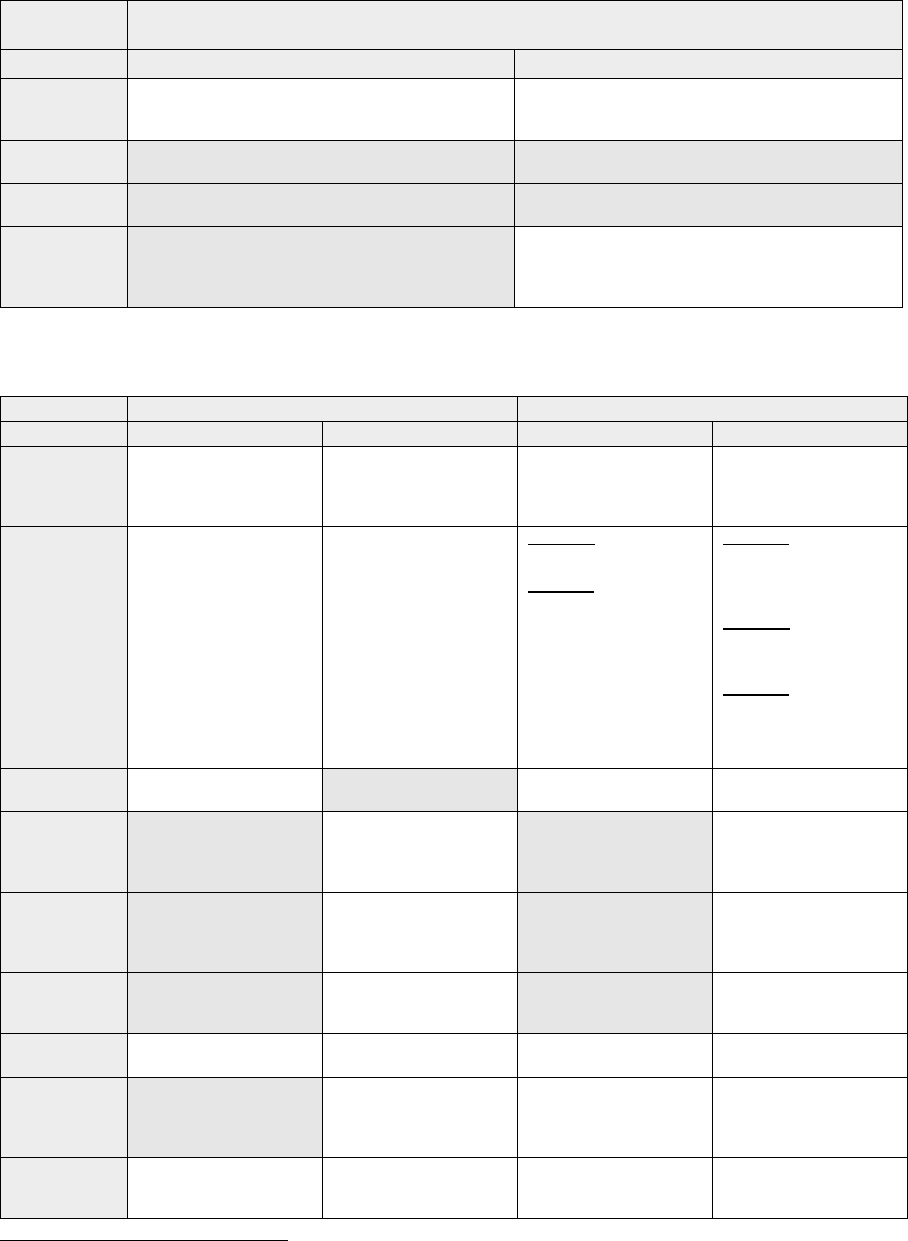
ACER REPORT ON TRANSMISSION AND DISTRIBUTION TARIFF METHODOLOGIES IN EUROPE
103
Exemption, discount or differentiation of unit tariff values or tariff basis for some of the storage
facilities vs. other storage facilities
Country
T-connected storages
D-connected storages
Producers operating a hydroelectric power plant
with a total installed capacity up to 5 MW are fully
exempted.
Slovenia
Not applicable, storage is not subject to network
tariffs
Not applicable, storage is not subject to network
tariffs
Spain
Not applicable, storage is not subject to network
tariffs
Not applicable, storage is not subject to network
tariffs
Sweden
No storage facilities are connected to the T-grid
yet.
In one of the DSOs area no storage is connected,
for others the NRA has no exact information.
However, in some DSO areas some storage
facilities are exempted from some costs.
Table 21: Transmission and distribution tariffs for prosumers
Country
T-connected prosumers
D-connected prosumers
Injection charge
Withdrawal charge
Injection charge
Withdrawal charge
Austria
Energy-based and
power-based charge
paid for T-costs only
268
Energy-based and
power-based charge
paid for T-costs only
Energy-based and
power-based charge
paid for D-costs only
269
Energy-based and
power-based charge
paid for both T and D-
costs
Belgium
270
Energy-based charge
for T-costs
Energy-based and
Power-based charge for
T-costs
Flanders:
Energy-based charge
Wallonia:
Power-based charge
Brussels:
Energy and lump sum
or energy and power-
based charging
Flanders:
Energy-based and
power-based charge
Wallonia:
Energy-based and
power-based charge
(for D-costs)
Bulgaria
Energy-based charge
for T-costs
Do not pay a withdrawal
charge for T-costs
Energy-based charge
for T-costs only
No data
Croatia
No injection charge
Energy-based and
power-based charge
paid for T-costs
No injection charge
Energy-based and
power-based charge
paid for both T and D-
costs
271
Cyprus
No injection charge
Energy-based charge
for T-costs
No injection charge
Energy-based and
power-based charge
paid for both T and D-
costs
Czech
Republic
No injection charge
Energy-based and
power-based charge
paid for T-costs
No injection charge
Energy-based and
power-based charge
paid for D-costs only
Denmark
Energy-based charge
for T-costs
Energy-based charge
for T-costs
Energy-based charge
for both T and D costs.
Energy-based and lump
sum charge
Estonia
No injection charge
Energy-based charge
for T-costs
Power-based and lump
sum charges
Energy-based, power-
based and lump sum
charges paid for both T
and D-costs
Finland
Energy-based and
power-based charge
paid for T-costs
Energy-based and
power-based charge
paid for T-costs
Energy-based, power-
based and lump sum
Energy-based, power-
based and lump sum
268
AT: No G-charge in place. The charges paid for injection are the charge for network losses in kWh, metering charge and
connection charge. Network losses and system service charge are paid by producers with a connected capacity of more than 5
MW.
269
AT: Idem.
270
BE: Charging of the D-connected network users for T-costs depends on the distribution tariff methodology applicable in each
of the 3 regions of Belgium.
271
HR: Power-based charge only has to be paid during peak periods.
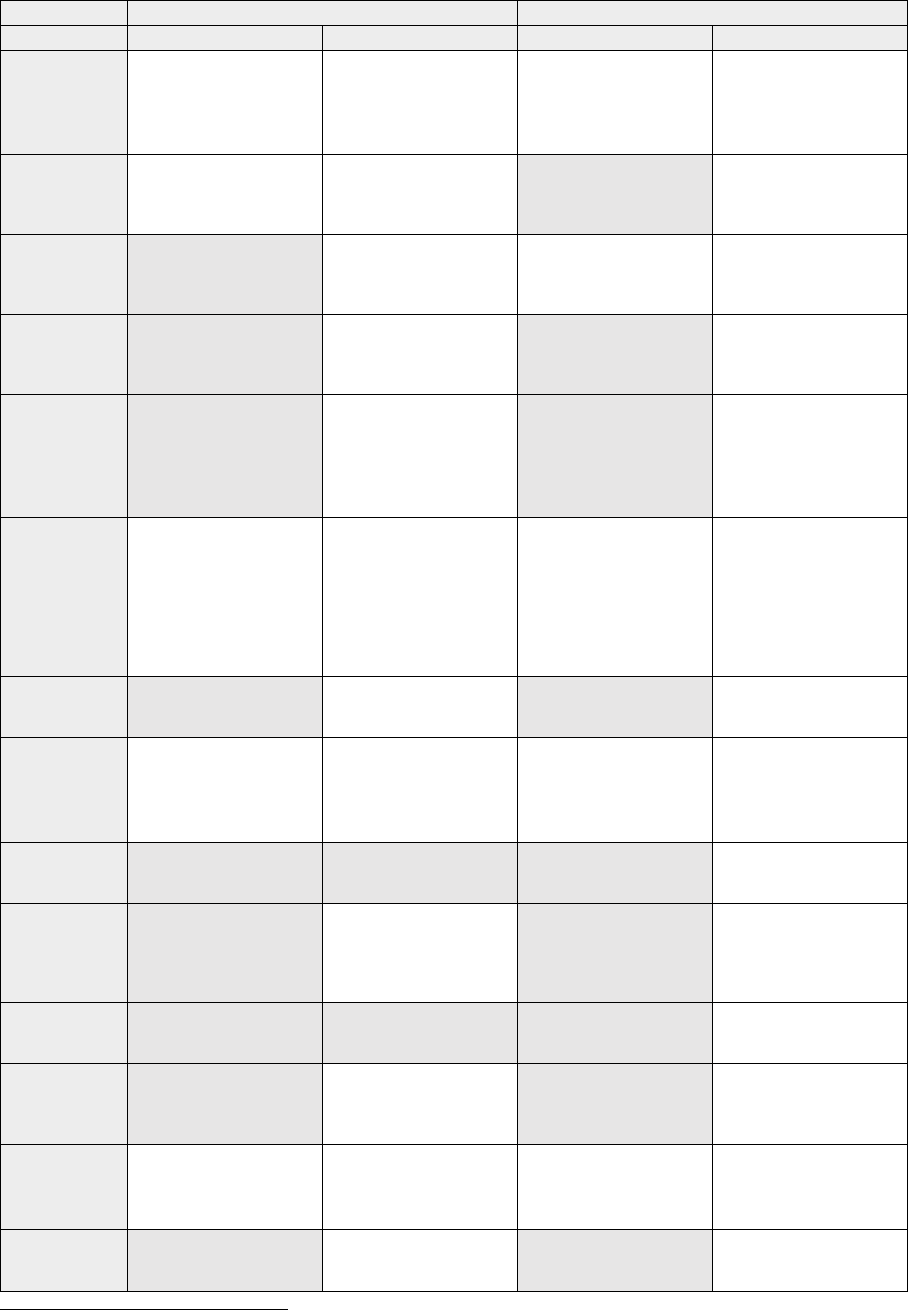
ACER REPORT ON TRANSMISSION AND DISTRIBUTION TARIFF METHODOLOGIES IN EUROPE
104
Country
T-connected prosumers
D-connected prosumers
Injection charge
Withdrawal charge
Injection charge
Withdrawal charge
charges paid for both T
and D-costs
(some exemptions for
some prosumers in
some DSO areas exist)
charges paid for both T
and D-costs
France
Energy-based charge
for T-costs
Energy-based and
power-based charge
paid for T-costs
Don’t pay an injection
charge for T-costs and
there is no injection
charge for D-costs
Energy-based, power-
based and lump sum
charges paid for both T
and D-costs
Germany
No injection charge
Energy-based and
power-based charge
paid for T-costs
Negative injection
charge also applies to
prosumers if they inject
into the grid.
Energy-based and
power-based charge
paid for both T and D-
costs
Greece
No injection charge
Energy-based and
power-based charge
paid for T-costs
No injection charge
Energy-based and
power-based charge
paid for both T and D-
costs
Hungary
No injection charge
Energy-based charge
for T-costs
No injection charge
Energy-based, power-
based and lump sum
charge paid for both T
and D-costs
(net metering for some
network users)
Ireland
Power-based injection
charge for T-costs
Energy-based and
power-based charge
paid for T-costs
D-connected network
users do not pay an
injection charge for D-
costs.
D-connected prosumers
pay an injection charge
for T-costs, but
exemptions apply.
Energy-based and lump
sum charge is paid for
both T and D-costs
(exemptions apply)
Italy
No injection charge
Power-based charge
paid for T-costs
No injection charge
Power-based charge
paid for both T and D-
costs
Latvia
Power-based charge
paid for T-costs
(no prosumers are
connected to the T-grid)
Energy-based and
power-based charge
paid for T-costs
(no prosumers are
connected to the T-grid)
Power-based charge
paid for D-costs only
Power-based charge
paid for D-costs only
Lithuania
No prosumers
connected to the T-
network.
No prosumers
connected to the T-
network.
No injection charge
Energy-based charge
paid for both T and D
costs
Luxembourg
No injection charge
Energy-based and
power-based charge
paid for T-costs
No injection charge
Energy-based, power-
based charge or
energy-based and lump
sum charge paid for
both T and D-costs
Malta
No transmission
network
No transmission
network
Don’t pay any injection
charge
Energy-based, power-
based and lump sum
charge paid for D-costs
The
Netherlands
Don’t pay any injection
charge
Power-based and lump
sum charge for T-costs
Don’t pay any injection
charge
Energy-based, power-
based and lump sum
charge paid for both T
and D-costs
Norway
Energy-based and lump
sum charge paid for T-
costs
Energy-based and
power-based charge
paid for T-costs
Energy-based and lump
sum charge is paid for
both T and D costs
(exemptions apply)
Energy-based and
power-based charge
paid for both T and D-
costs
Poland
No injection charge
Energy-based and
power-based charge
paid for T-costs
272
No injection charge
Energy-based, power-
based and lump sum
272
PL: As prosumers connected to the transmission grid (T-connected non-storage network users who both inject and withdraw
energy), are considered final consumers with generation units that inject surplus produced energy into the transmission grid.

ACER REPORT ON TRANSMISSION AND DISTRIBUTION TARIFF METHODOLOGIES IN EUROPE
105
Country
T-connected prosumers
D-connected prosumers
Injection charge
Withdrawal charge
Injection charge
Withdrawal charge
(based on net
withdrawal)
charge paid for both T
and D-costs.
(discount applies on
withdrawal due to
injection)
273
Portugal
No injection charge
Energy-based and
power-based charge
paid for T-costs
No injection charge
Energy-based and
power-based charge
paid for both T and D-
costs
274
Romania
Energy-based charge
paid for T-costs
Energy-based charge
paid for T-costs
Energy-based charge
paid for T-costs only
(exemptions apply)
Energy-based charge
for both T- and D costs
Slovak
Republic
Power-based charge
paid for T-costs
Energy-based and
power-based charge
paid for T-costs
Power-based charge for
D-costs only
Energy-based and
power-based charge for
both T and D-costs
Slovenia
No injection charge
Energy-based and
power-based charge
paid for T-costs
No injection charge
Energy-based and
power-based charge
paid for both T and D-
costs
Spain
No injection charge
Energy-based and
power-based charge
paid for T-costs
No injection charge
Energy-based and
power-based charge
paid for both T and D-
costs
Sweden
Energy-based and
power-based charge
paid for T-costs
Energy-based and
power-based charge
paid for T-costs
No injection charge for
T-costs. In one of the
largest DSO area they
do not pay injection
charge for D-costs
either.
Energy-based, power-
based and lump sum
charges paid for D-
costs only
275
Note: If a D-connected network user is indirectly charged for T-costs (e.g. the transmission withdrawal tariffs are
paid by the distribution system operators (DSO's) and this costs is shifted further to a D-connected network users)
it is still considered as a payment for T-costs by a D-connected network user.
Table 22: Exemption, discount or differentiation of unit tariff values or tariff basis between prosumers
Exemption, discount or differentiation of unit tariff values or tariff basis for some of the prosumers
vs. other prosumers
Country
T-connected prosumers
D-connected prosumers
Austria
No differentiation, exemption or discount to any
prosumer.
No differentiation, exemption or discount to any
prosumer.
Belgium
No differentiation, exemption or discount to any
prosumer.
Flanders:
Prosumers with a production capacity up to 10 kW
are exempted
276
from withdrawal charges.
Wallonia:
273
PL: Prosumers connected to the distribution network (D-connected non-storage network users who both inject and withdraw
energy) also settle their energy charges on the basis of the provisions of the Energy Law. They pay variable charges (which cover
part of T-costs) and quality charge for energy withdrawn from the distribution grid. The discount is in use: the prosumer is allowed
to withdraw (not paying for the distribution services) 70/80 percent of injected energy. The payment is realized by the supplier.
274
PT: In the case of the self-consumption regime, which corresponds to energy sharing of renewable energy over the public
grid, an exemption from T-tariffs may apply, depending on the relative position of the generation and consumption facilities. This
happens because with the information on generation and consumption in 15 minute intervals, one considers that the
corresponding network flows only use the network assets strictly necessary to transport that energy. For instance, if the energy
sharing over the public grid involves generation and consumption only connected at distribution level, then that consumption will
not be subject to the T-tariff. In addition, proximity criteria must be met, i.e. the generator and the consumption point cannot be
located too far away to be exempted from the payment of T-tariffs. Finally, the self-consumption regime involves a further analysis
on possible inverted power flows, which is still ongoing. For the example from before (generator and consumption connected at
distribution), if one concludes that inverted power flows exist from distribution into the transmission grid, then it will be considered
that the T-grid is at least partially being used, and a fraction of the T-tariff must be paid as well by these network users. The exact
fraction to apply will result from the ongoing study, and is currently set at zero.
275
SE: In general, households often has a fixed charge (based on fuse size) plus energy charges. Low voltage other than
households often have energy, power and fixed charge. High voltage has energy, power and fixed components.
276
BE: The DSO will carry out an assessment by 2023.

ACER REPORT ON TRANSMISSION AND DISTRIBUTION TARIFF METHODOLOGIES IN EUROPE
106
Exemption, discount or differentiation of unit tariff values or tariff basis for some of the prosumers
vs. other prosumers
Country
T-connected prosumers
D-connected prosumers
There is no injection tariff for prosumers which
inject electricity on the LV level and whose
connected power is less than 10 kVA.
Bulgaria
No data
No data
Croatia
No differentiation, exemption or discount to any
prosumer.
Household consumers are in the self-supply tariff
model and they pay only for net withdrawal (i.e. the
injection is deducted). Non-household consumers
pay for gross withdrawal.
Cyprus
No differentiation, exemption or discount to any
prosumer.
No differentiation, exemption or discount to any
prosumer.
Czech
Republic
No differentiation, exemption or discount to any
prosumer.
No differentiation, exemption or discount to any
prosumer.
Denmark
No differentiation, exemption or discount to any
prosumer.
No differentiation, exemption or discount to any
prosumer.
Estonia
No differentiation, exemption or discount to any
prosumer.
No differentiation, exemption or discount to any
prosumer.
Finland
No differentiation, exemption or discount to any
prosumer.
Some DSOs do not apply injection charge for some
small producers.
France
No differentiation, exemption or discount to any
prosumer.
There are a difference between individual (that
produce for themselves) and collective (that
produce for others according to a contract and a
perimeter criterion) prosumers. Individual
prosumers are only charged with withdrawal
charges, whereas collective prosumers are also
partly charged for the self-consumption part.
Germany
No differentiation, exemption or discount to any
prosumer.
No differentiation, exemption or discount to any
prosumer.
Greece
No differentiation, exemption or discount to any
prosumer.
No differentiation, exemption or discount to any
prosumer.
Hungary
No differentiation, exemption or discount to any
prosumer.
Only for network users with micro power plants
(under 50 kW) is net metering available.
277
The
withdrawal charges for them are the same as for
other network users.
278
Ireland
Auto Producers (Prosumer) MEC=0 do not pay any
distribution tariffs, while Auto Producers >MEC 0 do
pay withdrawal charge. Charges for withdrawal for
prosumers are the same as those applied to
consumers with similar technical characteristics.
Italy
No differentiation, exemption or discount to any
prosumer.
No differentiation, exemption or discount to any
prosumer.
Latvia
No prosumers are connected to the T-grid.
However, based on current rules there were no
differentiation, exemption or discount to any
prosumer.
No differentiation, exemption or discount to any
prosumer.
Lithuania
No prosumers are connected to the T-network
No differentiation, exemption or discount to any
prosumer until July 2022. Afterwards, some
differentiation in the charging of household and
non-household prosumers.
Luxembourg
No differentiation, exemption or discount to any
prosumer.
No differentiation, exemption or discount to any
prosumer
Malta
No differentiation, exemption or discount to any
prosumer.
No differentiation, exemption or discount to any
prosumer.
The
Netherlands
No differentiation, exemption or discount to any
prosumer.
No differentiation, exemption or discount to any
prosumer.
Norway
No differentiation, exemption or discount to any
prosumer.
Prosumers with injected kW < 100 kW are
exempted from G-charge and their network tariff is
based on net withdrawal.
277
HU: In case of a micro power plant (under 50 kW): yearly (under 3×80A connection capacity) or monthly (above 3×80A
connection capacity) net metering.
278
HU: Net metering for micro power plants under 50 kW was introduced to incentivise their penetration, when it was low. With
the current more significant level of penetration, the measure is under reconsideration.

ACER REPORT ON TRANSMISSION AND DISTRIBUTION TARIFF METHODOLOGIES IN EUROPE
107
Exemption, discount or differentiation of unit tariff values or tariff basis for some of the prosumers
vs. other prosumers
Country
T-connected prosumers
D-connected prosumers
Poland
No differentiation, exemption or discount to any
prosumer.
No differentiation, exemption or discount to any
prosumer.
Portugal
No differentiation, exemption or discount to any
prosumer.
Difference among prosumers, depending on the
relative position of the generation and consumption
facilities.
In the case of collective self-consumption regime,
corresponding to energy sharing of renewable
energy over the public grid, the network tariffs paid
depend on the voltage level of connection of the
generating unit. The higher that voltage level is, the
higher the corresponding network tariff.
279
Romania
No differentiation, exemption or discount to any
prosumer.
Producers whose installed capacity is lower than 5
MW are exempted from T-tariff for injection.
Slovak
Republic
No differentiation, exemption or discount to any
prosumer.
No differentiation, exemption or discount to any
prosumer.
Slovenia
No differentiation, exemption or discount to any
prosumer.
Prosumers or self-consuming communities with
contracted capacity up to 43 kW are subject to net-
metering (regarding the energy-based component
of the distribution tariff for withdrawal) with 1 year
accounting interval
280
, while prosumers with
contracted power above 43 kW are subject to gross
metering. (Reasoning: to incentivise small
consumers to become active consumers and
produce their own electricity.)
Spain
No differentiation, exemption or discount to any
prosumer.
No differentiation, exemption or discount to any
prosumer.
Sweden
No prosumers are connected to the T-network
Small prosumers are exempted from paying injection
tariff (up to 63A fuse and a maximum effect of 43.5
kW) and are only subject to a withdrawal tariff.
Note: if net metering is available only for some prosumers while it is not available for others or different tariff basis
apply for different prosumers these are also considered as a difference in the table.
Table 23: Application of gross or net injection/withdrawal in case of energy-based charging
Country
T-tariffs
D-tariffs
Austria
The tariff is based on gross withdrawal.
The tariff is based on gross withdrawal.
Belgium
281
The tariff is based on net withdrawal. (T-tariffs are
charges on 15 minutes basis, this netting applies
within each quarter of hour).
Flanders:
The tariff is based on gross withdrawal (or net
withdrawal + invertor power in case of no smart
meter).
Brussels:
The tariff is based on gross withdrawal (i.e. injection
and withdrawal are metered separately).
Wallonia:
The grid costs are based on gross withdrawal and
there is a cap computed on the grid costs based on
the net withdrawal + the prosumer tariff.
Bulgaria
No data
No data
Croatia
The tariff is based on gross withdrawal.
The tariff is based on net withdrawal only for
households.
282
279
PT: For instance, if withdrawal and injection take both place in the LV grid, and if the public grid is used, than the withdrawal
charge of the network tariff does not include the cost-cascading effect from the network tariff of higher voltage levels (i.e. it only
includes the D-tariff of LV). But if injection occurs at MV and withdrawal at LV, then only the network tariffs of the voltage levels
above MV will not be included (i.e. it only includes the D-tariffs for MV and LV).
280
SI: based on the Decree on the self-supply of electricity from renewable energy sources issued by the government
281
BE: Charging of the D-connected network users for T-costs depends on the distribution tariff methodology applicable in each
of the 3 regions of Belgium.
282
HR: Household customers which have their own electricity production are in the self-supply tariff model and they pay only for
net measured energy.

ACER REPORT ON TRANSMISSION AND DISTRIBUTION TARIFF METHODOLOGIES IN EUROPE
108
Country
T-tariffs
D-tariffs
Cyprus
The tariff is based on gross withdrawal.
Prosumers are charges only for the excess of
withdrawn energy i.e. the injected energy is
deducted.
Czech
Republic
The tariff is based on gross withdrawal.
The tariff is based on gross withdrawal.
Denmark
The tariff is based on gross injection and gross
withdrawal.
No data
Estonia
The tariff is based on gross withdrawal.
The tariff is based on gross withdrawal.
Finland
No data
No data
France
The tariff is based on gross withdrawal.
The tariff is based on gross withdrawal.
Germany
The tariff is based on gross withdrawal.
The tariff is based on gross withdrawal.
Greece
The tariff is based on gross withdrawal.
The tariff is based on gross withdrawal.
Hungary
The tariff is based on gross withdrawal.
The tariff is based on net withdrawal only for
prosumers under 50 kW.
283
Ireland
The tariff is based on gross withdrawal.
The tariff is based on gross withdrawal.
Italy
The relevant tariff has no energy-based component.
The relevant tariff has no energy-based component.
Latvia
No prosumers or storage facilities are connected to
the T-grid. However, based on current rules the
tariffs are based on gross withdrawal.
284
No storage facilities are connected to the D-grid yet.
Lithuania
The tariff is based on gross withdrawal. (Note: No
prosumers are connected to the T-grid)
The tariff is based on gross withdrawal.
285
Luxembourg
The tariff is based on gross withdrawal.
RES prosumers pay network charges based on net
withdrawal per 15 minute period.
Malta
No transmission network
The tariff is based on gross withdrawal.
The
Netherlands
The relevant tariff has no energy-based component.
The relevant tariff has no energy-based component.
Norway
The tariff is based on gross withdrawal.
The tariff is based on gross withdrawal, except
prosumers with injected kW < 100 kW, whose tariff
is based on net withdrawal.
Poland
The tariff is based on net withdrawal
Prosumers connected to the distribution network
settle their energy charges on the basis of the
provisions of the Energy Law. Prosumers pay the
same withdrawal charges as consumers, but
discount mechanism is in use. The prosumer is
allowed to withdraw (not paying for the distribution
services) 70/80 percent of injected energy.
Portugal
The tariff is based on gross withdrawal.
The tariff is based on gross withdrawal.
Romania
The tariff is based on gross withdrawal.
The tariff is based on gross withdrawal.
Slovak
Republic
The tariff is based on gross withdrawal.
The tariff is based on gross withdrawal.
Slovenia
The tariff is based on net withdrawal for prosumers
who equal or under 43 kW connection capacity for
other network users it is based on gross withdrawal.
The tariff is based on net withdrawal for prosumers
who equal or under 43 kW connection capacity
286
for other network users it is based on gross
withdrawal.
Spain
The tariff is based on gross withdrawal.
The tariff is based on net withdrawal.
Sweden
Not provided
Not provided
283
HU: In case of network users with micro power plants (under 50 kW) the injected energy decreases the basis for the payment
of the withdrawal charge. (Reason: to incentivise their penetration). The other network users have to pay for the actual withdrawal.
284
LV: Electricity producers pay fixed injection tariff and for self-consumption (includes tariff variable and fixed part). Injection
tariff is calculated taking into consideration the Regulation 2010/838. Other circumstances weren’t taken into account. Also,
important aspect is that the approved injection tariff is very small and do not cover all expenses which electricity producer creates
to the system.
285
LT: For prosumers, DSO installs a meter that records the amount of electricity consumed from the grid and the amount of
energy produced and supplied to the grid. Data from electricity meters are read automatically/remotely every month and DSO
calculates and provides an accurate bill to the user on the self-service website. According to the meter reading, it is automatically
calculated every month: how much electricity the consumer has supplied to the grid and how much has consumed. If prosumer
produced more than consumed – paying only D-Tariff. If consumed more than produced – paying for the difference as electricity
consumer to electricity supplier.
286
SI: Volumetric charge is calculated based on annual net withdrawal for network users only in so-called self-consumption
scheme, which is limited to household and small commercial users up to 43 kW connection capacity.

ACER REPORT ON TRANSMISSION AND DISTRIBUTION TARIFF METHODOLOGIES IN EUROPE
109
Table 24: Cost-offsetting in case both injection and withdrawal charges are applied in the country
Country
T-tariffs
D-tariffs
Austria
PHES storage facilities pay reduced network
charges compared to consumers. No cost off-
setting for non-PHES storage.
Prosumers do not pay injection charge, only
withdrawal charge.
PHES storage facilities pay reduced network
charges compared to consumers. No cost off-
setting for non-PHES storage would apply, if there
were any connected to the D-grid.
Belgium
Net metering applies
Brussels: No cost-offsetting
Flanders: No cost-offsetting
Wallonia: No cost-offsetting (under construction for
next regulatory period)
Bulgaria
Only withdrawal charge is applied for storage and
only injection charge is applied for prosumers
No data
Denmark
No cost off-setting
No data
Finland
No cost off-setting
No cost off-setting
France
No cost off-setting
Not applicable as no injection charge applies for D-
connected network users
Germany
Not applicable as no injection charge applies for T-
connected network users
287
The negative injection charges is applied for D-
connected storage facilities to reward cost saving.
(it does not apply for prosumers due to their volatile
generation)
Ireland
No data
Not applicable as no injection charge applies for D-
connected network users
Latvia
Not applicable as neither storage nor prosumers
are connected to the T-grid.
If the difference between production capacity and
self-consumption load is less than or equal to zero,
the electricity prosumer will not have to pay the
capacity fee.
Not applicable for storage as there are none
connected to the grid.
Malta
No transmission network
The administrative fee is paid only once by all
network users.
The
Netherlands
Prosumers and storage facilities do not pay
injection charge (i.e. administrative fee for
producers), only withdrawal charge.
Prosumers and storage facilities do not pay
injection charge (i.e. administrative fee for
producers), only withdrawal charge.
Norway
No cost off-setting
No cost off-setting
Romania
No cost off-setting
No cost off-setting
Slovak
Republic
No cost off-setting in current decree, but in the new
one there will be cost off-setting – storage and
prosumer will pay only for the one capacity (for
injection or withdrawal), which is higher.
No cost off-setting in current decree, but in the new
one there will be cost off-setting – storage and
prosumer will pay only for the one capacity (for
injection or withdrawal), which is higher.
Sweden
Neither storage facilities nor prosumers are
connected to the T-grid yet.
All prosumers pay for withdrawal. If they have a
higher production than consumption they also pay
injection charges. If the prosumer is small (with a
connection not bigger than 63A) and have higher
consumption than production it is exempted of
paying injection charges and pay only for the
withdrawal. All other cases pay both for injection
and withdrawal. Injection fees are based on power
not energy. (Note: the practice was provided for
one of the DSO areas)
Note: “No cost-offsetting” in the table means that the storage facilities and prosumers pay the same injection charge
as producers and the same withdrawal charge as consumers
287
DE: BNetzA is at the current state not in charge of deciding upon the network tariffs. BNetzA deems the basic structure
according to which storages are treated as regular network users and only charged for their energy withdrawal fair. There are
also some specific rules allowing for discounts for certain storage facilities.

ACER REPORT ON TRANSMISSION AND DISTRIBUTION TARIFF METHODOLOGIES IN EUROPE
110
Table 25: Recent changes to the injection charges or planned future changes
Country
Recent changes (i.e. compared to last ACER tariff reports in 2019 and 2021) or changes which are
currently under consideration
Austria
Distribution: The plans for phasing out the metering charge for both the generators and the consumers is
initiated by the Smart Metering rollout
Belgium
Flanders:
Until July 2022: D-injection charges for recovery of grid losses, system services and other costs (pension
schemes and local retributions) are applied. From July 2022: D-injection charges for recovery of network
costs (directly related to injection) are applied. Question of the storage grid tariff will be addressed with the
next tariff methodology. The DSO will carry out an assessment by 2023.
Wallonia:
Implementation of requirements of Article (18)(1) of Regulation (EU) 2019/943 for storage; return of
experience of period 2019-2023. There is no injection tariff for LV installations and power less than 10 kVA.
This element will be analysed as part of the next 2024-2028 tariff methodology.
Croatia
In 2021, new Electricity Market Act (Official Gazette, Nos 111/21) is issued. The new law obligated HERA
to include network tariff for producers in tariff systems and to issue new methodology for the determination
of the tariffs for electricity transmission system. The new law defines that the pump-storage hydro power
plant and storage operator for the energy storage are considered as consumers regarding paying for the
electricity withdrawn from the network. New TSO-Methodology (Narodne novine, br. 84/22) is issued in
July 2022 and will be applied for the first time for 2023
288
. New Tariff methodology for Croatian DSO, HEP-
ODS (Narodne novine, br. 84/22) issued in July 2022 and will be applied for the first time for 2023.
289
Denmark
Transmission: It is currently being considered introducing connection fees to better cover the costs incurred
by connecting production to the grid. In addition it is expected that the energy payment will be increased.
For both types of charges: geographical differentiation is being considered to better reflect the difference in
costs incurred depending on location of new production capacity.
Germany
On 2 Sep. 2021, the ECJ ruled (C-718/18) that the so called normative regulation that is applied in
Germany does not comply with EU-Law. The NRA (BNetzA) will have to become more independent. In
particular - among others - the network tariff methodology cannot be set in ordinances, but will have to be
added to BNetzA's jursidiction. BNetzA will evaluate the necessity of any changes to the tariff
methodology.
Greece
Until late 2020 T-network users with the ability to inject power to the grid bore the cost of T-system losses
associated with injected energy (paying "in-kind" for transmission system losses). This is no longer the
case, as according to the new electricity market rules that became effective late 2020, TSO costs due to T-
system losses are recovered by suppliers. No other cost burden exists for network users who inject into the
grid, for example due to provision of ancillary services for free.
Latvia
Injection charge has been introduced. No change currently under implementation or consideration.
The
Netherlands
Transmission: The NRA (ACM) will investigate whether it is necessary and possible to adjust the tariff
structure in such a way that it becomes more attractive for market parties to invest in energy storage.
Poland
Transmission: Changes for the charging of storages: storages to pay a reduced fixed T-charge while taking
into account a reduction factor proportional to the efficiency of the energy storage, which reduces the
contracted capacity. No change (regarding injection charge) currently under implementation or
consideration.
Portugal
Transmission: Injection charge was eliminated on 1 January 2022.
Romania
Distribution: There are few D-networks where electricity generated is in excess. That electricity in surplus is
carried to other geographical zones to be consumed. D-tariffs that cover also the costs for losses in D-
networks in one zone are paid only by consumers in that zone. The NRA (ANRE) plans to elaborate a
study at national level to identify the zones with big quantity of losses due to electricity surplus to the local
consumption and the solutions to allocate these costs to the relevant network users (i.e. an injection
charge for producers).
Slovenia
No change regarding injection charge (not applied)
Transmission: In new tariff methodology, which is under consideration, storages are subject of network
charges for withdrawal.
Spain
Transmission: injection charge was eliminated.
Sweden
Transmission: In 2020, the TSO changed the energy component to be dynamic, using the electricity market
prices. Additional changes were made in 2021 regarding the energy component. These changes were
made to give customers more correct price signals.
288
https://www.hera.hr/hr/docs/SPKP/NN-2022-07-20-1284.pdf
289
https://www.hera.hr/hr/docs/SPKP/NN-2022-07-20-1283.pdf
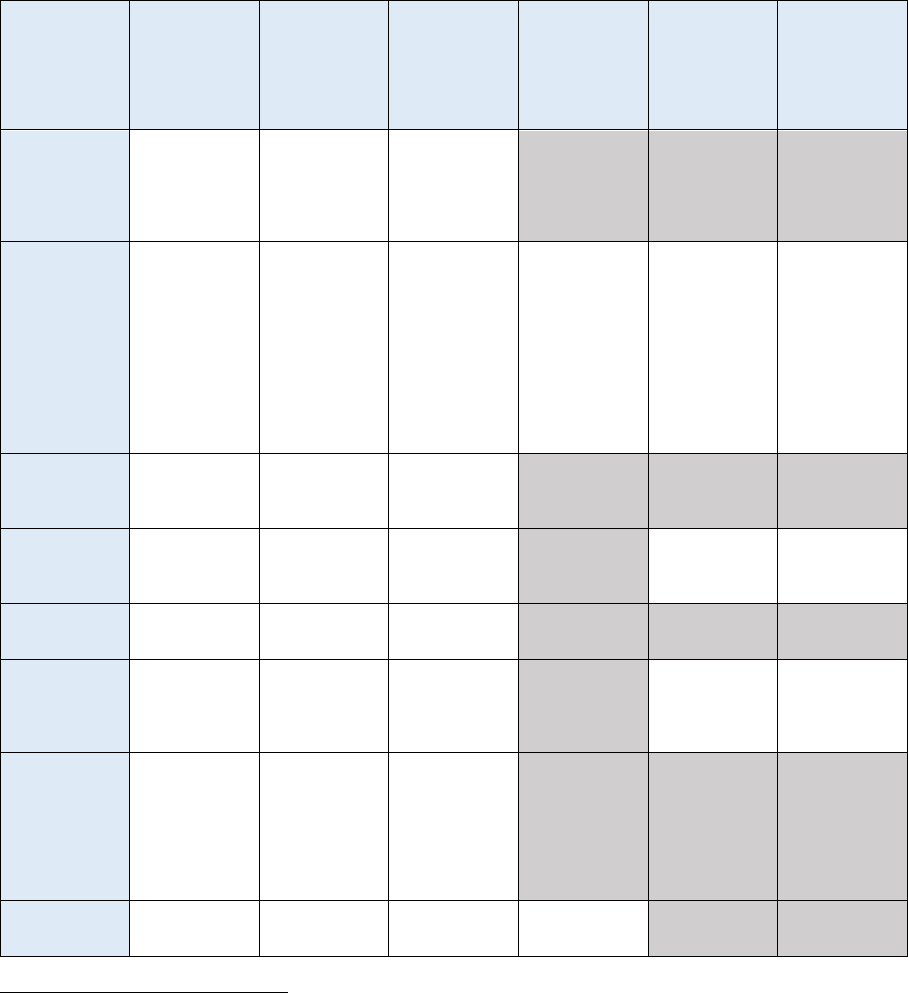
ACER REPORT ON TRANSMISSION AND DISTRIBUTION TARIFF METHODOLOGIES IN EUROPE
111
Table 26: Connection charges at transmission level
Country
Connection
charge
category
applied
(“depth” of
the charge)
Basis for
setting
connection
charge
Exemptions,
discounts or
other
differentiation
between
network
users
Difference
based on
connection
firmness
Variation
based on
voltage level
Difference
based on
geographic
location
290
Austria
Shallow
Individual
actual cost (€)
Exemption for:
- RES below
20 kW;
- P2G under
200 lfm/MWel
291
N/A
N/A
N/A
Belgium
Shallow
Mainly lump
sum per
connection (€)
based on
length, voltage
level, type
(primary/secon
dary). Some
costs (studies)
are individually
estimated.
No exemption,
discount or
difference
Only if the
TSO cannot
guaranty
firmness and
until necessary
reinforcement
are completed.
Yes
No
Bulgaria
Shallow
Individual
actual cost
Difference
between RES
vs. non-RES
producers
292
N/A
N/A
N/A
Croatia
Deep
Individual
actual cost
contracted
power (€/MW)
Producers vs.
consumers
293
N/A
No
No
Cyprus
Shallow
Individual
actual cost
294
No exemption,
discount or
difference
N/A
N/A
N/A
Czech
Republic
Shallow
Individual
actual cost;
contracted
power (€/MW)
No
N/A
Yes
Yes
(Network users
connected to
urban vs. rural
areas
295
)
Denmark
Shallow
Individual
actual cost
Difference
between
onshore RES
producers vs.
offshore RES
producers
296
;
Exemption for
producers
297
N/A
N/A
N/A
Estonia
Deep
Individual
actual cost (€)
No exemption,
discount or
difference
No difference
N/A
N/A
290
Variation based on location, unrelated to the connection to a specific DSO (e.g. the network charges are set to be different to
indicate at which locations the electricity is most or least needed, not because for different DSOs different charges or tariff values
apply)
291
AT: According to national law exemption applies for small RES generation units <20kW and for P2G units with grid connection
of <200 lfm/Mwel. Special exemption (no grid provision fee applied) for pumped-hydro units.
292
BG: The difference was not explained by the NRA
293
HR: Electricity producers pay actual connection costs. Consumers pay either a "unit fee per capacity (Euro/MW)" or the actual
costs of the connection works in case it is 1.2 times higher than the costs per unit fee.
294
CY: In accordance with the Transmission and Distribution Rules (TDR), the TSO is responsible for the processing of
applications for connection to the T/D-network of producers with a requested connection capacity greater than 8 MW, or
customers with a requested connection capacity greater than 12 MVA. In all other cases, applications are processed by the DSO.
The applicant is charged based on the necessary equipment and the circuits required exclusively for the connection of his
installations.
295
CZ: In remote areas, users pay actual connection costs, while in urban areas, users pay unit charge per connected capacity.
296
DK: The difference was not explained by the NRA
297
DK: It has been decided by law that costs related with connection of production should be covered by consumers. These rules
have been changed in December 2021, and new system in development.
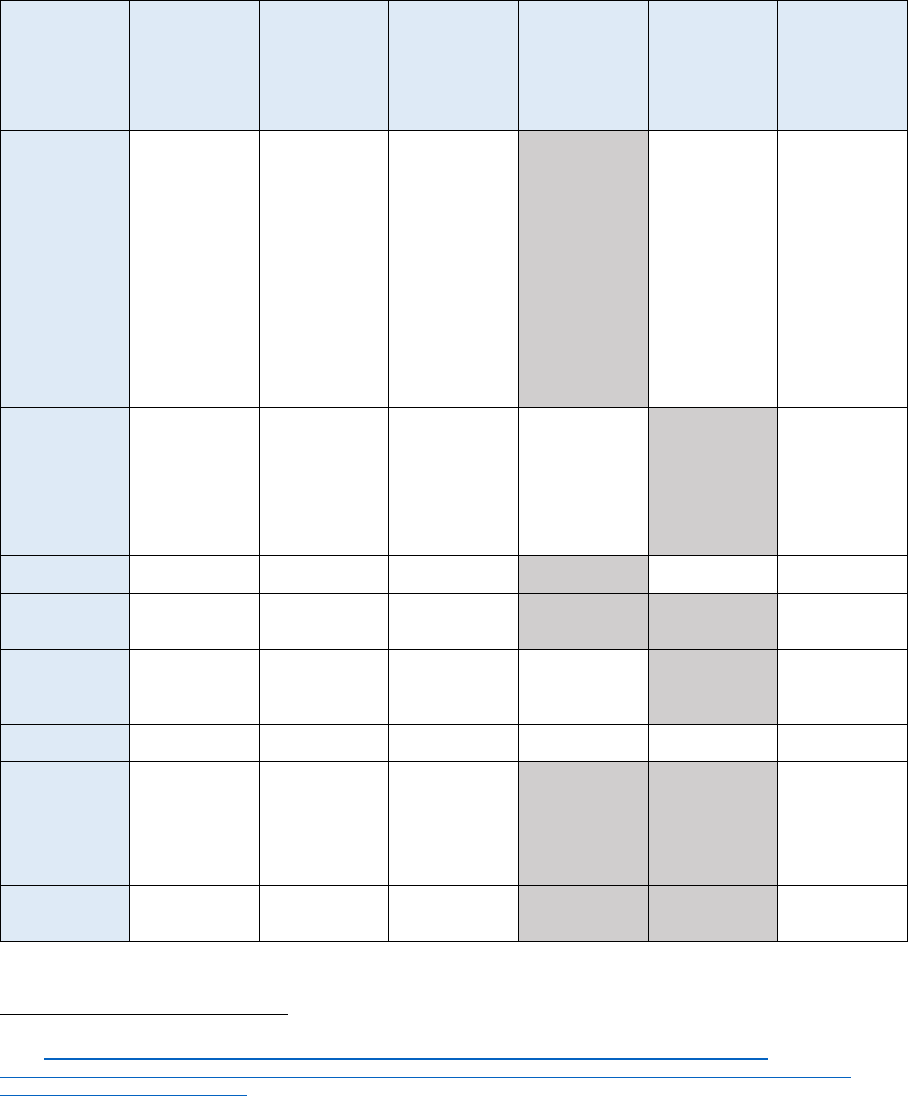
ACER REPORT ON TRANSMISSION AND DISTRIBUTION TARIFF METHODOLOGIES IN EUROPE
112
Country
Connection
charge
category
applied
(“depth” of
the charge)
Basis for
setting
connection
charge
Exemptions,
discounts or
other
differentiation
between
network
users
Difference
based on
connection
firmness
Variation
based on
voltage level
Difference
based on
geographic
location
290
Finland
Shallow
Standard lump
sum fee per
connection (€);
(different in
case of
connection to
power line vs.
connection to
substation);
Individual
actual cost (€)
(in case of new
substation is
requested)
298
No exemption,
discount or
difference
N/A
Yes
No
France
Shallow
Individual
actual cost (€)
Exemption for
off-shore RES
producers and
discount for
onshore RES
producers vs.
other non-RES
producers
299
Discounts for
interruptible
connection
agreement
300
N/A
Yes
Germany
301
Shallow
Individual
actual cost (€)
No
differentiation
N/A
Greece
Shallow
Individual
actual cost (€)
No exemption,
discount or
difference
N/A
N/A
Yes
Hungary
Deep
Individual
actual cost
RES
producers vs.
other
producers
302
No difference
N/A
-
Ireland
Shallow
Individual
actual cost (€)
Discount for
consumers
303
No data
Italy
Shallow
Individual
actual cost (€)
Caps/discount
s for some
EHV and
connected
network
users
304
N/A
N/A
-
Latvia
Deep
Individual
actual cost
(€)
305
No exemption,
discount or
difference
N/A
N/A
-
298
FI: https://www.fingrid.fi/en/grid/grid-connection-agreement-phases/fees/#grid-connection-fees-2022-2021
https://www.fingrid.fi/globalassets/dokumentit/fi/palvelut/kulutuksen-ja-tuotannon-liittaminen-kantaverkkoon/kantaverkon-
liittymismaksuperiaatteet_2016.pdf
299
FR: Onshore RES producers benefit from a reduction in connection charges. This reduction varies with the installed capacity.
Offshore RES producers do not pay connection charges.
300
FR: The implementation of the scheme is ongoing.
301
DE: Connection charge methodology is not regulated; connection charges are set by TSOs and have to be non-discriminatory.
302
HU: RES producers are entitled to a connection charge discount.
303
IE: All network users are subject to connection charges. Demand customers pay 50%, while generators pay 100% of
connection charges. The intent of these standard connection charges is to provide a reasonable degree of certainty for parties
seeking to connect to the distribution and transmission systems in Ireland, particularly the large number of new renewable
generators. Costs may vary based on voltage level, length.
304
IT: No conceptual difference, but the supplementary costs for network upgrades could be larger for offshore RES. EHV and
HV producers are required to pay standard costs borne for connecting them, calculated by the TSO depending on the necessary
minimal equipment (which is defined on a case-by-case basis after individual connection requests). EHV and HV RES and high-
efficiency cogeneration benefit from caps / discounts. EHV and HV consumers are required to pay 50% of the costs borne for
connecting them (which are defined on a case-by-case basis after individual connection requests)
305
LV: The costs are determined in an open tender.
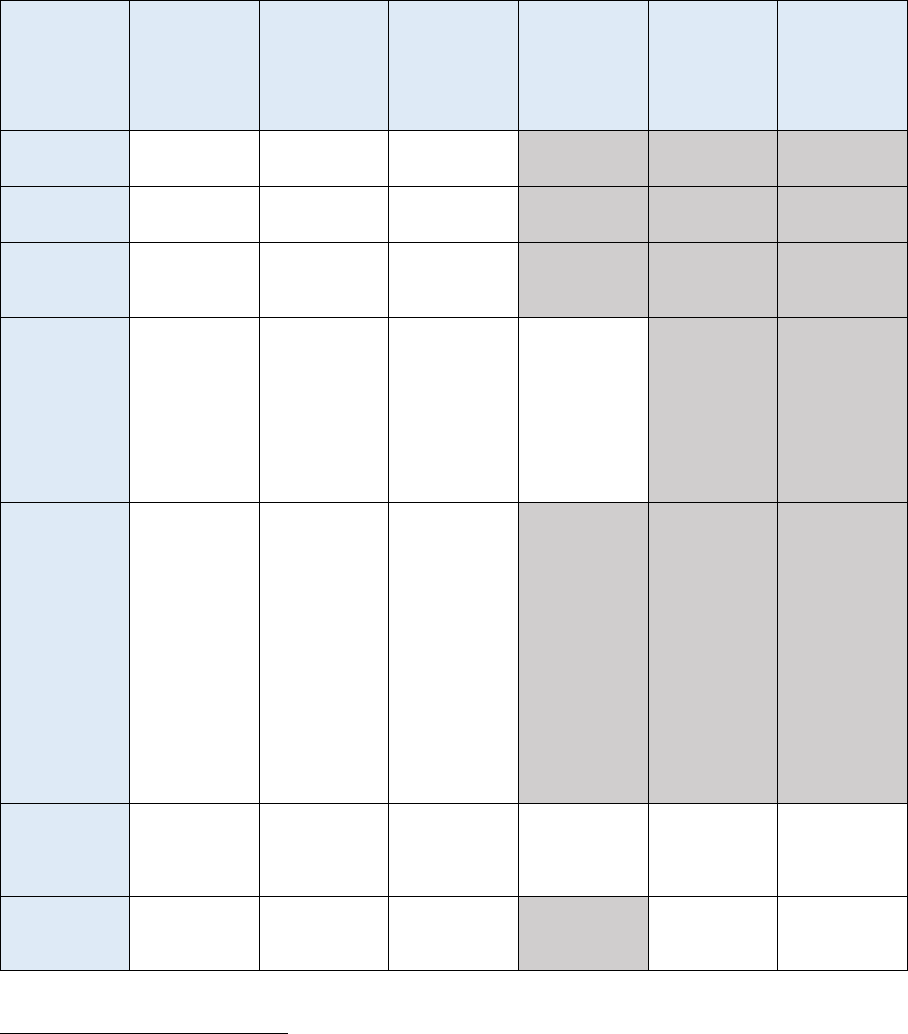
ACER REPORT ON TRANSMISSION AND DISTRIBUTION TARIFF METHODOLOGIES IN EUROPE
113
Country
Connection
charge
category
applied
(“depth” of
the charge)
Basis for
setting
connection
charge
Exemptions,
discounts or
other
differentiation
between
network
users
Difference
based on
connection
firmness
Variation
based on
voltage level
Difference
based on
geographic
location
290
Lithuania
Deep
Individual
actual cost (€)
No exemption,
discount or
difference
306
N/A
N/A
N/A
Luxembourg
Shallow
Individual
actual cost (€)
No exemption,
discount or
difference
N/A
N/A
N/A
The
Netherlands
Shallow
Individual
actual cost (€)
– two
components
307
No exemption,
discount or
difference
N/A
N/A
N/A
Norway
Deep
Individual
actual cost (€)
distributed on
basis of
customers
connected
capacity
relative to total
new available
capacity
No exemption,
discount or
difference
Yes, subject to
mutual
agreement by
TSO and
network user
308
N/A
N/A
Poland
Shallow
Individual
actual cost
Discounts for
- some RES
and co-
generation
producers vs.
other
producers;
- Storage
facilities vs.
other network
users
- EV charging
facilities vs.
other
consumers
309
N/A
N/A
N/A
Portugal
Deep
Individual
actual cost
(€)
310
;
capacity
(€/MW)
Difference
between
consumers vs.
producers
311
No difference
No
No
Romania
Shallow and
Deep
Individual
actual cost;
Difference
between
consumers vs.
producers
313
N/A
No
No
306
LT: All users connected to the T-grid pay 100% of the actual connection costs.
307
NL: The connection tariff comprises two components: 1. the initial connection tariff, which covers the costs of creating the grid
connection. It varies as all connections to the high-voltage grid are tailor made. 2. the periodic connection tariff, which covers the
costs of maintaining and, if necessary, replacing the connection. Parties with multiple connections receive a separate invoice for
each one. The periodic connection tariff is a fixed amount that is updated once a year.
308
NO: Connection charge may differ based on firmness level of the connection (firm vs flexible/interruptible connection
agreements) subject to mutual agreement by TSO and network user
309
PL: According to law connection fee is based on investment expenditures (CAPEX) for the connection. Final consumers pay
connection fee amounting to 25% of CAPEX; DSOs and producers - 100% of CAPEX; RES less than 5 MW and co-generation
less than 1 MW - 50% of CAPEX; EV charging infrastructure – 6.25% of CAPEX; storage facilities 50% of CAPEX.
310
PT: Although the transmission network covers 3 voltage levels (150, 220 and 400 kV), the charges applicable to connection
to this network do not depend on the voltage level. It is worth mentioning that the charge for the reinforcement of the existing
network is charged regardless of whether the new connection motivates this reinforcement or not. To that extent, it constitutes a
contribution to the investment necessary to replace the capacity taken by the connection and the respective charge internalizes
the expected benefits of the connection (depending on whether it is a consumption or production facility).
311
PT: The charge for network reinforcement varies depending on whether the facilities are consumption or production.
313
RO: Producers pay network reinforcement component (deep connection charge).
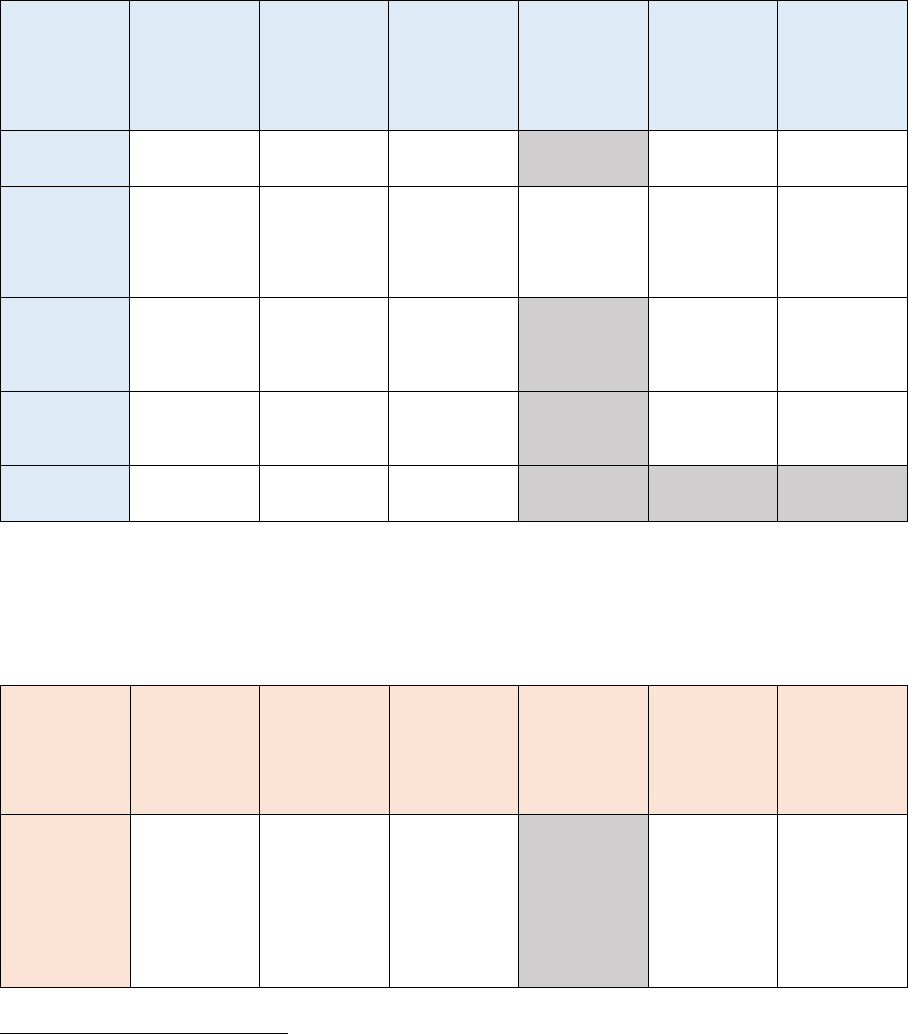
ACER REPORT ON TRANSMISSION AND DISTRIBUTION TARIFF METHODOLOGIES IN EUROPE
114
Country
Connection
charge
category
applied
(“depth” of
the charge)
Basis for
setting
connection
charge
Exemptions,
discounts or
other
differentiation
between
network
users
Difference
based on
connection
firmness
Variation
based on
voltage level
Difference
based on
geographic
location
290
contracted
power
(€/MW)
312
Slovak
Republic
Super-shallow
Shallow
Individual
actual costs
(resp. TSO
costs caused
by the
connections)
No exemption,
discount or
difference
No difference
No
No
Slovenia
Mix of shallow
and deep
Individual
actual cost (€);
contracted
power
(€/MW)
314
No exemption,
discount or
difference
N/A
Yes
No
Spain
Deep
Individual
actual cost (€);
contracted
power (€/MW)
No exemption,
discount or
difference
N/A
Yes
No
Sweden
Deep
Individual
actual cost
No exemption,
discount or
difference
N/A
N/A
315
N/A
316
Note: Regarding the difference based on connection firmness, “N/A” (Not applicable) means the cases where there are no flexible
or interruptible connection agreements. Where the connection charge is calculated based on actual costs (i.e. individually
estimated), the variation based on the voltage level and the location is implicit (i.e. different voltage level or location may result in
different actual costs), thus in the table such cases are labelled as “N/A” (Not applicable).
Table 27: Connection charges at distribution level
Country
Connection
charge
category
applied
(“depth” of
the charge)
Basis for
setting
connection
charge
Exemptions,
discounts or
other
differentiation
between
network
users
Difference
based on
connection
firmness
Variation
based on
voltage level
Difference
based on
geographic
location
317
Austria
Shallow
Individual
actual cost (€);
Capacity
318
(€/kW)
RES vs. Non-
RES
producers;
PHES vs. Non-
PHES
storage ;
Consumers in
energy
communities
N/A
Yes
Yes (network
areas)
320
312
RO: The charge paid for connection infrastructure reflects the actual cost. Similarly, a grid reinforcement component is based
on the actual cost but is limited by a cap approved by the NRA (ANRE) multiplied by installed capacity. As for testing and
commissioning, users are charged based on the installed capacity.
314
SI: The calculation of network connection charges is based on the average influence of the newly connected/increased load
(kW) on the necessary extensions and reinforcements in the grid.
315
SE: Since the connection charge is calculated individually for the network users, the connection charge varies because of
different costs, including due to different voltage level (i.e. variation by voltage level is implicit).
316
SE: Since the connection charge is based on actual costs (i.e. individually estimated), the variation based on the voltage level
and the location is implicit (i.e. different voltage level or location may result in different actual costs.)
317
Variation based on location, unrelated to the connection to a specific DSO (e.g. the network charges are set to be different to
indicate at which locations the electricity is most or least needed, not because for different DSOs different charges or tariff values
apply)
318
AT: The system admission charge is based on the actual costs. Connection charge for RES producers is calculated based on
a flat fee per kW. The system provision charge levied in case of a connection is calculated per capacity (EUR/kW).
320
AT: There are no locational signals incorporated in the connection charges, but there are different connection charges for the
individual network areas in AT. The costs of each network area are covered separately by the specific local connection charge
of each network area.
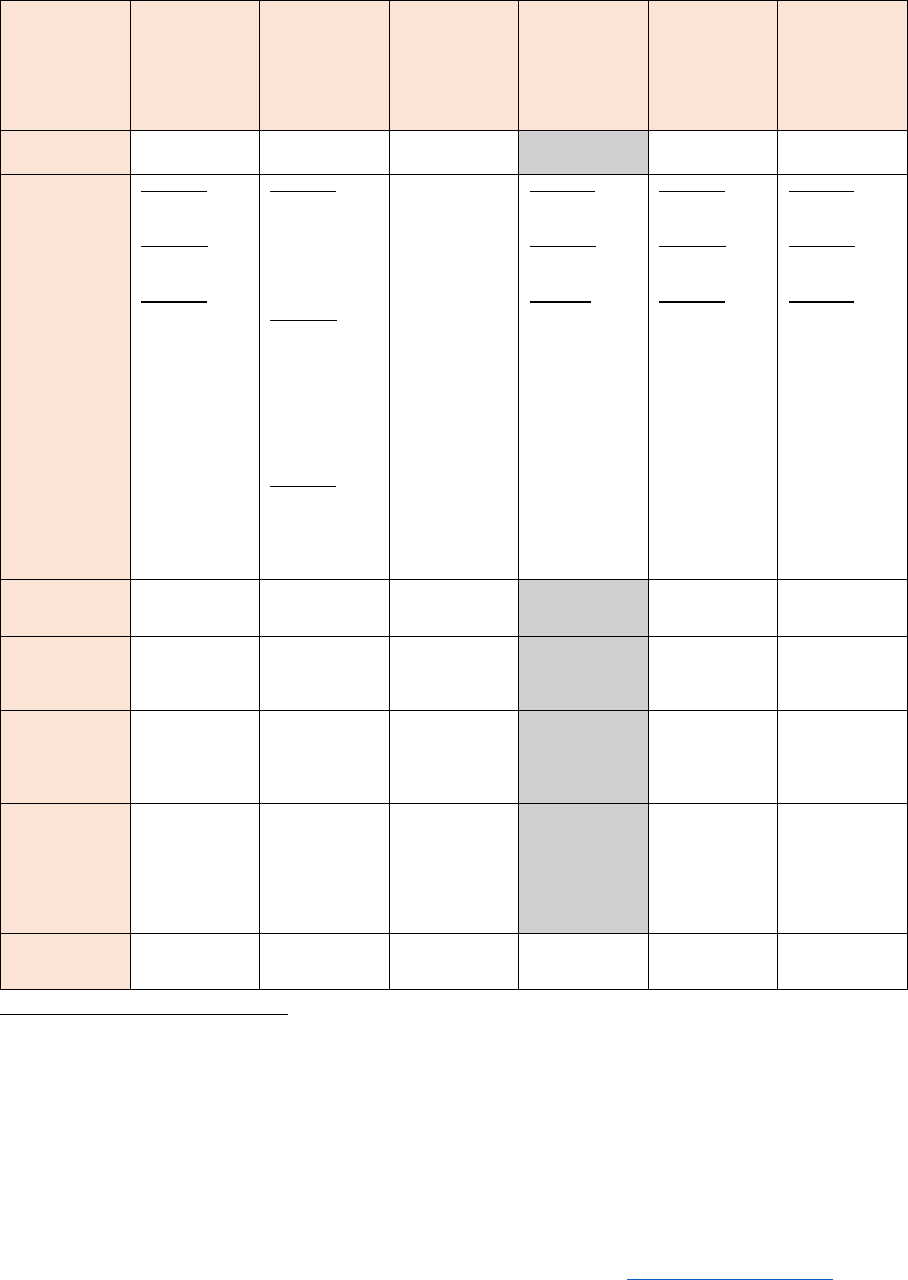
ACER REPORT ON TRANSMISSION AND DISTRIBUTION TARIFF METHODOLOGIES IN EUROPE
115
Country
Connection
charge
category
applied
(“depth” of
the charge)
Basis for
setting
connection
charge
Exemptions,
discounts or
other
differentiation
between
network
users
Difference
based on
connection
firmness
Variation
based on
voltage level
Difference
based on
geographic
location
317
vs. other
consumers
319
Belgium
Brussels:
Deep
Flanders:
Deep
Wallonia:
Deep
Brussels:
Individual
actual cost (€);
Lump sum (€)
Contracted
power (€/kVA)
Flanders:
Individual
actual cost (€);
Lump sum (€);
Distance
(€/m);
Contracted
power
321
Wallonia:
Individual
actual cost (€);
Distance (€/m)
Contracted
power
322
No exemption,
discount or
difference
Brussels:
N/A
Flanders:
N/A
Wallonia
323
Brussels:
Yes
Flanders:
Yes
Wallonia:
Yes
Brussels:
No
Flanders:
No
Wallonia:
(Difference
between
network users
connecting to
rural and
urban areas)
324
Bulgaria
Shallow
Distance;
Contracted
power
No exemption,
discount or
difference
N/A
No
No
Croatia
Deep
Individual
actual cost;
Contracted
power
Producers vs.
Consumers
325
N/A
No
No
Cyprus
Shallow
€/kVA
326
Different
charges for
residential and
industrial
consumers
327
N/A
Yes
Yes
328
Czech republic
Shallow
Individual
actual cost;
Contracted
power
N/A
Yes
329
Yes
(Difference
between
network users
connecting to
rural and
urban areas
330
)
Denmark
Shallow and
deep
Lump sum (the
average cost
Deep for
producers,
Yes
(Interruptible
connections
Yes
Yes
319
AT: Reduced connection charges for RES producers. Reduced system utilisation charge for pumped-hydro storage facilities.
Reduced system utilisation charge for consumers, which are part of a renewable energy community.
321
BE (FLA): In most cases, the connection charge consists of a standard lump sum per connection (EUR). Additional unit
charges per capacity (EUR/kVA), per distance (EUR/m) or per connection are possible. In some cases, the individual estimated
actual costs are charged.
322
BE (WAL): Cost may be charged on the basis of a package or unit cost per service, unit charge per capacity, cost per km.
323
BE (WAL): The injection tariff for flexible capacity is 0 EUR/kVA
324
BE (WAL): D-consumers (LV) in urban areas are exempted from reinforcement and extension charges, whereas those outside
pay actual costs. The reasoning behind is that urban networks should be designed to accommodate all user needs and to de-
incentivize urban sprawl.
325
HR: Producers are charged with an actual cost, while consumers’ charge is based on the capacity.
326
CY: If network extension/reinforcement is required a share of the cost is allocated to the DSO and the rest to the applicant
based on several criteria (network characteristics, load, line etc.) described in the NRA’s Regulatory Decision 03/2013.
327
CY: e.g. the costs are separated based on the “Load Entitlement” (kVA), voltage level and network topology, if
extension/reinforcement is required.
328
CY: There is no locational specific variation but the further away from the distribution network, the higher is the charge.
329
CZ: On each level, the connection charges matches the average historic costs on the voltage level
330
CZ: In remote areas, users pay actual connection costs, while in urban areas, users pay unit charge per connected capacity.
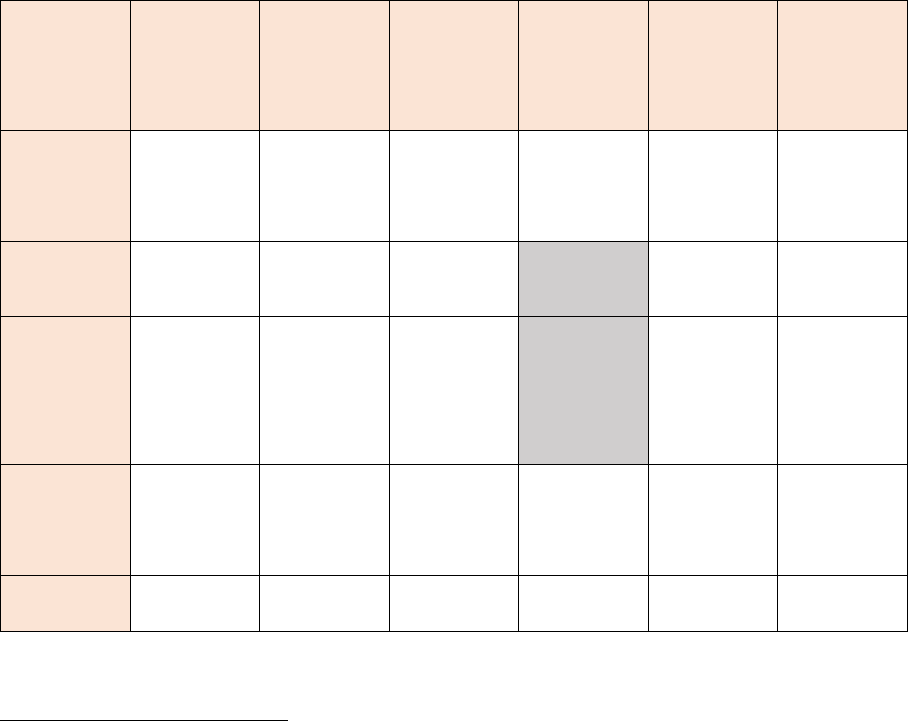
ACER REPORT ON TRANSMISSION AND DISTRIBUTION TARIFF METHODOLOGIES IN EUROPE
116
Country
Connection
charge
category
applied
(“depth” of
the charge)
Basis for
setting
connection
charge
Exemptions,
discounts or
other
differentiation
between
network
users
Difference
based on
connection
firmness
Variation
based on
voltage level
Difference
based on
geographic
location
317
for a given
voltage level)
semi-deep for
consumers.
pay the same
D-tariffs but
get a discount
on their
connection
charges)
(only for
producers)
331
Estonia
Shallow and
deep
Individual
actual cost (€);
Contracted
power (€/MW)
No exemption,
discount or
difference
N/A
Yes
No
Finland
Shallow and
deep
Individual
actual cost (€)
or lump sum
332
Contracted
power (€/MW)
Consumers vs.
Producers/Stor
age facilities;
Small
producers vs.
Other
producers
333
N/A
Yes
Yes
334
France
Shallow
Individual
actual cost (€)
or lump sum;
Distance (€/m)
Contracted
power (€/MW)
Onshore RES
vs other
producers
335
Discounts for
interruptible
connection
agreement
336
Yes
Yes
337
Germany
Shallow and
deep
No particular
basis
defined
338
No exemption,
discount or
difference
No difference
Yes
339
331
DK: Geographical differentiation is currently only implemented for producers. The law is currently under revision so that the
geographical differentiation will also be possible for consumers.
332
FI: In case of low voltage connections near substations, charge is calculated based on the average shallow costs and capacity
charge. For the rest of the connections, connecting users pay actual shallow costs and capacity charge.
333
FI: Costs are charged differently between production and consumption in relation to the capacity reservation charge.
Concerning production, the average benefits relating to connecting production to the network must be considered. In the case of
small production, a capacity fee is not charged.
334
FI: Connection pricing is based on three different principles: zone pricing, area pricing, and case by case pricing. Zonal pricing
is used at a distance of at least 600 m (and at least 3x63 A connections) from existing substations. Area pricing is used outside
of zone pricing. Case by case pricing is used if there are no conditions for area pricing (often a single higher-capacity subscription
that is not covered by zonal pricing due to its high power and distance). Zonal pricing is based on the average actual construction
costs of the connections in the zones. Area pricing is based on the construction cost of the planned area divided by all potential
connections in the area. Case-by-case pricing is based on the construction costs required for an individual connection. All
connection charges shall also include an average capacity reservation fee (€/kVA) to cover the average cost of strengthening the
network. The cost of strengthening the network may not be charged on a case-by-case basis. The principles for determining the
capacity reservation fee are determined by the regulator. The capacity reservation fee is voltage level specific and must be
determined separately for production and consumption connections. For the production the capacity reservation fee is usually a
smaller than for the consumption connections because DSO must take into account in its pricing the potential benefits to the
capacity that production facilities may cause in relation to consumption connections. DSO is not allowed to use capacity
reservation fee for production that connection power is at most 2 MVA. The costs of network development are not allowed to
include in the connection pricing. Network reinforcement consists of rebuilding the network (=network development) and
increasing power transmission capacity. The capacity reservation fee is defined to include only calculated average costs that
have an effect on the increase in transmission capacity.
335
FR: Onshore RES producers benefit from a reduction in connection charges. This reduction varies with the installed capacity.
336
FR: The implementation of the scheme is ongoing.
337
FR: A part of renewable energy connection fees is mutualised throughout regional schemes.
338
DE: There is no particular regulation of connection charges. According to paragraph 17 of the Energy Act, the technical and
economic conditions for connections have to be appropriate, transparent and non-discriminatory. These conditions apply to
connection charges, too.
339
DE: Every German DSO sets its own connection charges and indicates variations. However, the low voltage level, there is a
specific rule regarding deep connection charges (NAV). The NAV stipulates that an appropriate deep connection charge for the
partial remuneration of the building or reinforcement of the network can be charged. The charge is calculated according to the
relation between the capacity of the specific connection and the capacity of the grid. Deep connection charges must, however,
not be charged for capacities not exceeding 30 kW.
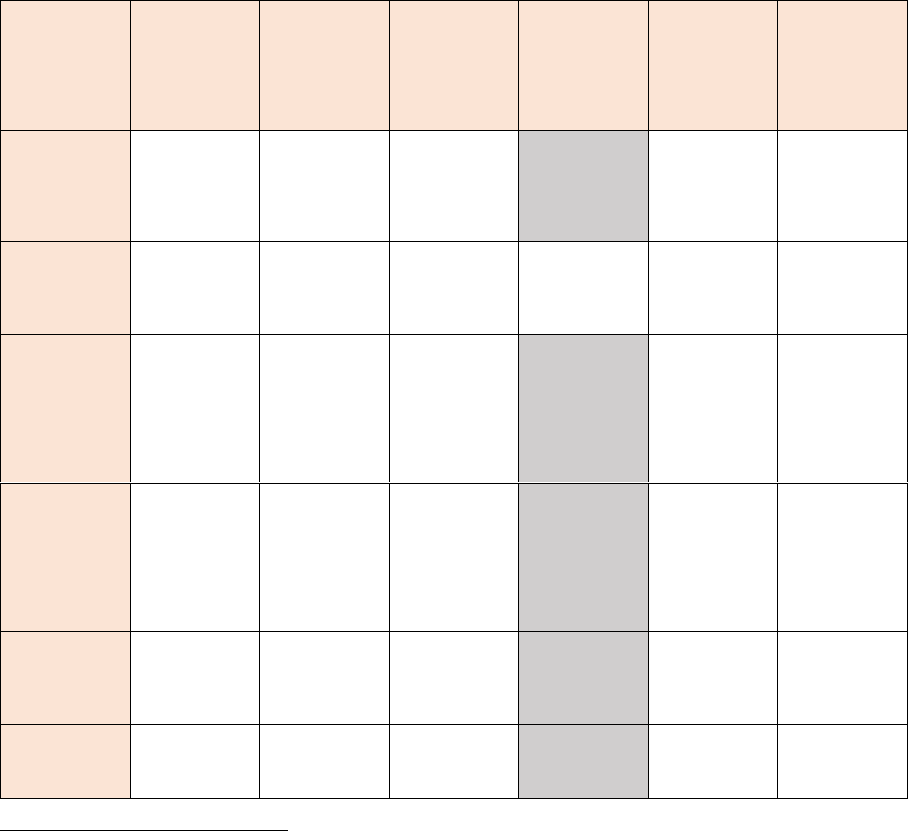
ACER REPORT ON TRANSMISSION AND DISTRIBUTION TARIFF METHODOLOGIES IN EUROPE
117
Country
Connection
charge
category
applied
(“depth” of
the charge)
Basis for
setting
connection
charge
Exemptions,
discounts or
other
differentiation
between
network
users
Difference
based on
connection
firmness
Variation
based on
voltage level
Difference
based on
geographic
location
317
Greece
Shallow and
deep
Individual
actual cost (€);
lump sum;
distance (€/m);
contracted
power (€/MW)
Few
differences:
producers vs.
consumers
340
N/A
Yes
Yes
341
Hungary
Shallow and
deep
Individual
actual cost
distance
contracted
power
RES vs other
producers;
LV/MV vs HV
consumers
342
No difference
Yes
No
Ireland
Shallow
Various basis
for setting the
charge
343
Difference
between RES
and non-RES
producers;
Difference
based on
size/type of the
connection
N/A
Yes
Italy
Shallow
Distance (€/m)
contracted
power (€/MW)
Consumers vs
other network
users
344
;
small
RES/CHP
generators and
other
generators
N/A
Yes
No
Latvia
Shallow and
deep
Individual
actual cost (€);
Nominal
current
Smaller
network users
vs other
network
users
345
N/A
Yes
No
Lithuania
Shallow and
deep
Lump sum (€);
distance (€/m);
contracted
power (€/MW)
Prosumers vs.
other network
users
346
N/A
Yes
Yes
347
340
GR: Connection charges for both consumers and producers are essentially based on "deep connection cost" principle, with a
few differences. For producers’ connection charges are based on actual (realised) cost of network expansion and reinforcement
required. Consumers’ connection charges are calculated by means of a) unit costs related to the required network expansion and
reinforcement works, as well as to the cost of existing network infrastructure and b) parameters related to the capacity of the
required connection.
341
GR: Unit charges for consumers' connection may differ between geographic locations (e.g. due to differences in network
specifications, like coastal areas).
342
HU: RES producers are entitled to a connection charge discount. Consumers connecting to high voltage network pay the 70%
of the total costs of connection. Consumers connecting to low or medium voltage network have to pay capacity based (HUF/kW)
and distance based (HUF/m) tariff elements for the connection.
343
IE: Connection Charges vary by voltage size and incentivise customers to right size their connection and connect to the most
appropriate voltage level. LV/MV: The network user pays a capital contribution towards 50% of the shallow connection. HV: The
network user pays a capacity-based charge towards deep reinforcement. Standard Charge based on MIC including a 50% capital
allowance Standard Charge based on a per metre charge for new network – cable /OHL. Non-standard based on 50% of actual
costs. Charges are based on the Least Cost Technically Acceptable (LCTA) connection method and all enhancements over
LCTA are charged at 100%
344
IT: Connection charges for active users are differentiated between small RES/CHP generators and others; small RES/CHP
generators are charged based on a standardized formula while for the others a specific estimate by the DSO is needed.
Connection charges for passive users are always based on a standardized formula, different from the one for active users.
345
LV: DSO shall cover 50% of the connection charge if the nominal current of the input protection appliance of the connection
does not exceed 100A and a connection voltage does not exceed 400 V. In other cases, the network user pays the entire
connection charge (deep).
346
LT: Connection charges vary between prosumers who produce and consume in the same place (charged 50% connection
costs) and prosumers who produce in one place and consume in another (charged 100% connection costs). Vulnerable users
pay 20% of the connection costs. In the case of storage - if the storage will only be recharged from the network and not returned
to the network, will be charged 50% connection costs. Energy storage facilities shall pay 100% of the costs, if the energy is
subsequently returned to the electricity networks.
347
LT: It takes into consideration geographical location impact on costs of connection.
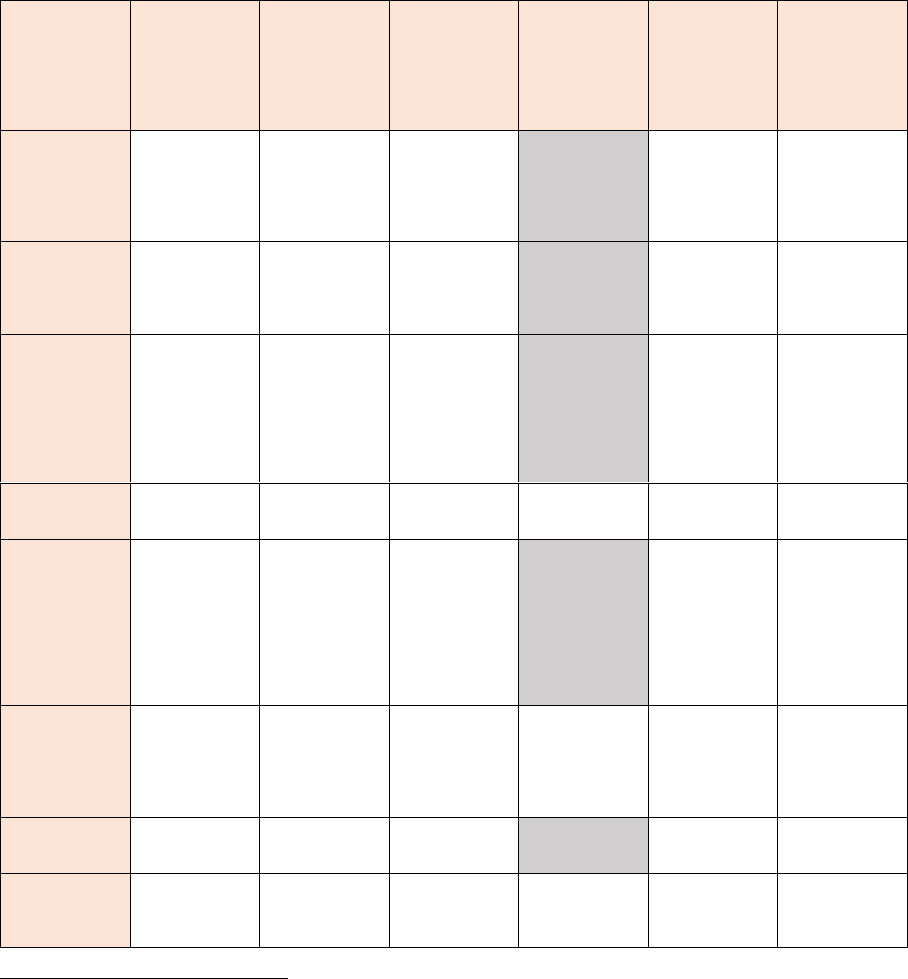
ACER REPORT ON TRANSMISSION AND DISTRIBUTION TARIFF METHODOLOGIES IN EUROPE
118
Country
Connection
charge
category
applied
(“depth” of
the charge)
Basis for
setting
connection
charge
Exemptions,
discounts or
other
differentiation
between
network
users
Difference
based on
connection
firmness
Variation
based on
voltage level
Difference
based on
geographic
location
317
Luxembourg
Shallow
Individual
actual cost (€)
or lump sum;
(€)
contracted
power (€/MW)
No exemption,
discount or
difference
N/A
Yes
Yes
Malta
Shallow and
deep
Individual
actual cost (€);
lump sum (€);
contracted
power (€/MW)
Smaller
network users
vs. other
network
users
348
N/A
No
No
The
Netherlands
Shallow
Individual
actual cost (€)
or lump sum
(€)
distance
(€/m)
349
capacity
(€/MW)
No exemption,
discount or
difference
N/A
No
No
Norway
Deep
Individual
actual cost
350
No exemption,
discount or
difference
Yes
Yes
Poland
Shallow
Individual
actual cost
Producers vs
storage vs
consumers;
RES vs. co-
generation;
EV charging
infrastructure
vs other
consumers
351
N/A
Yes
Yes
geographical
location and
other: first
connection
352
Portugal
Deep
Individual
actual cost (€);
distance (€/m);
contracted
power (€/MW)
353
Producers vs.
consumers
354
No difference
Yes
No
Romania
Shallow and
deep
Individual
actual cost
lump sum
Producers vs.
consumers
355
N/A
Yes
No
Slovak
Republic
Shallow and
deep
Individual
actual cost (€)
contracted
power (€/MW)
Some storage
facilities vs.
No difference
Yes
348
MT: Up to 60 Amps, connections charged a lump sum. Over 60 Amps, connections extended from an existing substation
based on the actual cost and capacity.
349
NL: One-time connection combines a fixed cost and an additional cost per meter cable length when the connection is more
than 25 m; a periodic connection charge covers the cost of capital of the assets involved - it combines a fixed cost and an
additional cost per meter cable length when the connection is more than 25 m.
350
NO: Individual charge. Customer pay a share of actual investment costs of the connection based on capacity demand.
351
PL: There are five connecting groups in DSO: from II (110 kV), III (MV), IV (LV, more than 40 kW), V (LV, less than 40 kW),
VI temporary. Groups II-III pay a charge equal to 25% of CAPEX (investments expenditures used for realisation of the connection);
RES less than 5 MW and co-generation less than 1 MW: 50% of CAPEX; Micro-installation - 0% of CAPEX (free connection); EV
charging infrastructure - 6.25% of CAPEX. Batteries 50% of CAPEX. Groups IV, V and VI pay charges from tariff multiplied by
connection capacity.
352
PL: For the first connection charge is calculated on 25% of investments expenditures. For the reserve connection, a connection
charge covers all investments expenditures
353
PT: Depending on the voltage level and on the requested power, the requester bears the entire connection cost or a portion
of the total cost. The charge for network reinforcement depends on the voltage level as well as the power required. The charge
for connection services is a function of the voltage level, the power required, the length of the connection elements, the type of
connection (aerial or underground).
354
PT: The charge for network reinforcement varies depending on whether the facilities are consumption or production.
355
RO: Producers pay network reinforcement component (deep connection charge), while consumers bear a shallow connection
charge.
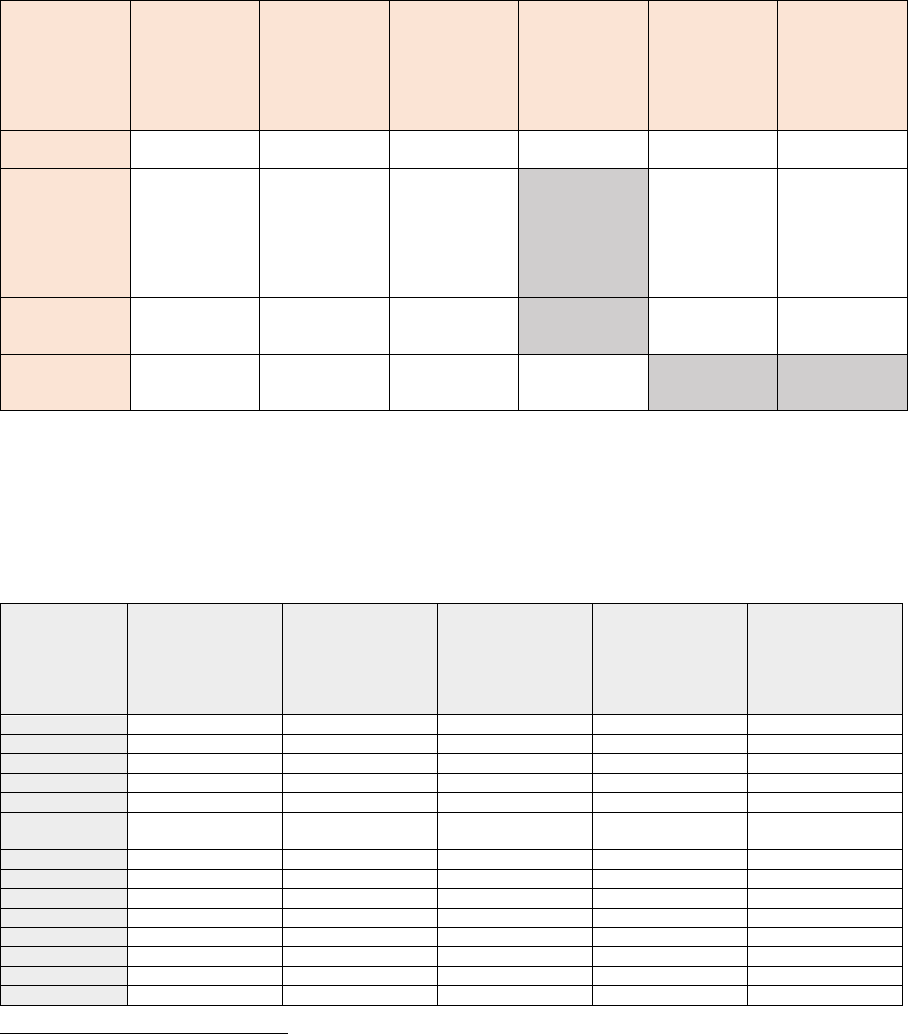
ACER REPORT ON TRANSMISSION AND DISTRIBUTION TARIFF METHODOLOGIES IN EUROPE
119
Country
Connection
charge
category
applied
(“depth” of
the charge)
Basis for
setting
connection
charge
Exemptions,
discounts or
other
differentiation
between
network
users
Difference
based on
connection
firmness
Variation
based on
voltage level
Difference
based on
geographic
location
317
other storage
facilities
356
Slovenia
Shallow
Contracted
power
(€/kW)
357
Producers vs
consumers;
Different unit
charges for
households vs.
non-
households
358
N/A
Yes
No
Spain
Deep
lump sum (€);
contracted
power (€/kW)
No exemption,
discount or
difference
359
N/A
Yes
No
Sweden
Deep
Individual
actual cost
No exemption,
discount or
difference
No
360
N/A
361
N/A
362
Note: Regarding the difference based on connection firmness, “N/A” (Not applicable) means the cases where there
are no flexible or interruptible connection agreements. Where the connection charge is calculated based on actual
costs (i.e. individually estimated), the variation based on the voltage level and the location is implicit (i.e. different
voltage level or location may result in different actual costs), thus in the table such cases are labelled as “N/A” (Not
applicable).
Table 28: Current and planned offshore RES generation capacity by country
Countries
2021 total
installed
capacity
(ENTSO-E
transparency
platform) (MW)
2021 offshore
RES level (MW)
(NRA input)
2021 offshore
RES share within
the total installed
capacity (%)
2030 offshore
RES planned
increase
compared to
2021 (MW)
2050 offshore
RES planned
increase
compared to
2021 (MW)
Austria
-
-
-
Belgium
25708
2262
9%
2100 - 3500
2100 - 3500
Bulgaria
12986
No data
No data
No data
Croatia
4249
0
0
0
Cyprus
1900
0
0
0
Czech
Republic
-
-
-
Denmark
15964
(1700)
363
11%
No data
No data
Estonia
2337
0
1000
No data
Finland
16863
0
0
0
France
130560
0
5200 - 5800
22000 - 62000
Germany
230478
7787
3%
20000
No data
Greece
17888
No data
No data
No data
Hungary
-
-
-
Ireland
9827
No data
No data
No data
356
SK: D-connected storage facilities injecting the electricity only for the purposes of providing the ancillary services do not pay
connection costs.
357
SI: New user is obliged to pay for average cost for connection while costs for connection from public grid to premises of the
user depends on the individual case and its implementation/construction, which are covered by customers.
358
SI: Specific connection charges in (EUR/kW) are calculated for different types of customers depending on the voltage level at
which the costumer is connected: HV - consumption at 110 kV, MV - consumption at 35, 20 and 10 kV, LV - commercial above
43 kW, LV - commercial up to 43 kW, LV – household.
359
ES: D-connected producers pay for their connection and all the necessary reinforcements. For D-connected consumers, a
difference is made depending on the nature of the network expansion, which is either paid for by the DSO or the network user.
In the latter case, for consumers who connect to LV up to 100 kW or to HV up to 250 kW, at urban area, the DSO is remunerated
at ex ante set values, depending on the power and voltage level.
360
SE: Flexible connections may be compensated via other network tariffs in some DSO areas.
361
SE: Since the connection charge is calculated individually for the network users, the connection charge varies because of
different costs, including due to different voltage level (i.e. variation by voltage level is implicit).
362
SE: Since the connection charge is based on actual costs (i.e. individually estimated), the variation based on the voltage level
and the location is implicit (i.e. different voltage level or location may result in different actual costs.)
363
The data is based on ENTSO-E’s Transparency Platform.
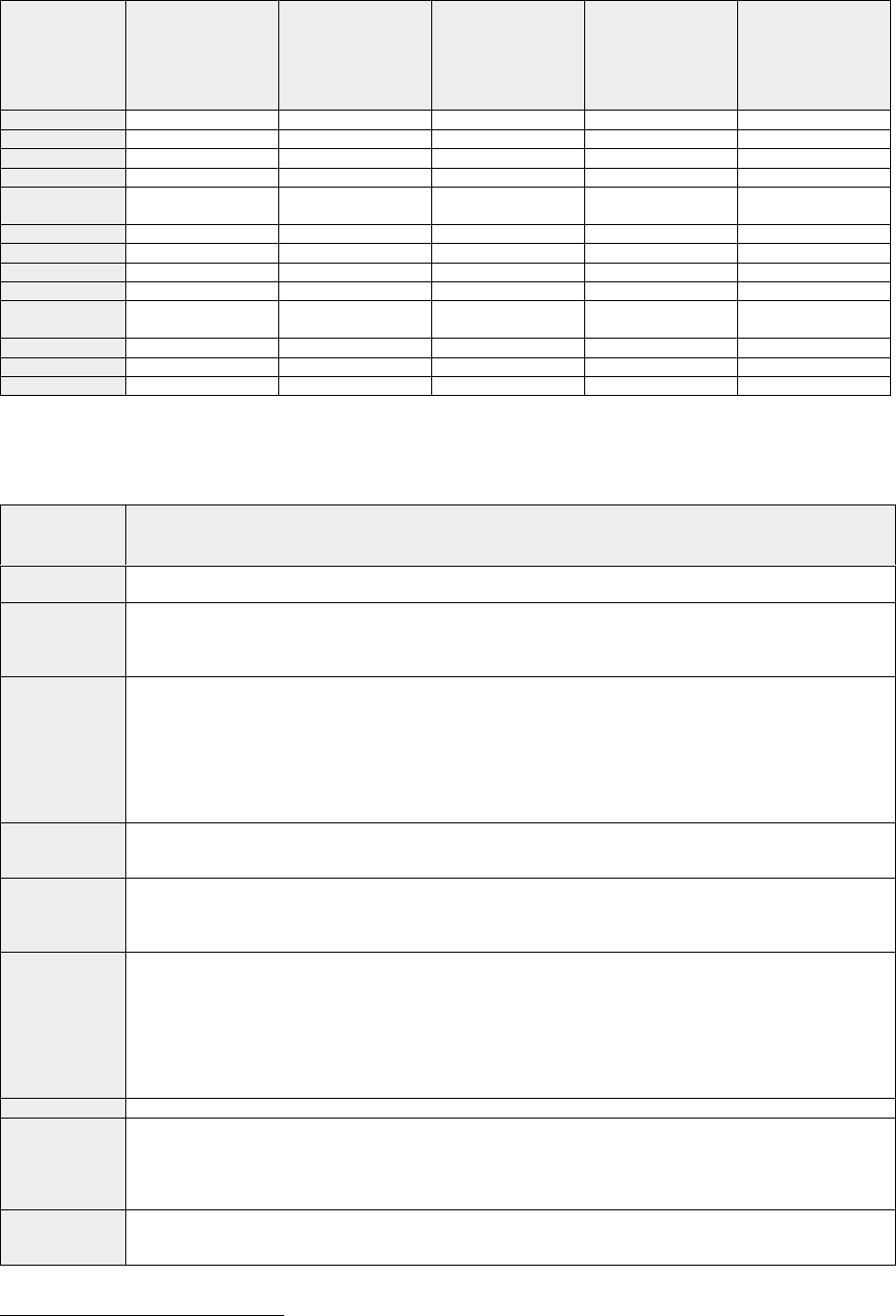
ACER REPORT ON TRANSMISSION AND DISTRIBUTION TARIFF METHODOLOGIES IN EUROPE
120
Countries
2021 total
installed
capacity
(ENTSO-E
transparency
platform) (MW)
2021 offshore
RES level (MW)
(NRA input)
2021 offshore
RES share within
the total installed
capacity (%)
2030 offshore
RES planned
increase
compared to
2021 (MW)
2050 offshore
RES planned
increase
compared to
2021 (MW)
Italy
93357
0
900
No data
Latvia
2843
78
3%
800
1100
Lithuania
3808
0
1400
No data
Luxembourg
-
-
-
The
Netherlands
39132
2585
7%
18400
67400
Norway
40390
0
0 - 3000
364
0 - 30000
365
Poland
45029
0
5900
No data
Portugal
20022
25
0.1%
275
≤1,275
Romania
17306
0
0
0
Slovak
Republic
-
-
-
Slovenia
3862
0
0
0
Spain
109409
No data
No data
No data
Sweden
41199
200
0.5%
200 - 5000
1500 - 35000
Note: “No data” means that it was not provided by (or available to) the NRA
Table 29: Cost sharing problem of grid connection
Country
Treatment of the problem of extending the network to serve one particular network user, leading to
high connection costs for that user, which ultimately will reduce the connection costs to connect
further users in the future
France
Specific treatment for RES production (S3RENR) where network reinforcements are shared with users in
the future.
Greece
To ensure fair charges and address the "free-rider" problem, a mechanism is in place to reimburse network
users that have paid for the full actual cost of network expansion and/or reinforcement (mainly producers
and some specific consumer connection cases), in case that other users are connected in the future
making use of the extended/reinforced network (up to 5 years later)
Hungary
Consumers connecting to the high voltage network: The costs of works needed to make the required
connection capacity available for a single network user are split into two different categories. The two
categories are direct connection cost and indirect connection cost. Direct cost category includes all the
costs of the investments by the TSO that result network devices that will be used by one single network
user (e.g. a direct wire). The direct cost is paid by 100% by the network user. Indirect cost category
includes all the costs of the investments that result network devices that will be used by several network
users. The direct cost is paid only partially by a single network user. That method assures that connection
costs for further networks users in the future will not be reduced.
Ireland
The Connection Charging Methodology includes a mechanism to refund customers who pay for deep
connections, where customers connect in the future. The size of the refund depends on the size of the new
customer(s).
Latvia
If, when evaluating the installation of a new connection, the system operator establishes that it is
economically justified to install an electrical installation with additional capacity exceeding the permitted
load requested by the network user, new system user pays in proportion to his requested capacity and the
system operator shall cover all other costs related to the installation of additional capacity.
Lithuania
In the case the customer is connected to the D-network and its connection requires T or D network
reconstruction in order to strengthen the network, then it is assessed whether there are potential users who
would connect the equipment to the enhanced network for a period of five years. If so, the network
development / reconstruction cost divided (formula: installation cost / infrastructure capacity (kW)) and
each subsequent connected user pays for the network reinforcement previously carried out, depending on
the installed capacity, thus contributing proportionately to the cost recovery. The criteria for the assessment
of a potential user are defined in the Methodology for the Connection of Electrical Equipment to the
Electricity Networks approved by the NERC.
Norway
Costs are reduced by 50 % before connection charge is calculated.
Portugal
The charge for the reinforcement of the existing network (deep connection charge) results from the
consideration of the set of expected benefits of the new connection, given the unit investment cost of the
network operator. It is actually a contribution and takes into account, for example, the expected payment of
tariffs for the use of networks, the improvement in the quality of service, the reduction of technical losses or
the impact on price formation in the market (in the case of production facilities).
Romania
There are areas where consumption is higher than generation and other areas where generation exceeded
the consumption. In the first situation, there is no need for reinforcements in the existing D-grid to connect
new generators, so this measure (deep connection charge for producers) offers a locational signal to new
364
NO: At least 3000 MW is planned award by 2030, but not necessarily commissioned by 2030.
365
NO: Norway’s ambitions is to award areas corresponding to 30 000 MW by 2040, but not necessarily commissioned by 2050.

ACER REPORT ON TRANSMISSION AND DISTRIBUTION TARIFF METHODOLOGIES IN EUROPE
121
Country
Treatment of the problem of extending the network to serve one particular network user, leading to
high connection costs for that user, which ultimately will reduce the connection costs to connect
further users in the future
producers and could reduce the quantity of electricity transmitted over long distances and the associated
costs (mainly losses).
Slovenia
New user is obliged to pay for average cost for connection while costs for connection from public grid to
premises of the user depends on the individual case and its implementation/construction, which are
covered by customers.
Spain
In generation, the producer pays for his connection and all the reinforcements that are necessary. In the
case of consumers, a difference is made between the natural extension of the network (growth in demand
that emerges naturally in the networks) and the new network extensions: In the former case, the
infrastructures must be carried out and paid for by the DSO. In the second case, they must pay for the
development of the networks that are necessary, as well as the reinforcement at the same voltage level to
which it is connected. In the latter case, for consumers who connect in LV and with a power of up to 100
kW or in HV with a power of 250 kW, on urbanized land, the DSO is remunerated at values set ex ante,
common for the entire territory, depending on the power and voltage level.
Sweden
If there are more connections probable in the area the customer only pays a relevant share of the
connection. If there are none the connection can only serve that customer and that customer will have to
pay it all. They have in rare occasions bought back unused connection capacity in order to connect more
customers (Note: the practice was provided for one of the largest DSOs).
Table 30: Transfer or split of some of the connection charge revenues between DSOs
Country
Transfer or split of some of the connection charge revenues between DSOs
Austria
No
Belgium
No
Bulgaria
No
Croatia
No
Cyprus
No
Czech
Republic
No
Denmark
Yes: If different DSO's own different voltage levels in a given area, there are two models in use:
1) No split, but if the lower level DSO feeds in more max-load to the overlying grid, the underlying grid has
to pay extra for that right
2) A split based on which DSO owns which of the essential grid assets.
Estonia
No
Finland
No
France
Yes: the cost based connection charge is paid to the network operator whose network the network user will
directly connect to. The network operator is obliged to transfer the share of the connection charge that is
covering the costs of other network operator's investment.
Germany
No
Greece
No
Hungary
Yes: the cost based connection charge is paid to the network operator whose network the network user will
directly connect to. The network operator is obliged to transfer the share of the connection charge that is
covering the costs of other network operator's investment.
Ireland
No
Italy
No
Latvia
No
Lithuania
No
Luxembourg
Other: Since there is a national tariff equalization between DSOs, this is implicitly done. Compensations
between DSOs at regular intervals during the year, ensure that every DSO reaches his maximum allowed
revenue.
Malta
N/A (In Malta there is only one DSO)
The
Netherlands
No
Norway
Other: Each DSO calculates connection charges for their own investments. The connection charges
associated with the same connection are bundled, and charged the relevant customer. The connection
charge is split between the DSOs, based on the costs they are responsible for.
Poland
No
Portugal
No
Romania
No
Slovak
Republic
No
Slovenia
No
Spain
No
Sweden
No

ACER REPORT ON TRANSMISSION AND DISTRIBUTION TARIFF METHODOLOGIES IN EUROPE
122
Table 31: Application of charges for reactive energy at distribution level
Country
D-tariff (reactive withdrawals)
D-tariff (reactive injections)
Belgium
Brussels: Q above a percentage of P
Flanders: Q above 48.4% of P
Wallonia: Q above a percentage of P
Brussels: no charges for injections
Flanders: Q above 48.4% of P
Wallonia: no reactive injection, no charge
Bulgaria
No data
No data
Croatia
Power factor below 0.95
No reactive injection allowed
Czech
Republic
Power factor below 0.95
No reactive injection allowed
Estonia
Q above 15% of P
366
Q above 15% of P
367
Finland
DSOs are free to decide tariff structures
DSOs are free to decide tariff structures
France
Q above a percentage of P - DSOs decide
Q above a percentage of P DSOs decide
Hungary
Q above 25% of P (LV) – Q above 30% of P (MV)
Ireland
Power factor below 0.95
No reactive injection allowed, no charges
Italy
Q above 33% of P
No reactive injection allowed, no charges until
March 2023
Latvia
Power factor below 0.929
No reactive injection allowed
Lithuania
No reactive injection allowed
The
Netherlands
Power factor below 0.85
368
No reactive injection (power factor 1)
Norway
DSOs decide the limit
No reactive injection allowed, no charges
Poland
Portugal
369
Q above 30% of P (measured outside the off-peak
hours)
Measured during off-peak hours. DSO decides
whether to apply the reactive charge approved by
the regulator or not to apply any charge
.
Romania
Power factor below 0.9
Power factor below 0.9 (capacitive)
Slovak
Republic
Based on power factor cos fi = 0,95
No reactive injection allowed
Slovenia
9.02 Euro/Mvarh for low and medium voltage
9.02 Euro/Mvarh for low and medium voltage; 3.52
Euro/Mvhar for high voltage
Spain
Q above 33% of P
Power factor below 0.98 (capacitive), no charges
Note: Q=reactive power exchanged, P=active power exchanged
Table 32: Actual values of charges for reactive energy at distribution level
Country
D-tariff (reactive withdrawals)
D-tariff (reactive injections)
Belgium
Brussels: 15 Euro/Mvarh
Flanders: 15.4499 Euro/Mvarh
Wallonia: 15 Euro/Mvarh
Brussels: no charges for injections
Flanders: 15.4499 Euro/Mvarh
Wallonia: no charges for injections
Bulgaria
No data
No data
Croatia
Around 20 Euro/Mvarh
Around 20 Euro/Mvarh
Czech
Republic
It is not possible to determine in Euro/Mvarh, charges
for withdrawal of reactive energy is computed from
maximal power withdrawn in MW and amount of
withdrawn energy in MWh and from power factor
18 Euro/Mvarh
Estonia
4.1 or 5.8 Euro/Mvarh (depending on voltage)
6.5 or 7.9 Euro/Mvarh (depending on voltage)
Finland
Varies per DSO
Varies per DSO
France
Varies per DSO
Varies per DSO
Hungary
Around 10 Euro/Mvarh for low voltage
Around 7 Euro/Mvarh for medium voltage
No data
366
EE: When reactive energy is withdrawn or injected, a network charge must be paid if the ratio between the amount of reactive
energy withdrawal or injection and the amount of active energy consuming is greater than 15%. If this ratio is 15% or less, no fee
is charged for the reactive energy.
367
Idem.
368
NL: The reported limits apply to consumers. For producers connected to low voltage network: power factor 0.9, for producers
connected to medium voltage network: power factor 0.98
369
PT: These are the rules applicable to reactive withdrawals and injections from consumers. For producers, other specific rules
apply.

ACER REPORT ON TRANSMISSION AND DISTRIBUTION TARIFF METHODOLOGIES IN EUROPE
123
Country
D-tariff (reactive withdrawals)
D-tariff (reactive injections)
Ireland
No charges for injections
Italy
7.92 - 10.24 euro/Mvarh for low voltage
2.71 - 3.51 euro/Mvarh for medium voltage
No charges for injections
Latvia
4 Euro/Mvarh
13 Euro/Mvarh
Lithuania
6 Euro/Mvarh
12 Euro/Mvarh
The
Netherlands
Varies per DSO
Varies per DSO
Norway
No data
No charges for injections
Poland
Market-based and linked to active energy price
Market-based and linked to active energy price
Portugal
370
3.6-10.8-32.4 euro/Mvarh for low voltage > 41.4 kVA
0.5-1.5-4.5 euro/Mvarh for medium voltage
8.3 euro/Mvarh for low voltage > 41.4 kVA
1.1 euro/Mvarh for medium voltage
Romania
18.6 Euro/Mvarh
18.6 Euro/Mvarh
Slovak
Republic
Varies per DSO, additional fee
Varies per DSO, additional fee
Slovenia
9.02 Euro/Mvarh
9.02 Euro/Mvarh
Spain
41.554-62.332 Euro/Mvarh
No charges for injections
Table 33: Application of time-of-use signals in T-tariffs and the temporal granularity of time-of-use T-tariff structures
Country
Application of ToU
signals in T-tariffs
(and determination of
the time granularity)
Seasonal
Day of week (working
day / weekend or
holiday)
Within-day (peak/ off-
peak or day/ night)
Austria
No
Belgium
Yes
Note: A peak tariff
period has been
determined based on
observations of
synchronic peak load
occurrences.
Within peak period the
annual peak-load tariff
is non-zero, in off-peak
period it is zero.
Peak period is between
November and March,
Monday to Friday
(except public holidays),
from 17:00 to 20:00
Peak (1 November – 31
March)
Peak (Monday – Friday)
Off-peak (Weekend,
holidays)
Peak (17:00 to 20:00)
Bulgaria
No
Croatia
Yes
Not applied
Not applied
Peak (08:00-22:00)
Cyprus
No
Note: The network
charge has currently no
time differentiation (i.e.
the same rates apply),
but the framework
allows for time
differentiation by
seasons, day of week
and peak/off-peak
within a day
371
Czech
Republic
No
370
PT: Charges for reactive energy withdrawals, outside the off-peak hours, are applied in a three-step approach. The reactive
energy exceeding 30% of active energy, but below 40%, is charged with the lowest unit price. The reactive energy representing
between 40% and 50%, is charged with the intermediate unit price. The reactive energy exceeding 50% is charged with the
highest unit price. Any reactive injections (received by the network) during off-peak hours is charged with the same reactive
energy charge. These charges (reactive withdrawals and injections) are applicable to consumers. For producers, other specific
rules apply.
371
CY: Time periods: June - September (High Demand Season) vs. October - May; weekdays vs. weekends and holidays; daily
peak (June - September: 16:00 - 23:00; October - May: 09:00 - 23:00)
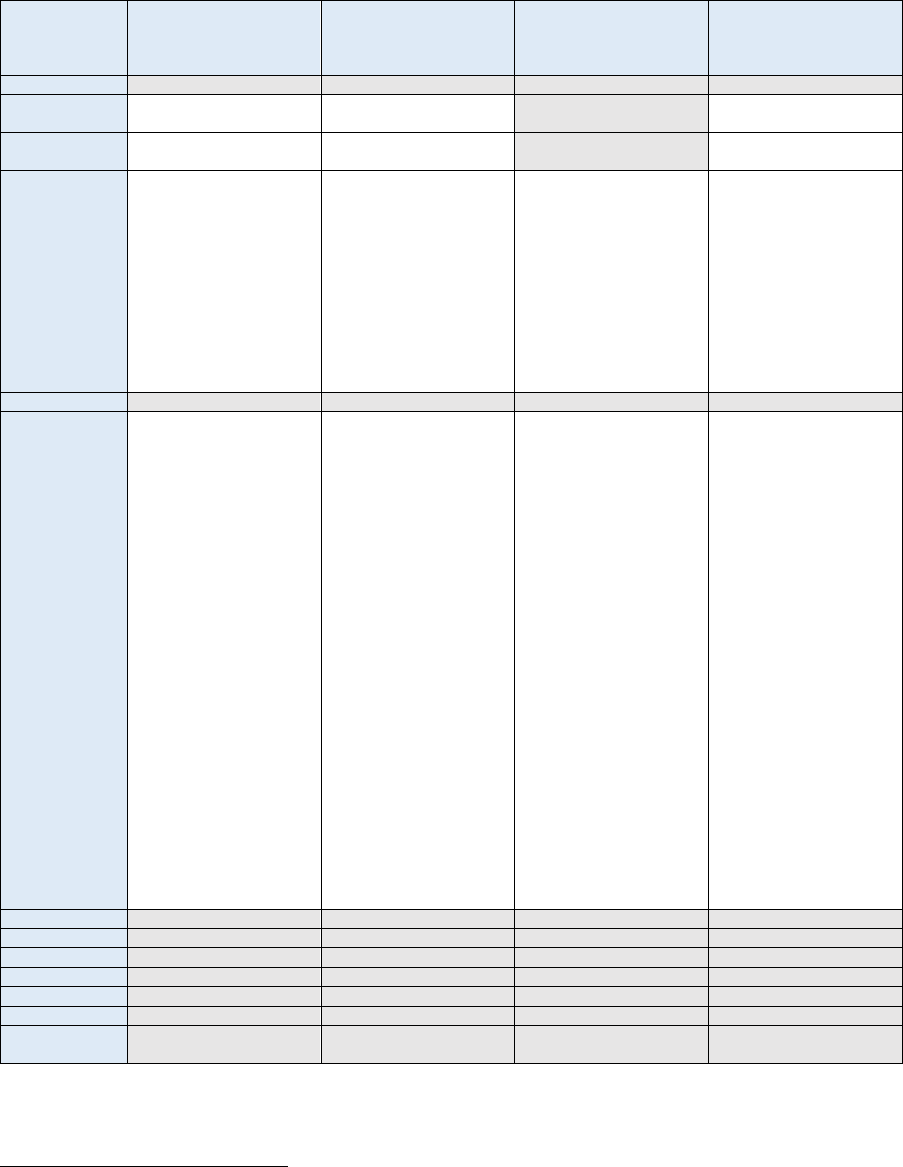
ACER REPORT ON TRANSMISSION AND DISTRIBUTION TARIFF METHODOLOGIES IN EUROPE
124
Country
Application of ToU
signals in T-tariffs
(and determination of
the time granularity)
Seasonal
Day of week (working
day / weekend or
holiday)
Within-day (peak/ off-
peak or day/ night)
Denmark
No
Estonia
Yes
Peak (1 October – 31
March)
Not applied
Peak (07:00-23:00)
Finland
Yes
Peak (1 December – 28
February)
Not applied
Peak (07:00-21:00)
France
Yes
Note: Seasonal signal
and peak/off-peak
applied to withdrawal
for users connected at
63-225 kV.
There is no seasonal
signal applied at 400 kV
Seasons are defined
based on historical load
curves. The TSO may
modify seasons.
Summer (1 April - 31
October)
Winter (1 November –
31 March);
Super-peak (1
December - 28
February)
Super peak and peak
period (Monday –
Friday, except holidays)
Super-peak (09:00-
11:00 and 18:00-20:00)
Peak (07:00-09:00,
11:00-18:00, 20:00-
23:00)
Off-peak (23:00 –
07:00)
Germany
No
Greece
Yes
372
Note: For users
equipped with hourly
meters
373
, T-tariff
charges are based on
their demand during
predefined system peak
periods. There is no
charge for demand
outside these system
peak periods.
For users equipped with
conventional meters,
load profiles are used to
derive peak period
demand profile per user
category (e.g. industrial,
commercial, etc.) and
allocate T-costs
proportional to that
peak demand. Then,
the unit charge to
recover allocated costs
is based on the annual
energy consumption of
each user category.
System peak periods
are defined for every
month of the year and
they normally vary by
season.
Currently
374
:
October- March and
April - September
For non-working days
no system peak periods
defined
Pre-defined system
peak periods
375
Currently:
Peak:
17:00-22:00
or
19:00-23:00
depending on the
season
Hungary
No
Ireland
No
Italy
No
Latvia
No
Lithuania
No
Luxembourg
No
The
Netherlands
No
372
GR: at the moment, T-connected, D-connected MV and D-connected LV customers with subscribed capacity of at least 85
kVA. Current system peak periods: Working days - Standard time: EET/EEST October - March: 17:00-22:00; April - September:
19:00-23:00.
373
GR: It is measured (average) demand during system peak periods. It is expressed on a per MW basis. The chargeable demand
is calculated each month, as the average of the 80 highest 15-minute demand values of the customer, observed during system
peak periods in the month.
374
GR: Current system peak periods (defined in 2021, applicable from 2022 onwards)
375
GR: System peak periods are proposed by the TSO and approved by the NRA. On an annual basis, the TSO assesses the
need to redefine system peak periods and submits a proposal to the NRA. Assessment is based on analysis of system load in
the previous 2 years. A proposal to redefine system peak periods should be based on evidence of significant shift in system
peaks. The decision to redefine system peak periods is taken before 30 June of the year preceding the first year of application.

ACER REPORT ON TRANSMISSION AND DISTRIBUTION TARIFF METHODOLOGIES IN EUROPE
125
Country
Application of ToU
signals in T-tariffs
(and determination of
the time granularity)
Seasonal
Day of week (working
day / weekend or
holiday)
Within-day (peak/ off-
peak or day/ night)
Norway
No static ToU tariffs.
Marginal loss tarification
applies, which aims at
providing a more
correct price signal in
each node reflecting the
changes in overall
losses in the system by
a marginal input/output.
Marginal percentages
calculated each week
differentiated day/night
and weekend.
The energy charge is
marginal percentage
multiplied with spot
price for each hour.
Not applied
Poland
No
Portugal
376
Yes
Note: The time signal
with four periods
applies to active energy
(EUR/kWh).
In addition, the peak
power variable, in
EUR/kW/day, also
reflects an additional
time signal during the
peak period.
Winter (when winter
time starts) / Summer
(when summer time
starts)
peak/half-peak/normal
off-peak/super off-peak
hours vary per season
Saturdays and,
Sundays have different
hours for half-
peak/normal off-
peak/super off-peak, no
peak in weekend
Peak (5h in winter, 3h in
summer) / Half-peak
(12h in winter, 14h in
summer) / normal off-
peak (3 hours) / super
off-peak (4h per day all
days)
Romania
No
Slovak
Republic
No
Slovenia
Yes
A new tariff
methodology is under
consideration with 2
seasons and 5 time
blocks for both
transmission and
distribution network
charges
Not applied
Peak (Monday – Friday,
except holidays)
Peak (06:00-22:00)
Spain
Yes
Time differentiations are
designed according to
characterization of the
demand, where it is
observed there are daily
2 peaks (morning and
afternoon) having
hence 3 periods each
day.
4 seasons (high,
medium-high, medium
and low)
The definition of the
seasons varies between
the peninsula and the
islands
377
Peak (Monday – Friday)
Off-peak (Weekend,
holidays)
6 periods for power-
based charges
(except for households,
who have 2 periods:
08:00 to 24:00/ 00:00 to
08:00 and off-peak
days)
6 periods for energy-
based charge
(except for households
who have 3 periods:
two peaks: P1: 10:00-
14:00, 18:00-22:00; P2:
8:00-10:00, 14:00-
18:00, 22:00-24:00
376
PT: The time structure presented corresponds to the weekly time schedule, where the time-of-use structure differs between
workings days, Saturdays and Sundays. For low voltage end-users, a daily time schedule is also available, where all days of the
year follow the same structure (more information is available here, in Portuguese).
377
ES: Peninsula: (i) High: January, February, July and December. (ii) Medium-High: March and November. (iii) Medium: June,
August and September. (iv) Low: April, May and October; Canary Islands: (i) High: July, August, September and October. (ii)
Medium-High: November and December. (iii) Medium: January, February and March. (iv) Low: April, May and June; Illes Balears:
(i) High: June, July, August and September. (ii) Medium-High: May and October. (iii) Medium: January, February and December.
(iv) Low: March, April and November. Ceuta: (i) High: January, February, August and September. (ii) Medium-High: July and
October. (iii) Medium: March, November and December. (iv) Low: April, May and June. Melilla: (i) High: January, July, August
and September. (ii) Medium-High: February and December. (iii) Medium: June, October and November. (iv) Low: March, April
and May.

ACER REPORT ON TRANSMISSION AND DISTRIBUTION TARIFF METHODOLOGIES IN EUROPE
126
Country
Application of ToU
signals in T-tariffs
(and determination of
the time granularity)
Seasonal
Day of week (working
day / weekend or
holiday)
Within-day (peak/ off-
peak or day/ night)
(delayed one hour for
Ceuta and Melilla); and
one off-peak: 0:00 to
8:00 and off-peak days)
Sweden
No static ToU tariff
applies, but there is a
time-differentiated
component in the tariff,
it's based on actual
hourly market prices per
bidding zone with an
additional supplement
charge to cover risks.
Not applied
Not applied
Not applied
Table 34: Possibility of choice between different time-of-use signal options (in transmission) and availability of
different ToU T-tariffs for different network users
Country
(Some) users are
allowed to choose
from different ToU
signal options offered
to them
The same time
signals are available
to all network users
who are subject to
ToU tariffs
Other details
Belgium
No
Yes
Croatia
No
Yes
Estonia
No
Yes
Finland
No
Yes
France
Yes
No
Network users can choose between 3 tariff versions
depending on their withdrawal pattern.
378
Seasonal signal and peak/off-peak applied to
withdrawal for users connected at 63-225 kV.
There is no seasonal signal applied at 400 kV.
Greece
No
Yes
Norway
No
Yes
Portugal
Yes
No
For a given voltage level, network users can select
more than one ToU schedule. For instance, at VHV,
HV and MV there are two different weekly
schedules available, which differ in the location of
the peak periods.
However, the same time signal is not available to all
end-users. While there is a weekly schedule
available to all end-users in mainland Portugal,
there is an optional weekly schedule only available
to VHV, HV and MV users. Also, there is a daily
schedule only available to LV users.
The levels of the ToU tariffs are the same in the
country. What may differ is the exact location of
each time period (peak, half-peak, normal off-peak,
super off-peak) across users. D-connected users at
LV, who also pay transmission tariffs, have access
to a ToU profile with a daily schedule (i.e.
distribution of time periods is the same each day).
Other voltage levels (VHV, HV, MV) must follow a
weekly schedule (i.e. distribution of time periods
depends on the type of day: working day vs
Saturday vs Sunday).
Slovenia
No
No
For network users up to 43 kW, the time signal is in
the energy charge. For network users above to 43
kW, the time signal is also embedded in the
capacity charge calculated based on monthly
average of three highest peaks in peak periods.
Spain
No
No
Time differentiations are designed according to
characterization of the demand, where it is
378
FR: short-use, medium-use or long-use. Long-use version has higher capacity-based coefficients (EUR/kW) and lower energy-
based coefficients (EUR/kWh). Short-use version has higher energy-based coefficients (EUR/kWh) and lower capacity-based
coefficients (EUR/kW).
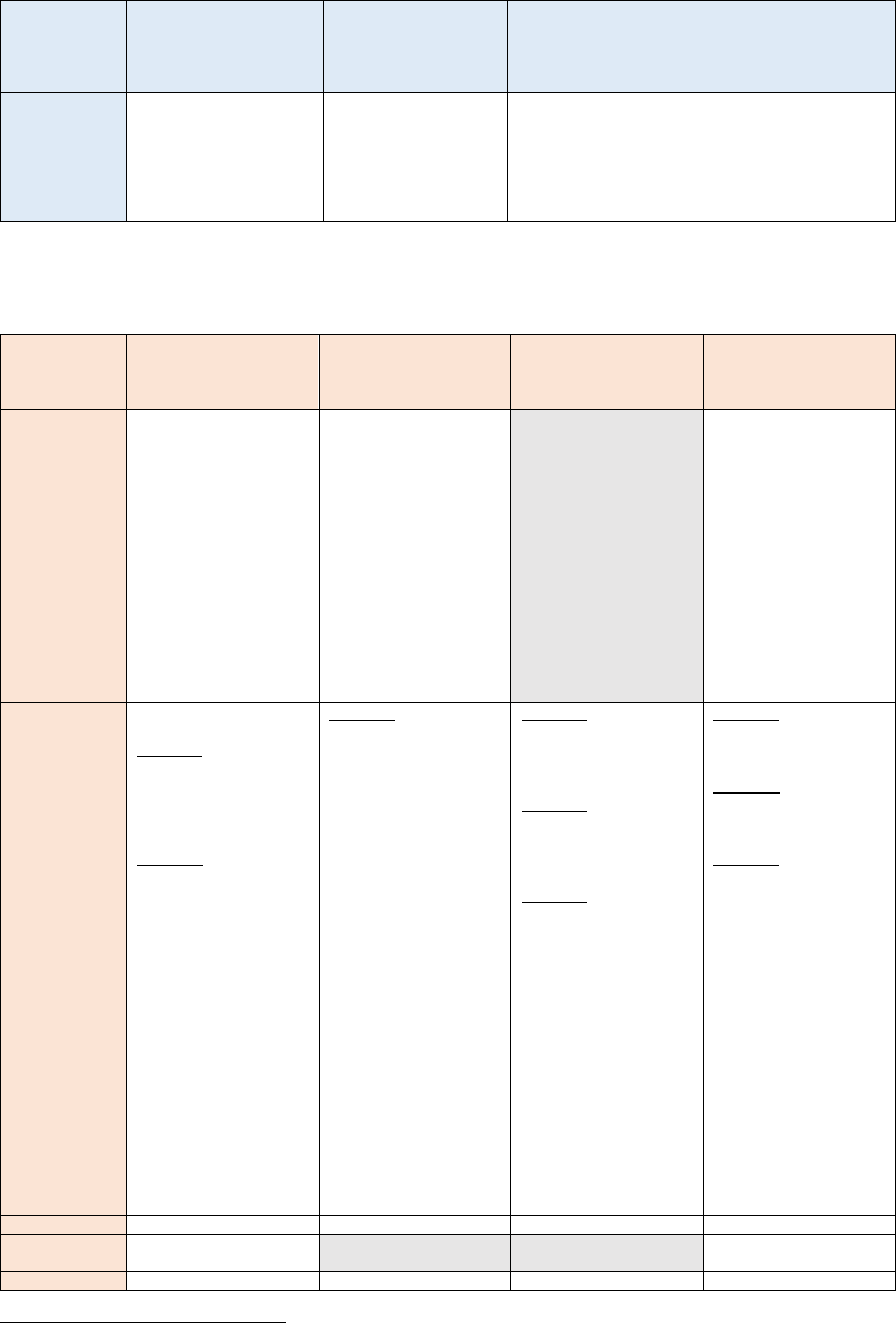
ACER REPORT ON TRANSMISSION AND DISTRIBUTION TARIFF METHODOLOGIES IN EUROPE
127
Country
(Some) users are
allowed to choose
from different ToU
signal options offered
to them
The same time
signals are available
to all network users
who are subject to
ToU tariffs
Other details
observed there are daily 2 peaks (morning and
afternoon) having hence 3 periods each day.
The time signal is the same for all consumers
except household consumers because there is no
seasonal signal for them and they have a more
simple tariff with less periods for capacity and
energy.
Table 35: Application of Time-of-use signals in D-tariffs and temporal granularity of time-of-use D-tariff structures
Country
Application of ToU
signals in D-tariffs
and determination of
the time granularity
Seasonal
Day of week (working
day / weekend /
holiday)
Within-day (peak/ off-
peak or day/ night)
Austria
Yes
Time of use tariffs
(day/night and
seasonal) are applied in
all network areas,
however in some of the
network areas there is
no difference between
the tariff applied during
the different season or
the time of day. This is
based on the needs of
the particular network
area or certain
commercial network
users.
Summer (1 April – 30
September)
Winter (1 October – 31
March
Not applied
Day (06:00-22:00)
Night (22:00-06:00)
Belgium
Yes
Brussels:
The power-based tariff
(EUR/MW) is based on
actual peak (07:00 –
22:00)
Flanders:
Both 07:00-22:00 and
06:00-21:00 are applied
(depending on the
municipality the network
user lives in), but 07:00-
22:00 is generally
applied.
Exclusive night tariff for
'accumulation heating:
the DSO offers a total
charging time of 8 to 9
hours at a lower night
rate.
From January 2023,
only the exclusive night
tariff remains, new time-
differentiated D-tariffs
are under
consideration.
Wallonia:
Day / Night periods
defined by the DSO
may vary seasonally
Brussels:
Weekend days and
holidays are considered
“night”
Flanders:
Weekend days and
holidays are considered
“night”
Wallonia:
Day / Night
Brussels:
Day (07:00-22:00) /
Night (22:00-07:00)
Flanders:
Day (07:00-22:00) /
Night (22:00-07:00)
Wallonia:
Day / Night (times
defined by the DSO and
may vary within the
geographical area of
the DSO)
Bulgaria
No
379
Croatia
Yes
Not applied
Not applied
Day (08:00-22:00) /
Night (22:00-08:00)
Cyprus
No
379
BG: Based on information provided by the Bulgarian NRA for the 2021 ACER Report on Distribution Tariff Methodologies in
Europe.

ACER REPORT ON TRANSMISSION AND DISTRIBUTION TARIFF METHODOLOGIES IN EUROPE
128
Country
Application of ToU
signals in D-tariffs
and determination of
the time granularity
Seasonal
Day of week (working
day / weekend /
holiday)
Within-day (peak/ off-
peak or day/ night)
Note: The network
charge has currently no
time differentiation (i.e.
the same rates apply),
but the framework
allows for time
differentiation by
seasons and peak/off-
peak within a day
380
Czech
Republic
Yes
The DSO is obliged to
ensure off-peak zone
for given number of
hours per day,
differentiated by
customers group.
The exact hours of a
day are chosen by the
DSO.
Choice between
monthly capacity
charge or yearly
capacity charge (for HV
and MV users)
381
Friday 12:00 to Sunday
18:00 off-peak (LV)
Peak / off-peak periods
defined by the DSO
Denmark
Yes
Different load periods
are operated throughout
the day. When
allocating the costs over
load periods, it is taken
into account that part of
the costs varies with the
load in the electricity
grid, while another part
of the costs is
unaffected by the load
in the electricity grid.
Thus, tariffs in periods
with the greatest load
(peak load) are high,
while the tariffs are
lower in periods with
less load in the
electricity grid. The
general principle is that
the electricity network's
total revenue from a
given network user
category is unchanged -
regardless of whether
time differentiated tariffs
or a flat tariff are used.
Peak / off-leak periods
Estonia
Yes
No seasonal tariffs
Working day tariffs –
daily tariffs that are
applied from 07:00 to
22:00 and night-tariffs
that are applied from
22:00 to 07:00.
Weekend / holiday
tariffs - night-tariffs that
are applied for 24
hours.
Daily tariffs – tariffs that
are applied from 07:00
to 22:00 on working
days.
Night-tariffs – tariffs that
are applied from 22:00
to 07:00 on working
days and 24 hours on
weekends and on
holidays.
Peak tariffs - tariffs that
are applied in the period
from November to
March:
1) on working days
between 9:00 and 12:00
and 16:00 and 20:00;
380
CY: Time periods: June - September (High Demand Season) vs. October - May; daily peak (June - September: 16:00 - 23:00;
October - May: 09:00 - 23:00)
381
CZ: User can choose capacity charge (EUR/kW) on monthly basis or at yearly basis (at discount).

ACER REPORT ON TRANSMISSION AND DISTRIBUTION TARIFF METHODOLOGIES IN EUROPE
129
Country
Application of ToU
signals in D-tariffs
and determination of
the time granularity
Seasonal
Day of week (working
day / weekend /
holiday)
Within-day (peak/ off-
peak or day/ night)
2) on weekends and
holidays between 16:00
and 20:00.
Peak time tariffs are not
mandatory for users of
network service. Using
the peak time tariff is an
option, not an obligation
Finland
Yes
DSOs decide on their
own about their
respective tariff
structures including
time-of-use signals;
applying different
energy-based fee and
monthly capacity-based
fees per season and for
day/night is a typical
practice.
Winter (1 November –
31 March) /
Summer (1 April – 30
October)
Not applied
Day (07:00-22:00) /
Night (22:00-07:00)
France
Yes
There are different time-
of-use tariffs (two time-
periods, four time-
period, etc.).
In medium voltage, a
"mobile" peak period
option is available: it is
composed of a given
number of "peak days"
that are not set ex ante
(these days are the
same as the PP1 days
of the capacity
mechanism).
Customers who have
subscribed to this
option only know the
day before when peak
period (with the highest
price) will happen,
depending on TSO's
forecast, in order to
match as best as
possible with real
congestions when they
happen.
Winter (1 November –
31 March) /
Summer (1 April – 30
October)
Not applied
DSOs can choose
locally 16 peak hours
and 8 off-peak hours
Germany
No
Greece
Yes
382
Capacity charge based
on network use during
predefined peak periods
that vary by season/
month
383
382
GR: For users equipped with time-of-use meters, the capacity charge is based on their demand during predefined peak periods
on the network. Peak periods are defined for every month of the year and they normally vary by season. There is no capacity
charge for demand outside these peak periods. For users equipped with conventional meters, load profiles are used to derive
peak period demand profile per user category (e.g. industrial, commercial, etc.) and allocate the power/capacity related D-costs
in proportion to the annual average peak demand of each user category. Then, the unit capacity charge to recover allocated costs
is based on subscribed demand.
383
GR: The capacity element of the D-tariff that applies to users equipped with time-of-use meters (currently all MV users and LV
users with subscribed capacity of 85 kVA or above) is proportional to the monthly average demand recorded during distribution
network peak demand periods.
The network peak demand periods are defined for each month, by statistical analysis of hourly network load over the two previous
years. An hour is nominated 'peak demand' if it fulfils the following conditions: A) Network load during this hour exceeds XX% of
the highest hourly load of the month, where XX% can have a value of 85% to 95%, or B) The hour is among the N hours with the
highest load of the month, where N is typically higher than 50.
Results from this statistical analysis are processed further to remove inconsistencies and reduce randomness.

ACER REPORT ON TRANSMISSION AND DISTRIBUTION TARIFF METHODOLOGIES IN EUROPE
130
Country
Application of ToU
signals in D-tariffs
and determination of
the time granularity
Seasonal
Day of week (working
day / weekend /
holiday)
Within-day (peak/ off-
peak or day/ night)
Hungary
No
Ireland
Yes
Day/Night/Peak tariffs
are applied upon the
choice for smaller users
(DG1, 2, 5); while
Day/Night tariffs are
mandatory for larger
users (DG6, 7, 8, 9, 10).
Day: 08:00 – 23:00
(excl. Peak)
Night 23:00 - 08:00
Peak: 17:00 – 19:00
Italy
No
Latvia
Yes
Network users can
choose between two or
three time zones -
night/weekend zone
and day zone or
night/weekend zone,
day zone and peak time
zone.
Weekend hours
considered as “night”
Day (07:00-08:00,
10:00-17:00, 20:00-
23:00) /
Night (23:00-07:00) /
Peak (08:00-10:00,
17:00-20:00)
Lithuania
Yes
DSOs decide on their
own how to include ToU
signals in their
respective tariff
structures; general
principle - differentiation
has to be based on
peak loads (encourage
users to shift
consumption from peak
to off-peak)
Note: Data in the table
is only an example of
an applied time-signal
by one of the DSO.
Weekend hours
considered as “night”
Day (07:00-23:00) /
Night (23:00-07:00) for
the energy-based
charge
Luxembourg
No
Malta
Yes
384
ToU tariffs for 2 specific
consumers’ categories:
- for non-residential
consumers with a
consumption > 5000
MWh or 5500 MVAh
and EV charging points.
- for non-residential
customers with a
consumption > 5000
MWh or 5500 MVAh
A day premium of
€0.0015 and a night
discount of €0.0262
over the applicable non-
residential tariff is
applied.
For EV charging tariff:
For residential and
domestic EV charging
points outside off-peak
tariffs are the general
electricity tariffs.
EV off-peak tariffs and
tariffs for non-residential
For EV charging tariff:
On Sundays EV
charging consumption
off-peak tariff applies all
day
for non-residential
customers with a
consumption > 5000
MWh or 5500 MVAh
Day (06:00 – 22:00)
Night (22:00 – 06:00)
For EV charging tariff:
Outside off-peak
(06:00-12:00 and 16:00-
24:00) /
off-peak (24:00-06:00
and 12:00-16:00) for EV
charging points
Peak demand periods are proposed by the DSO and approved by the NRA. In principle, they are defined before the beginning of
each regulatory period and they do not change in the period, unless there is evidence of significant changes in network load
profile.
384
MT: time-of-use available for customers > 5GWh and time-differentiated all-inclusive retail charge for EV charging points
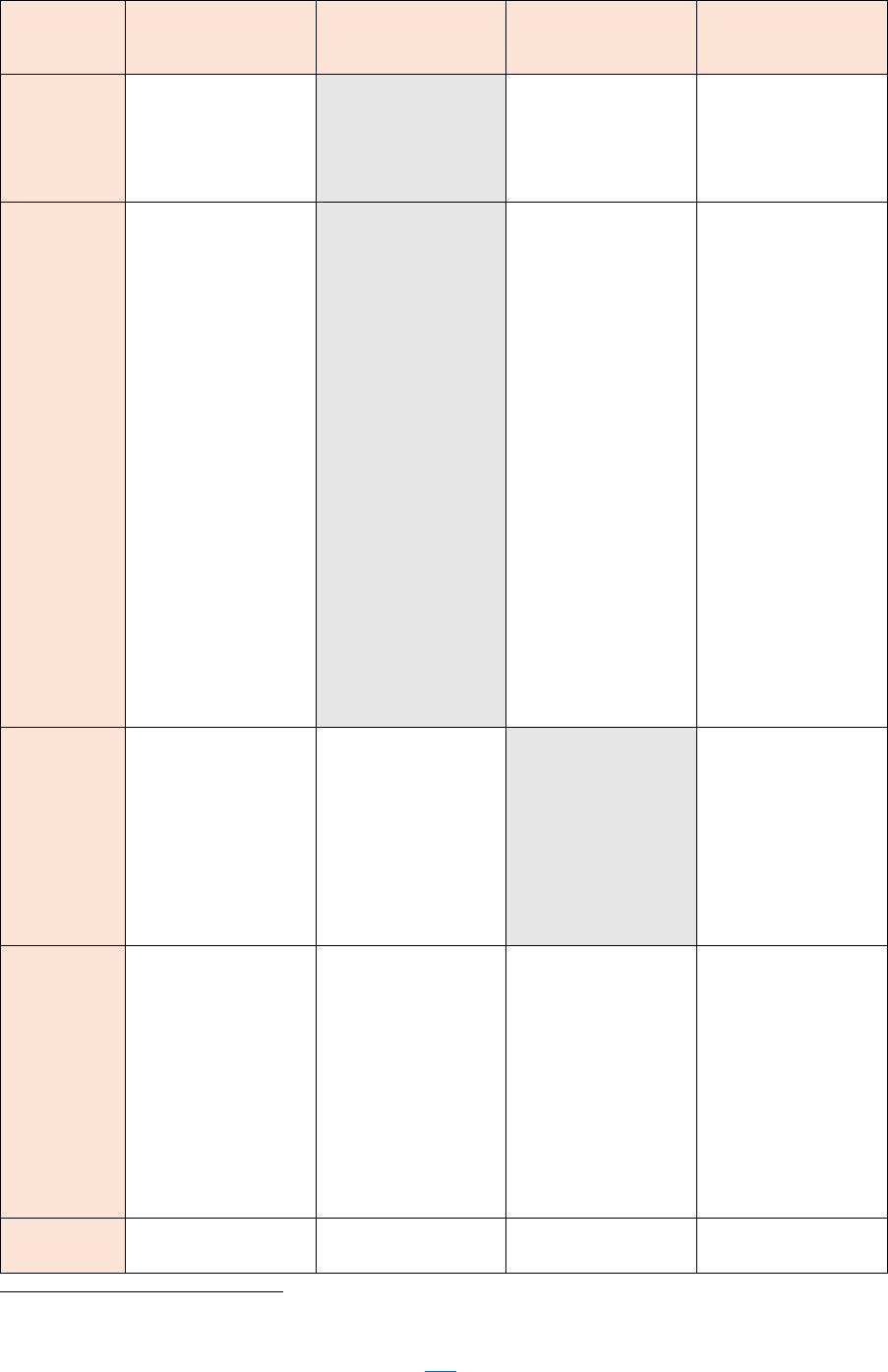
ACER REPORT ON TRANSMISSION AND DISTRIBUTION TARIFF METHODOLOGIES IN EUROPE
131
Country
Application of ToU
signals in D-tariffs
and determination of
the time granularity
Seasonal
Day of week (working
day / weekend /
holiday)
Within-day (peak/ off-
peak or day/ night)
EV charging points are
specific tariffs.
EV charging tariffs
cover energy
component and part of
distribution and supply
costs
The
Netherlands
Yes (but very limited
application)
Network users that are
connected to LV, non-
households and
connection is larger
than 3x80A, but not
large enough to get MV
connection.
This category of users
is very limited in
numbers. The tariff
structure for this
category is as follows:
a. Fixed network charge
(EUR / year)
b. kW contracted
(EUR/kW/year)
c. kWh normal
(EUR/kWh) for 07:00 to
23:00 on weekdays
d. kWh low (EUR/kWh)
for the remaining hours
The kWh low and
normal tariffs vary
between DSOs due to
different efficiency
performance
(benchmarking).
Not applied
Weekend hours are
considered as low tariff
period
Normal tariff period:
07:00 - 23:00), low tariff
period for the remaining
hours
Norway
Yes
Before July 2022 it was
mandatory to provide
seasonal differentiation
of the DSO-tariff.
From July 2022 it is not
mandatory with time or
seasonal differentiation.
Still, most of the DSO
differentiate the energy
component between
day and night.
Usually Summer/winter,
but it is up to each DSO
to determine based on
actual flows.
Not applied
Yes, it is up to each
DSO.
Poland
Yes
Typically there are 3
zones during the day
(morning peak,
afternoon peak and off-
peak) and 2 periods
(peak/off peak and
day/night).The charges
can be also
differentiated for
summer and winter.
Night period additionally
includes all hours of
Saturdays and Sundays
and statutory holidays
Summer (1 April – 30
September) /
Winter (1 October – 31
March) peak hours vary
per season
Weekends and
statutory holidays
treated as night period
Peak (07:00-13:00,
16:00-21:00 in winter,
19:00-22:00 in summer)
/ off-peak (remaining
hours)
Portugal
385
Yes
Winter (when winter
time starts) / Summer
(when summer time
Saturdays and,
Sundays have different
hours for half-
Peak (5h in winter, 3h in
summer) / Half-peak
(12h in winter, 14h in
385
PT: The time structure presented corresponds to the weekly time schedule, where the time-of-use structure differs between
workings days, Saturdays and Sundays. For low voltage end-users, a daily time schedule is also available, where all days of the
year follow the same structure (more information is available here, in Portuguese).
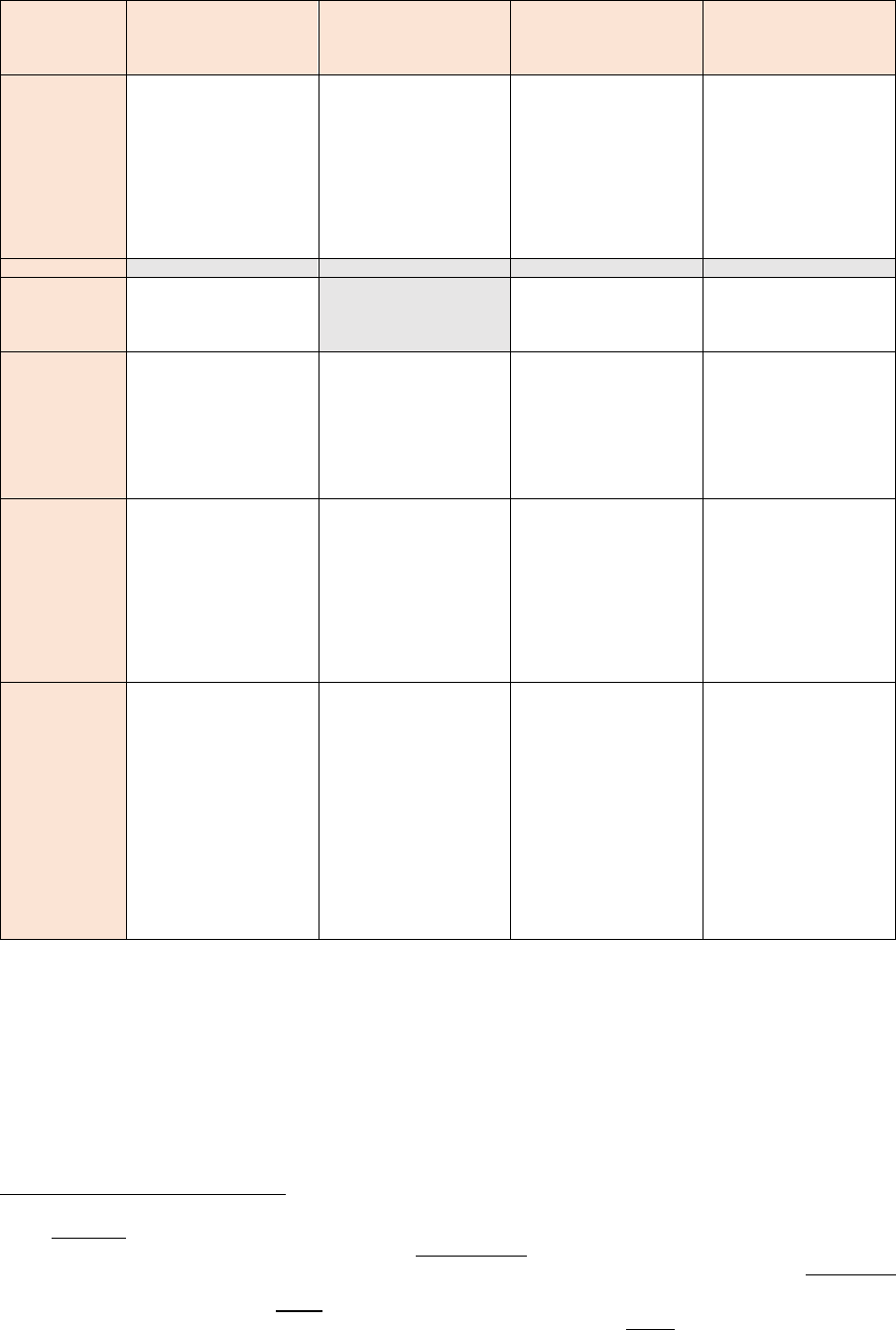
ACER REPORT ON TRANSMISSION AND DISTRIBUTION TARIFF METHODOLOGIES IN EUROPE
132
Country
Application of ToU
signals in D-tariffs
and determination of
the time granularity
Seasonal
Day of week (working
day / weekend /
holiday)
Within-day (peak/ off-
peak or day/ night)
The time signal with
four periods applies to
active energy
(EUR/kWh). In addition,
the peak power
variable, in
EUR/kW/day, also
reflects an additional
time signal during the
peak period.
starts) peak/half-
peak/normal off-
peak/super off-peak
hours vary per season
peak/normal off-
peak/super off-peak, no
peak in weekend
summer) / normal off-
peak (3 hours) / super
off-peak (4h per day all
days)
Romania
No
Slovak
Republic
Yes
Weekends considered
as off-peak
Peak /off-peak band;
off-peak has to be
offered 8 hours or 20
hours)
Slovenia
Yes
New tariff methodology
under consideration
with 2 seasons and 5
time blocks for both
transmission and
distribution network
charges
Weekends and holidays
considered as off-peak
Peak (06:00-22:00) /
off-peak (22:00-06:00)
Spain
Yes
Time differentiations are
designed according to
characterization of the
demand, where it is
observed in there are
daily 2 peaks (morning
and afternoon) having
hence 3 periods each
day.
4 seasons (high,
medium high, medium,
low)
Definition of seasons
varies between
peninsula and the
islands
386
Weekends are different
from working days
6 periods for power-
based charges
(households have 2
periods)
6 periods for energy-
based charge
(households have 3
periods - 2 peak and 1
off-peak)
Sweden
Yes
387
DSOs decide on their
own about their
respective tariff
structures; table values
are typical time-of-use
signals which are
applied. ToU is applied
to different elements on
different tariffs as such
the time signal varies
between 2 energy
counters and peak load
during peak time.
Optional seasonal
(summer and winter)
Optional peak/off-peak
386
ES: Peninsula: (i) High: January, February, July and December. (ii) Medium-High: March and November. (iii) Medium: June,
August and September. (iv) Low: April, May and October. Canary Islands: (i) High: July, August, September and October. (ii)
Medium-High: November and December. (iii) Medium: January, February and March. (iv) Low: April, May and June. Illes Balears:
(i) High: June, July, August and September. (ii) Medium-High: May and October. (iii) Medium: January, February and December.
(iv) Low: March, April and November. Ceuta: (i) High: January, February, August and September. (ii) Medium-High: July and
October. (iii) Medium: March, November and December. (iv) Low: April, May and June. Melilla: (i) High: January, July, August
and September. (ii) Medium-High: February and December. (iii) Medium: June, October and November. (iv) Low: March, April
and May.
387
SE: optional seasonal and peak pricing energy for fuse, small and large customers. Practices differ across DSOs.

ACER REPORT ON TRANSMISSION AND DISTRIBUTION TARIFF METHODOLOGIES IN EUROPE
133
Table 36: Possibility of choice between different ToU signal options (in distribution) and availability of different ToU
D-tariffs for different network users
Country
(Some) users are
allowed to choose
from different ToU
signal options offered
to them
The same time
signals are available
to all network users
who are subject to
ToU tariffs
Other details
Austria
No
No
Some (but not all) of the 14 network areas use
variation based on season (summer/winter tariff)
and/or time of day (high/low tariff). The tariff
possibilities are: summer high tariff, summer low
tariff, winter high tariff, winter low tariff. In case of
different summer/winter tariffs, the winter tariff is
higher.
Belgium
Brussels: No
Flanders: No
Wallonia: No
Brussels: Yes
Flanders: Yes
Wallonia: No
Wallonia: the ToU signals vary based on the DSO’s
choice and location of the network user.
Croatia
No
Yes
Czech
Republic
Yes
No
User can choose from more than one ToU tariff.
The DSO is obliged to ensure off-peak period for
given number of hours per day, differentiated by
customers group. The exact hours of a day are
chosen by the DSO. DSOs offer slightly different
conditions. Location is also taken into account by
the DSO while setting the peak/off-peak hours.
Denmark
No data
Yes
Estonia
Yes
No
It is possible for network users to choose a ToU
tariffs with peak-time tariffs instead of the ToU tariffs
without peak-time tariffs which is differentiated
day/night and weekdays/weekends.
Finland
No data
No
User can choose from typically two different tariff
options with different time-of-use signals typically
for time-of-day and time-of-day and year. The DSO
sets the time intervals in these options
France
Yes
No
There are different time-of-use tariffs (two times
period, four times period, etc.). In medium voltage,
a "mobile" peak period option is also available to the
customers.
Time of use signals vary based on DSO’s choice
and based on location.
Greece
No
Yes
Ireland
No
Yes
Latvia
Yes
Yes
Network users can choose between two or three
time zones -night/weekend zone and day zone or
night/weekend zone, day zone and peak time zone.
Lithuania
No
No
ToU signals vary based on the DSO’s choice.
Malta
No
No
ToU tariffs are provided for 2 specific consumers’
categories: non-residential consumers with a
consumption > 5000 MWh or 5500 MVAh and EV
charging points. The ToU tariffs for these 2 specific
consumers’ categories are different.
Norway
No
No
Time signals (seasonal) depend on the DSO’s
choice and depend on the location
Poland
Yes
No
Different time-of-use tariff options can be selected
by the network users.
ToU signals vary among the network user groups
and based on DSO’s choice.
Portugal
Yes
No
Network users can select among different time-of-
use schedules. For instance, users at HV and MV
can select from two different ToU schedules with a
weekly schedule. Users at LV can select between a
weekly schedule and a daily schedule.
The structure of the ToU periods is different
between voltage levels. At HV, MV and a part of LV,
a ToU structure with 4 periods is mandatory. For the
remaining part of LV a ToU with 3, 2 or 1 periods
applies.
Slovak
Republic
No
Yes
Slovenia
No
No
For network users up to 43 kW, the time signal is in
the energy charge, while for network users above to
43 kW, the time signal is also embedded in the

ACER REPORT ON TRANSMISSION AND DISTRIBUTION TARIFF METHODOLOGIES IN EUROPE
134
Country
(Some) users are
allowed to choose
from different ToU
signal options offered
to them
The same time
signals are available
to all network users
who are subject to
ToU tariffs
Other details
capacity charge calculated based on monthly
average of three highest peaks in peak periods.
Spain
No
No
Time differentiations are designed according to
characterization of the demand, where it is
observed in there are daily 2 peaks (morning and
afternoon) having hence 3 periods each day.
ToU tariffs also vary based on network user groups.
Sweden
Yes
No
DSOs decide on their own about their respective
tariff structures; Some DSOs allow network users to
choose between different ToU tariffs and apply/ or
offer different signals to different network users.
Table 37: Overview of which T-connected users are subject to time-of-use tariffs and whether time-of-use tariffs
are mandatory for the network user or the user can opt in or opt out
Country
Transmission tariffs
Network users who are
excluded from ToU signals
ToU signals are mandatory
for network users or network
users can opt out
Share of T-connected network
users for whom time-of-use
network tariffs are actually
applied
Austria
No time-of-use
Belgium
Producers are excluded from
time-of-use (the Annual Peak tariff
is applied to all 15-min net
withdrawal)
Mandatory for all those network
users who are subject to time-
of-use (no possibility to opt out)
100% of net withdrawal
capacities
Bulgaria
No time-of-use
Croatia
Time-of-use T-tariffs for the
withdrawal of the energy from the
grid apply to all T-connected
network users.
Mandatory for all those network
users who are subject to time-of-
use (no possibility to opt out)
Cyprus
No time-of-use
Czech
Republic
No time-of-use
Denmark
No time-of-use: The Danish TSO
has considered introduction of
time-of-use tariffs and submitted
a tariff methodology for approval
with the Danish regulator.
Estonia
Time-of-use T-tariffs are not
available to network users
connected to the 330 kV network.
Such a decision was made
because TSO and network users
do not see the need for time-of-
use tariffs at the voltage level.
Mandatory for all those network
users who are subject to time-
of-use (no possibility to opt out)
Finland
DSO decides on to which network
users it applies a ToU tariff
Consumers can opt out by
choosing a general tariff offered
by every DSO without any ToU
signals.
France
Time-of-use T-tariffs are not
applied to users connected at 400
kV. Indeed, the sizing of the
400kV network is not directly
linked to peak demand, but to
inter-regional and international
transits, which depend on local
balances between generation and
consumption.
Mandatory for all those network
users who are subject to time-
of-use (no possibility to opt out)
Germany
No time-of-use
Greece
All T-connected network users
have capable meters to record
Mandatory for all those network
users who are subject to time-
of-use (no possibility to opt out)
100%
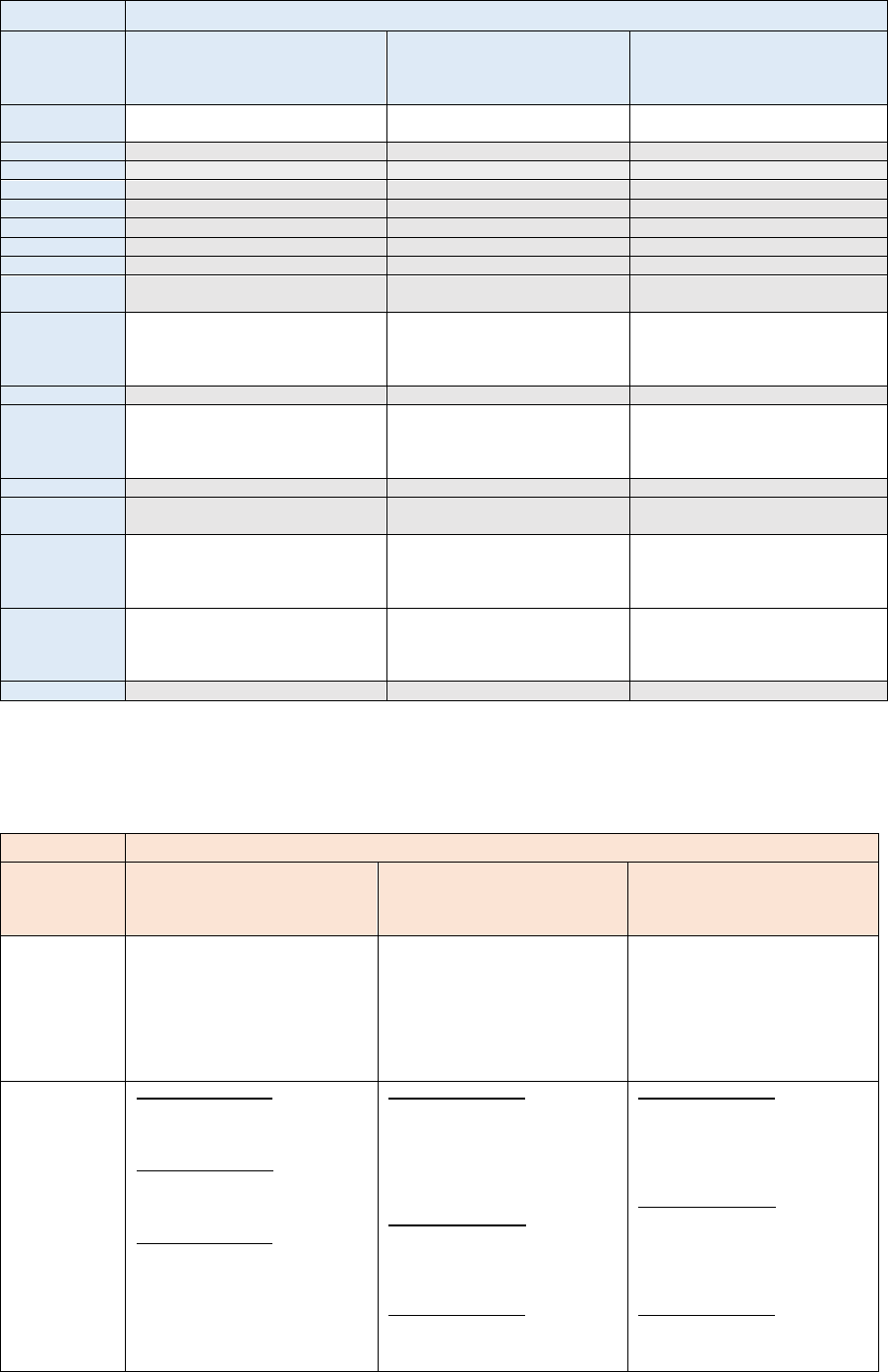
ACER REPORT ON TRANSMISSION AND DISTRIBUTION TARIFF METHODOLOGIES IN EUROPE
135
Country
Transmission tariffs
Network users who are
excluded from ToU signals
ToU signals are mandatory
for network users or network
users can opt out
Share of T-connected network
users for whom time-of-use
network tariffs are actually
applied
time-of-use and subject to time-of-
use charges
Hungary
No time-of-use
Ireland
No time-of-use
Italy
No time-of-use
Latvia
No time-of-use
Lithuania
No time-of-use
Luxembourg
No time-of-use
Malta
No transmission network
The
Netherlands
No time-of-use
Norway
Time-of-use T-tariffs for the
withdrawal of the energy from the
grid apply to all T-connected
network users.
Mandatory for all those network
users who are subject to time-
of-use (no possibility to opt out)
Poland
No time-of-use
Portugal
All T-connected network users
have capable meters to record
time-of-use and subject to time-of-
use charges
Mandatory for all those network
users who are subject to time-
of-use (no possibility to opt out)
100%
Romania
No time-of-use
Slovak
Republic
No time-of-use
Slovenia
All T-connected network users
have capable meters to record
time-of-use and subject to time-of-
use charges.
Mandatory for all those network
users who are subject to time-
of-use (no possibility to opt out)
100%
Spain
All T-connected network users
have capable meters to record
time-of-use and subject to time-of-
use charges.
Mandatory for all those network
users who are subject to time-
of-use (no possibility to opt out)
100%
Sweden
No time-of-use
Table 38: Overview of which D-connected users are subject to time-of-use tariffs and whether time-of-use tariffs
are mandatory for the network user or the user can opt in or opt out
Country
Distribution tariffs
Network users who are
excluded from ToU signals
ToU signals are mandatory for
network users or optional (i.e.
network users can opt out)?
Share of D-connected network
users for whom time-of-use
network tariffs are actually
applied
Austria
No user is excluded
ToU is mandatory if it is
applicable in the particular
network area.
(The information on the share of
mandatory versus optional time-
of-use charges for distribution-
connected network users is not
available to the NRA
The information on the share of
D-connected network users for
whom time-of-use network tariffs
are actually applied is not
available to the NRA.
Belgium
Belgium (Brussels):
No network user is excluded
from Time-of-use
Belgium (Flanders):
No network user is excluded
from Time-of-use
Belgium (Wallonia):
Users excluded from time-of-
use: the information is not
available to the regulator.
Belgium (Brussels):
Time-of-use tariffs are optional
to all network users with HI/LO
meters, as they can still choose
to switch to Total Hours (sum up
the HI and LO registers)
Belgium (Flanders):
Time-of-use tariffs are optional
to all network users (i.e. they
can opt out)
Belgium (Wallonia):
Time-of-use tariffs are optional
to low voltage network users
(who can opt for a standard
Belgium (Brussels):
Time-of-use network tariffs
actually applied for at least 10%
and below 25% of the D-
connected network users.
Belgium (Flanders):
Time-of-use network tariffs are
actually applied for at least 50%
and below 75% of the D-
connected network users.
Belgium (Wallonia):
The information on the share of
D-connected network users for
whom time-of-use network tariffs

ACER REPORT ON TRANSMISSION AND DISTRIBUTION TARIFF METHODOLOGIES IN EUROPE
136
Country
Distribution tariffs
Network users who are
excluded from ToU signals
ToU signals are mandatory for
network users or optional (i.e.
network users can opt out)?
Share of D-connected network
users for whom time-of-use
network tariffs are actually
applied
meter and a single price or can
opt for a dual meter for with a
different price for day and night
consumption) and mandatory to
other network users.
The information on the share of
mandatory versus optional time-
of-use charges for D-connected
network users is not available to
the regulator.
are actually applied is not
available to the regulator.
Bulgaria
No time-of-use
Croatia
“Public lighting” is excluded from
Time-of-use as a specific single-
tariff model used exclusively for
lighting of public places, public
roads and similar purposes.
Time-of-use is mandatory for
users with connections rated 20
kW and over (i.e. below 10% of
distribution-connected network
user) and optional for the rest.
Time-of-use network tariffs are
actually applied for at least 50%
and below 75% of the D-
connected network users.
Cyprus
No time-of-use
388
Czech
Republic
Network users who do not match
the conditions for using the time-
of-use tariff are excluded.
Time-of-use is optional for all
network users who match the
conditions for using the time-of-
use tariff.
Time-of-use network tariffs are
actually applied for at least 50%
and below 75% of the D-
connected network users.
Denmark
No data
Time-of-use is optional for all
network users
Information is not available to
the NRA
Estonia
According to the Electricity
Market Act, everyone must have
smart meters and none of the
network users are excluded from
Time-of-use.
Time-of-use is optional for
household users and mandatory
for other users. The share of
mandatory versus optional time-
of-use charges for distribution-
connected network users is
about 3% mandatory
(representing 65% of
consumption) and 97% optional
(representing 35% of
consumption.
Time-of-use network tariffs
actually applied for at least 90%
of the D-connected network
users
Finland
Users excluded from time-of-
use: the information is not
available to the NRA (as DSOs
are free to choose their own tariff
structure, it is DSO's decision
whether they offer time-
differentiated tariffs or not.)
The information on the share of
mandatory versus optional time-
of-use charges for distribution-
connected network users is not
available to the NRA.
The information on the share of
D-connected network users for
whom time-of-use network tariffs
are actually applied is not
available to the NRA.
France
No user is excluded
(network users can all opt to
have smart meters which allows
ToU tariffs)
Optional for all those network
users who have access to time-
of-use
The information on the share of
D-connected network users for
whom time-of-use network tariffs
are actually applied is not
available to the NRA.
Germany
No time-of-use
Greece
Users excluded from time-of-
use: low voltage customers with
subscribed capacity less than 85
kVA, because these users are
currently not equipped with time-
of-use meters.
Mandatory for all those network
users who are subject to time-of-
use (no possibility to opt out)
Time-of-use network tariffs are
actually applied for less than
10% of the D-connected network
users.
Hungary
No time-of-use
Ireland
No user is excluded
(Customers who have analog
single read meters have no
capability to record time-of-use.
However, these customers can
request a smart meter to avail of
time-of-use tariffs. Note: the
National Smart Metering
Programme will replace all
meters with smart meters by the
end of 2024.)
All network users can avail of
time-of-use tariffs. For small
users (DG1, 2, 5) it is available
as an option. For larger users
(DG6 – 10), it is mandatory.
The information on the share of
mandatory versus optional time-
of-use charges for distribution-
connected network users is not
available to the NRA.
Time-of-use network tariffs are
actually applied for at least 10%
and below 25% of the D-
connected network users.
Italy
No time-of-use
388
CY: Currently the network charge has no time differentiation (i.e. the same rates apply), but the framework is in place.

ACER REPORT ON TRANSMISSION AND DISTRIBUTION TARIFF METHODOLOGIES IN EUROPE
137
Country
Distribution tariffs
Network users who are
excluded from ToU signals
ToU signals are mandatory for
network users or optional (i.e.
network users can opt out)?
Share of D-connected network
users for whom time-of-use
network tariffs are actually
applied
Latvia
No user is excluded
(Any user can apply for ToU
capable meters and choose
time-of-use D-tariffs.
Optional for all those network
users who have access to time-
of-use
Time-of-use network tariffs are
actually applied for less than
10% of the D-connected network
users.
Lithuania
No user is excluded
(Any user can request from
operator for the time-of-use
capable meter and time-of-use
D-Tariffs.)
Optional for all those network
users who have access to time-
of-use.
Time-of-use network tariffs are
actually applied for less than
10% of the D-connected network
users.
Luxembourg
No time-of-use
Malta
Network users with consumption
that does not exceed 5GWh/year
are excluded from time-of-use.
EV charging points that do not
have a time-of-use capable
meter are excluded from time-of-
use.
Optional for all those network
users who have access to time-
of-use.
The information on the share of
D-connected network users for
whom time-of-use network tariffs
are actually applied is not
available to the NRA.
The
Netherlands
Network users that are
connected to LV, non-
households and connection is
larger than 3x80A, but not large
enough to get MV connection.
This category of users is very
limited in numbers.
Norway
A few customers has exemption
from meters capable to record
time-of-use. 1) due to cost of
changing meter relative to
consumption volume, 2) due to
personal/medical conditions (e.g.
related to radiation).
ToU is optional for household
customers and mandatory for
other users.
Time-of-use network tariffs
actually applied for at least 90%
of the D-connected network
users
Poland
No user is excluded
Time-of-use is mandatory for HV
network users when the DSO
has only a tariff group with e.g. 3
time bands (group A23) and NO
group with the single time band
(A21) as HV end-users must
choose a tariff group that is
offered.
Time-of-use is mandatory for
below 10% of those network
users who have it available. It is
optional for other network users
(more than 90%) who have time-
of-use available.
Time-of-use network tariffs
actually applied for at least 10%
and below 25% of the D-
connected network users.
Portugal
Users not equipped with time-of-
use meters are excluded
Time-of-use is mandatory for
below 10% of distribution-
connected network users. It is
mandatory for HV customers,
MV customers and LV
customers with contracted
power above 41.4 kVA, with a
time-of-use structure of 4
periods. It is mandatory for LV
customers with contracted
power up to 41.4 kVA and above
20.7 kVA, with a time-of-use
structure of 3 periods.
Time-of-use is optional for LV
customers with contracted
power up to 20.7 kVA. It is
optional for these customers
because these are less informed
and in the past did in general not
Time-of-use network tariffs are
actually applied for at least 10%
and below 25% of the D-
connected network users.

ACER REPORT ON TRANSMISSION AND DISTRIBUTION TARIFF METHODOLOGIES IN EUROPE
138
Country
Distribution tariffs
Network users who are
excluded from ToU signals
ToU signals are mandatory for
network users or optional (i.e.
network users can opt out)?
Share of D-connected network
users for whom time-of-use
network tariffs are actually
applied
have access to meters capable
of time-of-use structures.
Romania
No time-of-use
Slovak
Republic
Network users who do not fall
under the specifications of
particular time-of-use tariffs, as
set in the Slovak NRA Decree
18/2017, are excluded from
time-of-use.
Time-of-use is optional for all
those network users who have
access to time-of-use charges
Time-of-use network tariffs
actually applied for at least 10%
and below 25% of the D-
connected network users.
Slovenia
No user is excluded
Any user can request ToU tariffs.
The existing model doesn’t need
smart meters for the introduction
ToU (electromechanical meters
with time devices are used in
Slovenia for decades)”.
389
Time-of-use is mandatory for all
users above 43 kW and optional
for users up to 43 kW.
Time-of-use network tariffs are
actually applied for at least 50%
and below 75% of the D-
connected network users.
Spain
No user is excluded
(time-of-use D-tariffs are
applicable for all users.)
Mandatory for all those network
users who are subject to time-of-
use (no possibility to opt out)
Time-of-use network tariffs
actually applied for at least 90%
of the D-connected network
users
Sweden
Users excluded from time-of-
use: the information is not
available to the NRA
The information on the share of
mandatory versus optional time-
of-use charges for distribution-
connected network users is not
available to the NRA
The information on the share of
D-connected network users for
whom time-of-use network tariffs
are actually applied is not
available to the NRA.
Table 39: Other measures than ToU in tariff structures to give time related signals to network users
Country
Other measures to give time-related signals
Belgium
Distribution:
Wallonia:
In distribution, “exclusive night” regime, for loads that are only activated during the off-peak period (night
only). The activation signal is controlled by the DSO.
Croatia
Transmission:
Consumers on the transmission grid pay for the effectively metered peak load during peak hours through
a power-based charge (EUR/kW).
Czech
Republic
Distribution:
The remote control. Tool of DSO to block certain devices in peak hours - these devices are then powered
later in off-peak hours.
France
Distribution:
New boilers are automatically working during off-peak hours and switched-off during peak hours (based
on a signal transmitted via the smart meter), unless the customer chooses to set it differently.
Germany
Transmission:
A discount is granted to network users who considerably shift their peak load outside the network's peak
load. The discount can reach a maximum of 80% of the regular tariff the user would have paid.
Italy
Distribution:
ARERA decision 541/2020 introduced the possibility of a free-of-charge capacity increase for small LV
clients (households and very small businesses) during night hours and Sundays to favour EV recharging
during light load hours; such opportunity is targeted to consumers with private EV charging points
equipped with a smart wallbox. Currently, almost 90% of such clients have a 3.3 kW contractual capacity
limit, with the above decision, the capacity limit during light load hours is increased to 6 kW. Note also that
power withdrawal is limited by a breaker onboard the meter which trips above the contractual limit.
Poland
Both transmission and distribution:
Capacity fee (surcharge) set by the law (not an element of calculated rates) applies.
390
Capacity fee is
multiplied by coefficient which 1 or lower than 1 depending on whether the withdrawal is similar in peak
and off-peak hours or not. (E.g. for end users which withdrawal is similar in peak and off peak hours
coefficient is lower than in case of bigger difference between the withdrawal in peak and off-peak hours.
(i.e. 0.17 vs. 0.5 / 0.83 and 1.)
389
SI: the introduction of a new methodology in 2024 has smart meters as a pre-condition.
390
PL: This surcharge is used for covering capacity market costs. The charge is variable (PLN/MWh) only for energy taken in
peak hours for end-users that have contractual capacity bigger than 16 kW. Smaller end-users, i.e. households pay lump sum
charge (PLN/Month). The lump sum fees are different for end-users with annual consumption up to 500 kWh, 500- 1200 kWh,
1200-2800 kWh and more than 2800 kWh.

ACER REPORT ON TRANSMISSION AND DISTRIBUTION TARIFF METHODOLOGIES IN EUROPE
139
Country
Other measures to give time-related signals
Slovenia
Both transmission and distribution:
For consumers on MV and higher, the capacity charge is determined as the average of the three highest
peaks (15 minutes) in critical-time period, which is defined by TSO and different for specific DSO or CDSO
(closed distribution system operator). The TSO defines and publishes critical-time periods (2 hours per
working day inside of peak period) before next calendar year. If the average of three registered peaks
inside critical time period is lower than 15% of the highest monthly peak outside critical time period,
consumer pays for 15% of highest peak anyway.
Spain
Both transmission and distribution:
There is the possibility of contracting different power for different periods with the limitation that the power
must increase from peak to off peak periods.
Sweden
Both transmission and distribution:
For example flexible/interruptible connection agreements where the TSO can stop or limit the user from
withdrawing from the network.
Table 40: Implementation status of local markets for system operation services
Country
Status of local markets for
system operation services
at distribution level
Remark
Austria
Implementation ongoing
Belgium
Brussels:
No implementation yet
Flanders:
Implementation ongoing
Wallonia:
Implementation ongoing
Flanders:
Today, flexibility can already be offered in the form of FCR by medium
and low voltage consumers. Regarding aFRR and mFRR, the process of
involving medium voltage consumers is currently ongoing (via a product
design group organized by the DSOs). Low voltage consumers, on the
other hand, are (deliberately) not yet targeted. Regarding the deployment
of non-frequency ancillary services, the Flemish DSO Fluvius recently
finalized a market consultation.
391
Commercial flexibility products offered by the DSO for congestion
management are not yet available today.
Wallonia:
Legislative work ongoing
Bulgaria
No information was provided
Croatia
No implementation yet
Under consideration
Cyprus
No implementation yet
The Cypriot electricity market is still under transitional arrangements
Czech
Republic
implementation ongoing
for wider application of
flexibility
There is no separate flexibility market in CZ, but current tariff methodology
allows certain measures: In LV: DSOs can block certain devices in peak
hours.
392
In MV/HV: the network users might be clustered as ancillary
service providers or they might offer flexibility pro their supplier to lower
down imbalance of the supplier. It will be implemented in new tariff
methodology later and more thoroughly.
Denmark
Implementation ongoing
Currently, there are match-making events and pilot projects between
aggregators and DSO's. Furthermore, an aggregator model that defines
legal rules in the market is in the making by the authorities.
Estonia
No implementation yet
N/A
Finland
No implementation yet
Energy Authority is currently revising and developing regulatory methods
for the upcoming regulatory periods (2024-2027 & 2031) and explore a
possibility of a separate incentive for counting flexibility in the regulatory
framework. No concrete proposal at this point yet.
France
Implemented
Local flexibility have appeared very recently on the DSO network. Enedis
has published a regional call for tender in 2020 with 2 awarded parties
that are providing flexibility. The costs incurred are included in the tariffs.
Germany
No implementation yet
Greece
No implementation yet
Hungary
Implementation ongoing
DSOs shall submit an annual report to the NRA about the status of
flexibility market. The NRA may grant an exemption if it finds that the
market procurement is not yet sufficiently developed.
The flexibility products are currently being developed through intensive
committee work and the last annual report was due by end of March 2022.
Ireland
Implementation ongoing
The DSO issued a consultation on a Flexibility Market Plan and has
commenced a number of Pilot programmes to develop flexibility services
at a distribution level. The first Pilot programme is expected to commence
391
https://partner.fluvius.be/sites/fluvius/files/2022-01/marktbevraging-ondersteunende-diensten.pdf
392
CZ: The remote control. Tool of DSO to block certain devices in peak hours - these devices are then powered later in off-peak
hours.

ACER REPORT ON TRANSMISSION AND DISTRIBUTION TARIFF METHODOLOGIES IN EUROPE
140
Country
Status of local markets for
system operation services
at distribution level
Remark
in October 2022. The DSO has additional flexibility schemes going live
every 3-6 months after the initial go-live this autumn and every year the
DSO will consult on and publish an updated multiyear rollout plan,
enabling us adapt our rollout as appropriate (building on learnings,
leveraging opportunities that arise etc.)
Italy
Implemented (pilot)
By regulatory order 352/2021, ARERA started the process of pilot projects
for “local ancillary services”, which term largely corresponds to flexibility.
Costs for distribution infrastructure and communication are covered by
distribution tariffs unless they are financed via grants or other
contributions. Costs of the flexibility services are provisionally recovered
by existing tariff components and regulatory accounts, with a view to
define a stand-alone component and a stand-alone account when these
costs will be material enough.
Latvia
No implementation yet
Lithuania
Implementation ongoing
Based on the amendments of Law on Electricity (where Directive (EU)
2019/944 is transposed) DSO shall set the rules for procurement of
flexibility until the end of 2022. Therefore, cost regarding this procurement
is not yet included in the distribution tariffs.
Luxembourg
Implemented (pilot)
DSOs are conducting several flexibility pilot projects. Costs for these
projects are covered by network tariffs. With Luxembourg being part of the
German/Luxembourgish market, the NRA together with the relevant
authorities is evaluating on how to integrate the FFR FCR and flexibility
markets.
Malta
No implementation yet
Under consideration
The
Netherlands
Implemented
Costs associated to procurement of flexibility services are included in
distribution tariffs. DSOs are allowed to procure local flexibility in cases
where congestion is either expected or has already materialised. This is
part of the procedure for congestion management at the DSO level as laid
down in the Network Code. This type of flexibility can be procured through
the existing GOPACS
393
platform or via bilateral contracts.
Poland
Implementation ongoing
Currently in Poland, the process of building the Central Energy Market
Information System (CSIRE) is underway (expected to be launched in
2024) and the process of mass implementation of AMI meters. The
schedule provides for the installation of remote reading meters at energy
consumption points representing at least 80 percent by the end of 2028.
The costs of the above implementations and other costs of implementing
intelligent metering systems are included in TSO and DSO's tariffs. At the
same time, the legislative process is underway and new regulations are
created for incentives to distribution system operators for the most cost-
efficient operation and development of their networks including through
the procurement of flexibility services.
Regardless of the above, there are pilot projects on the possibility of a
wide implementation of flexibility services.
Portugal
Implemented
Although there is no specific provision for the recovery of flexibility
procurement costs through distribution tariffs, the new TOTEX
methodology applied since 2022 aims to implicitly incentivise the
procurement of flexibility by the distribution system operators.
Romania
No implementation yet
Slovak
Republic
Implementation ongoing
Legislative work is ongoing: For the time being SK has not implemented
the flexibility markets at distribution level as the NRA is waiting for update
of the primary legislation and then discuss the way how to implement it as
well as in secondary legislation.
Slovenia
Implementation ongoing
Legislative work is ongoing: In the current methodology costs of
procurement of services is not implemented yet as eligible cost of DSO.
Implementation of article 18(8) of Regulation is subject of new
methodology applicable from 2023.
Spain
No implementation yet
Currently, it is in the process of analysis. The NRA has implemented in
various regulations the possibility for agents to propose pilot projects to
contribute to flexibility, digitization and efficiency.
Sweden
Implemented
There are some flexibility markets in Stockholm (Sthlmflex
394
) and on other
places (CoordiNet). The costs for flexibility is considered a part of the
allowed revenue and are thus paid by the customers.
393
NL: information about GOPACS platform is available here: https://en.gopacs.eu/
394
SE: more info about the project Sthlmflex is available at https://www.svk.se/siteassets/2.utveckling-av-kraftsystemet/forskning-
och-utveckling/sthlmflex/how-to-participate-in-sthlmflex_en_ok-002.pdf
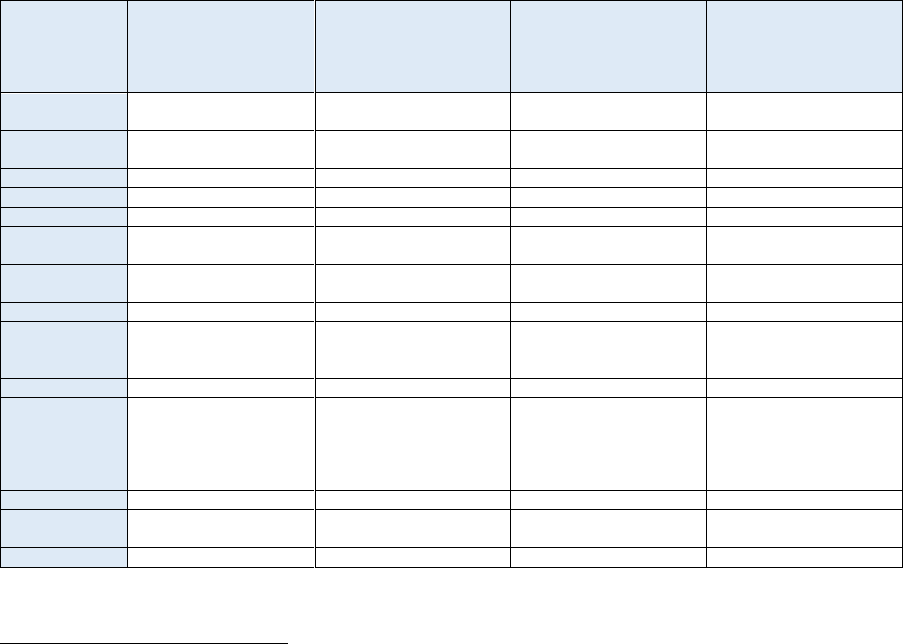
ACER REPORT ON TRANSMISSION AND DISTRIBUTION TARIFF METHODOLOGIES IN EUROPE
141
Table 41: Transmission tariff methodology setting process
Country
Responsible party to
set the tariff
methodology
Consultations ahead
of tariff methodology
setting
Length of the tariff
methodology period
(i.e. frequency to
amend it)
Frequency of updating
the tariff values
(i.e. period of
applicability of the
same tariff values)
Austria
NRA
Only specific
stakeholders
395
No defined period
1 year
Belgium
NRA
Public consultation
4 years
396
1 year (set ex ante for
each of the 4 years)
397
Bulgaria
NRA
Public consultation
1 year
1 year
Croatia
NRA
Public consultation
No defined period
1 year
398
Cyprus
NRA
Public consultation
5 years
1 year
399
Czech
Republic
NRA
Public consultation
5 years
400
1 year
401
Denmark
TSO (subject to NRA
approval)
Public consultation
402
No defined period
1 year
403
Estonia
NRA
Public consultation
No defined period
404
No defined period
Finland
TSO (without NRA
approval)
405
Public consultation
406
8 years (4 year sub-
periods)
1 year (with the
possibility of revision
within the year)
407
France
NRA
Public consultation
4 years
1 year
408
Germany
Ministry of economic
affairs (legislative
process for jurisdiction
shift to the NRA is
ongoing)
409
Only specific
stakeholders
410
5 years
1 year
411
Greece
NRA
Public consultation
4 years
412
1 year
413
Hungary
NRA
Only specific
stakeholders
414
4 years
1 year
415
.
Ireland
NRA
Public consultation
5 years
1 year
416
395
AT: According to the national law, the Federal Economic Chamber, Federal Chamber of Agriculture, Federal Chamber of
Labour, Austrian Trade Union Federation have to be consulted.
396
BE: The tariff methodology can be revised during the regulatory period.
397
BE: Tariff values are set (ex-ante) for the whole regulatory period, but the values differ each year.
398
HR: Tariff is determinate in the second half of the year G for the year G+1. If there is no need to change the tariff then the tariff
remains unchanged.
399
CY: Tariff values are updated annually on the basis of a pre-defined methodology.
400
CZ: 5 years length of the tariff methodology is binding only for setting of allowed revenues and it is not binding for methodology
which is used for calculating tariffs based on the allowed revenues.
401
CZ: Tariff values are updated annually on the basis of a pre-defined methodology.
402
DK: NRA conducts the public consultation. The TSO might also conduct a consultation prior to sending the methodology to
the NRA for approval.
403
DK: Tariff values are updated annually on the basis of a pre-defined methodology.
404
EE: The typical duration of the period is 3-4 years.
405
FI: There is no ex-ante approval of tariffs or prices of network services by the NRA nor any other authorities. The NRA confirms
ex-ante the revenue cap and connection charges. The NRA shall also approve ex-ante the terms and conditions of transmission
and connection services before the network operators apply them. In addition the NRA supervises the compliance between
methodology and the Finnish electricity act. In situation of discordance, the NRA could decide on injunction.
406
FI: The public consultation is not formally (legally) required and carried out by the TSO.
407
FI: Tariff values are updated annually by the TSO on the basis of a pre-defined methodology. Within a year, the TSO can
update the tariff values when needed, but there is a 15% cap for tariff increases.
408
FR: Tariff values are updated annually on the basis of a pre-defined methodology.
409
DE: The implementation of the ECJ ruling (C-718/18) is currently in progress. Jurisdiction change is part of it.
410
DE: There are no formal requirements for consultation when adopting the ordinance for the tariff methodology. However, it is
set after consultation of the relevant energy industry associations.
411
DE: Tariff values are updated annually on the basis of a pre-defined methodology.
412
GR: The regulatory period for setting allowed revenue is 4 years. Tariff methodology is independent from this cycle and can
be revised within a regulatory period.
413
GR: Tariff values are updated annually on the basis of a pre-defined methodology.
414
HU: The tariff methodology is set after consultation of the relevant stakeholders as required by the Hungarian Electricity Act.
415
HU: Tariff values are updated annually on the basis of a pre-defined methodology.
416
IE: Tariff values are updated annually on the basis of a pre-defined methodology.
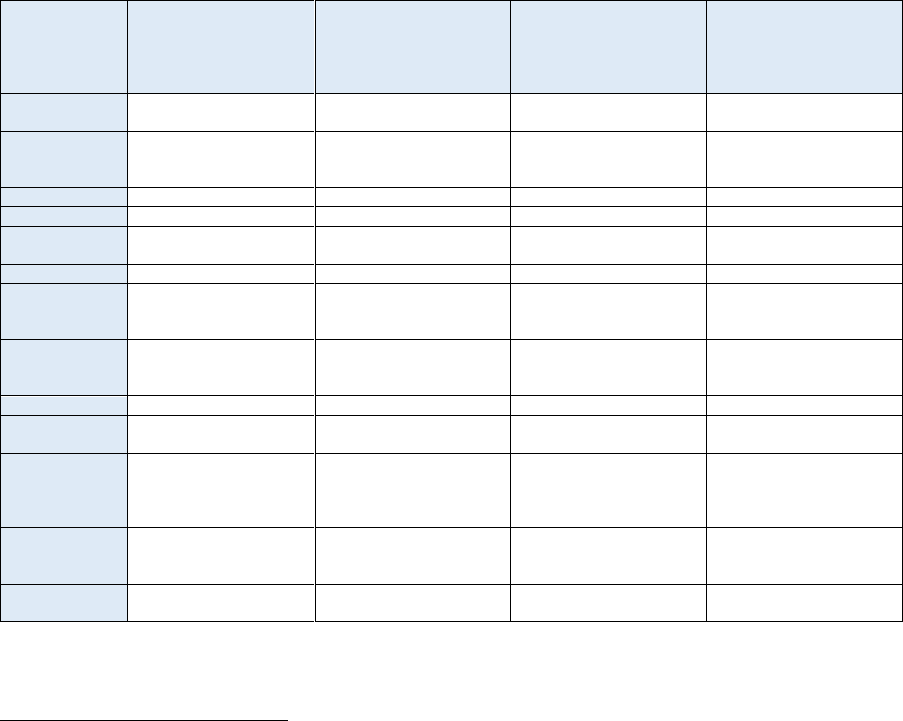
ACER REPORT ON TRANSMISSION AND DISTRIBUTION TARIFF METHODOLOGIES IN EUROPE
142
Country
Responsible party to
set the tariff
methodology
Consultations ahead
of tariff methodology
setting
Length of the tariff
methodology period
(i.e. frequency to
amend it)
Frequency of updating
the tariff values
(i.e. period of
applicability of the
same tariff values)
Italy
NRA
Public consultation
8 years
417
(with mid-
term update)
1 year
418
Latvia
NRA
Public consultation
No defined period
419
1 year (with the
possibility of
extension)
420
Lithuania
NRA
Public consultation
5 years
1 year
421
Luxembourg
NRA
Public consultation
4 years
1 year
422
The
Netherlands
NRA
Only specific
stakeholders
423
3-5 years
1 year
424
Norway
NRA
Public consultation
No defined period
425
1 year
426
Poland
NRA
Only specific
stakeholders
427
1 year
428
1 year (with the
possibility of revision
within the year)
Portugal
NRA
Public consultation +
targeted consultation of
the tariff council
4 years
1 year
429
Romania
NRA
Public consultation
5 years
1 year
430
Slovak
Republic
NRA
Public consultation
5 years
1 year
431
Slovenia
NRA
Public consultation
3 years
1 year (set ex ante for
each of the 3 years with
the possibility of
revision)
432
.
Spain
NRA
Introduced for the
methodology set by the
NRA
433
6 years
1 year
Sweden
TSO (without NRA
approval)
434
Public consultation
4 years
1 year
435
417
IT: Since 2016 it is 8 years, two sub-periods 4 years each. However, the WACC period is different (6 years with two sub-
periods)
418
IT: Tariff values are updated annually on the basis of a pre-defined methodology.
419
LV: Methodology does not specify the regulatory period. TSO or system users can submit a request for changes in tariff
calculating methodology. NRA evaluate submitted requests and make amendments if it is necessary.
420
LV: Tariff values are set for one year. If the TSO doesn't submit new tariff proposal and the NRA doesn’t oblige the TSO to do
so, the same tariffs apply for next year.
421
LT: Tariff values are updated annually on the basis of a pre-defined methodology.
422
LU: Tariff values are updated annually on the basis of a pre-defined methodology.
423
NL: When preparing a change to the national tariff code, the TSO has to consult with stakeholders. The decision on the tariff
methodology is taken by the NRA after consultation of the relevant stakeholders in the context of the Dutch administrative law.
The tariff decision is not subject to formal consultation, but there is an informal consultation of the proposal by the TSO.
424
NL: Tariff values are updated annually on the basis of a pre-defined methodology.
425
NO: The general rules for the allowed transmission revenues (and their recovery via tariffs) shall be periodically reviewed.
Each period must last a minimum of 5 years. Smaller changes in the regulation and changes in the tariff methodology do not
follow the same periodical system and may be amended at any time. Any changes in the rules and regulations will be subject to
a public consultation.
426
NO: Tariff values are updated annually on the basis of a pre-defined methodology.
427
PL: The NRA consults the TSO before and during the tariff approval process (not necessarily every tariff year).
428
PL: Tariff is approved for 1 year. Some assumptions (e.g. on RoC) are made for 5 years period.
429
PT: Tariff values are updated annually on the basis of a pre-defined methodology.
430
RO: Tariff values are updated annually on the basis of a pre-defined methodology.
431
SK: Tariff values are updated annually on the basis of a pre-defined methodology.
432
SI: Tariffs are (ex-ante) pre-defined for each year of the regulatory period separately. There is a possibility to revise the tariff
values. In case where the volatility of the planned energy quantities (inputs) would result in a more than 10% increase of the
tariffs.
433
ES: The transmission tariff methodology of the Government was not public, but annually the Government consulted on the
tariffs for the following year. The NRA proposed to introduce a public consultation of the tariff methodology to be set by the NRA.
434
SE: The tariff methodology has been independently developed by the Swedish TSO. The methodology undergoes an
evaluation each year. The NRA defines only the revenue cap. The regulation regarding transmission and distribution tariff
methodology is being reviewed by the Swedish NRA, with the purpose of introducing secondary legislation on network tariffs in
Sweden in 2020. Sweden has previously only had a general tariff regulation (in the Swedish Electricity act and Electricity
Regulation). From 2019, the NRA has the right to introduce more detailed regulation on tariffs on both TSO and DSO level.
435
SE: Tariff values are updated annually on the basis of a pre-defined methodology.
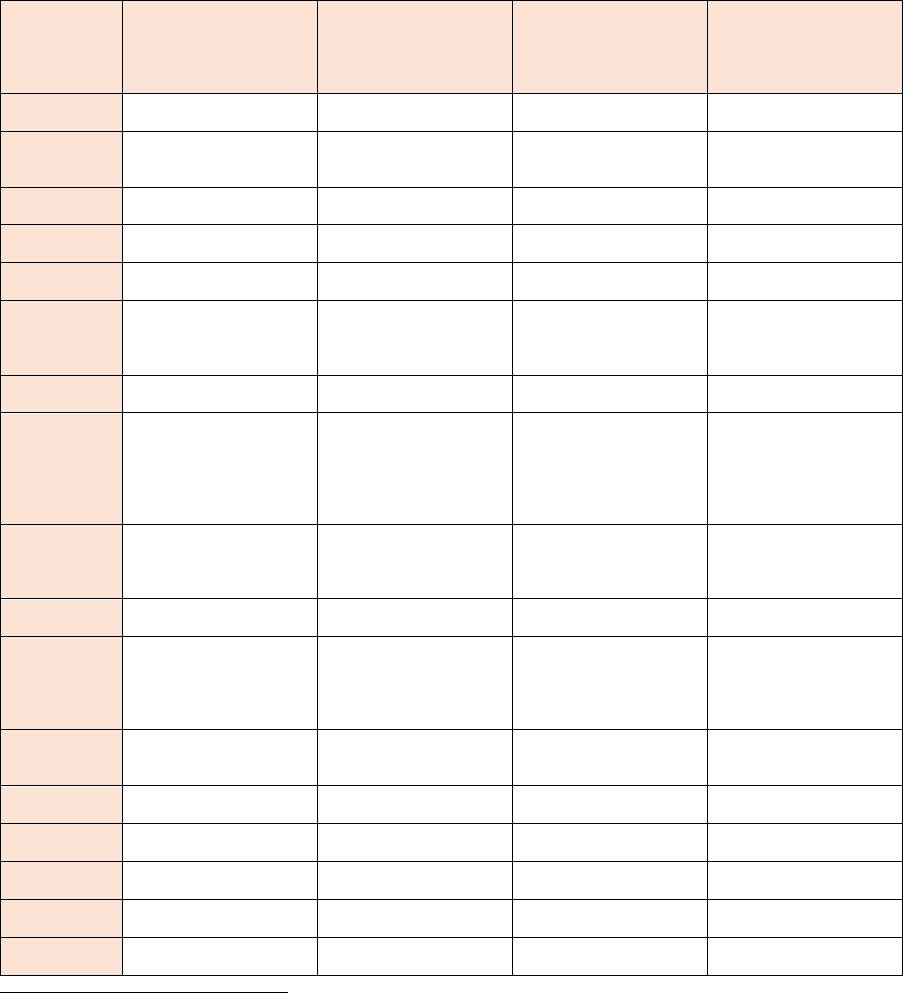
ACER REPORT ON TRANSMISSION AND DISTRIBUTION TARIFF METHODOLOGIES IN EUROPE
143
Table 42: Distribution tariff methodology setting process
Country
Responsible party to
set the tariff
methodology
Consultations ahead
of tariff methodology
setting
Length of the tariff
methodology period
(i.e. frequency to
amend it)
Frequency of updating
the tariff values
(i.e. period of
applicability of the
same tariff values)
Austria
NRA
Public consultation by
the NRA
No defined period
1 year
Belgium
Regional regulator
Public consultation by
the regional regulators
Brussels: 5 years
Flanders: 4 years
Wallonia: 5 years
1 year
Bulgaria
NRA
Public consultation by
the NRA
Between 2-5 years
1 year
Croatia
NRA
Public consultation by
the NRA
No defined period
1 year
Cyprus
NRA
Public consultation by
the NRA
No defined period
1 year
Czech
Republic
NRA
Public consultation by
the NRA
5 years (but smaller
amendments are
possible in each year)
436
1 year
Denmark
DSO (subject to NRA
approval)
Public consultation by
the NRA
No defined period
437
No defined period
Estonia
NRA
Public consultation by
the NRA
No defined period: the
tariff methodology is
amended upon DSO’s
proposal if the NRA
agrees with it or if it is
provided by law.
No defined period
438
Finland
DSO (without NRA
approval)
439
No consultation
No defined period (each
DSO decides separately
when to update its tariff
methodology)
No defined period: each
DSO decided
separately when to
update its tariff values
France
NRA
Public consultation by
the NRA
4 years
1 year
Germany
Ministry
440
Consultation of
regulators, network
operators and industry
associations by the
Ministry
No defined period
1 year
Greece
Formerly the NRA, from
2022: DSO (subject to
NRA approval)
441
Public consultation by
the NRA
No defined period
1 year
Hungary
NRA
Consultation TSO and
DSO
4 years
1 year
Ireland
DSO (subject to NRA
approval)
Public consultation by
the NRA
No defined period
1 year
Italy
NRA
Public consultation by
the NRA
8 years (two 4-years
sub-periods)
1 year
Latvia
NRA
Public consultation by
the NRA
No defined period
1 year
Lithuania
NRA
Public consultation by
the NRA
No defined period: the
tariff methodology is
1 year
436
CZ: 5 years length of the tariff methodology is binding only for setting of allowed revenues and it is not binding for methodology
which is used for calculating tariffs based on the allowed revenues.
437
DK: The method can in some cases be time-limited, but there is no general rule. (E.g. NRA is able to grant permission to the
DSO to differentiate prices on the basis of geographical delimitation. In these cases, the methods will typically be time-limited to
2 years.)
438
EE: The same tariff values are applied until a DSO submit an application for new tariff values approval and NRA approves it
Each DSO submits such application individually and the NRA approves them separately.
439
FI: There is no ex-ante approval of tariffs or prices of network services by the NRA nor any other authorities. The NRA confirms
ex-ante the revenue cap and connection charges. The NRA shall also approve ex-ante the terms and conditions of distribution
and connection services before the network operators apply them. In addition, the NRA supervises the compliance between
methodology and the Finnish electricity act. In situation of discordance, the NRA could decide on injunction.
440
DE: Methodology is set in an ordinance by the Ministry of Economic Affairs.
441
GR: The tariff methodology applied in year 2020 and previous years was set by the NRA. The respective tariffs were calculated
also by the NRA, based on DSO forecasts for connected consumer capacity and demand for power and energy. From year 2022,
the DSO proposes the tariff methodology for approval by the NRA, based on principles included in the Distribution Network Code,
and calculates the tariff annually, based on the approved tariff methodology. NRA approves both the tariff methodology and the
tariffs calculated annually by the DSO.
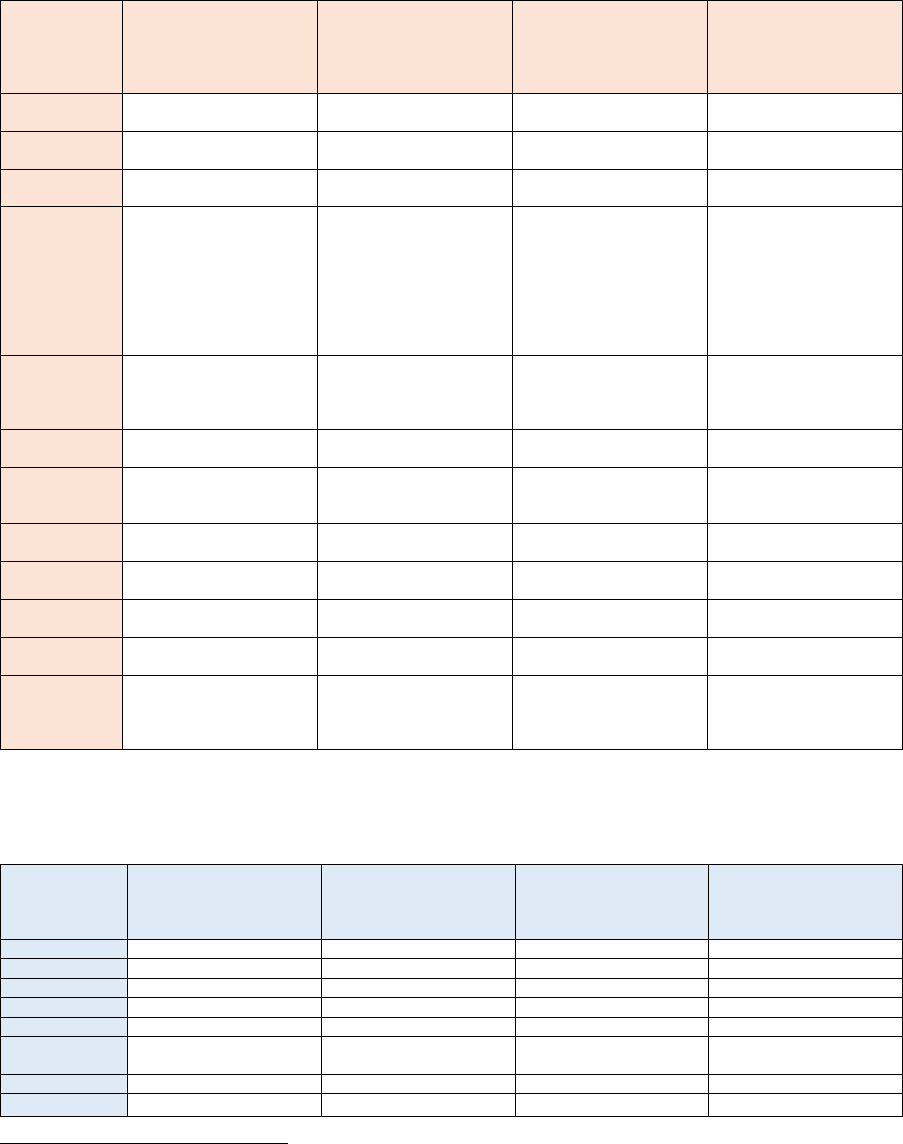
ACER REPORT ON TRANSMISSION AND DISTRIBUTION TARIFF METHODOLOGIES IN EUROPE
144
Country
Responsible party to
set the tariff
methodology
Consultations ahead
of tariff methodology
setting
Length of the tariff
methodology period
(i.e. frequency to
amend it)
Frequency of updating
the tariff values
(i.e. period of
applicability of the
same tariff values)
amended as deemed
necessary by the NRA
Luxembourg
NRA
Public consultation by
the NRA
4 years
1 year
Malta
DSO (subject to NRA
approval)
442
No consultation
No defined period
No defined period
443
The
Netherlands
NRA
Publicly announced
consultation of eligible
stakeholders, which
demonstrated to be
directly affected by the
NRA decision, including
TSO, DSO’s, network
users, traders
3, 4 or 5 years
444
1 year
Norway
NRA
Public consultation by
NRA. Ex ante
information from DSO to
customers
No defined period +
annual income cap
decisions by NRA
1 year (updated based
on each company's
allowed revenue, which
is set annually.)
Poland
NRA
Consultation of DSOs
and DSOs association
No defined period
1 year
Portugal
NRA
Public consultation +
targeted consultation of
the tariff council
4 years
1 year
Romania
NRA
Public consultation by
the NRA
5 years
1 year
Slovak
Republic
NRA
Public consultation by
the NRA
5 years
5 years (but in practice
typically 1 year)
Slovenia
NRA
Public consultation by
the NRA
3 years
1 year
Spain
NRA
Public consultation by
the NRA
6 years
445
1 year
Sweden
DSO (without NRA
approval)
No consultation
No defined period: each
DSO decides separately
when to update its tariff
methodology
No defined period: each
DSO decides separately
when to update its tariff
values
Table 43: Transmission tariff transparency
Country
Detailed tariff
methodology
Cost categories
recovered by tariffs
The amounts
recovered by each
tariff element (at least
when the tariff is set)
Each year, the tariff
values for each
network user group
Austria
NOT publicly available
NOT publicly available
NOT publicly available
Publicly available
Belgium
Publicly available
Publicly available
Only overall T-costs
446
Publicly available
Bulgaria
Publicly available
Publicly available
Publicly available
Publicly available
Croatia
Publicly available
Publicly available
Publicly available
Publicly available
Cyprus
Publicly available
Publicly available
Only overall T-costs
Publicly available
Czech
Republic
Publicly available
Publicly available
NOT publicly available
Publicly available
Denmark
Publicly available
Publicly available
Only overall T-costs
Publicly available
Estonia
Publicly available
Publicly available
NOT publicly available
Publicly available
442
MT: The DSO is required to submit the retail tariffs, which cover also the distribution costs, for the approval of the NRA. The
DSO forms part of a vertically integrated company, which is also the sole supplier of electricity in Malta. The DSO is required to
keep unbundled accounts at internal management accounts level only. As such there is no specific separate tariff for the use of
the distribution network. The costs of the distribution network are in part covered by a maximum demand tariff, an annual fixed
charge, kWh tariffs that covers also energy and the supply and connection charges. All tariffs are regulated.
443
MT: The latest tariff approval was in 2014, i.e. the same tariffs are currently applied without any update.
444
NL: The national law limits the regulatory period to be 3, 4 or 5 years. The NRA decides for each regulatory cycle which length
it considers appropriate.
445
ES: For this first regulatory period (2020-2025) if it is deemed necessary it can be amended at the middle of the regulatory
period (for the fourth tariff year). WACC-period is also 2020-2025.
446
BE: Only annual TOTEX budget is publicly available. Detailed costs figures are considered confidential.
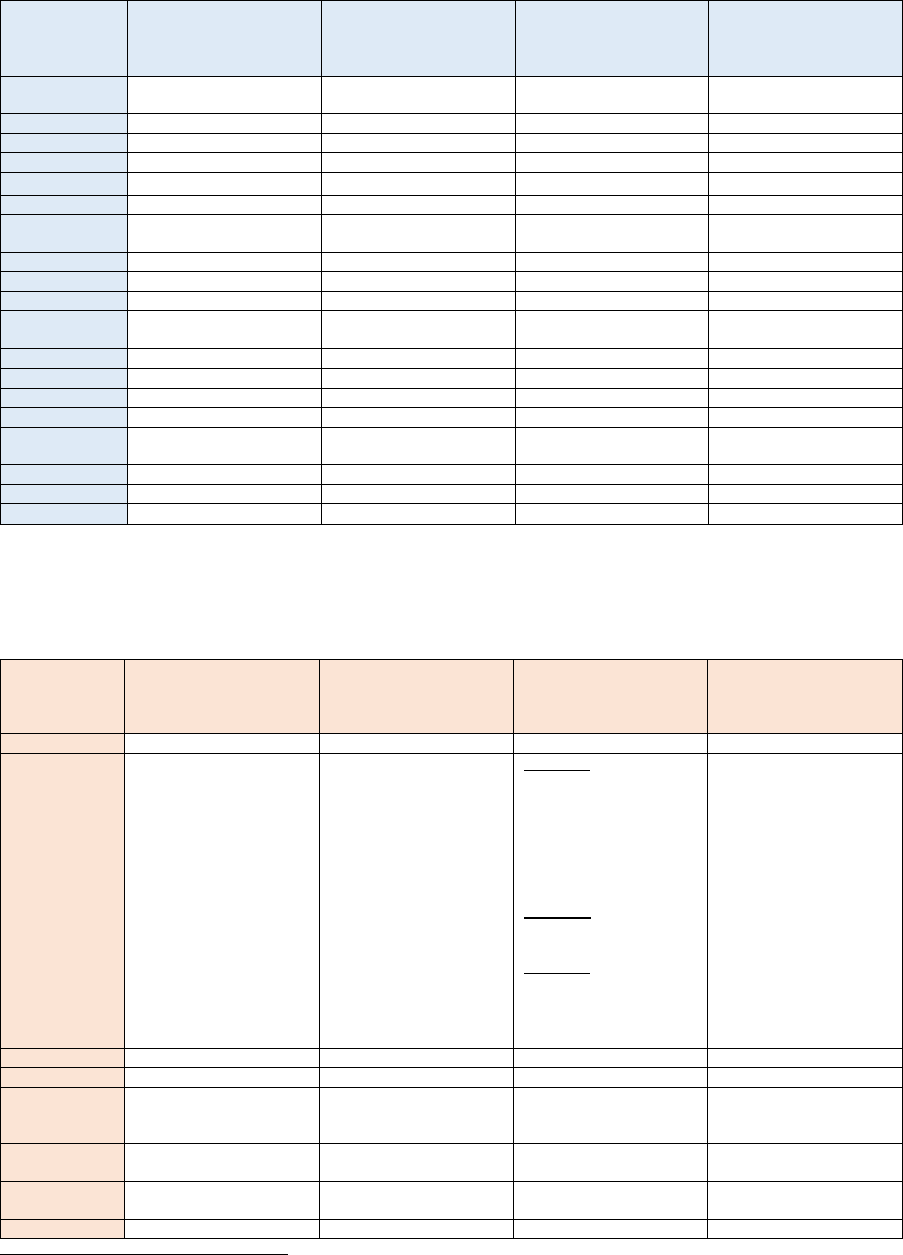
ACER REPORT ON TRANSMISSION AND DISTRIBUTION TARIFF METHODOLOGIES IN EUROPE
145
Country
Detailed tariff
methodology
Cost categories
recovered by tariffs
The amounts
recovered by each
tariff element (at least
when the tariff is set)
Each year, the tariff
values for each
network user group
Finland
NOT publicly
available
447
Publicly available
Publicly available
Publicly available
France
Publicly available
Publicly available
Publicly available
Publicly available
Germany
Publicly available
Publicly available
Only overall T-costs
Publicly available
Greece
Publicly available
Publicly available
Publicly available
Publicly available
Hungary
Publicly available
Publicly available
Only overall T-costs
Publicly available
Ireland
Publicly available
Publicly available
Publicly available
Publicly available
Italy
Publicly available
Publicly available
Partly publicly
available
448
Publicly available
Latvia
Publicly available
Publicly available
Only overall T-costs
Publicly available
Lithuania
Publicly available
Publicly available
Publicly available
Publicly available
Luxembourg
Publicly available
Publicly available
Only overall T-costs
Publicly available
The
Netherlands
Publicly available
Publicly available
Publicly available
Publicly available
Norway
Publicly available
Publicly available
Publicly available
Publicly available
Poland
NOT publicly available
Publicly available
NOT publicly available
Publicly available
Portugal
Publicly available
Publicly available
Publicly available
Publicly available
Romania
Publicly available
Publicly available
NOT publicly available
Publicly available
Slovak
Republic
Publicly available
Publicly available
NOT publicly available
Publicly available
Slovenia
Publicly available
Publicly available
Only overall T-costs
Publicly available
Spain
Publicly available
Publicly available
Only overall T-costs
Publicly available
Sweden
Publicly available
Publicly available
Publicly available
Publicly available
Note: “only overall T-costs” means that only total aggregated sum of the transmission costs covered by the tariffs
(i.e. no disaggregated cost amounts by each tariff element.
Table 44: Distribution tariff transparency
Country
Detailed tariff
methodology
Cost categories
recovered by tariffs
The cost amounts
recovered by each
tariff element (at least
when the tariff is set)
Each year, the tariff
values for each
network user group
Austria
Publicly available (+EN)
NOT publicly available
NOT publicly available
Publicly available
Belgium
Publicly available
Publicly available
Brussels:
Total distribution cost
covered by the
distribution tariffs is
publicly available (but
no details for each
tariff).
Flanders:
Publicly available
Wallonia:
Total distribution cost
covered by the
distribution tariffs is
publicly available.
Publicly available
Bulgaria
Publicly available
Publicly available
NOT publicly available
Publicly available
Croatia
Publicly available
NOT publicly available
NOT publicly available
Publicly available
Cyprus
Publicly available (+EN)
Publicly available
Only overall
(aggregated) D-costs.
Publicly available
Czech
Republic
Publicly available
Publicly available
NOT publicly available
Publicly available
Denmark
Publicly available
Publicly available
Only overall
(aggregated) D-costs.
Publicly available
Estonia
Publicly available
449
Publicly available
NOT publicly available
Publicly available
447
FI: The Finnish TSO is not obligated to publish tariff methodology, but TSO has published "Grid service pricing structure" -
design for different network user.
448
IT: The cost values are not systematically published every year. Still, they are usually published before the beginning of the
regulatory period (in consultation documents regarding tariff setting) or occasionally in some NRA reporting.
449
EE: Standard terms and conditions for applying distribution tariffs (only in Estonian) are also published.

ACER REPORT ON TRANSMISSION AND DISTRIBUTION TARIFF METHODOLOGIES IN EUROPE
146
Country
Detailed tariff
methodology
Cost categories
recovered by tariffs
The cost amounts
recovered by each
tariff element (at least
when the tariff is set)
Each year, the tariff
values for each
network user group
Finland
NOT publicly available
NOT publicly available
NOT publicly available
Publicly available
France
Publicly available
Publicly available
Publicly available
Publicly available
Germany
Publicly available
Publicly available
Only overall D-costs
450
Publicly available
Greece
Publicly available
Publicly available
Only overall D-costs
Publicly available
Hungary
Publicly available
NOT publicly available
Publicly available
Publicly available
Ireland
Publicly available
NOT publicly available
Total distribution cost
covered by the
distribution tariffs is
publicly available.
Publicly available
Italy
Publicly available
Publicly available
Overall D-costs,
disaggregated with
different segmentation
compared to the tariff
elements
451
.
Publicly available
Latvia
Publicly available
NOT publicly available
Only overall D-costs is
published, but
disaggregated
information is made
available upon
individual requests.
Publicly available
Lithuania
Publicly available
Publicly available
NOT publicly available
Publicly available
Luxembourg
Publicly available
NOT publicly available
Only overall D-costs.
Publicly available
Malta
NOT publicly available
NOT publicly available
NOT publicly available
NOT publicly available
The
Netherlands
Publicly available
Publicly available
NOT publicly available
Publicly available
Norway
Publicly available
Publicly available
Only overall D-costs.
Publicly available
Poland
Publicly available
Publicly available
NOT publicly available
Publicly available
Portugal
Publicly available
Publicly available
Only overall D-costs,
disaggregated with
different segmentation
compared to the tariff
elements.
Publicly available
Romania
Publicly available
NOT publicly available
Overall costs,
disaggregated with
different segmentation
compared to the tariff
elements
452
.
Publicly available
Slovak
Republic
Publicly available
NOT publicly available
NOT publicly available
Publicly available
Slovenia
Publicly available
NOT publicly available
NOT publicly available
Publicly available
Spain
Publicly available
Publicly available
Publicly available
453
Publicly available
Sweden
NOT publicly available
NOT publicly available
NOT publicly available
Publicly available
Note: “only overall costs” means that only total aggregated sum of the distribution costs covered by the tariffs (i.e.
no disaggregated cost amounts by each tariff element.
450
DE: Allowed revenues consist of different cost categories. However, the charges are not aiming at remunerating specific costs.
Rather both the power and energy charge follow a TOTEX approach.
451
IT: The total sum collected by D-Tariffs is published every year. In addition, some aspects which do not correspond to specific
elements (the remuneration on capital, the amortization and the operational expenditures) are published separately at least at
the end/beginning of regulatory periods.
452
RO: Distribution costs approved for the fourth regulatory period, aggregated by the type of cost and for all the 5 years is
publicly available.
453
ES: Allowed revenues for each DSO are published every year, with details of allowed revenues for Investment, O&M, and
incentives (https://www.boe.es/diario_boe/txt.php?id=BOE-A-2022-13101). Details on the cost amounts recovered in the tariff
elements are provided in the tariff model for year 2021 (available in Excel format).
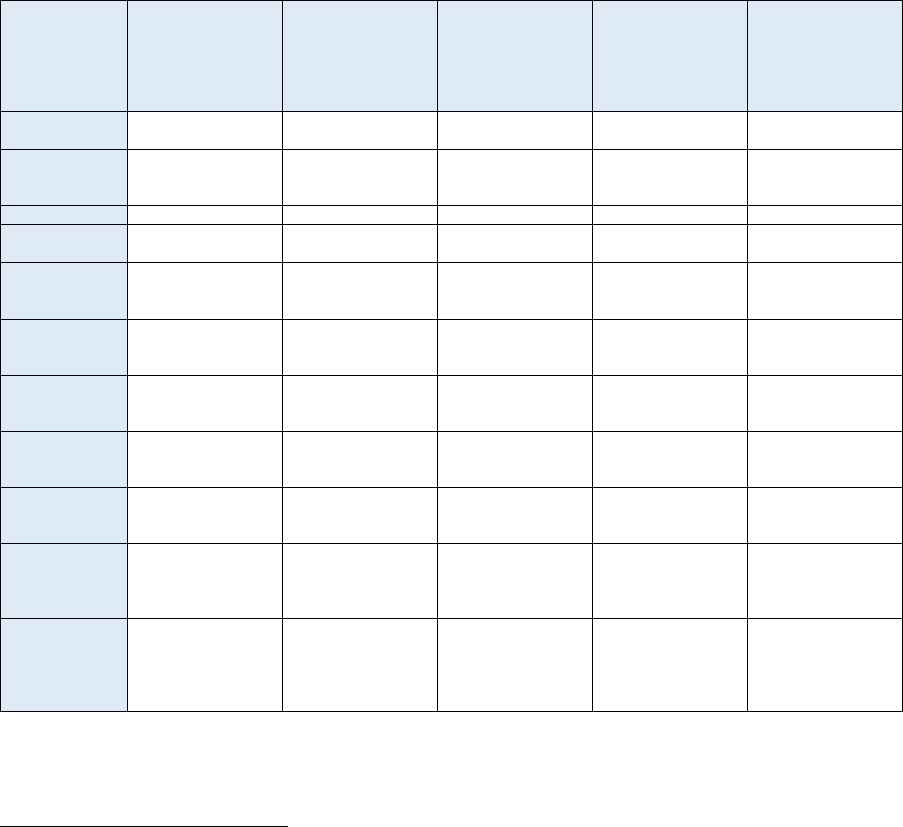
ACER REPORT ON TRANSMISSION AND DISTRIBUTION TARIFF METHODOLOGIES IN EUROPE
147
Table 45: Cost recovery via withdrawal charges at transmission level
Country
Costs for
building,
upgrading and/or
maintaining
infrastructure
Costs for grid
losses
Costs for system
services
Costs for
metering
Non-related
policy costs (e.g.
NON-VAT taxes,
levies, cost of
support
schemes)
Austria
Yes
Yes
454
Yes
Yes (separate
tariff element)
No
Belgium
Yes
Yes (partially)
455
Yes
Yes (separate
tariff or tariff
element)
456
Bulgaria
Yes
Yes
Yes
No
Croatia
Yes
Yes
Yes
457
Yes (separate
tariff element)
No
458
Cyprus
Yes
Yes
Yes (separate
tariff or tariff
element)
Yes (separate
tariff)
Yes (separate
tariff or tariff
element)
459
Czech
Republic
Yes
Yes
Yes (separate
tariff or tariff
element)
Yes (NOT
separate tariff or
tariff element)
Yes (separate
tariff or tariff
element)
460
Denmark
Yes
Yes
Yes (separate
tariff or tariff
element)
No
Estonia
Yes
Yes
Yes
461
Yes (separate
tariff element)
Yes (separate
tariff or tariff
element)
462
Finland
Yes
Yes
Yes (separate
tariff or tariff
element)
Yes
463
France
Yes
Yes
464
Yes
Yes (separate
tariff or tariff
element)
Not part of the
tariff structure, but
included in the
electricity bill
465
Germany
Yes
Yes
Yes
Not part of the
regulated tariff
structure, but
included in the
electricity bill
466
454
AT: Producers with installed capacity 5 MW or lower are exempted.
455
BE: Federal losses (HV) are compensated “in kind” by Balance Responsible Parties. Regional losses (under 70kV network)
are recovered via network tariffs.
456
BE: Costs of supporting schemes for renewables and co-generation of heat and power are recovered via separate tariff. Costs
for Public Services Obligations (PSO), including RES support and adequacy are added to the transmission tariffs according to
the electricity law.
457
HR: FCR are provided by generators on a mandatory basis without compensation by the TSO.
458
HR: There is a only levy (kn/kWh) set by the Government (not part of the tariff structure)
459
CY: Costs of supporting schemes for renewables and cogeneration of heat and power are recovered via separate tariff. Costs
of measures for ensuring adequacy recovered by the "Tariff for the provision of ancillary services”. RES & EE Charge (EUR/kWh)
- No VAT, for support schemes on renewables and energy efficiency. Public Service Obligation (EUR/kWh) - EAC recovers the
expenses incurred due to the additional costs that aroused by the application of special tariffs for vulnerable consumers
460
CZ: Costs of RES and co-generation of heart and power support is partially is partially covered by a separate charge paid by
network users. The costs of measures for ensuring adequacy is included in the transmission tariff.
461
Frequency is held by Russian TSO for free of charge.
462
EE: Costs of RES support are recovered by additional charge which is calculated by TSO using principles which are set in
Electricity Market Act.
463
FI: No separate tariff element. Costs of measures for ensuring adequacy: the power reserve system is financed by separate
payments for electricity consumption based on the utilisation of the electricity system and the grid, which the grid operator
designated for system liability is entitled to collect from the users of transmission services. Network users also pay electricity tax.
464
FR: Losses generated by exportation of electricity are paid by generators connected to the 400 kV and 225 kV grid.
465
FR: Supporting schemes for renewables are financed through levies set by the Government, which are not part of the tariff
structure.
466
DE: EEG-Umlage (renewables), KWKG-Umlage (cogeneration of heat and power). The network operators only function as
point of payment. The charges are not considered as network tariff elements and they are also not included in the allowed
revenues.
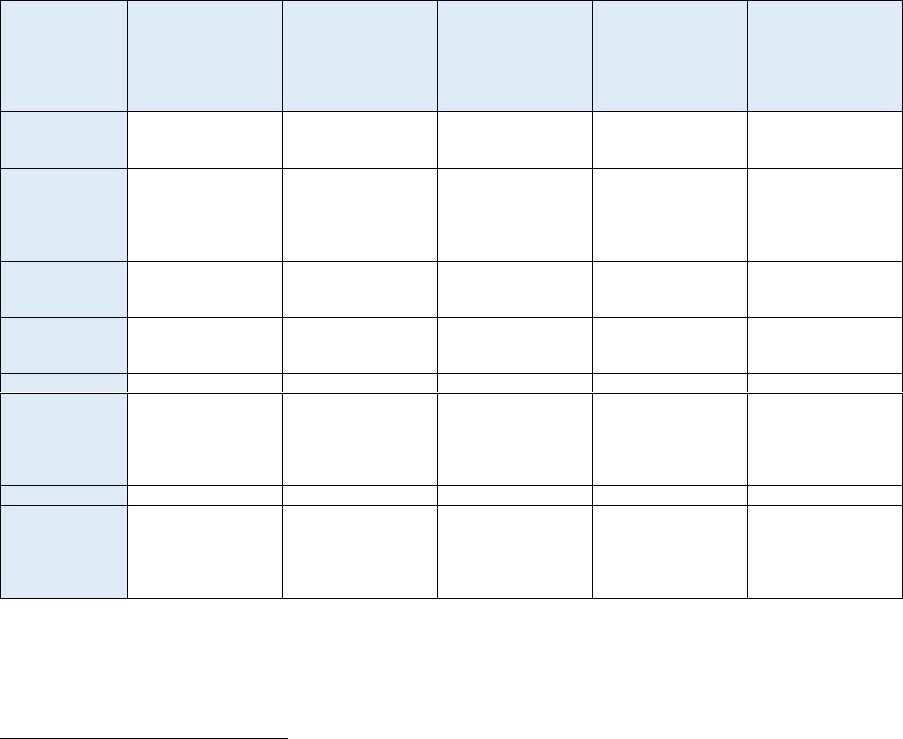
ACER REPORT ON TRANSMISSION AND DISTRIBUTION TARIFF METHODOLOGIES IN EUROPE
148
Country
Costs for
building,
upgrading and/or
maintaining
infrastructure
Costs for grid
losses
Costs for system
services
Costs for
metering
Non-related
policy costs (e.g.
NON-VAT taxes,
levies, cost of
support
schemes)
Greece
Yes
No
467
Yes (separate
tariff or tariff
element)
Yes
Other charge
468
Hungary
Yes
Yes
469
Yes
Not part of the
regulated tariff
structure, but
included in the
electricity bill
470
Ireland
Yes
No
471
Yes
Yes (separate
tariff or tariff
element)
472
Italy
Yes
No
473
Yes
474
Yes (separate
tariff or tariff
element)
475
Latvia
Yes
Yes
Yes
Other charge
476
Lithuania
Yes
Yes
Yes (separate
tariff or tariff
element)
Not part of the
regulated tariff
structure, but
included in the
electricity bill
477
Luxembourg
Yes
Yes
Yes
No
The
Netherlands
Yes
Yes
Yes
Yes
478
(separate
tariff)
Not part of the
regulated tariff
structure, but
included in the
electricity bill
479
467
GR: Cf. Table 25 in Annex 1.
468
GR: Through the RES levy (ETMEAR), auctioning of CO2 emission allowances and wholesale market uplift charges. Costs of
supporting schemes for cogeneration of heart and power is covered by other charge. Costs of fossil fuel support scheme are
recovered through wholesale market uplift charges. Adequacy related costs are covered through wholesale market uplift charges.
469
HU: Partial recovery by setting a price of losses (based on market trends) justified by the NRA and using the factual volume
of year n-2. There is an ex-post partial correction in both directions.
470
HU: Supporting schemes for renewables are financed through levies set by the Government, which are not part of the tariff
structure.
471
IE: The Transmission Loss Adjustment Factors (TLAFs) are applied to generators to ensure that that the costs of transmission
losses are borne by market participants who cause them. TLAFs are applied to generators’ outputs so that their contribution to
the market is adjusted. The value of TLAFs depends on the generator point of connection to the grid. A similar system is used in
Northern Ireland.
472
IE: Costs of RES support and Costs of supporting schemes for fossil fuels by separate charge: The PSO charge is designed
by the Government and consists of various subsidy schemes to support its national policy objectives related to renewable energy
and indigenous fuels (peat). PSO levy scheme supports peat until the end of 2019.
473
IT: Consumers pay (in kind, i.e. as additional energy bought in the energy market) for a “standard” level of losses. The
difference between the actual losses and the standard losses is paid (or retained) by network operators. The reason for
introducing standard level of losses (and thus an implicit reward/penalty scheme for network operators) is to incentivise network
operators to reduce losses in their networks.
474
IT: Frequency containment reserve and reactive support is mandatory and free of charge. The costs of market-based voltage
control actions by generators (to avoid voltage violations) are treated under the intra-zonal congestion charging mechanism.
475
IT: A3-SOS is the tariff element to cover the costs for supporting renewable sources and CIP 6/92 cogeneration. Costs of
measures for ensuring adequacy, stranded costs of phased-out power plants are also recovered by charges.
476
LV: Costs of measures for ensuring adequacy: Support schemes for RES, co-generation and fossil fuels are not applicable
since 2013. However, some of those power plants which were granted till 2013 with such an support (for 10-20 years) receive
payments (the last one until 2037) from the obligatory mandatory component (OMC) set by the regulatory every year, separately
from the transmission tariff.
477
LT: Costs of supporting schemes for renewables are the public service obligation. The public services obligation price is part
of the final price of electricity, which is paid by the consumer. Costs of measures for ensuring adequacy are system service. The
system services price is part of the final price of electricity, which is paid by the consumer
478
NL: For consumers the tariff is regulated and the meter is provided DSO, for other network users it is not a regulated market.by
the DSO, for other network users it is not a regulated market.
479
NL: energy tax, Public Service Obligations
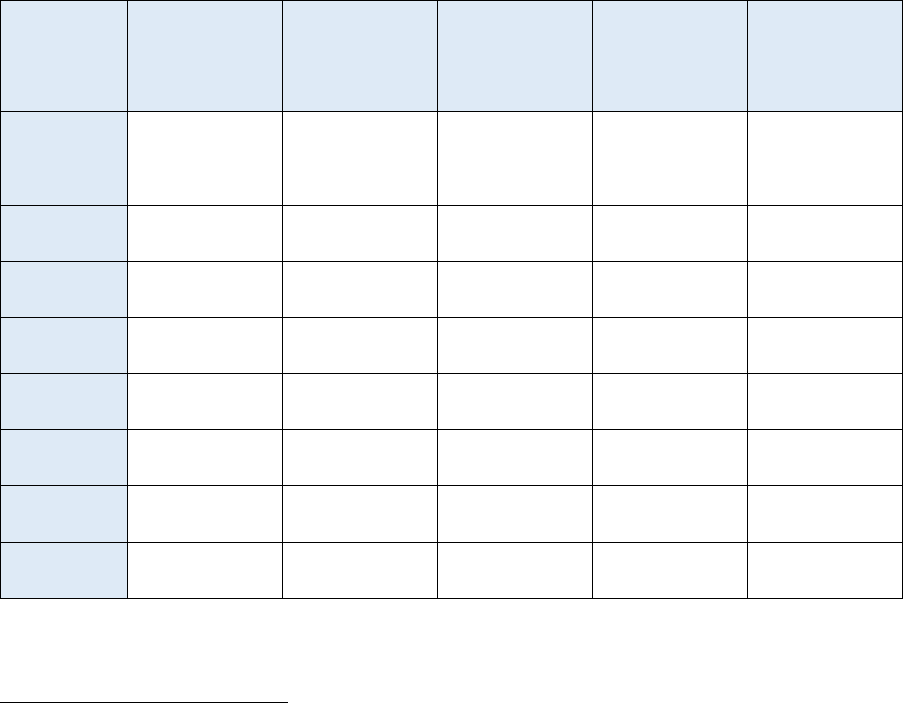
ACER REPORT ON TRANSMISSION AND DISTRIBUTION TARIFF METHODOLOGIES IN EUROPE
149
Country
Costs for
building,
upgrading and/or
maintaining
infrastructure
Costs for grid
losses
Costs for system
services
Costs for
metering
Non-related
policy costs (e.g.
NON-VAT taxes,
levies, cost of
support
schemes)
Norway
Yes
Yes
Yes
480
Yes (separate
tariff element)
481
Not part of the
regulated tariff
structure, but
included in the
electricity bill
482
Poland
Yes
Yes
Yes
Yes (NOT
separate tariff or
tariff element)
Yes (separate
tariff or tariff
element)
483
Portugal
Yes
No
484
Yes (separate
tariff)
485
Yes
Yes (separate
tariff or tariff
element)
486
Romania
Yes
Yes
487
Yes
488
Yes (separate
tariff or tariff
element)
489
Slovak
Republic
Yes
Yes (separate
tariff or tariff
element)
490
Yes (separate
tariff or tariff
element)
Yes (separate
tariff or tariff
element)
491
Slovenia
Yes
Yes
Yes
492
Yes (separate
tariff or tariff
element)
493
Spain
Yes
No
494
No
495
Yes (separate
tariff or tariff
element)
496
Sweden
Yes
Yes
Yes
Yes (separate
tariff or tariff
element)
497
480
NO: Frequency containment reserve, frequency restoration reserve, replacement reserve, reactive support and voltage control
481
NO: For consumers the tariff is regulated and the meter is provided by the DSO, for other network users it is not a regulated
market
482
NO: RES and non-VAT Tax
483
PL: Costs of supporting schemes for renewables are recovered by a RES charge, which is set annually by the NRA. Costs of
supporting schemes for cogeneration of heat and power are recovered by a cogeneration charge, which is set annually by the
Minister of Energy. Costs of measures for ensuring adequacy are also recovered by other charge. Stranded costs of phased-out
power plants are recovered by a transition charge calculated by the NRA.
484
PT: Suppliers must buy the energy for their clients’ consumption in addition to energy to compensate for losses which is
calculated by using the 15-minute loss profiles approved and published annually by the NRA. The loss profiles are differentiated
by network type (transmission and distribution) and voltage level (EHV, HV, MV, LV). In this sense, there are no tariffs for losses,
since losses are purchased by suppliers on the market.
485
PT: FCR, FRR and RR are provided by generators on a mandatory basis without compensation by the TSO. Costs of the
system operator, which is the same entity as the TSO, are recovered by a separate regulated tariff (called “tariff for the global
use of the system”), which is different from the transmission tariff.
486
PT: Other costs (e.g. support schemes for renewables/cogeneration/fossil fuel, capacity mechanisms, cost for efficiency
programs, rent of areas utilized by hydro plants, budget of the energy NRA, additional costs from the autonomous regions of
Azores and Madeira) are recovered through a separate charge, called “global use of the system tariff”.
487
RO: Losses are paid by all consumers and by the producers with installed capacity greater than 5 MW
488
RO: FCR are provided by generators on a mandatory basis without compensation by the TSO.
489
RO: Costs of supporting schemes for renewables (green certificates) and the cogeneration of heat and power. Cogeneration
costs are recovered through the fee for high-efficiency cogeneration.
490
SK: Paid by consumers.
491
SK: Costs of supporting schemes for renewables; Costs of supporting schemes for cogeneration of heat and power: Costs of
supporting schemes for fossil fuels; Cost for such support schemes are recovered by system operation tariff.
492
SI: FCR are provided by generators on a mandatory basis without compensation by the TSO.
493
SI: Costs of supporting schemes for RES and cogeneration of heat and power is part of a supplement charge set by
Government and levied on each network user who is subject to transmission tariff.
494
ES: Suppliers must buy the energy for their clients including losses. The standard losses are established and published
(currently by the Government and from January 1, 2020 by the NRA). The standard losses are differentiated by voltage level and
period.
495
ES: The costs of the ancillary services are included in the commodity price
496
ES: A separate charge ("cargos") include among others costs of incentives to promote cogeneration and renewables of heat
and power, off-peninsular compensation, income imbalances in the settlement procedure.
497
SE: For costs of measures ensuring adequacy a separate power reserve charge is applied.

ACER REPORT ON TRANSMISSION AND DISTRIBUTION TARIFF METHODOLOGIES IN EUROPE
150
Table 46: Cost recovery via withdrawal charges at distribution level
Country
Costs for
building,
upgrading,
maintaining
infrastructure
Costs for grid
losses
Costs for system
services
Costs for
metering
Non-related
policy costs (e.g.
NON-VAT taxes,
levies, cost of
support
schemes)
Austria
Yes
Yes
Yes
Yes (separate
tariff element)
Yes (separate
charge)
498
Belgium
Brussels: Yes
Flanders: Yes
Wallonia: Yes
Brussels: Yes
Flanders: Yes
Wallonia: Yes
Brussels: Yes
Flanders: Yes
Wallonia: Yes
Brussels: Yes
(separate tariff
element)
Flanders: Yes
(separate tariff
element)
Wallonia: Yes
Brussels: Yes
(separate
charge)
499
Flanders: Yes
(separate tariff
element)
500
Wallonia: Yes
501
Bulgaria
Yes
Yes
Yes
Yes
No data
Croatia
Yes
Yes
Yes
Yes
Not part of the
regulated tariff
structure, but
included in the
electricity bill
502
Cyprus
Yes
Yes
No
Yes (separate
tariff element)
Yes (separate
charge)
503
Czech
Republic
Yes
Yes
Yes
Yes (NOT
separate tariff or
tariff element)
Yes (separate
charge)
Denmark
Yes
Yes
No
Yes (separate
tariff element)
No
Estonia
Yes
Yes
No
Yes
No
Finland
Yes
Yes
Yes
Yes
Electricity tax
France
Yes
Yes
No
Yes (separate
tariff element)
No
Germany
Yes
Yes
Yes
Partially
(conventional
metering,
separate tariff
element)
504
Not part of the
regulated tariff
structure, but
included in the
electricity bill
505
Greece
Yes
No
506
No
Yes
No data
Hungary
Yes
Yes
N/A
507
Yes
Not part of the
regulated tariff
structure, but
included in the
electricity bill
Ireland
Yes
No
508
No
Yes
Public Service
Obligation costs
498
AT: RES support
499
BE (BRU): Local municipality taxes (€/kWh), taxes paid by the DSO (contribution ISOC) (€/kWh), pension scheme of DSO
employees, public service obligations/public lights
500
BE (FLA) taxes (different than VAT), local retributions, public service obligations, cost of public lights are recovered as a
separate tariff element of the distribution tariff. (pension scheme of DSO employees phased out from tariffs from July 2022)
501
BE (WAL): Local municipality taxes (€/kWh), taxes paid by the DSO (contribution ISOC) (€/kWh), public service
obligations/public lights
502
HR: RES support scheme
503
CY: Public Service Obligation (EUR/kWh) - is a separate charge in the electricity bill that is not subject to VAT and imposed
so that the EAC can recover the expenses incurred due to the additional costs that aroused by the application of special tariffs
for vulnerable consumers
504
DE: In Germany, smart metering is deregulated
505
DE: EEG-Umlage (renewables), KWKG-Umlage (cogeneration of heat and power). The network operators only function as
point of payment. The charges are not considered as network tariff elements and they are also not included in the allowed
revenues.
506
GR: In Greece, the cost of distribution losses is borne by suppliers and included in the energy component of the final electricity
price charged to their final customers;
507
HU: In case the DSO were to purchase ancillary and flexibility services, the cost would be covered by distribution tariffs.
However, such purchase has not taken place yet by the Hungarian DSOs.
508
IR: In Ireland, the distribution loss adjustment factors (DLAFs) apply to the metered withdrawal of a network user connected
to the distribution network. The DLAFs values apply to demand on the basis of which voltage level they are connected to (i.e. LV,
MV and 30kV);
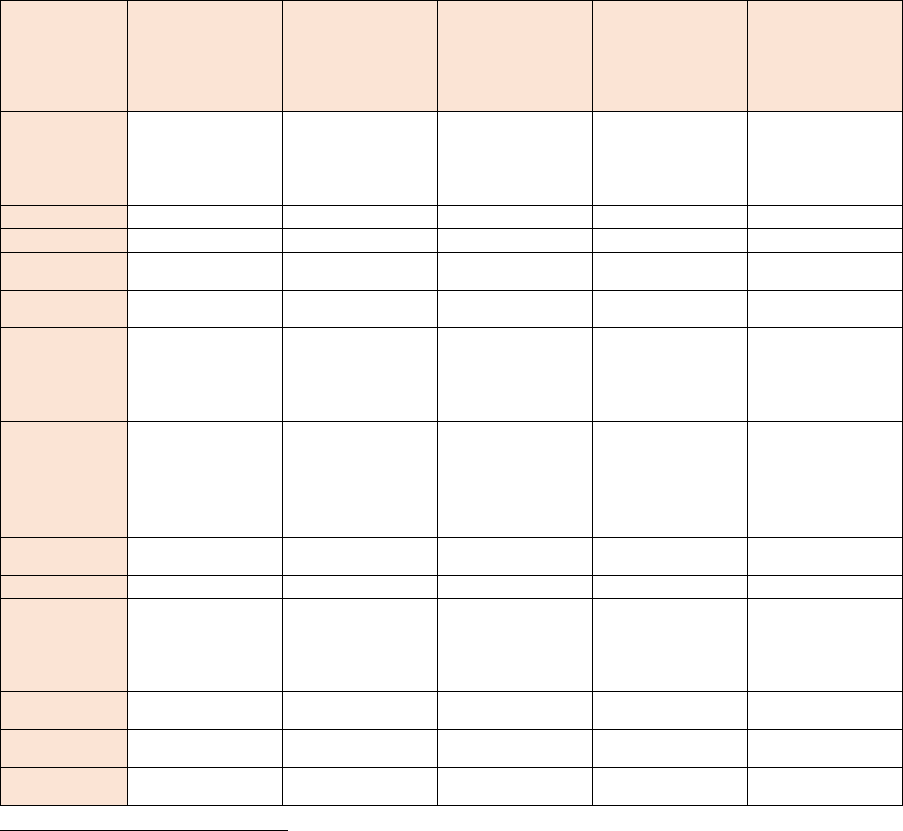
ACER REPORT ON TRANSMISSION AND DISTRIBUTION TARIFF METHODOLOGIES IN EUROPE
151
Country
Costs for
building,
upgrading,
maintaining
infrastructure
Costs for grid
losses
Costs for system
services
Costs for
metering
Non-related
policy costs (e.g.
NON-VAT taxes,
levies, cost of
support
schemes)
Italy
Yes
No
509
No
Yes (separate
tariff element)
Not part of the
regulated tariff
structure, but
included in the
electricity bill
510
Latvia
Yes
Yes
Yes
Yes
No
Lithuania
Yes
Yes
Yes
Yes
No
Luxembourg
Yes
Yes
Yes
Yes (separate
tariff element)
No
511
Malta
Yes
Yes
Yes
Yes (separate
tariff element)
Yes
512
The
Netherlands
Yes
Yes
Yes
Partially (only for
household and
small non-
household
consumers)
513
Yes (separate
charge)
514
Norway
Yes
Yes
No
Yes
Not part of the
regulated tariff
structure, but
included in the
electricity bill.
Poland
Yes
Yes
Yes
Yes
Yes (separate
charge)
515
Portugal
Yes
No
516
Yes
Yes
517
Partially
518
Romania
Yes
Yes
No
Yes
Not part of the
regulated tariff
structure, but
included in the
electricity bill.
519
Slovak
Republic
Yes
Yes
Yes
Yes
Yes (separate
charge)
520
Slovenia
Yes
Yes
No
Yes
Yes (separate
charge)
521
Spain
Yes
Yes
No
Yes
Yes (separate
charge)
522
509
IT: In Italy, consumers pay (in kind, i.e. as additional energy bought in the energy market) for a “standard” level of losses. The
difference between the actual losses and the standard losses is paid (or retained) by network operators. The reason for
introducing standard level of losses (and thus an implicit reward/penalty scheme for network operators) is to incentivise network
operators to reduce losses in their networks.
510
IT: There is a number of policy costs which are paid by electricity consumers. In addition, TV tax is separately recovered via
the electricity bills. However, they are not part of regulated network tariffs.
511
LU: the costs of EV-recharging points accessible to the public operated by the DSO was recovered in the past as part of the
distribution tariff, without distinguishing such tariff element. However, it has been excluded from the D-tariffs in the meantime;
512
MT: apart from VAT, customers are charged excise duty on electricity
513
NL: For large non-household consumers the metering is deregulated)
514
NL: sustainable energy surcharge
515
PL: Co-generation of heat and power. D-connected network users also pay for RES support scheme, stranded costs and costs
of maintaining the capacity market.
516
PT: In Portugal, energy suppliers have to procure more energy in the market to cover grid losses. The amount of energy to
compensate for grid losses is added to the metered withdrawal of the supplier’s customers and calculated using the hourly losses
profiles which are approved annually by the NRA. These losses profiles are differentiated by network type (transmission and
distribution) and voltage level (VHV, HV, MV, LV).
517
PT: investment cost (CAPEX) of meters (both traditional and smart meters) is not recovered through distribution
tariffs. OPEX related to metering are part of the costs recovered via the distribution tariff.
518
PT: Past employee downsizing costs are recovered as part of the distribution tariff, without distinguishing such tariff element.
In addition, the low voltage distribution tariff includes concession rents paid by the DSO to municipalities and an incentive for the
integration of LV installations into smart grids. Other costs (e.g. support schemes for renewables/cogeneration/fossil fuel, capacity
mechanisms, cost for efficiency programs, rent of areas utilized by hydro plants, budget of the energy NRA, additional costs from
the autonomous regions of Azores and Madeira) are recovered through a separate charge, called “global use of the system tariff”.
519
RO: some RES, Co-gen support scheme and excise tax to be paid by D-connected users
520
SK: RES support scheme paid by all consumers
521
SI: RES support, energy efficiency support, market operator cost
522
ES: RES support, stranded power generation costs for electricity production in Spanish non-peninsular territories
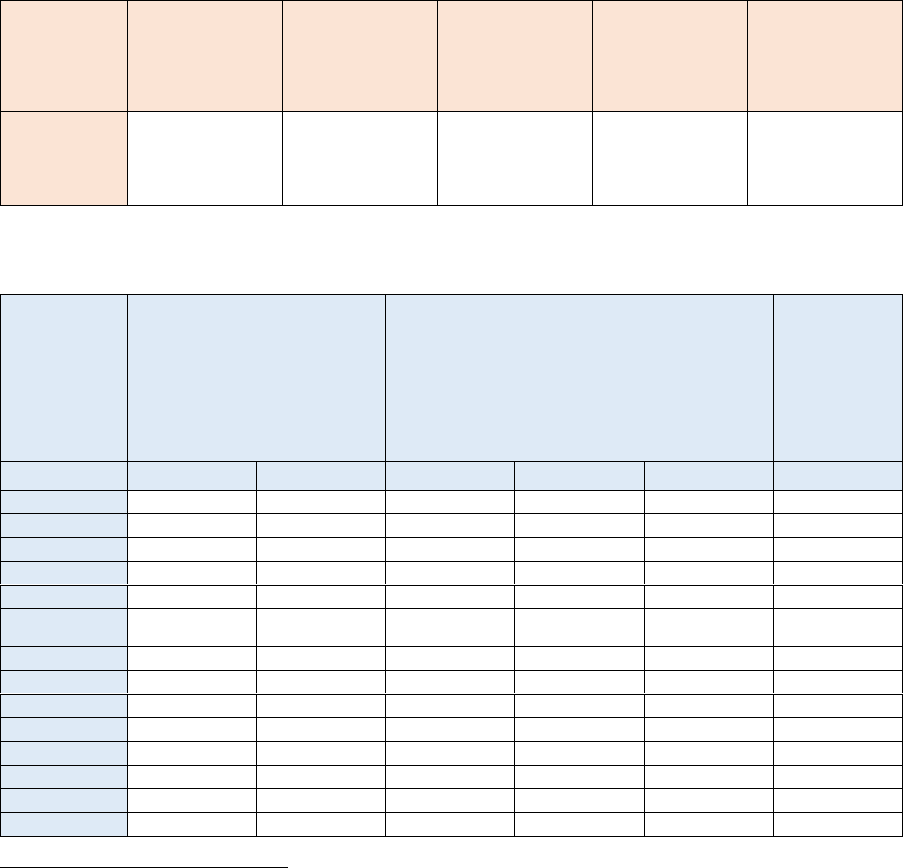
ACER REPORT ON TRANSMISSION AND DISTRIBUTION TARIFF METHODOLOGIES IN EUROPE
152
Country
Costs for
building,
upgrading,
maintaining
infrastructure
Costs for grid
losses
Costs for system
services
Costs for
metering
Non-related
policy costs (e.g.
NON-VAT taxes,
levies, cost of
support
schemes)
Sweden
Yes
Yes
Yes
Yes
Not part of the
regulated tariff
structure, but
included in the
electricity bill
523
.
Table 47: Tariff basis, variation and differentiation of the transmission tariffs for withdrawal
Country
Tariff basis
Variation of
tariffs based
on
Exemption,
discount or
differentiation
of tariff
values or
tariff basis for
some
network
users
Energy
Power
Voltage
Location
524
Time-of-use
525
Austria
X
X
X
(X)
526
Belgium
X
X
X
X
X
527
Bulgaria
X
Croatia
X
X
528
X
X
Cyprus
X
X
Czech
Republic
X
X
Denmark
X
Estonia
X
X
X
Finland
X
X
X
France
X
X
X
X
Germany
X
X
529
X
530
Greece
X
X
X
531
Hungary
X
X
Ireland
X
X
532
X
533
523
SE: energy tax is paid by end consumers
524
Variation based on location, unrelated to the connection to a specific network operator (e.g. the network charges are set to be
different to indicate at which locations the electricity is most or least needed).
525
Does not take into account differences due to mandatory/voluntary use of time-differentiated tariffs by the network users.
526
AT: Different tariffs apply for different network areas. Multiple DSOs can operate within a single network area.
527
BE: New or substantially increased storage facilities receive 80% tariff reduction for 10 or 5 years (from 2020). New or
substantially increased storage facilities receive 80% tariff reduction for 10 or 5 years (from 2020).
528
HR: Contracted power
529
DE: The weight of the components depends on the user’s peak load that occurs simultaneously with the annual peak load of
the network. For users exceeding 2,500 hours of consumption, the capacity-based term is higher than the energy-based term.
The opposite is true for consumers under the 2,500-hour threshold. (I.e. according to the latest data from year 2015, for
transmission-connected grid users exceeding 2,500 hours of consumption/year: 83.4% capacity charge, 16.6% volumetric. For
grid users under 2,500 hours: 25.5% capacity, 74.5% volumetric.)
530
DE: Tariff reduction (discounts) is applied for consumers whose individual peak load predictably differs in a considerable way
from the annual peak load of the grid and users who consume for 7.000 h/a at one connection point and whose annual
consumption at this connection point crosses 10 GW/h. PHES whose pump capacity or turbine power increased by at least 7.5%
or whose storage capacity increased by at least 5% after 04.08.2011 are fully exempted for the first 10 years. Non-PHES storage
facilities built after 31.12.2008 and put into operation within 15 years from 04.08.2011 are fully exempted for the first 20 years of
operation.
531
GR: Allocation of costs based on aggregate demand of each consumer class (HV, MV, LV) during the summer and winter
peak (2 hours annually). HV/MV customers pay fully capacity-based tariffs, LV customer tariffs are mostly energy- based (80-
100%, depending on the type of customer)
532
IE: Maximum export capacity
533
IE: Based on how the demand customer is connected to the grid, i.e. transmission-connected, distribution-connected with a
Minimum Import Capacity (MIC) ≥ 0.5MW or distribution-connected with MIC <0.5MW the power-based charge is different. The
energy charge does not vary. Some PHES are fully exempted (i.e. Turlough Hill)
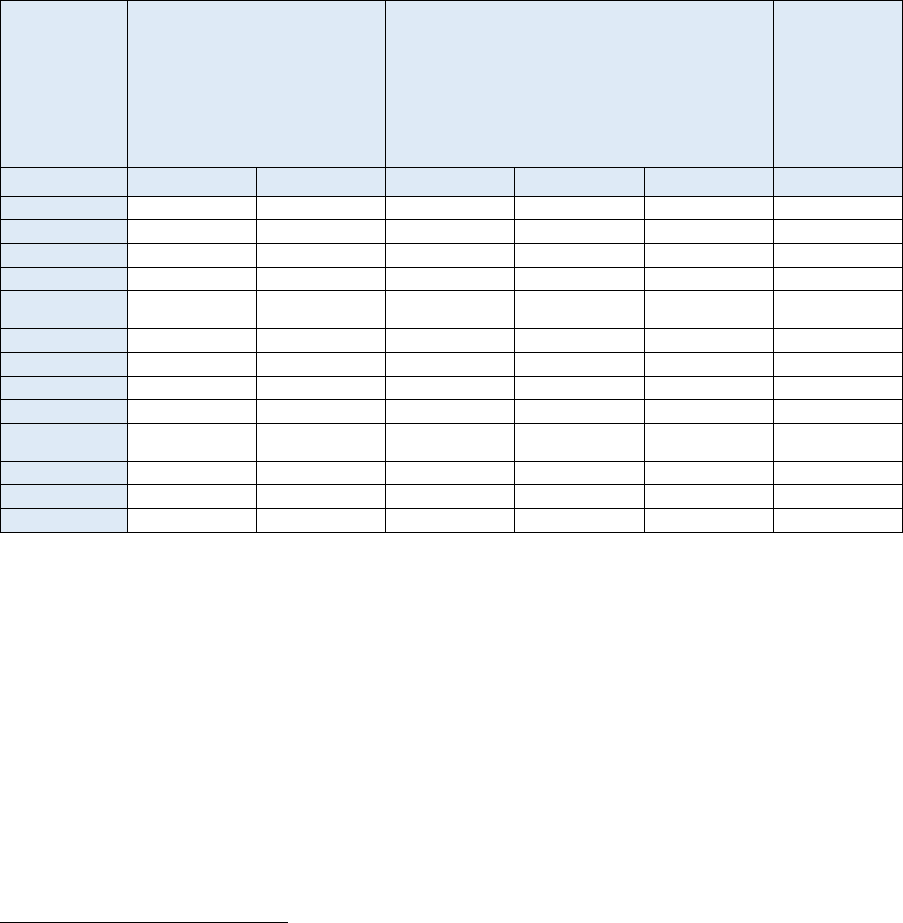
ACER REPORT ON TRANSMISSION AND DISTRIBUTION TARIFF METHODOLOGIES IN EUROPE
153
Country
Tariff basis
Variation of
tariffs based
on
Exemption,
discount or
differentiation
of tariff
values or
tariff basis for
some
network
users
Energy
Power
Voltage
Location
524
Time-of-use
525
Italy
X
X
X
534
X
535
Latvia
X
X
X
536
Lithuania
X
X
X
537
Luxembourg
X
538
X
The
Netherlands
X
539
X
X
540
Norway
X
X
X
Poland
X
X
541
X
542
Portugal
543
X
X
X
544
X
Romania
X
Slovak
Republic
X
X
X
545
Slovenia
X
X
X
X
546
Spain
X
X
X
Sweden
X
X
X
547
534
IT: Customers on HV and EHV levels pay the same power-based component, while the energy-based component is slightly
lower for EHV customers. Customers at lower voltage levels pay on the basis of energy.
535
IT: PHES and non-PHES storage is not subject to withdrawal charges (for pumping/charging)
536
LV: PHES and non-PHES storage is not subject to withdrawal charges (for pumping/charging)
537
LT: PHES and non-PHES storage is not subject to withdrawal charges (for pumping/charging). Consumers whose electrical
equipment has a permissible capacity less than 30 kW are partially exempted.
538
LU: Metered yearly 15min peak.
539
NL: Partly based on annual contracted maximum capacity (kW) and partly on a monthly peak capacity (kW). Additional fixed
lump sum fee (0.01% of the total injection charge)
540
NL: The large industrial consumers connected to the EHV or HV transmission grid receive partial tariff exemption if they meet
certain criteria (consumption level and profile).
541
PL: Contracted capacity
542
PL: PHES and non-PHES storage is not subject to withdrawal charges (for pumping/charging. For T-connected (end) network
users the charge is based on the reserved contractual capacity. For the points of delivery where the where distribution network
is connected, the charge is based on the actual energy flows.
543
PT: The tariff basis of the transmission tariff has the following structure, based on tariff values for year 2019: active energy
(14.0%), reactive energy (2.5%), contracted power (10.5%) and peak power (73.0%).
544
PT: Users connected at VHV pay a lower transmission tariff than users connected at lower voltage levels, as the former only
pay for the VHV assets of transmission, while the latter pay also the remaining transmission assets (e.g. VHV/HV transformers).
545
PHES is not subject to withdrawal charges (for pumping/charging). No non-PHES storage is connected to the transmission
grid. Some of the largest industrial consumers are partially exempted (tariff reduction)
546
PHES and non-PHES storage is not subject to withdrawal charges (for pumping/charging)
547
SE: The withdrawal charge differs between nodes in the transmission grid (same applies for the injection charge).
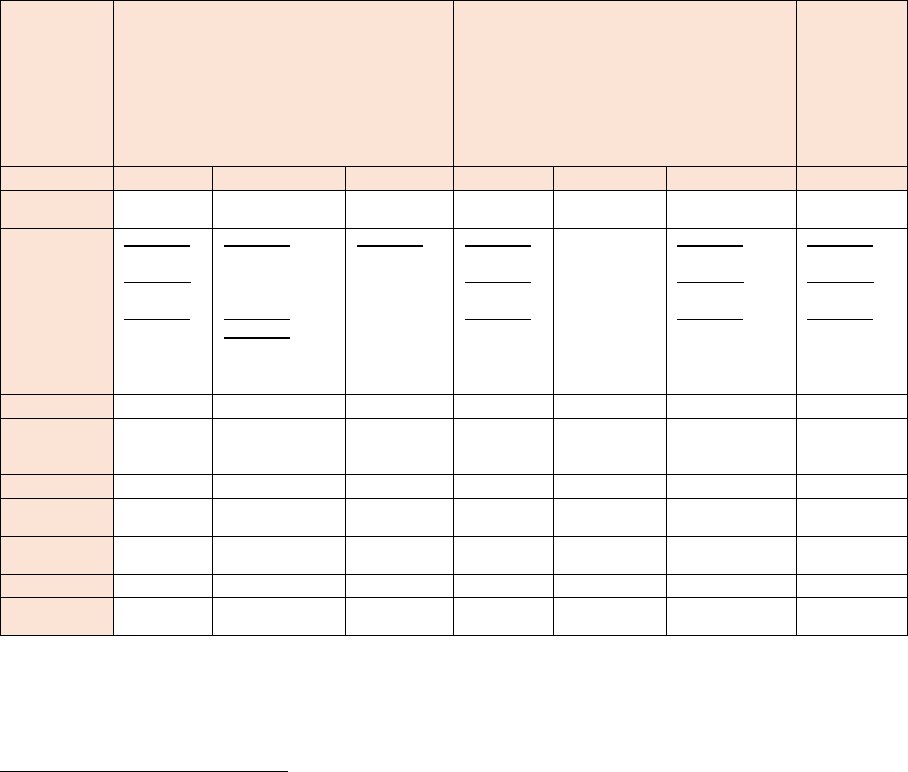
ACER REPORT ON TRANSMISSION AND DISTRIBUTION TARIFF METHODOLOGIES IN EUROPE
154
Table 48: Tariff basis, variation and differentiation of the distribution tariffs for withdrawal
Country
Tariff basis
Variation of tariffs based on
Exemption,
discount or
differentiati
on of tariff
values or
tariff basis
for some
network
users
Energy
Power
Lump sum
Voltage
Location
548
Time-of-use
549
Austria
X
X
X
X
(X) (network
areas)
550
X (E-based)
X
551
Belgium
Brussels:
X
Flanders:
X
Wallonia:
X
Brussels: X
(actual
maximum
power)
Flanders: X
Wallonia: X
(actual
maximum
power)
Brussels: X
Brussels:
X
Flanders:
X
Wallonia:
X
Brussels: X (E-
based)
Flanders: X
552
(E-based)
Wallonia: X (E-
based)
Brussels:
X
553
Flanders:
X
554
Wallonia:
Bulgaria
X
X
X
X
555
Croatia
X
X (actual power
at peak
period)
556
X
X (both E- and
P-based)
Cyprus
X
X
Czech
Republic
X
X (contracted
or rated power)
X
X (both E- and
P-based)
X
557
Denmark
X
X
X
X (both E- and
P-based)
Estonia
X
X
X
X
X (E-based)
X
558
Finland
X
X
X
X
X (both E- and
P-based)
559
X
560
548
Variation based on location, unrelated to the connection to a specific network operator (e.g. the network charges are set to be
different to indicate at which locations the electricity is most or least needed). D-tariff for withdrawals are different based on the
DSO area to which the user is connected to in several countries/jurisdictions including BE’s Flanders and Wallonia regions, Czech
Republic, Denmark, Estonia, Finland, Germany, Greece, Latvia, Lithuania, the Netherlands, Poland, Romania, Sweden.
549
Does not take into account differences due to mandatory/voluntary use of time-differentiated tariffs by the network users.
550
AT: Different tariffs apply for different network areas. Multiple DSOs can operate within a single network area
551
AT: Most users have a power-based D-tariff , some LV users have energy+lump sum
552
BE (FLA): Until end 2022, there has been a day/night differentiation in the energy charge. From 2023, only the 'exclusive night'
tariff for accumulation heating (energy-based) remains as a sort of ToU.
553
BE (BRU): Network users (on LV) pay an energy-based charge and a yearly lump sum fee based on the capacity of their
connection (i.e. less than or equal to 13 kVA vs. greater than 13 kVA). Network users (on HV) with peak measurement pay an
energy-based charge and a power-based charge (€/kW) based on their actual monthly peak capacity (maximum of the last 12
months) during peak time of use: weekdays for 7 am to 10 pm.
554
BE (FLA): Only energy-based tariffs are applied to household consumers (until 2022). Both power-based and energy-based
tariffs are applied to most non-household consumers (depending on the metering regime).
555
BG: Some network users have energy-based, some network users have mix of energy and power-based tariffs.
556
HR: Power-based charge only has to be paid during peak periods.
557
CZ: Some network users (MV or HV) have the option to have energy-based tariff only. However, this option is taken by a
fraction of the eligible network users. The rest of the users have a mix of energy- and power-based charges.
558
EE: network users have the option for energy-based only, for mix of energy-based and power-based or for mix of energy-
based, power-based and lump sum charges. Households can choose also a mix of energy-based and lump sum tariff. MV
connected consumers have to pay lower variable tariffs than LV connected consumers, but higher fixed fees. Consumers whose
electricity consumption is higher have a possibility to use network services with network charges, which include lower variable
fees and higher fixed fees compared to network charges, which are more suitable for lower electricity consumption consumers
559
FI: Differences typically apply in the energy-based withdrawal charge, but there are DSOs that apply time elements in the
power-based withdrawal charge.
560
FI: In general, for households and small buildings, the tariff consists of an energy-based fee and a fixed basic fee, which, in
some DSOs’ tariff structures, depends on the size of the main fuse. For industrial consumers, the tariff usually consists of a basic
fee, power fee, reactive power fee and distribution fee.
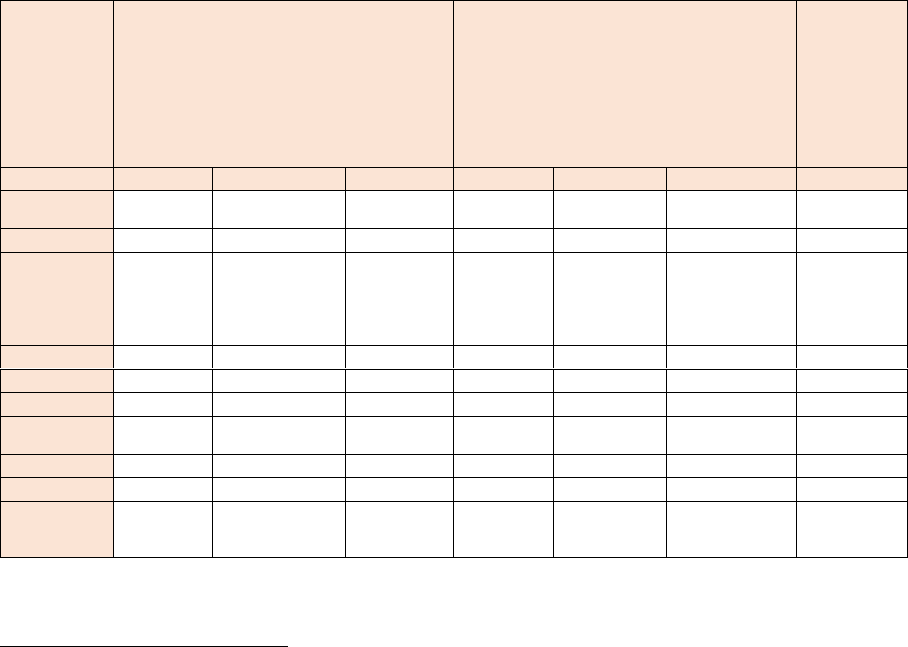
ACER REPORT ON TRANSMISSION AND DISTRIBUTION TARIFF METHODOLOGIES IN EUROPE
155
Country
Tariff basis
Variation of tariffs based on
Exemption,
discount or
differentiati
on of tariff
values or
tariff basis
for some
network
users
Energy
Power
Lump sum
Voltage
Location
548
Time-of-use
549
France
X
X (contracted
or rated power)
X
561
X
X (both E- and
P-based)
X
562
Germany
X
X
X
X
X
563
Greece
X
X (actual power
at specified
time or
contracted
power)
X
X
564
Hungary
X
X
X
X
X
565
Ireland
X
X
X
X
X (E-based)
X
566
Italy
X
X
X
X
X
567
Latvia
X
X (contracted
or rated power)
X
X (E-based)
Lithuania
X
X
X
X
X (E-based)
Luxembourg
X
X
X
X
X
568
Malta
X
569
X (actual
maximum
power)
X
X (E-based)
X
570
561
FR: Management component is a lump sum (same for metering). Pure withdrawal charge consists of a power-based charge
and an energy-based charge. Depending on the voltage level, there are different possible combinations of power-energy
component values that users will subscribe to according to their utilisation of the network.
562
FR: for MV users time-of-use tariffs embedded both in power and energy-based component; for LV users (under 36 kVA, time-
of-use tariffs embedded only in the energy-based component.
563
DE: Mix of energy and lump sum in exceptional cases for LV users, a mix of energy-based and power-based tariff in case of
power metering and for non-LV users. Tariffs generally consist of a power-charge and an energy-based charge depending on the
annual consumption (kW peak for power-based charge and kWh for energy-based charge). The weight of components depends
on the user's peak load occurring simultaneously with the network's annual peak load. For users exceeding 2500 hours of
consumption, the power-based term is than the energy-based term. The opposite is true for consumers under the 2500-hour
threshold. At the low voltage level for consumers without power-metering, there is only an energy-based tariff unless DSOs make
use of the option to additionally introduce a so-called “base charge” (lump sum). The combined tariff consisting of an energy-
based component and the base charge must be proportionate to the tariff (consisting of a volumetric and a capacity component)
that would be applicable on the low voltage level in case of power metering. The vast majority of DSOs make use of this option.
564
GR: For MV network users the power-based charge is based on the actual power at specified time (e.g. system peak periods).
For LV network users the power-based charge is based on contracted or rated power.
565
HU: Larger users at low voltage level above 3×80A connection capacity and users connected to higher voltage levels have a
mix of energy-based, power-based and lump sum charge, while other users have a mix of energy-based and lump sum charge.
566
IE: some network users have only energy-based charge, some network users have a mix of energy-based and lump sum
charge and some network users have a mix of energy-based, power-based and lump sum charge.
567
IT: For most users, the network tariff has three components: fixed, energy-based and power-based. The energy-based
component is only addressing transmission; therefore, the distribution tariff can be deemed as a combination of fixed and power-
based. Only energy-based charge is applied for public lightning and public charging points for electric vehicles.
568
LU: For low voltage users the energy component is paid on the consumption and an access fee is due monthly. The access
fee contains the metering costs and some of the distribution costs. For non-low voltage users in distribution, the tariff has an
energy and a power component, while metering is a separate monthly fee.
569
MT: Network users with a service rating not exceeding 60A per phase pay an energy-based tariff and an annual fixed service
charge. The energy-based tariff is paid on consumption only and covers part of the distribution costs as well as the energy and
supply costs. Prosumers do not pay any extra charges for injection. Producers that only inject but not withdraw pay only the
annual fixed service charge. Users with a service rating exceeding 60A per phase pay an energy-based tariff, an annual fixed
service charge and a maximum demand tariff based on the highest demand (kW or kVA) sustained for any thirty consecutive
minutes during the year multiplied by two. The energy-based tariff is paid on the electricity consumed only. Prosumers do not pay
any extra charges for injection. Producers that inject pay only an annual fixed service charge. This service charge covers the
metering and cost-related administration of feed-in tariff account. In Malta, all producers sell to the DSO/supplier, there is no third-
party access and the retail market is not open to competition.
570
MT: A time-differentiated kWh or KVAh tariff structure is available for consumers with a consumption exceeding 5GWh. The
registered consumer on a “Non-Residential Premises Service” with a connection capacity rated above a 100 Amps per phase
may apply to be metered and billed in kVAh tariffs instead of kWh tariffs.
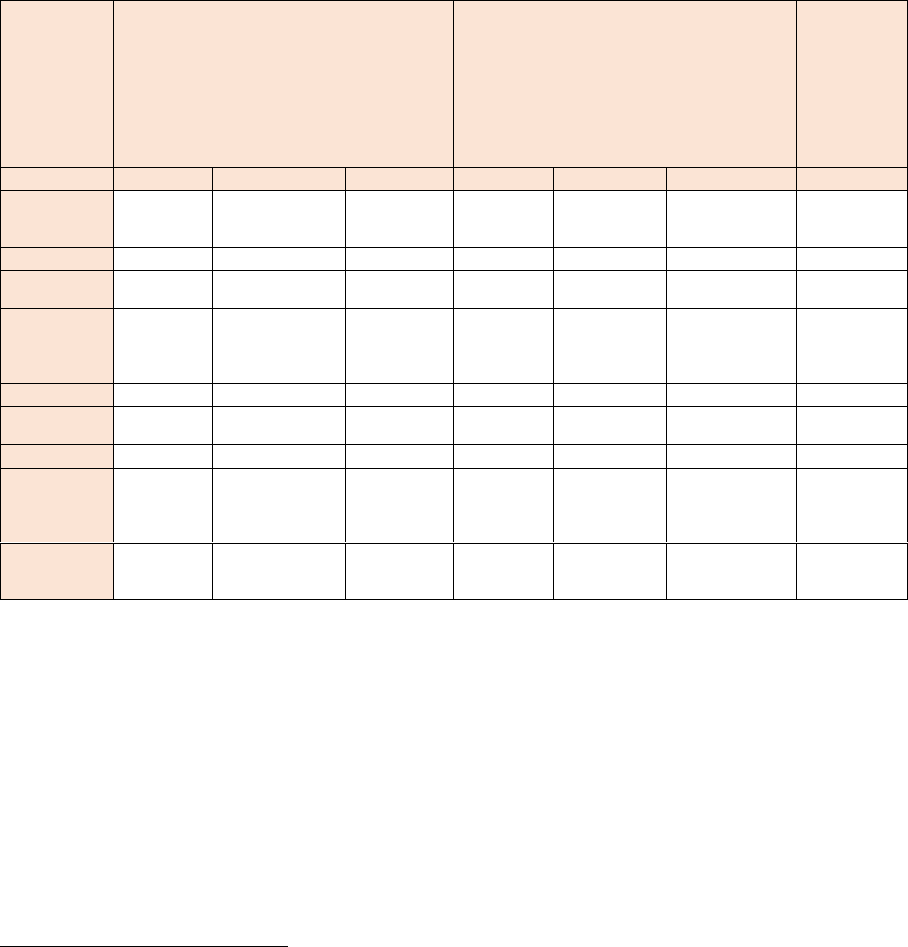
ACER REPORT ON TRANSMISSION AND DISTRIBUTION TARIFF METHODOLOGIES IN EUROPE
156
Country
Tariff basis
Variation of tariffs based on
Exemption,
discount or
differentiati
on of tariff
values or
tariff basis
for some
network
users
Energy
Power
Lump sum
Voltage
Location
548
Time-of-use
549
The
Netherlands
X
X
571
(both
contracted and
actual power)
X
X
Norway
X
X
X
X
X
Poland
X
X (contracted
or rated power)
X
X
X (E-based)
Portugal
X
572
X (both
contracted and
actual peak
power)
573
X
X (both E- and
P-based)
Romania
X
574
X
Slovak
Republic
X
X (contracted
or rated power)
X
Slovenia
X
X
575
X
X (E-based)
Spain
X
X (both
contracted and
actual power)
576
X
X (both E- and
P-based)
X
577
Sweden
X
X (actual
maximum
power)
X
X
X (both E- and
P-based)
X
578
571
NL: network users pay withdrawal tariffs on the basis of: the contracted amount of power; the actual maximum amount of
power required within a week or month; kWh: the amount of energy used; and a lump sum per year. Both the contracted amount
of power and the actual maximum amount of power required within a week or month are applied as power-based components.
572
PT: Each separate distribution tariff (HV, MV and LV) has the following billing variables: contracted power, peak power, active
energy and reactive energy. Notwithstanding the general structure of the distribution tariffs, when applying them to small
consumers connected to the LV grid (≤ 41.4 kVA), the following simplified structure applies: contracted power and active energy.
573
PT: The criteria for the power-based charge is contracted power and peak-power, except for small consumers connected to
the LV grid (denominated as Normal Low Voltage, with power levels ≤ 41.4 kVA), where peak-power is not applied.
574
RO: The tariffs are energy-based, calculated based on the distribution costs and distributed energy related to each voltage
level. These are voltage-specific tariffs (for low, medium and high voltage). The tariff paid by a user is calculated by summing the
specific tariffs for its own connection voltage level and for higher voltage levels.
575
SI: different bases depending on the voltage level and capacity. For customers connected to low voltage with capacity up to
43 kW, the withdrawal charges are applied based on the rated power according to the size of fuse. For those on low voltage with
capacity above 43 kW, the charges are based on the actual monthly peak power at a specified time (e.g. system peak periods
between 6h and 22h only on working days). On medium and high voltage, the withdrawal charges are based on the actual monthly
peak power at a specified time – a period of two continuous hours (between 6h and 22h on working days) defined as system
peak periods by the DSO. The DSO is obliged to define system peak periods (hours) for each month a year in advance.
576
ES: Tariffs are based on time of use. Six periods are considered and there is a power-based charge for each of the periods.
Additionally, there is a penalty for excess of actual power over contracted power.
577
ES: Regarding time-of-use tariffs 6 periods are considered for power-based withdrawal charge except for households were
there are 2 periods, 6 periods are considered for energy-based withdrawal charge except for households were there are 3 periods.
578
SE: In general, households often has a fixed charge (based on fuse size) plus energy charges. Low voltage other than
households often have energy, power and fixed charge. High voltage has energy, power and fixed components.
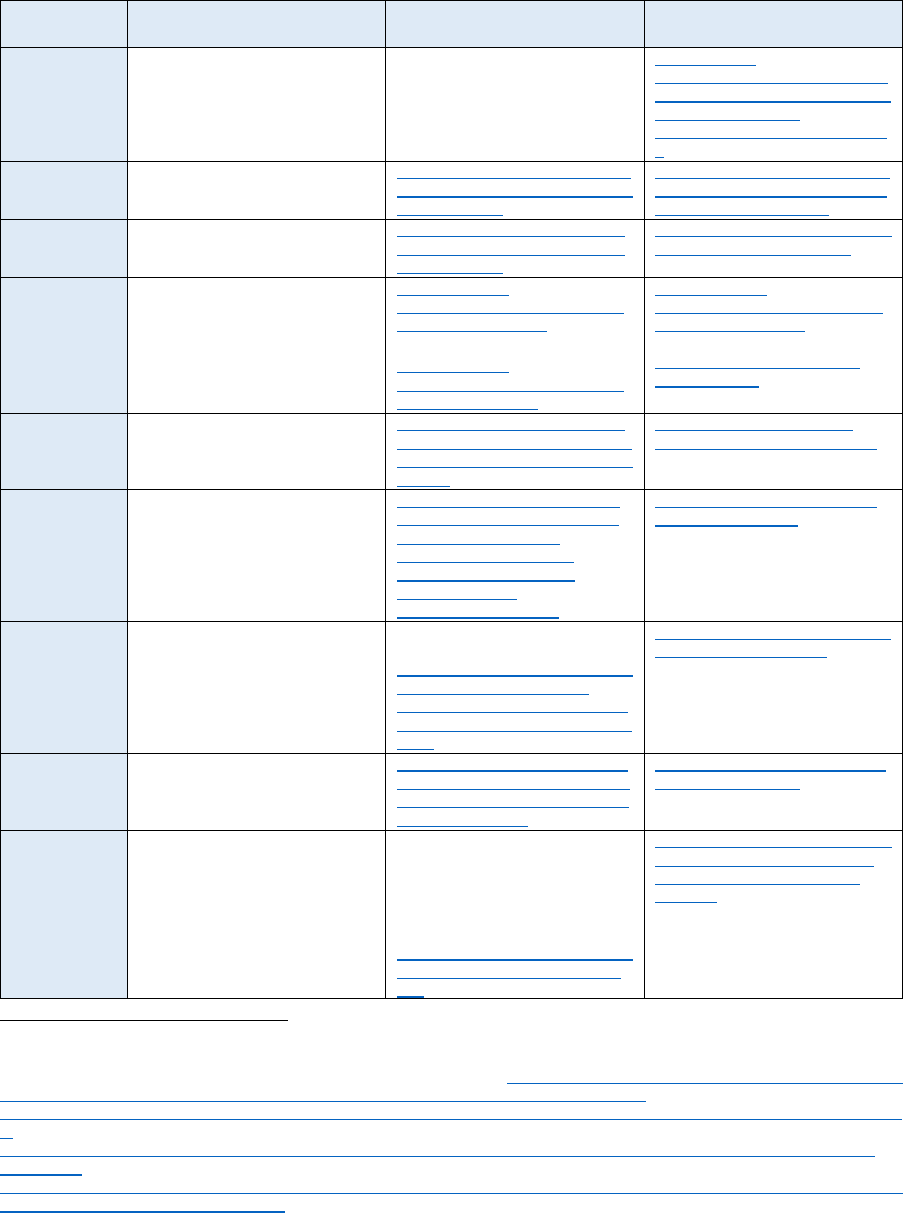
ACER REPORT ON TRANSMISSION AND DISTRIBUTION TARIFF METHODOLOGIES IN EUROPE
157
Annex 2: Links to national tariff methodologies and tariff
values
Table 49: Links to transmission tariff methodologies and transmission tariff values
Country
On-going T-tariff methodology
period
Link to the latest T-tariff
methodology
Link(s) to the current T-tariff
values / online calculator
Austria
No certain time period is defined
for the methodology; latest
revision in 2012 (change of law)
N/A
579
https://www.e-
control.at/documents/1785851/0/
BGBLA_2021_II_558.pdf/76b5da
84-7bed-5d55-ac4a-
529636f18654?t=164007937419
1
Belgium
Jan 2020- Dec 2023
https://www.creg.be/sites/default/
files/assets/Publications/Others/Z
1109-9bFR.pdf
https://www.creg.be/sites/default/
files/assets/Tarifs/Elia/TarifsTran
smission_2020-2023.pdf
Bulgaria
https://www.dker.bg/uploads/nor
mative_docs/naredbi/naredba_1
_06082021.pdf
https://www.dker.bg/uploads/resh
enia/2021/res-c27-2021.pdf
Croatia
No certain time period is defined
for the methodology; current tariff
methodology was set in 2015.
Revised methodology applies
from 01.01.2023.
https://narodne-
novine.nn.hr/clanci/sluzbeni/201
5_09_104_2035.html
https://narodne-
novine.nn.hr/clanci/sluzbeni/201
6_09_84_1860.html
https://narodne-
novine.nn.hr/clanci/sluzbeni/201
8_12_112_2186.html
https://www.hera.hr/hr/tarifni-
kalkulator-eek/
Cyprus
Regulatory period for reviewing
the tariff methodology is every 5
years.
Latest revision was in 2021
https://www.cera.org.cy/Templat
es/00001/data/nomothesia/ethnik
i/rythmistikes_apofaseis/2021_01
_en.pdf
https://tsoc.org.cy/electrical-
system/use-of-system-charges/
Czech
Republic
2021-2025
https://www.eru.cz/en/-/zasady-
cenove-regulace-pro-regulacni-
obdobi-2021-2025-pro-
odvetvielektroenergetiky-
plynarenstvi-pro-cinnosti-
operatora-trhu-v-
elektroenergetice-a-ply
https://www.eru.cz/cs/-/cenove-
rozhodnuti-c-8-2021
Denmark
No certain time period is defined
for the methodology; the T-tariff
methodology has been set in
2005, with only minor
adjustments since
580
.
The latest DUR decision
approving a T-tariff methodology:
https://afg.forsyningstilsynet.dk/h/
42c520c9-70bc-4643-93f3-
3f63bb755d28/693aa5ff46b047b
c8dc0e8b97516be02?showExact
=true
https://energinet.dk/El/Elmarkede
t/Tariffer/Aktuelle-tariffer
Estonia
No certain time period is defined
for the methodology; latest
revision in 2018
https://www.konkurentsiamet.ee/
sites/default/files/3_2_elektriener
gia_vorgutasude_arvutamise_uh
tne_metoodika.pdf (in Estonian)
https://www.konkurentsiamet.ee/
et/elektri-vorgutasud
Finland
2016-2023 (2 sub-periods: 2016-
2019 and 2020-2023)
Not publicly available: the
Finnish TSO is not obligated to
publish tariff methodology
TSO has published "Grid service
pricing structure" - design for
different network users:
https://www.fingrid.fi/globalassets
/dokumentit/fi/palvelut/kayttovar
ma-
https://www.fingrid.fi/globalassets
/dokumentit/en/customers/grid-
connection/grid-service-fees-
2022.pdf
579
AT: The tariff setting methodology is only provided in the explanatory notes concerning the actual system ordinance. The
changes between the years are explained under the following link: https://www.e-control.at/bereich-recht/verordnungen-zu-
strom/-/asset_publisher/tiRyh5zzUOU7/content/systemnutzungsentgelte-verordnung-sne-v-
1?_com_liferay_asset_publisher_web_portlet_AssetPublisherPortlet_INSTANCE_tiRyh5zzUOU7_assetEntryId=10262340&_co
m. The cost setting methodology is available here:
https://www.e-control.at/documents/1785851/0/Regulierungssystematik_Strom-TSO_FINAL+%281%29.pdf/9a0b09ba-aaf8-
8760-b156-
6bd33854aa75?t=1563368399034#:~:text=Die%20Regulierungssystematik%20stellt%20fest%2C%20dass,%C2%A7%2050%2
0ElWOG%202010%20ber%C3%BCcksi
580
DK: The Danish TSO, Energinet, is undertaking a reform in the tariff design. Consequently, Energinet has submitted a number
of tariff methodologies for approval at DUR, while other tariff methodologies are in process.

ACER REPORT ON TRANSMISSION AND DISTRIBUTION TARIFF METHODOLOGIES IN EUROPE
158
Country
On-going T-tariff methodology
period
Link to the latest T-tariff
methodology
Link(s) to the current T-tariff
values / online calculator
sahkonsiirto/fingrid_kantaverkko
palvelun_hinnoittelurakenne_en_
f.jpg
France
Jul 2021- Jul 2025 (TURPE 6
period)
https://www.cre.fr/Documents/De
liberations/Decision/tarif-d-
utilisation-des-reseaux-publics-
de-transport-d-electricite-turpe-6-
htb (in French)
https://www.cre.fr/en/Documents/
Deliberations/Decision/tariffs-for-
the-use-of-public-transmission-
electricity-grids-turpe-6-htb (in
English)
https://www.cre.fr/en/Documents/
Deliberations/Decision/tariffs-for-
the-use-of-public-transmission-
electricity-grids-turpe-6-htb
(Section 5.2.2, from p.93)
Germany
No certain time period is defined
for the methodology; The
ordinance setting the
methodology has come into force
in 2005 and has since been
amended several time, latest
amendment was in 2021
resulted in minor changes
https://www.gesetze-im-
internet.de/stromnev/
TenneT TSO:
https://www.tennet.eu/fileadmin/u
ser_upload/The_Electricity_Mark
et/German_Market/Grid_charges
/21-12-
14_TTG_Netzentgelte_fuer_202
2.pdf
TransnetBW:
https://www.transnetbw.de/files/p
df/transparenz/netzzugang-und-
entgelt/preisblaetter/Preise_Netz
nutzung_2022.pdf?v2
50Hertz:
https://www.50hertz.com/Portals/
1/Dokumente/Vertragspartner/Ne
tzkunden/Netzzugang/211210_P
B%202022_final.pdf?ver=J9cz8K
A9H7TawudZgq8HCw%3d%3d
Amprion:
https://www.amprion.net/Dokume
nte/Strommarkt/Netzkunden/Netz
entgelte/2021/Entgelte-Amprion-
g%C3%BCltig-ab-01-01-2022-
deutsche-Version.pdf
Greece
No certain time period is defined
for the methodology; latest
revision in 2021 (RAE decision
1001/16.12.2021).
Tariffs determined according to
the new methodology will be
effective from 1.7.2022
581
https://www.rae.gr/wp-
content/uploads/2022/01/%CE%
A6%CE%95%CE%9A-
%CE%92-6256-
%CE%91%CE%A0%CE%9F%C
E%A6%CE%91%CE%A3%CE%
97-1001-2021.pdf
https://www.rae.gr/wp-
content/uploads/2021/06/%CE%
A8%CE%9D9%CE%9E%CE%9
9%CE%94%CE%9E-
%CE%966%CE%A7.pdf
Hungary
Apr 2021- Dec 2024
http://www.mekh.hu/download/0/
a7/e0000/villamos_energia_rend
szerhasznalati_dijak_modszertan
i_utmutato_20210401_20241231
.pdf
http://www.mekh.hu/download/2/
ae/e0000/rendszerhasznalati_dij
ak_2021_aprilistol.xlsx
Ireland
Italy
Jan 2016- Dec 2023; (semi-
period Jan 2020 – Dec 2023)
https://www.arera.it/allegati/docs/
19/568-19TIT.pdf (especially
articles 7, 25 and 26 and Annex
tables)
https://www.arera.it/it/docs/19/56
8-19.htm
https://www.arera.it/it/elettricita/tr
asmissione.htm;
https://www.arera.it/allegati/docs/
19/568-19tabTIT_ti.xlsx (tables 1
and 5)
Latvia
No certain time period is defined
for the methodology; Tariff
methodology has been adopted
https://likumi.lv/ta/id/315676-
elektroenergijas-parvades-
sistemas-pakalpojumu-tarifu-
https://ast.lv/en/content/transmis
sion-tariff
581
GR: The NRA indicated that the determination of TSO required revenue for 2022 was delayed. For this reason, T-tariffs that
were determined according to the previous methodology and were based on recovery of 2021 TSO required revenue, continue
to apply also in 2022. It is expected that T-tariffs for recovery of TSO 2022 required revenue will be determined on the basis of
the new methodology by 30.5.2022 and they will be effective from 1.7.2022.
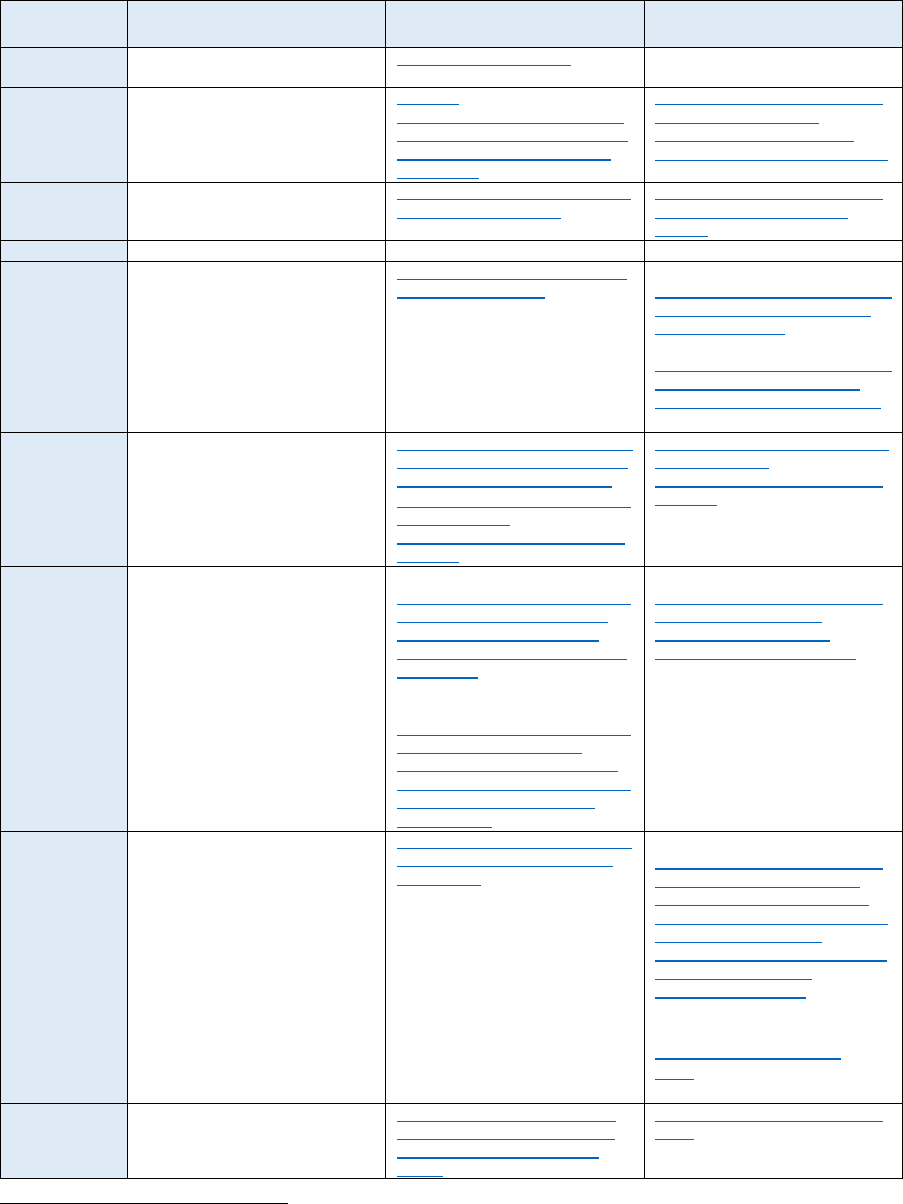
ACER REPORT ON TRANSMISSION AND DISTRIBUTION TARIFF METHODOLOGIES IN EUROPE
159
Country
On-going T-tariff methodology
period
Link to the latest T-tariff
methodology
Link(s) to the current T-tariff
values / online calculator
on 16 June 2020, and no
amendment has been made yet.
aprekinasanas-metodika (in
Latvian)
Lithuania
Jan 2022 – Jan 2026 (reviewed
biennially)
https://e-
seimas.lrs.lt/portal/legalAct/lt/TA
D/049c46b09dcb11e48d7bacdf3
0d64d66/ueYGduhurK?jfwid=-
1ac9ufnnuk
https://www.vert.lt/en/Pages/pric
e-ceilings-of-electricity-
transportation-services-and-
public-energy-price-ceilings.aspx
Luxembourg
Jan 2021- Dec 2024
https://legilux.public.lu/eli/etat/leg
/rilr/2020/05/26/a561/jo (only in
French)
https://assets.ilr.lu/energie/Docu
ments/ILRLU-1685561960-
948.pdf
Malta
N/A
N/A
N/A
The
Netherlands
582
No certain time period is defined
for the methodology;
The latest revision was in
February 2022 (only minor
changes were made in the
national tariff code)
https://wetten.overheid.nl/BWBR
0037951/2022-02-09 (only in
Dutch)
Tariff values:
https://www.acm.nl/sites/default/fi
les/documents/tarievenbesluit-
tennet-2022_0.pdf (p. 22 of the
tariff decision)
https://www.acm.nl/sites/default/fi
les/documents/rekenmodule-
tarievenbesluit-tennet-2022.xlsx
(only in Dutch)
Norway
No certain time period is defined
for the methodology, latest
revision was on 01.01.2019
https://www.nve.no/media/13319/
vedtak-om-inntektsramme-2021-
statnett-og-nordlink-norge.xlsx ;
https://www.statnett.no/globalass
ets/for-aktorer-i-
kraftsystemet/tariff/tariff-booklet-
2022.pdf
https://www.statnett.no/globalass
ets/for-aktorer-i-
kraftsystemet/tariff/tariff-booklet-
2022.pdf
Poland
No certain time period is defined
for the methodology
(Current tariff values apply
between Jan– Dec 2022)
DSOs connected to TSO grid:
https://www.ure.gov.pl/pl/biznes/t
aryfy-zalozenia/zalozenia-dla-
kalkulacj/9961,Informacja-w-
sprawie-kalkulacji-taryf-OSD-na-
2022-r.html
Smaller DSOs:
https://www.ure.gov.pl/pl/biznes/t
aryfy-zalozenia/zalozenia-
dlkalkulac/7833,Informacja-dla-
przedsiebiorstw-energetycznych-
posiadajacych-koncesje-na-
dystrybu.html
Stoen Operator:
https://bip.ure.gov.pl/bip/taryfy-i-
inne-decyzje-b/energia-
elektryczna/4004,Taryfy-
opublikowane-w-2021-r.html
Portugal
Jan 2022- Dec 2025 (4 years)
https://www.erse.pt/media/s3mdk
bcx/estrutura-tarif%C3%A1ria-
se-2022.pdf (p. 30ff)
Tariff values for year 2022:
https://www.erse.pt/en/activities/
market-regulation/tariffs-and-
prices-electricity/#current-year
https://www.erse.pt/media/aepp1
v4q/diretiva-3_2022.pdf
https://www.erse.pt/media/xzclkv
pz/tarifas-eletricidade-
2022_1_jan2022.xlsx
(only in Portuguese)
Tariff values for year 2023
Excel
(only in Portuguese)
Romania
Jan 2020- Dec 2024
https://www.anre.ro/ro/energie-
electrica/legislatie/metodologii-
tarife/transport-si-servicii-de-
sistem
https://portal.anre.ro/PublicLists/
Ordin
(ANRE Order no. 33/2022)
582
NL: There is no defined period for the T-tariff methodology. There is a national tariff code that describes the tariff structure.
This tariff code is a regulation that can be amended. Generally, an amendment will be proposed by the TSO after which the NRA
decides. The latest revision of the national tariff code was in February 2022 (only minor changes were made). There is an annual
tariff decision through which tariffs are set for the next calendar year. In the tariff decision allowed revenues are calculated (on
the basis of a methodology which remains the same throughout the regulatory period). Then tariffs are determined by applying
tariff structure described in the national tariff code. For the tariff decision, the TSO proposes the tariffs and the NRA then decides
on the tariffs.
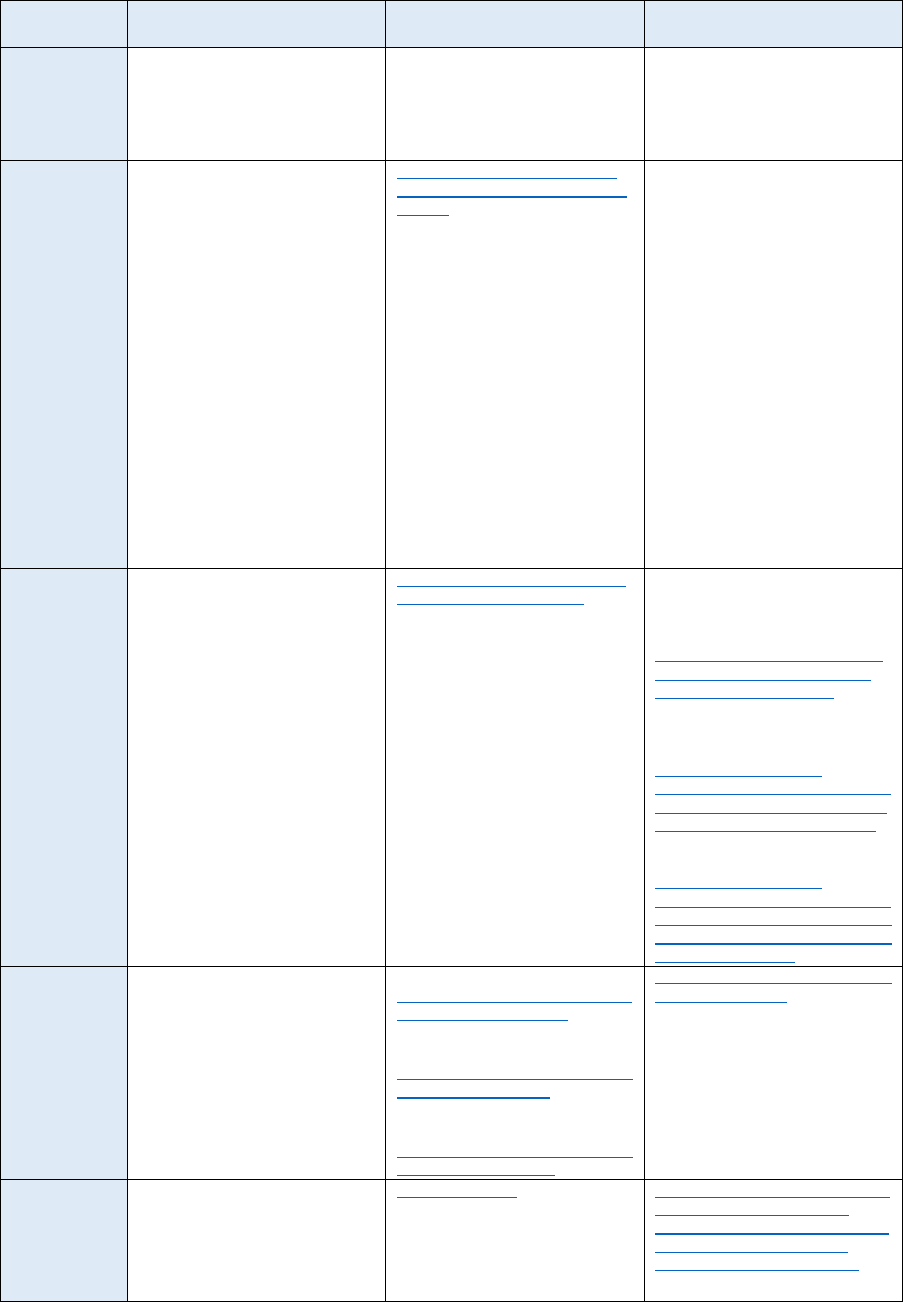
ACER REPORT ON TRANSMISSION AND DISTRIBUTION TARIFF METHODOLOGIES IN EUROPE
160
Country
On-going T-tariff methodology
period
Link to the latest T-tariff
methodology
Link(s) to the current T-tariff
values / online calculator
(ANRE Order no. 171/2019, with
latter amendments and additions
(Order no. 75/2020, Order no.
153/2020, Order no. 4/2021 and
Order no. 109/2021, only in
Romanian)
Slovak
Republic
Current tariff methodology was
set in 2017 by the NRA
New regulation period will start
from 01.01.2023.
,.
https://www.slov-lex.sk/pravne-
predpisy/SK/ZZ/2017/18/202112
15.html
(Decree No. 18/2017, only in
Slovakian)
Values of tariff for the system
services (TSS) in Slovak NRA
Decision 0097/2022/E
Values of tariff for the access to
the transmission system and for
the transmitted energy values in
Slovak NRA Decision
0078/2022/E
Values of tariff for losses during
energy transmission in
transmission system in Slovak
NRA Decision 0078/2022/E
Maximal prices for the balancing
services (capacity and energy)
per particular types of balancing
service that can be paid by
Slovak TSO to balancing
services providers in Slovak NRA
Decision 0092/2022/E.
Slovenia
There is no defined period, last
revision on 02.09.2021.
The latest regulatory period is
set for year 2022, previous
regulatory period was set for
years 2019-2021.
http://www.pisrs.si/Pis.web/pregl
edPredpisa?id=AKT_1050
T-tariff values: (in Slovenian
language): "Tarifne postavke za
omrežnino za prenosni sistem"
https://www.uradni-list.si/glasilo-
uradni-list-rs/vsebina/2021-01-
4132?sop=2021-01-4132
On line calculator
- for end price comparison:
http://primerjalnik.agen-
rs.si/index.php?/kalkulatorelektrik
a/kalkulator/action/IzbiraOdjemal
ca/Podstran/PrimerjavaPonudb
- for network charges:
http://primerjalnik.agen-
rs.si/index.php?/kalkulatorelektrik
a/kalkulator/action/VnosPodatkov
AnalizaCuo/Podstran/AnalizaCen
ZaUporaboOmrezja
Spain
Six years from Jan 2020 to Dec
2025
Legal text
https://www.boe.es/buscar/act.ph
p?id=BOE-A-2020-1066
Impact assessment
https://www.cnmc.es/sites/default
/files/2808025_42.pdf
Tariff model
https://www.cnmc.es/sites/default
/files/2808026_42.xlsx
https://www.cnmc.es/sites/default
/files/3853710.xlsx
Sweden
No certain time period is defined
for the methodology; latest
revision was in 2021
www.svk.se/tariff
https://www.svk.se/siteassets/4.a
ktorsportalen/systemdrift-o-
elmarknad/transmissionsnatstarif
f/aktuella-prislistor/prislista-
2022_transmissionsnatet.pdf

ACER REPORT ON TRANSMISSION AND DISTRIBUTION TARIFF METHODOLOGIES IN EUROPE
161
Table 50: Links to distribution tariff methodologies and distribution tariff values
Country
On-going D-tariff methodology
period
Link to the latest D-tariff
methodology
Link(s) to the current D-tariff
values / online calculator
Austria
No certain time period is defined
for the methodology
(Current tariff values apply from
Jan 2022- Dec 2022)
https://www.ris.bka.gv.at/Geltend
eFassung.wxe?Abfrage=Bundes
normen&Gesetzesnummer=2001
0107
https://www.e-
control.at/documents/1785851/1
811582/Entgelte-Strom-
2022.xlsx/362ecd43-aeb5-c2f1-
6f7f-
6dc11be6b69f?t=164001332211
8
Belgium
Brussels:
Jan 2020- Dec 2024
Flanders:
Jan 2021-Dec 2024
Wallonia:
Jan 2019 - Dec 2023
Brussels:
https://www.brugel.brussels/them
es/tarifs-de-distribution-
12/methodologie-tarifaire-2020-
2024-320
Flanders:
https://www.vreg.be/nl/tariefmeth
odologie-2021-2024
Wallonia:
https://www.cwape.be/sites/defa
ult/files/cwape-
documents/2021.09.02-
M%C3%A9thodologie%20tarifair
e%202019-2023%20-
%20modifications%20-
%20consolidation%20officieuse.
pdf
https://www.cwape.be/node/177#
mthodologie-tarifaire
Brussels:
https://www.brugel.brussels/them
es/tarifs-de-distribution-12/tarifs-
de-distribution-2020-2024-46
https://www.sibelga.be/fr/raccord
ements-compteurs/tarifs/tarifs-
utilisation-du-reseau/simulateur-
couts-de-distribution-electricite
Flanders:
https://www.vreg.be/nl/periodieke
-nettarieven-elektriciteit-en-
aardgas-2022
https://simulatornieuwenettarieve
n.vreg.be/
https://vtest.vreg.be/
Wallonia:
https://www.cwape.be/node/176#
grilles-tarifaires
Bulgaria
Croatia
No certain time period is defined
for the methodology; the current
methodology, which applies until
end 2022 was defined in 2015
July 2022.
https://narodne-
novine.nn.hr/clanci/sluzbeni/201
5_09_104_2034.html
https://www.hera.hr/hr/tarifni-
kalkulator-eek/
Cyprus
Regulatory period for reviewing
the tariff methodology is every 5
years.
Latest revision was in 2021.
https://www.cera.org.cy/Templat
es/00001/data/nomothesia/ethnik
i/rythmistikes_apofaseis/2021_01
_en.pdf
https://www.cera.org.cy/Templat
es/00001/data/hlektrismos/cost_
of_use.pdf
Czech
Republic
2021-2025
https://www.eru.cz/en/-/zasady-
cenove-regulace-pro-regulacni-
obdobi-2021-2025-pro-odvetvi-
elektroenergetiky-plynarenstvi-
pro-cinnosti-operatora-trhu-v-
elektroenergetice-a-ply
low voltage:
https://www.eru.cz/cs/-/cenove-
rozhodnuti-c-9-2021
medium and high voltage:
https://www.eru.cz/cs/-/cenove-
rozhodnuti-c-8-2021
Denmark
No certain time period is defined
for the methodology
No data
Link to 2021 tariffs (in Danish):
https://www.danskenergi.dk/udgi
velser/elforsyningens-nettariffer-
priser-pr-1-januar-2021
(Danish) Explanation of tariff
model 3.0:
https://forsyningstilsynet.dk/medi
a/10813/bilag-1.pdf
Estonia
No certain time period is defined
for the methodology; latest
revision was in 2018 (applied
since 2019)
https://www.konkurentsiamet.ee/
sites/default/files/3_2_elektriener
gia_vorgutasude_arvutamise_uh
tne_metoodika.pdf (in Estonian)
https://www.konkurentsiamet.ee/
et/elektri-vorgutasud
Finland
No certain time period is defined
for the methodology (each DSO
decides separately when to
update its tariff methodology).
Current regulatory period is set
for 2020-2023.
DSOs are not required to publish
their tariff methodologies, but
they can do on a voluntary basis.
None of the D-tariff
methodologies is currently
published.
DSOs are obliged by law to
publish tariff values. They
provide this information on their
websites

ACER REPORT ON TRANSMISSION AND DISTRIBUTION TARIFF METHODOLOGIES IN EUROPE
162
Country
On-going D-tariff methodology
period
Link to the latest D-tariff
methodology
Link(s) to the current D-tariff
values / online calculator
France
Jul 2021- Jul 2025 (TURPE 6
period)
https://www.cre.fr/content/downlo
ad/23338/file/210121_2021-
13_TURPE_6_HTA-BT.pdf
https://www.cre.fr/calculatrice/det
ail
Germany
No certain time period is defined
for the methodology (The
ordinance setting the
methodology has come into force
in 2005 and has since been
amended several time, latest
amendment was in 2021,
resulted in minor changes.
https://www.gesetze-im-
internet.de/stromnev/
There are over 800 DSOs in
Germany who publish their
respective tariffs sheets. There is
no online calculator. The links to
the tariff sheet of some of the
biggest DSOs:
Westnetz:
https://www.westnetz.de/content/
dam/revu-
global/westnetz/documents/uebe
r-westnetz/unser-
netz/netzentgelte-
strom/preisblaetter-westnetz-
strom-2022-01-01.pdf
Stromnetz Berlin:
https://www.stromnetz.berlin/netz
-nutzen/entgelte
NetzeBW:
https://assets.ctfassets.net/xytfb1
vrn7of/24qUcbmZS2zHu7BqzWt
HAI/9a09f0e883371f777ab079d7
22bf653c/20211215_NetzeBW_2
022_Preise_NN_Strom.pdf
Greece
No certain time period is defined
for the methodology; latest
revision was in 2021 (RAE
decision 707/16.9.2021). The
tariffs determined according to
the new methodology will be
effective from 01.01.2023
583
https://www.rae.gr/wp-
content/uploads/2021/12/A707A
_2021-
%CE%95%CE%93%CE%A7.%
CE%A7%CE%A7%CE%94-
%CE%A6%CE%95%CE%9A-
B5427_-22.11.21.pdf
https://www.rae.gr/wp-
content/uploads/2020/12/%CE%
91%CF%80%CF%8C%CF%86
%CE%B1%CF%83%CE%B7-
%CE%A1%CE%91%CE%95-2-
020.pdf
Hungary
Apr 2021- Dec 2024
http://www.mekh.hu/download/0/
a7/e0000/villamos_energia_rend
szerhasznalati_dijak_modszertan
i_utmutato_20210401_20241231
.pdf
http://www.mekh.hu/download/2/
ae/e0000/rendszerhasznalati_dij
ak_2021_aprilistol.xlsx
Ireland
Italy
2016-2023, divided into two 4-
years sub-periods (2016-2019,
2020-2023)
https://www.arera.it/allegati/docs/
19/568-19TIT.pdf#page=27
(Annex A to Decision
568/2019/R/eel, articles 8-13, 16,
21-26)
https://www.arera.it/it/elettricita//d
istr.htm
Latvia
No certain time period is defined
for the methodology; the
methodology was approved in
Dec 2011, the last amendments
in Oct 2019
Existing D-tariff rates are set for
five years (Jan 2020–Dec 2024)
https://likumi.lv/doc.php?id=2416
77&from=off (only in Latvian)
https://www.sprk.gov.lv/sites/defa
ult/files/editor/ED/Elektroenergija/
Tarifi/AS_Sadales_tikls_tarifi_01
012020.pdf (tariff values from
p.12)
https://sadalestikls.lv/lv/tarifu-
kalkulators (in Latvian)
Lithuania
Jan 2022– Jan 2026, reviewed
biennially
https://e-
seimas.lrs.lt/portal/legalAct/lt/TA
D/049c46b09dcb11e48d7bacdf3
0d64d66/ueYGduhurK?jfwid=-
1ac9ufnnuk
https://www.vert.lt/en/Pages/pric
e-ceilings-of-electricity-
transportation-services-and-
public-energy-price-ceilings.aspx
Luxembourg
Jan 2021- Dec 2024
https://legilux.public.lu/eli/etat/leg
/rilr/2020/05/26/a561/jo (only in
French)
https://assets.ilr.lu/energie/Docu
ments/ILRLU-1685561960-
948.pdf
583
GR: The NRA indicated that the determination of DSO required revenue for 2021 and 2022 was delayed. For this reason, D-
tariffs that were determined according to the previous methodology and were based on recovery of 2020 DSO required revenue,
continue to apply also in 2021 and 2022. It is expected that the new methodology will be applied to determine D-tariffs for recovery
of DSO 2023 required revenue.
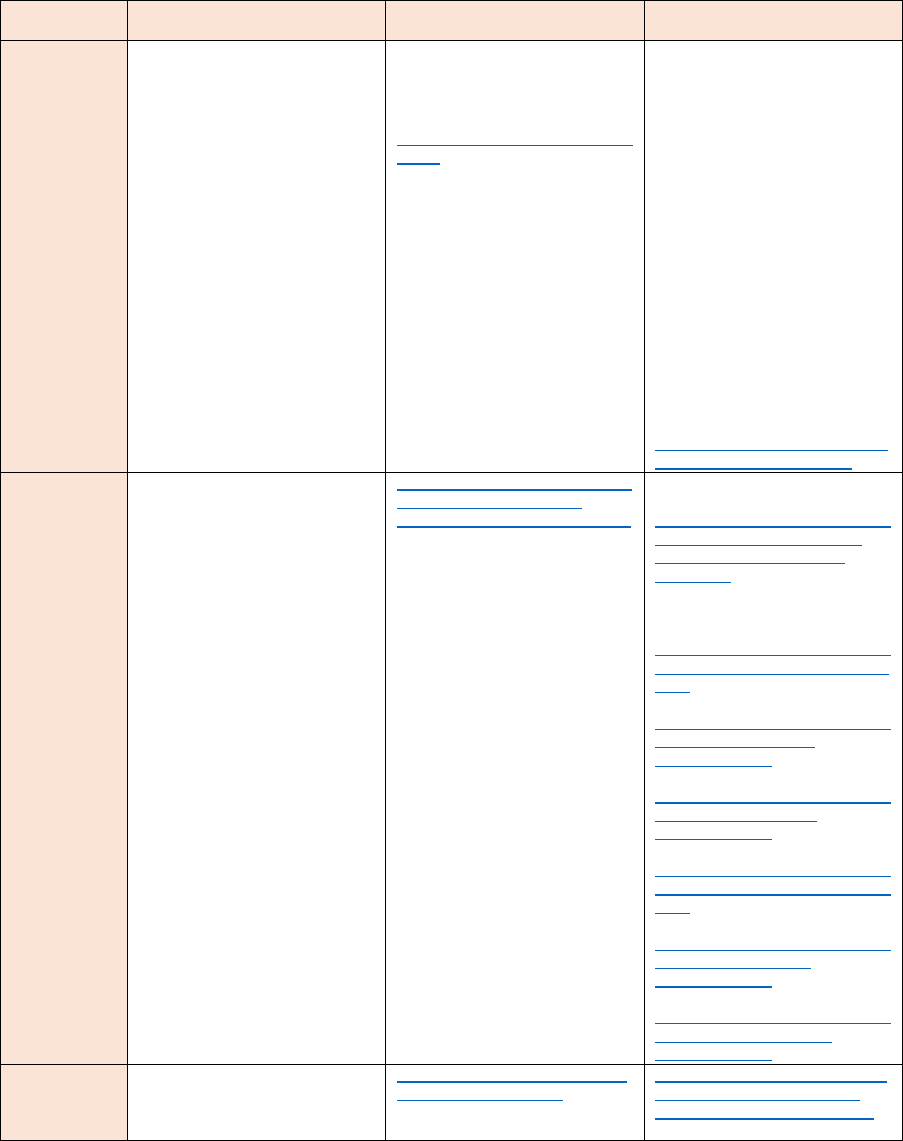
ACER REPORT ON TRANSMISSION AND DISTRIBUTION TARIFF METHODOLOGIES IN EUROPE
163
Country
On-going D-tariff methodology
period
Link to the latest D-tariff
methodology
Link(s) to the current D-tariff
values / online calculator
Malta
No certain time period is defined
for the methodology, the
methodology applies since 2008
The tariff methodology is not
published.
Some tariff related information is
available here:
https://www.rews.org.mt/#/en/rew
sfa/27
The DSO forms part of a
vertically integrated company
which is also the sole supplier of
electricity in Malta. Articles 6, 35,
43 and 4 of Directive (EU)
2019/944 do not apply to Malta
(Article 4 has a time-limited
derogation until 5 July 2027).
The DSO is required to keep
unbundled accounts at internal
management accounts level
only. As such there is no specific
separate tariff for the use of the
distribution network. The costs of
the distribution network are in
part covered by a maximum
demand tariff, an annual fixed
charge, kWh tariffs that covers
also energy and the supply and
connection charges. All tariffs are
regulated. Link to tariffs:
https://www.rews.org.mt/#/en/a/1
3-regulated-electricity-tariffs
The
Netherlands
Jan 2022- Dec 2026
https://www.acm.nl/nl/publicaties/
methodebesluit-regionaal-
netbeheer-elektriciteit-2022-2026
Calculation of the allowed
revenues for 2022:
https://www.acm.nl/nl/publicaties/
berekening-totale-inkomsten-
2022-regionaal-netbeheer-
elektriciteit
Tariff values for 2022 for each
DSO:
https://www.acm.nl/nl/publicaties/
tarievenbesluit-coteq-elektriciteit-
2022
https://www.acm.nl/nl/publicaties/
tarievenbesluit-enexis-
elektriciteit-2022
https://www.acm.nl/nl/publicaties/
tarievenbesluit-liander-
elektriciteit-2022
https://www.acm.nl/nl/publicaties/
tarievenbesluit-rendo-elektriciteit-
2022
https://www.acm.nl/nl/publicaties/
tarievenbesluit-stedin-
elektriciteit-2022
https://www.acm.nl/nl/publicaties/
tarievenbesluit-westland-
elektriciteit-2022
Norway
No certain time period is defined
for the methodology, the latest
revision was in Jun 2021,
effective from Jul 2022
https://lovdata.no/dokument/SF/f
orskrift/1999-03-11-302
https://www.nve.no/reguleringsm
yndigheten/publikasjoner-og-
data/statistikk/nettleiestatistikk/

ACER REPORT ON TRANSMISSION AND DISTRIBUTION TARIFF METHODOLOGIES IN EUROPE
164
Country
On-going D-tariff methodology
period
Link to the latest D-tariff
methodology
Link(s) to the current D-tariff
values / online calculator
Poland
No certain time period is defined
for the methodology
Current tariff values apply
between Jan– Dec 2022
DSOs connected to TSO grid:
https://www.ure.gov.pl/pl/biznes/t
aryfy-zalozenia/zalozenia-dla-
kalkulacj/9961,Informacja-w-
sprawie-kalkulacji-taryf-OSD-na-
2022-r.html
Smaller DSOs:
https://www.ure.gov.pl/pl/biznes/t
aryfy-zalozenia/zalozenia-
dlkalkulac/7833,Informacja-dla-
przedsiebiorstw-energetycznych-
posiadajacych-koncesje-na-
dystrybu.html
Stoen Operator:
https://bip.ure.gov.pl/bip/taryfy-i-
inne-decyzje-b/energia-
elektryczna/4004,Taryfy-
opublikowane-w-2021-r.html
Portugal
Jan 2022- Dec 2025
https://www.erse.pt/media/s3mdk
bcx/estrutura-tarif%C3%A1ria-
se-2022.pdf (p.46ff) (only in
Portuguese)
Tariff values for year 2022:
https://www.erse.pt/en/activities/
market-regulation/tariffs-and-
prices-electricity/#current-year
https://www.erse.pt/media/aepp1
v4q/diretiva-3_2022.pdf
https://www.erse.pt/media/xzclkv
pz/tarifas-eletricidade-
2022_1_jan2022.xlsx
(only in Portuguese)
Tariff values for year 2023
Excel
Romania
Jan 2019- Dec 2023
The tariff methodology was set
by ANRE Order no. 169/2018.
Later amendments and additions
by Order no. 193/2018, Order
no. 60/2019, Order no.
203/2019, Order no. 207/2020,
Order no. 3/2021, Order no.
101/2021.
https://www.anre.ro/ro/energie-
electrica/legislatie/metodologii-
tarife/distributie-energie-electrica
(only in Romanian)
ANRE Order no. 27-32/2022:
https://portal.anre.ro/PublicLists/
Ordin
Slovak
Republic
2017- 2022
The tariff methodology is set by
Decree No. 18/2017
https://www.slov-lex.sk/pravne-
predpisy/SK/ZZ/2017/18/202112
15.html (in Slovakian)
DSOs are obliged to publish their
applied tariff values.
Slovenia
No certain time period is defined
for the methodology, last revision
was in Sep 2021.
(The latest regulatory period is
set for year 2022, previous
regulatory period was set for
years 2019-2021)
http://www.pisrs.si/Pis.web/pregl
edPredpisa?id=AKT_1050
T-tariff values:
https://www.uradni-list.si/glasilo-
uradni-list-rs/vsebina/2021-01-
4132?sop=2021-01-4132
On line calculator:
http://primerjalnik.agen-
rs.si/index.php?/kalkulatorelektrik
a/kalkulator/action/VnosPodatkov
AnalizaCuo/Podstran/AnalizaCen
ZaUporaboOmrezja
Spain
Jan 2020- Dec 2025
Decision setting the tariff
methodology:
https://www.boe.es/buscar/act.ph
p?id=BOE-A-2020-1066
Impact assessment:
https://www.cnmc.es/sites/default
/files/2808025_42.pdf
Tariff model:
https://www.cnmc.es/sites/default
/files/2808026_42.xlsx
https://www.cnmc.es/sites/default
/files/3853710.xlsx
Sweden
No certain time period is defined
for the methodology
Each DSO sets its own tariff
methodology. DSOs are not
obliged to publish their tariff
methodology.
DSOs are obliged to publish their
tariff values. They provide this
information on their websites.

ACER REPORT ON TRANSMISSION AND DISTRIBUTION TARIFF METHODOLOGIES IN EUROPE
165
Annex 3: Tariff-related measures to protect vulnerable
customers and cope with high energy prices
To cope with the rising energy prices, most countries implemented various measures, in particular to
protect (vulnerable) consumers. In more than third of the countries (BE, EE, HU, LV, PL, PT, RO, ES,
SE) the network tariffs have been reduced or other network tariff related measures have been
introduced (e.g. postponement of the yearly indexation of the network tariffs, adjustments of losses
costs or the lowering VAT tax on distribution services). (For some reported measures in each country,
please refer to Table 51 below.)
Beyond actions considering the network tariffs, in several instances the countries (for example AT, HR,
EE, LU, NO) introduced some compensation schemes, either in the form of voucher or allowances,
while in other countries (for example BE, CY, PL, ES) there was a reduction of the taxes paid by some
electricity customers
584
or other measures, such as mitigation of price growth in wholesale markets (PT)
to reduce the final electricity bill.
ACER notes that some countries have already had general network tariff reduction scheme or other
preferential network tariff related measure for vulnerable customers in place:
In Belgium’s Brussels region: A share of the residential customers who are deemed
"vulnerable" benefit a cheaper all-in tariff
In Belgium’s Wallonia region: Financed by the State budget a social rate is granted to
beneficiaries of the regional protected client status and conjunctual protected client status.
In Italy: 30% discount on consumer’s estimated annual electricity bill (including all
components, taxes and network tariffs as well), as far as the customer is officially
recognised as vulnerable.
In Portugal: Social discount on the energy bill, reflected through a discount in the network
access tariff for domestic customers who are considered vulnerable (about 15%).
ACER also observes that in several countries there are some non-tariff related general measures to
protect vulnerable customer (for example in Austria vulnerable customers have reduction of some of
the levies and the cost of support schemes for RES, but there is no reduction of network charge, in
Luxembourg vulnerable customers have some cost coverage by local social offices, in Portugal there
is a supporting mechanism in case of high wholesale prices).
To conclude ACER notes that in order to cope with the rising energy prices, most countries implemented
various measures, in particular to protect (vulnerable) consumers. Sometimes, these measures came
in addition to general protective measures, which were already in place. Many of these measures are
not explicitly related to the network-tariff design, but they are often financial supports from the state
budget concerning the overall electricity bill of the network user.
584
LU, HU: measures are considered currently.

ACER REPORT ON TRANSMISSION AND DISTRIBUTION TARIFF METHODOLOGIES IN EUROPE
166
Table 51: Tariff-related measures to protect vulnerable customers and/or cope with high energy prices
Country
General or temporary measures
Austria
Some of the levies and the cost of support schemes for RES are reduced for vulnerable customers, but
there is no reduction of network charges.
The government provides a one-time bonus to consumers under a particular monthly income level
regarding the energy cost component of the bill, but the network tariffs are not reduced.
Belgium
No T-tariff reduction or T-tariff related measures for vulnerable customers
Tariffs for public service obligations (federal legislation) are set to zero (end of 21’) and introduced an
excise duty. From March 2022 until September 2022, the VAT rate is lowered (from 21% to 6%) on the
whole electricity bill for all customers. The measure has been extended until 31 March 2023.
Brussels: A relevant share of the residential customers in Brussels deemed "vulnerable" and benefit a
cheaper all-in tariff, which covers the cheapest distribution costs of the country.
Flanders: Social tariff applies to the regional protected clients.
Wallonia: Social tariff applies to the regional protected clients. A relevant share of the residential
customers in Wallonia deemed "vulnerable" and benefit a cheaper all-in tariff, which covers the
cheapest distribution costs of the country.
Croatia
One time compensation to vulnerable consumers: Voucher measures for particular household groups
(vulnerable energy consumers) – (9 March) and single payment which enters into force on 1 April.
Cyprus
Household consumers shall benefit from the temporary reduction of VAT on electricity from 19% to 9%.
Estonia
Temporary reduction of D-tariffs for consumers: By the government's decision, the DSOs had to reduce
the network charges for consumers by 50% in the period from 01.10.2021 to 31.03.2022. The lost
revenue was compensated to the DSOs by the government.
France
Regarding T-tariffs, large industrial consumers, to whom the consumption profile is stable, are eligible
for a tax reduction. This percentage is determined taking into account the positive impact of these
consumption profiles on the electricity system.
Greece
HV users with annual energy consumption and load factor above a lower limit, are entitled to rebates on
the calculated transmission network charges.
Hungary
The yearly indexation of the network tariffs (taking place in January) was postponed by the government
for up to a half year.
Italy
EHV and HV connected RES and high-efficiency cogeneration benefit from caps / discounts regarding
T-tariffs.
Since 2008, 30% discount on consumer’s estimated annual electricity bill (including all components,
taxes and network tariffs as well), as far as the customer is officially recognized as vulnerable.
Automatisation of the process since 2020.
Latvia
From 1 January to 30 April 2022, fees for mandatory procurement components (OIK) and electricity
distribution system services, are compensated by the State
Luxembourg
No preferential tariff for vulnerable consumers.
The government announced an increase for cost of living allowances.
Malta
Vulnerable electricity customers are catered for within the social policy framework.
The Netherlands
Special tariff for small consumers. Partial tariff exemption for some large industrial consumer: i.e. there
is a special tariff for users with maximum 600 hours. Furthermore the large industrial consumers qualify
for a partial tariff exemption (a volume discount) if they meet certain criteria (consumption level and
profile).
Norway
Financial aid from state budget to households distributed through DSO
Poland
Reduction of VAT in case of complex contracts when supplier of energy offer both energy and
distribution services.
Portugal
Costs included in the T-tariff for the global use of the system depend on the wholesale price. In case of
high wholesale prices, the cost paid by network users decreases.
Social discount on the energy bill (currently 33.8% of the pre-tax end-user prices). The discount is
reflected in the bill through a discount in the network access tariff. Approximately 15% of domestic
customers are considered vulnerable.
The overall network access tariff reduced substantially on 1.1.2022. On 15.12.2021 mitigation of price
growth in wholesale markets Very High Voltage, High Voltage and Medium Voltage: -94.0%, Special
Low Voltage (> 41.4 kVA): -66.0%
Romania
In order to cope with the rising prices, D-tariffs where adjusted by considering a higher price for
acquisition of grid losses than the price approved for ongoing regulatory period and accordingly to the
methodology raising limits. Even though, the adjusted price is still lower than the market price. No
temporary D-tariff reduction nor other extraordinary tariff related measure is considered for the moment.
Spain
Tax reductions in order to promote cogeneration and renewables, off-peninsular compensation, income
imbalances in the settlement procedure.
Sweden
The TSO is analysing the possibilities to reduce the capacity charge during 2022 due to the high amount
of congestion income.
The government has decided on a compensation to Swedish households for the high energy prices.
This is however not a part of the tariff but will be transferred to the households via a temporary decrease
of the network tariff.
